Najas marina
Nauclea orientalis
Neisosperma poweri
Nelumbo nucifera
Nematolepsis squamea
Neoachmandra cunninghamii
Neofabricia myrtifolia
Neolitsea australiensis
Neolitsea dealbata
Neoritis kevedianus
Nepenthes mirabilis
Nepenthes rowanae
Nephrolepis arida
Nephrolepis biserrata
Nephrolepis cordifolia
Nephrolepis hirsutula
Nicotiana forsteri
Niemeyera whitei
Notothixos cornifolius
Notothixos incanus
Notothixos subaureus
Normanbya normanbyi
Notelaea johnsonii
Notelaea linearis
Notelaea longifolia
Notelaea ovata
Notelaea venosa
Nothofagus moorei
Nuytsia floribunda
Nymphaea gigantea
Nymphaea violacea
Nymphoides geminata
Nymphoides indica
Nyssanthes diffusa
Najas marina
Classification
Unranked: Monocots
Order: Alismatales
Family: Hydrocharitaceae
Genus: From Naias, which is Ancient Greek for a river or delta Nymph. It refers to plants, which have a love affair with water.
Specie: From Marīnum, which is Latin for of the sea. It refers to plants, which have a preference for a saline habitats.
Sub specie: Najas marina subsp. armata. From Armatus, which is Latin for armed as in war. It refers to the species being armed with sharp protective thorns.
Sub specie: Najas marina var. graminea. From Gramine, which is Latin for a grass like. It refers to plants, which produce grains resembling some cereals and/or the leaves resembling some grasses.
Sub specie: Najas marina subsp. latior. From Elatior, which is Latin for taller. It refers to plants, which are taller than other species in the genus.
Common Name: Prickly Water Nymph or Prickly Naiad.
Distribution:
Najas marina in Western Australia has yet to assign the majority of collections to the various sub species and varieties.
Najas marina subsp. armata is found in three dusjunct populations in the Northern Territory which include The Roper district, Barkley Tablelands and around Alice Springs.
In New South Wales it is found along the coast south from Oyster Creek near Valla south to Maroo Lake. There is an isolated population Marimley Lake in the south west.
Najas marina var. graminea is found in several widely isolated populations across the far northern portions of Western Australia to Queensland.
Najas marina subsp. latior is found in several widely isolated populations from Glen Helen Gorge in the Northern Territory and to the coast of New South Wales.
https://avh.ala.org.au/occurrences/search?taxa=Najas+marina#tab_mapView
Habitat Aspect Climate:
Najas marina prefers full sun. It grows in still or slow running water often in billabongs, lakes, and back waters within seasonal flowing stretches of creeks, streams and tidal estuaries. The altitude ranges from 0 meter ASL to 608 meters ASL.
The temperatures range from minus 3 degrees in August to 42 degrees in January.
The rainfall ranges from lows of 150mm to an average of 2100mm. The rainfall is not as important as the flow in the creeks maintaining a reasonable level.
Soil Requirements:
Najas marina prefers course sand, sandy loams to medium clays or fine silts to medium silts. The soils are usually derived from decomposed granites, sandstones, brown basalts, black basalts, shales, metamorphic rocks often being laid down as alluvial silts. The soils pH. ranges from 4.5pH to 7.5pH. It tolerates waterlogged soils preferring to grow in shallow water. Non saline soils to extremely saline water is tolerated.
Height & Spread:
Wild Plants: 1m to 3m by 2m to 4m.
Characteristics:
Najas marina is an erect slender perennial aquatic. The stems are creamy olive-green, mid olive green, grass-green to deep grass-green and semi glossy to glossy. The terete branching stems usually measure 400mm to 500mm in length and are sparsely and irregularly covered in large broad spine tipped teeth.
Najas marina’s alternate narrow oblong leaves measure 20mm to 60mm in length by 2mm to 6mm in width. The bases are sheathing without auricles while the apexes are truncate with 1 or 2 spine tipped teeth. The concolourous laminas are olive-green, mid olive green, grass-green to deep grass-green and semi glossy to glossy. The margins are sparsely and irregularly covered in large broad spine tipped teeth. The midvein is prominent on both laminas and is irregularly covered in large broad spine tipped teeth.
The dioecious inflorescences of Najas marina are solitary from the leaf axils. The male and female flowers are sessile.
The male flowers have a spathe and measure 3mm to 4mm in length. The single stamen measures 1mm to 3mm in length and has 4 individual sporangia.
The female flowers are without a spathe and measure 3mm to 4mm in length and usually have 3 stigmas. The seeds usually measure 3mm to 6mm in length by 2.5mm to 5mm in diameter.
The plants are unusual in that it flowers during warmer months, then the whole plant becomes detached at the base when mature and drifts around to drop its seeds. The seeds are covered with irregularly arranged craters.
Confusing Subspecies Varieties:
Najas marina subsp. armata’s stems and midrib on lower surface of the leaves have more than 1 spine per square centimetre.
Najas marina subsp. latior’s stems and midrib on lower surface of leaves with less than 1 spine per square centimetre.
Wildlife:
Najas marina’s leaves are consumed by Cichlids (Tilapia zillii) in southern Africa however it is not known which fish in Australia consume it or rely on the plants. As they play an important role in the transitional zones of many coastal, creeks and streams as well as inland seasonal rivers where permanent water holes exist where the salinity changes dramatically throughout the year it could safely be assumed that the plants play an important role in supporting the local fish or fry populations. I have noticed larger fry swimming amongst detached floating plants in the Redland Bay area near Brisbane. It was not known whether the fry were using the plants for food or as a safe means of transportation in the next stage of their life.
Cultivation:
Najas marina make good water plants for outdoor fish ponds where fish prefer transitional zones between fresh water and saline water.
Because of its green stems and leaves I assume it is a good oxygen replenishing plant for outdoor ponds.
Propagation:
Seeds: Najas marina methods of reproduction for salt water ponds or saline aquarium use are unknown to the author.
Further Comments from Readers:
All information is included in good faith and has been thoroughly researched prior to printing. The website or the author does not warrant or guarantee the accuracy of any information on these pages, nor does the website or the author accept any responsibility for any loss arising from the use of the information found within. The views and opinions are strictly those of the author or those members who chose to actively participate in the contents herein.
Hi reader, it seems you use The Bible of Botany a lot. That’s great as we have great pleasure in bringing it to you! It’s a little awkward for us to ask, but our first aim is to purchase land approximately 1,600 hectares to link several parcels of N.P. into one at The Pinnacles NSW Australia, but we need your help. We’re not salespeople. We’re amateur botanists who have dedicated over 30 years to saving the environment in a practical way. We depend on donations to reach our goal. If you donate just $5, the price of your coffee this Sunday, We can help to keep the planet alive in a real way and continue to bring you regular updates and features on Australian plants all in one Botanical Bible. Any support is greatly appreciated. Thank you.
In the spirit of reconciliation we acknowledge the Bundjalung, Gumbaynggirr and Yaegl and all aboriginal nations throughout Australia and their connections to land, sea and community. We pay our respect to their Elders past, present and future for the pleasures we have gained.
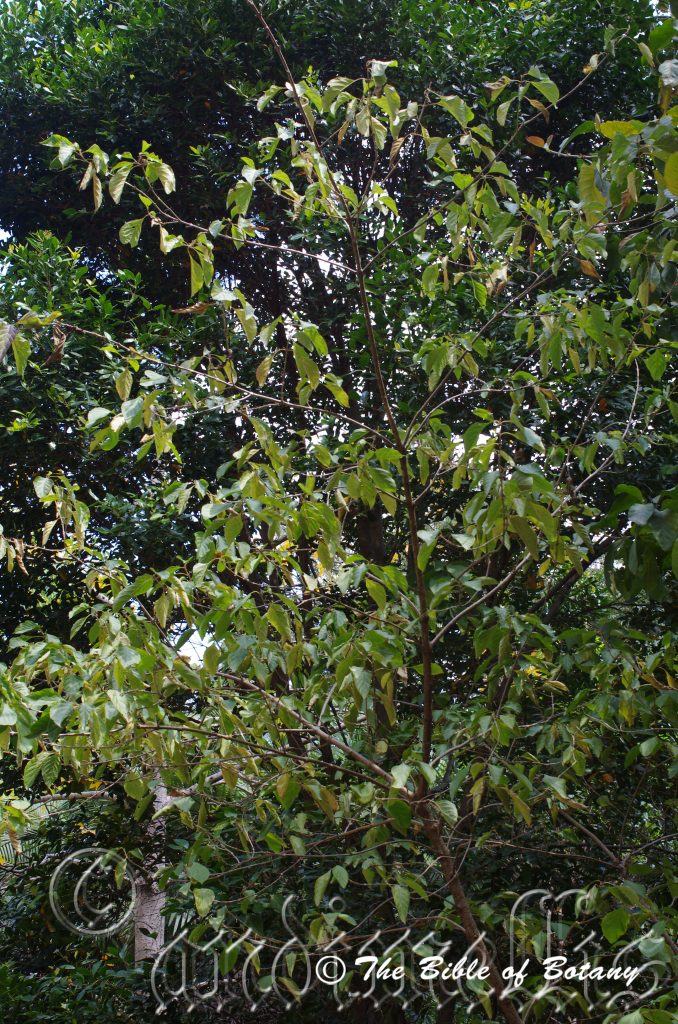
Mount Cootha Botanical Gardens Qld.
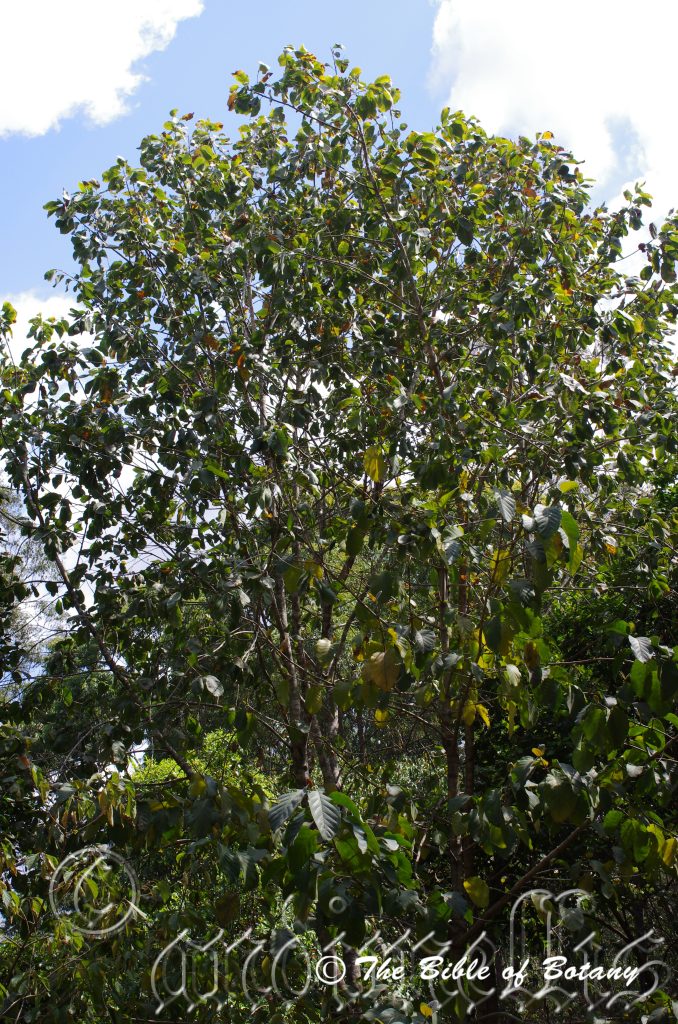
Mount Cootha Botanical Gardens Qld.
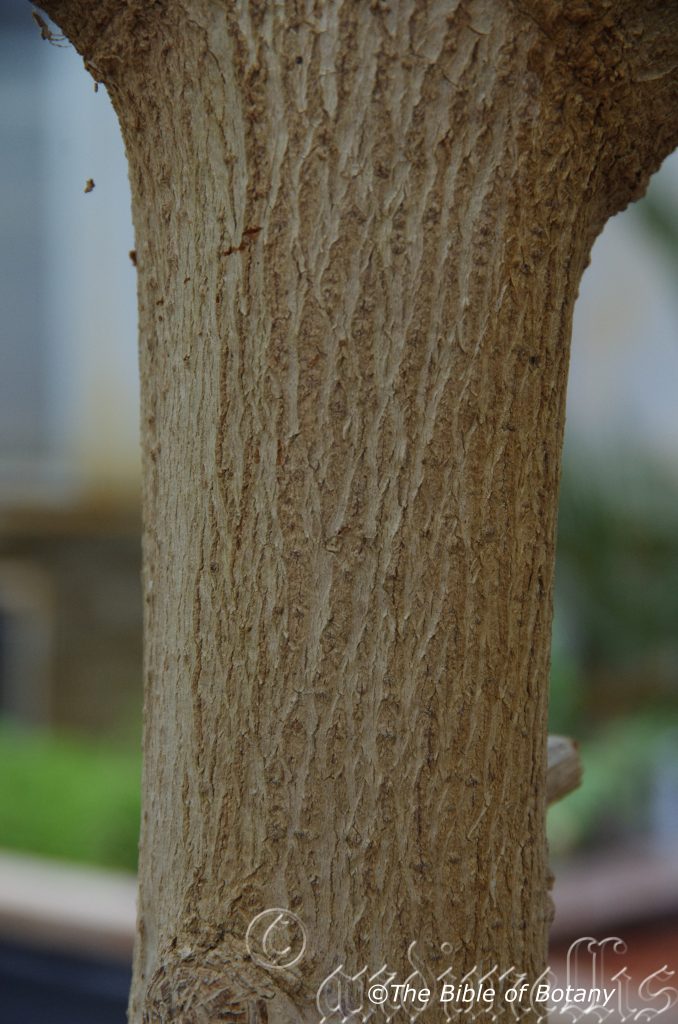
National Botanic Gardens ACT
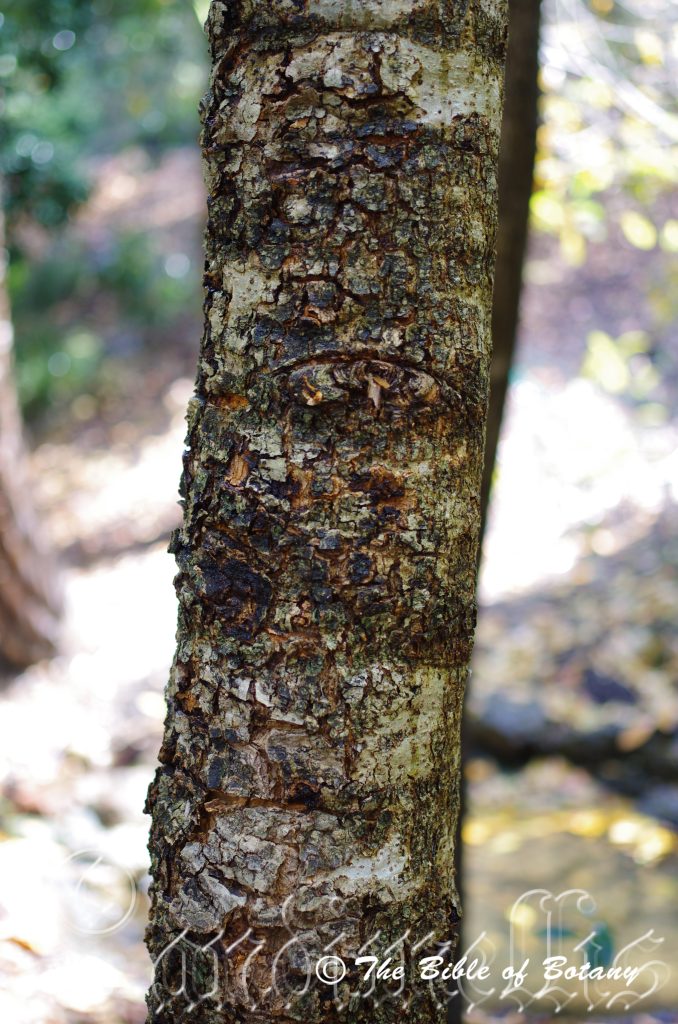
Mount Cootha Botanical Gardens Qld.
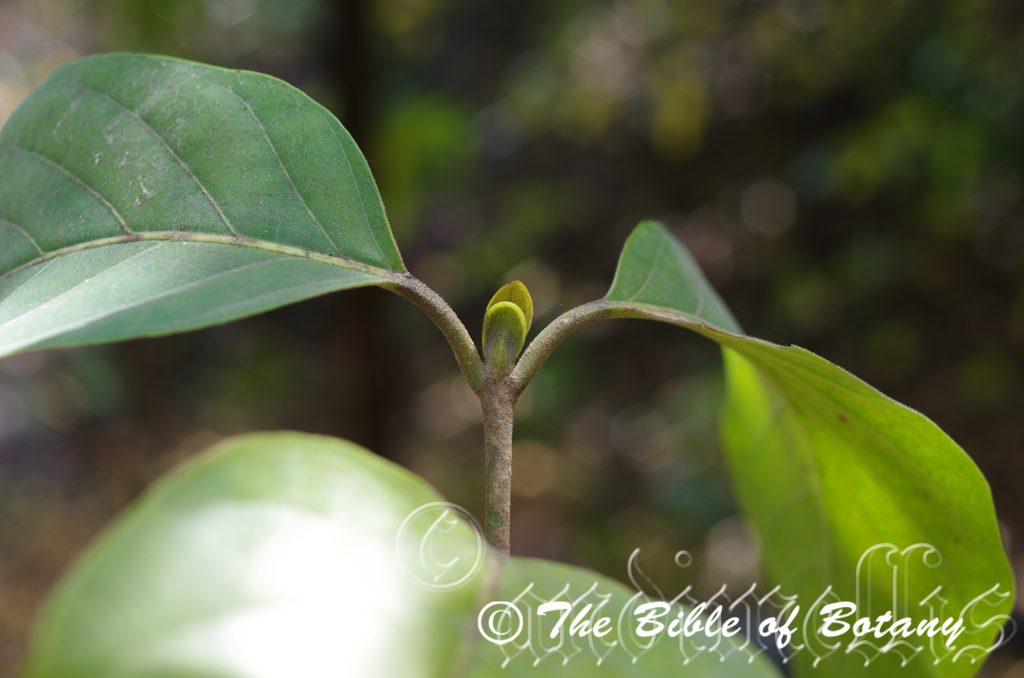
Mount Cootha Botanical Gardens Qld.
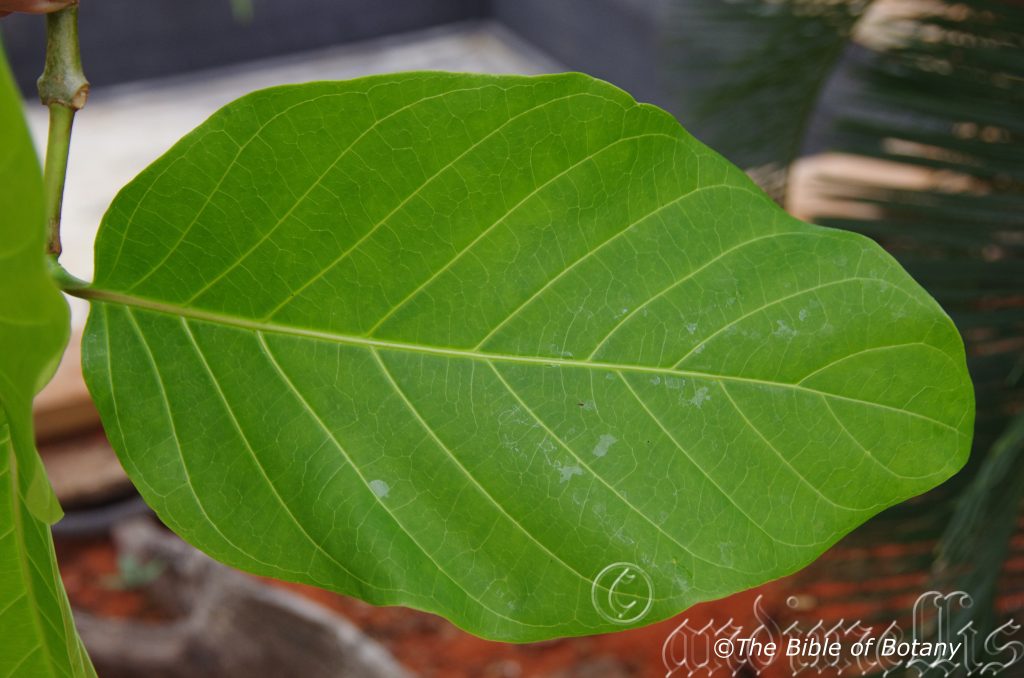
National Botanic Gardens ACT
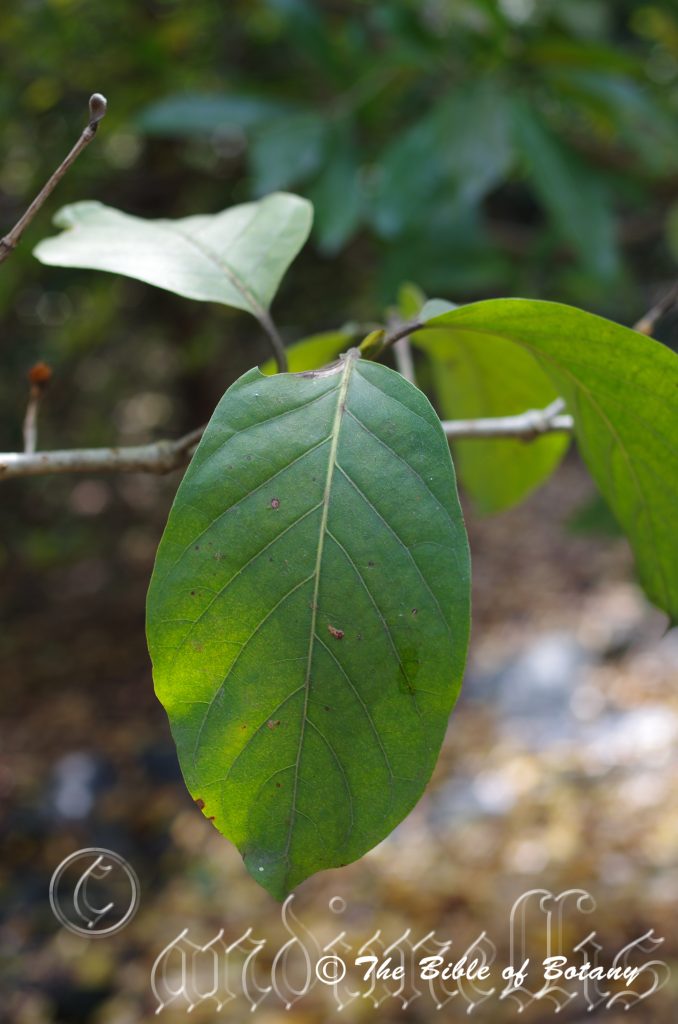
Mount Cootha Botanical Gardens Qld.
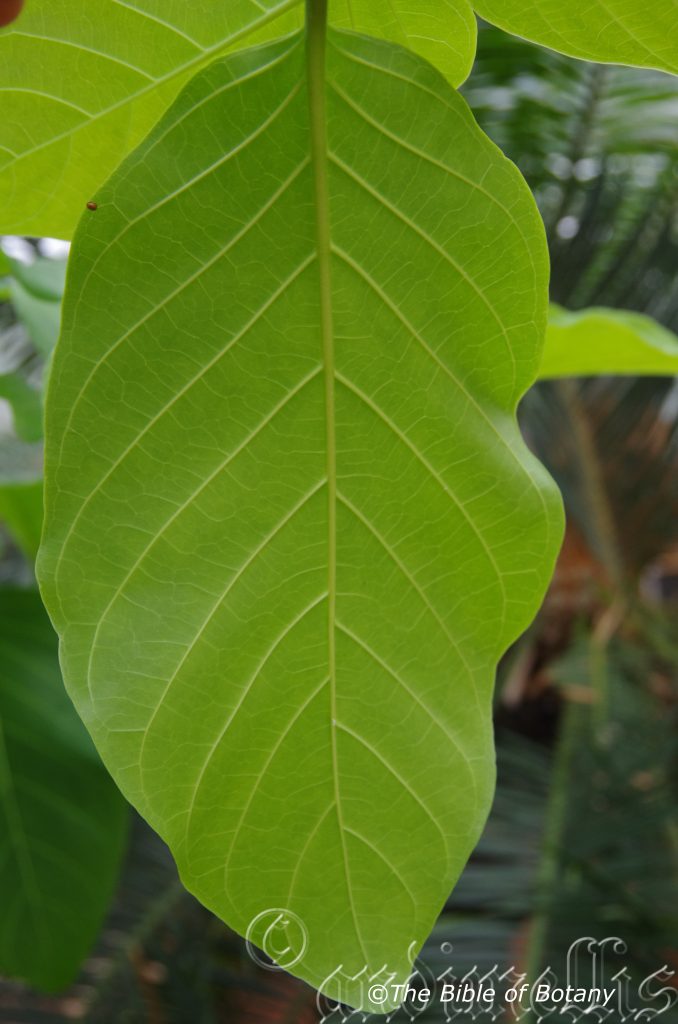
National Botanic Gardens ACT
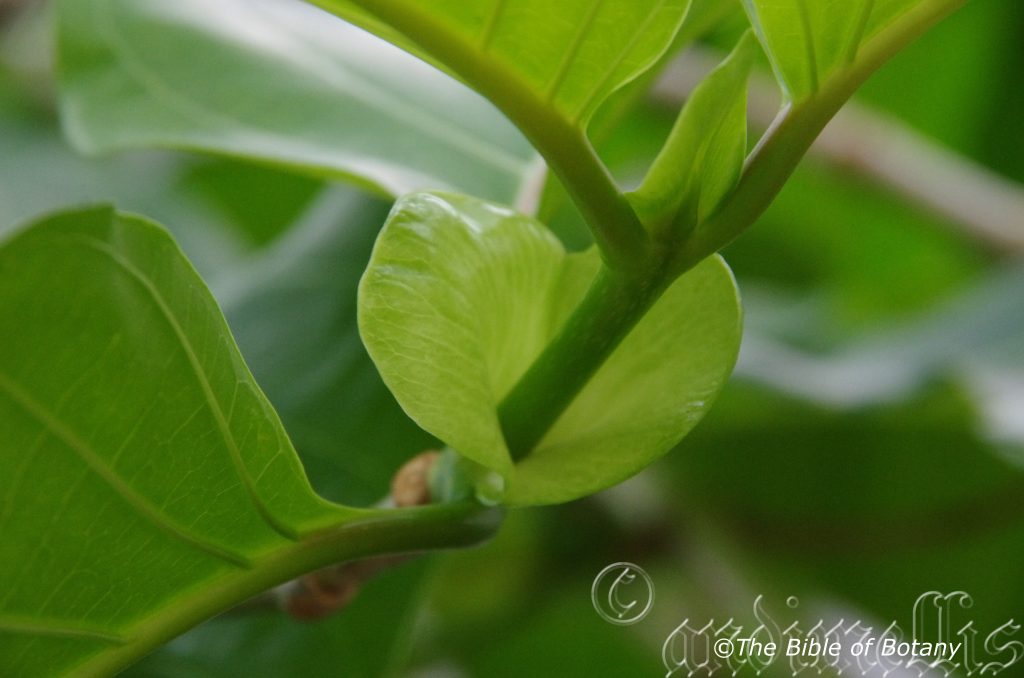
National Botanic Gardens ACT

Mount Cootha Botanical Gardens Qld.
Nauclea orientalis
Classification
Unranked: Eudicots
Unranked: Asterids
Order: Centianales
Family: Rubiaceae
Subfamily: Cinchonoideae
Tribe: Naucleaceae
Genus: From Naucula, which is Latin for a small boat. It refers to capsules, which float and appear like small boats.
Specie: From Orientalis, which is Latin for the oriental or eastern. It refers to plants, which were first discovered in the east or the orient.
Sub species:
Common Name: Leichhardt Tree or Yellow Cheesewood.
Distribution:
Nauclea orientalis is found east from along the east and north from the Fitzroy River and the Kimberley Range in north west Western Australia to the Gulf Rivers in the Northern Territory and Boodjamulla National Park (Lawn Hill) in north to Normanton in north western Queensland.
It is also found south from Cape York Peninsula and some of the Torres Strait Islands to the Boyne River near Gladstone in central coastal Queensland.
https://avh.ala.org.au/occurrences/search?taxa=Nauclea+orientalis#tab_mapView
Habitat Aspect Climate:
Nauclea orientalis prefers light dappled shade to full shade. It grows along the alluvial plains along creeks, streams and in lowland or littoral rainforests. It is particularly common in gallery forests and along soaks bordering marsh lands. The altitude ranges from 2 meter ASL to 450 meters ASL.
The temperatures range from 7 degrees in August to 42 degrees in January.
The rainfall ranges from lows of 800mm to an average of 4000mm.
Soil Requirements:
Nauclea orientalis prefers fine sands medium clays. The soils are usually derived from accumulated beach sands, accumulated coral sands or at times decomposed granites. The soils pH. ranges from 5pH to 7pH. It tolerates seasonal inundations for short periods. Non saline soils to very saline soils are tolerated as are salt laden winds.
Height & Spread:
Wild Plants: 15m to 30m by 8m to 10m.
Characteristics:
Nauclea orientalis’s trunks are mid grey to deep grey furrowed, rough, scabrous and flaky. The trunk is not buttressed but slightly flanging on very old trees. The bole is 70mm of the trees height and on mature trees will measure up to 1000mm in diameter. The branches and main stems are devoid of leaves turning a creamy colour towards the apexes. The main stems are scabrous while smaller stems are covered in lenticels. The stems that hold the leaves are deep sea green.
Nauclea orientalis’s simple leaves are shed briefly during the dry season from mid-August to September. The petioles vary from Deep sea green to purplish and measure 22mm to 35mm in length. There are two large ovate stipules which measure 10mm to 25mm in length by 10mm in width. The oval to broadly elliptical leaves measure 155mm to 300mm by 100mm to 180mm in width. The ovate stipules are covered in large red glands that resemble insect eggs near the bases and measure 10mm to 35mm in length. The petioles measure 35mm to 55mm in length. The oblique bases are rounded-truncate to rounded while the apexes are obtuse or rarely very broadly acuminate. The discolourous laminas are deep grass green to deep sea green, semi glossy and glabrous while the lower lamina is paler and dull. The margins are entire, flat or slightly undulating. The mid vein is prominent on the lower lamina and for 10mm to 20mm on the upper lamina and is distinctly visible on the remainder of the upper lamina.
The inflorescences of Nauclea orientalis are a spherical head born from the upper leaf axils. The inflorescence measures 33mm to 50mm in diameter. The peduncle measures 20m to 30mm. The 5 hemi lanceolate calyx lobes are glabrous, yellow to orange and measure 0.5mm in diameter. The 5 united yellow-orange to orange petals form a corolla tube which measure 7mm to 10mm in length. The petal lobes are hemi ovate and measure 2mm to 2.5mm in length. The 5 yellow-orange to orange stamens are attached to the petals near the point where the lobes begin and measure 1.2mm to 1.6mm in length while the white style measures less than 15mm to 17mm in length. The anthers are ribbed while the pollen is orange and quite profuse. The stigma is swollen somewhat like conical mushroom and measures 1.8mm to 2mm in length. The sweetly scented flowers appear from May to November.
Nauclea orientalis’s fruit is an aggregate. The aggregates measure 40mm to 50mm in diameter. The outer surface is soft to hard spongy and reticulate rugose. The flesh surrounding the seeds is a pale creamy yellow. The black ovoid rugose seeds measure 1.5mm to 2mm in diameter. There is one seed in each aggregate.
Wildlife:
Nauclea orientalis damage often occurs on trees from the beetle Lyctus bruneus known as the Lyctus beetle or the powder post beetle. The Powder post beetle is a pest attacking the sapwood of many hardwood trees such as Oak, Elm, Ash and Eucalypt. Softwoods are not attacked. The heartwood of hardwoods is not infested just the soft sap wood. Most attacks take place in logs or sawn timber drying at sawmill. Signs of infestation may not appear until adults begin to emerge.
Blue stain fungus Grosmannia clavigera is often seen on freshly cut timber staining the timber a blue-grey colour.
The flowers attract many nectar eating birds and insects. Cassowary will eat the fruits as will other larger fruit eating pigeons. Fruits were also eaten by native people across Asia. It is reportedly rather bitter in taste being one of the fruits I have not had the pleasure or miss pleasure of eating.
The timber is easy to work, soft and light and many early tribal minorities used the timber to make canoes from.
Cultivation:
Nauclea orientalis makes an excellent plant for where shady areas are required and as an addition to help form the canopy of a new rainforest. They always look green and fresh especially where plenty of ground moisture is retained whether it is grown in light shade or dense shade. It is very suitable on sandy to medium clay soils and are most suitable for large gardens and parks close to the coast in warm temperate, subtropical, tropical or arid gardens. As garden subjects they will grow from 9m to 15m in height by 9m to 15m in diameter. It is cold tolerant to temperatures at least as low as 4 degree once established.
Nauclea orientalis are excellent additions in drainage problem areas and areas that need soil stabilization. It is beautiful trees, as a standalone specimen as they have a dense spreading canopy and provide very good shade for a park like garden. The root system may be invasive as it prefers wet areas so may seek extra moisture or a permanent water supply from sewers and water pipes so I would have a tendency to plant them well away from public services.
In the formal or Japanese Gardens they can be used as the main plant beside the water feature. Imagine a large pond with fish swimming. Beside it is the strong outline of Nauclea. This is very powerful yet formal and relaxing. The plants will emit great potency yet display a very relaxing and thought provoking scene.
This tree would look excellent if planted as a main feature in a park like scenario with a few Grevillea robusta contrasting strongly on shape. Another advantage is that Grevillea robusta begins flowering as Nauclea orientalis is finishing so an extended flowering season from May through to December is realized.
Propagation:
Nauclea orientalis seeds can be sown directly into a seed raising mix. Cover the seeds with 1mm to 2mm of fine weed free mulch and keep moist. Place the tray in a warm semi shaded position. When the seedlings are 30mm to 50mm tall, prick them out and plant them into 50mm native tubes using a good organic mix.
Once the seedlings reach 100mm to 150mm in height they can be planted out into their permanent position.
Fertilize using seaweed, fish emulsion or organic chicken pellets soaked in water on an alternate basis. Fertilize every two months until the plants are established then twice annually in early September or March to maintain better health, vitality and flowering.
Further Comments from Readers:
Hi reader, it seems you use The Bible of Botany a lot. That’s great as we have great pleasure in bringing it to you! It’s a little awkward for us to ask, but our first aim is to purchase land approximately 1,600 hectares to link several parcels of N.P. into one at The Pinnacles NSW Australia, but we need your help. We’re not salespeople. We’re amateur botanists who have dedicated over 30 years to saving the environment in a practical way. We depend on donations to reach our goal. If you donate just $5, the price of your coffee this Sunday, We can help to keep the planet alive in a real way and continue to bring you regular updates and features on Australian plants all in one Botanical Bible. Any support is greatly appreciated. Thank you.
In the spirit of reconciliation we acknowledge the Bundjalung, Gumbaynggirr and Yaegl and all aboriginal nations throughout Australia and their connections to land, sea and community. We pay our respect to their Elders past, present and future for the pleasures we have gained.
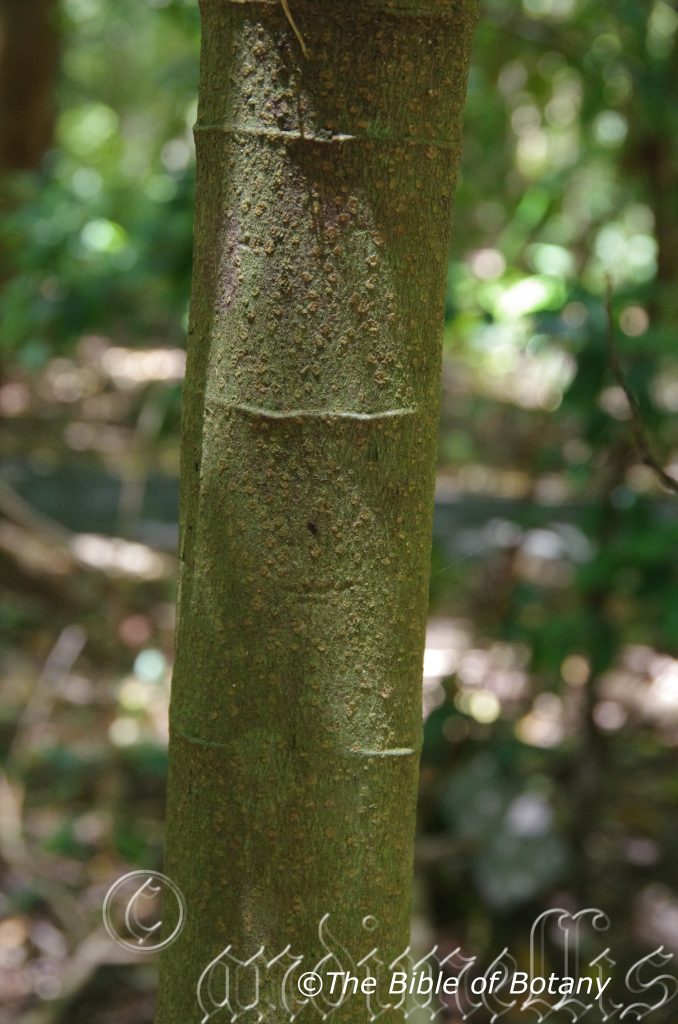
NCBG Coffs Harbour NSW
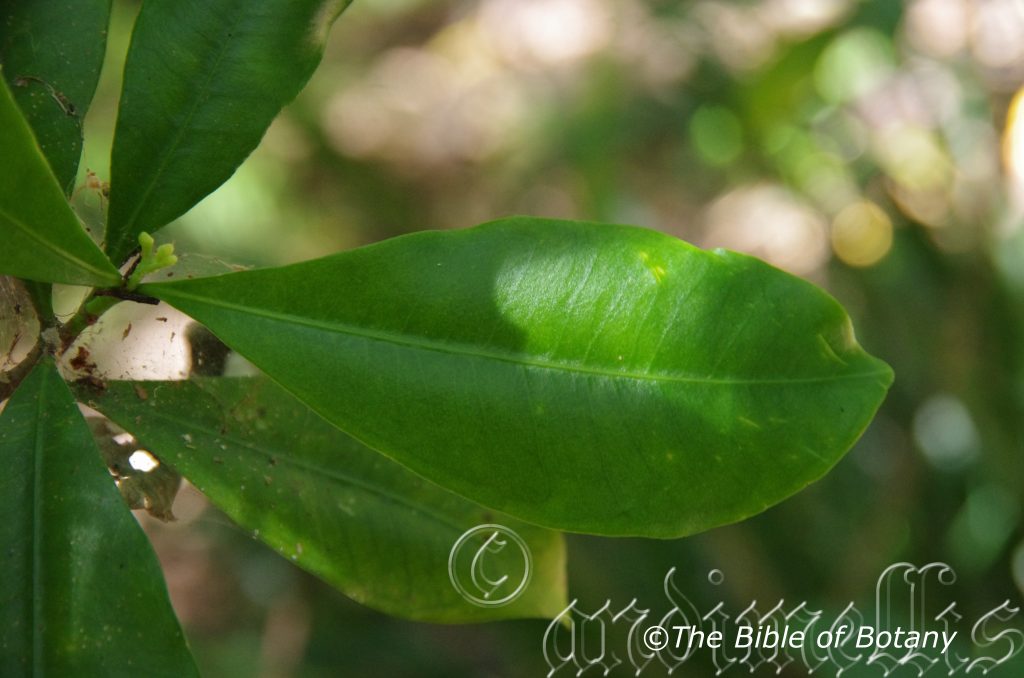
NCBG Coffs Harbour NSW
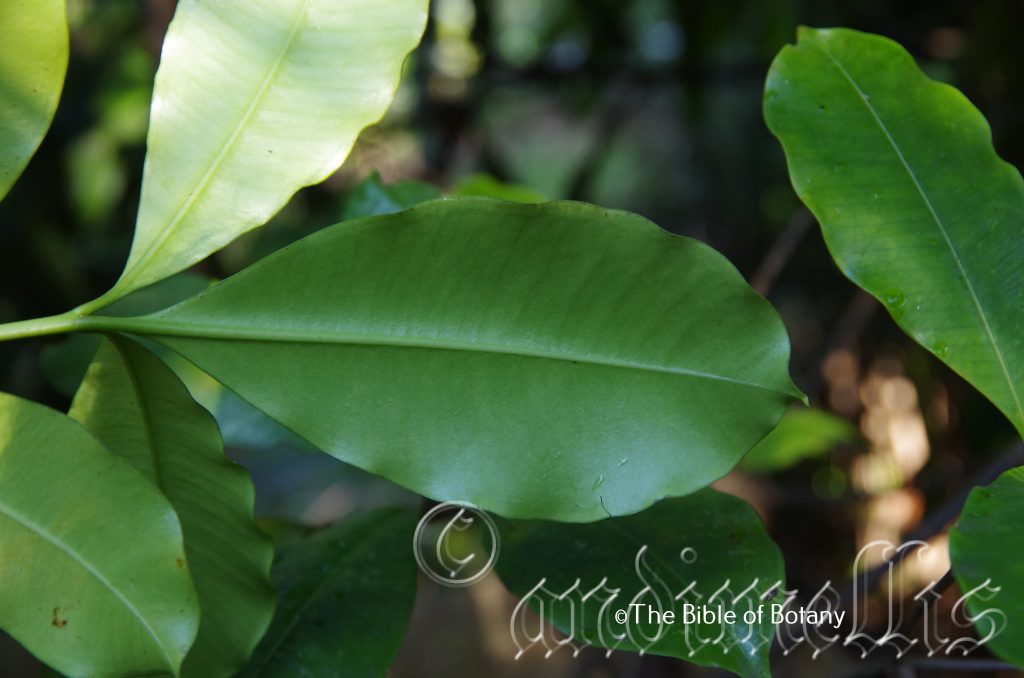
LBG Lismore NSW
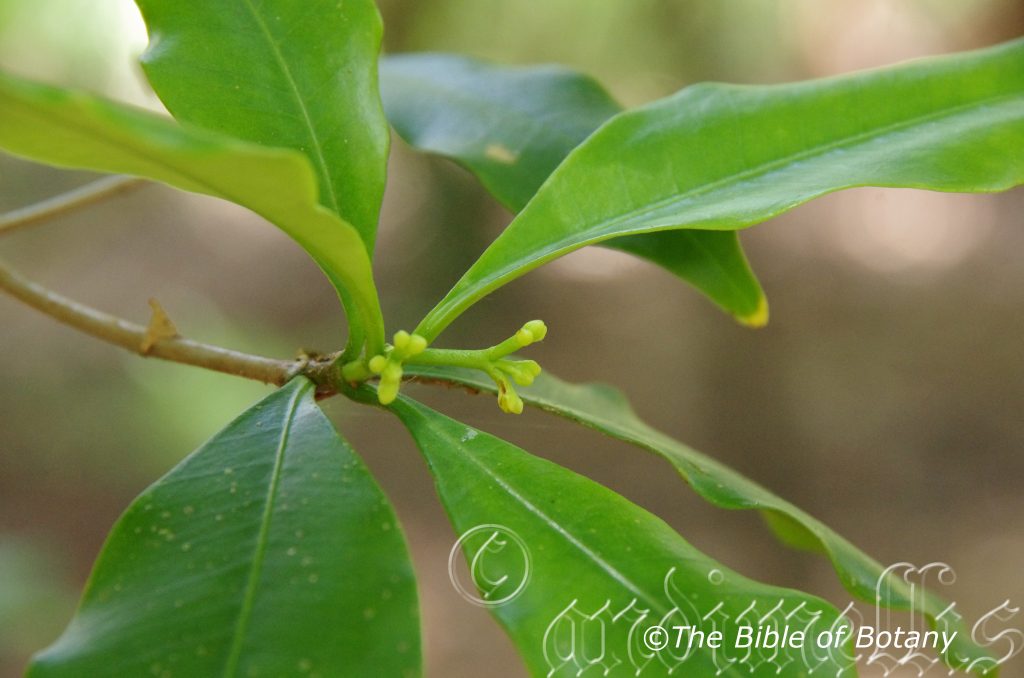
NCBG Coffs Harbour NSW
Neisosperma poweri
Classification
Unranked: Eudicots
Unranked: Asterids
Order: Centianales
Family: Apocynaceae
Genus: From Nivosus, which is Latin for fully covered and Spérma, which is Greek and Latin for a seed. It refers to the seeds having a thick fleshy coating over and through the seed fibres.
Specie: Is named in honour of R. D. Power who raised the attention to the fruit of the new species.
Sub species:
Common Name: Milk Tree.
Distribution:
Neisosperma poweri is found in at least 3 disjunct locations in Queensland and Northern New South Wales. In Queensland it is found from south from Cairns to Eungella National Park and Homevale National Parks while the southern population is found on the Sunshine coast with the third area is around the Border Ranges National Park and south to Bucca Bucca Creek Nana Glen.
https://avh.ala.org.au/occurrences/search?taxa=Neisosperma+poweri#tab_mapView
Habitat Aspect Climate:
Neisosperma poweri prefers light dappled shade to full shade. It grows along creeks alluvial plains adjacent to most types of tropical and subtropical rainforests. It is found where there is a break in the canopy. This is an erect usually single stemmed medium shrub or small tree with attractive scarlet fruits. The altitude ranges from 600 meter ASL to 1100 meters ASL.
The temperatures range from minus 3 degrees in August to 40 degrees in January.
The rainfall ranges from lows of 900mm to an average of 4000mm.
Soil Requirements:
Neisosperma poweri prefers fine sands medium clays. The soils are usually derived from decomposed basalts and better quality sandstones. The soils pH. ranges from 5.5pH to 7pH. It does not tolerate waterlogged soils. Non saline soils to moderately saline soils are tolerated.
Height & Spread:
Wild Plants: 2m to 9m by 1.5m to 3m.
Characteristics:
Neisosperma poweri’s trunk is grey, glabrous and rarely attains a diameter exceeding 200mm in very old specimens. The smaller branches and stems are mid grey to grey-brown, glabrous, semi glossy and slender while the immature stems are deep sea green and semi glossy. They are easily distinguished producing a thin milky like exudates from the twigs, petioles, peduncles and leaves when broken.
Neisosperma poweri’s simple leaves have petioles that measure 14mm to 20mm in length. The leaves vary considerably in shape from oblanceolate to obovate and measure 60mm to 140mm by 20mm to 50mm in width. The bases are cuneate while the apexes are broad acuminate or broad cuspidate. The laminas are discolourous laminas are deep sea green, dull to semi glossy and glabrous on the upper lamina while the lower lamina is much paler. The margins are widely entire flat or slightly decurve and are slightly undulating. The lamina curves slightly upwards from the mid vein. The mid vein is prominent on the lower lamina. It is visible on the upper lamina with the lateral veins being consistently spaced and at 80 degrees to the mid vein.
The inflorescences of Neisosperma poweri are compound corymbs born from the leaf axils or terminal. The pedicels measure 3.5mm to 4.5mm in length while the peduncles measure 3.5mm to 4.5mm in length. The peduncules measure 2.5mm to 3.5mm in length. The green calyx lobes are glabrous and measure 1.3mm to 1.8mm in length. There are 12 to 20 white flowers in a corymb which measure 18mm to 23mm in diameter. The 5 petals are united to form a corolla tube which measures 10mm to 12mm in length. The oblong twisted lobes are glabrous and measure 5mm to 8mm in length. The bases are contorted while the apex is broad obtuse. The margin on the overlapping side is also slightly involute. The ovary is a single locule which is green glabrous and semi glossy. The 5 white stamens are inserted to just below the corolla apex. The pollen is white. The stigma is covered in short white hairs. The strong sweetly scented flowers are reminiscent of Frangipani and appear from March to May.
Neisosperma poweri’s fruit is a very distinguishable part of the plant and is an ellipsoidal to elongated ovoid drupe with a very pointed apex. They are glaucous and turn from deep green to a brilliant orange-red to scarlet red, glossy and measure 30mm to 50mm in length by 12mm to 18mm in width. The flesh surrounding the seeds is red. The pale fawn ellipsoidal to elongated ovoid seed is woody pale fawn and covered in anatomizing fibres similar to coconut fibre. They measure 16mm to 30mm in length by 7mm to 12mm wide.
Wildlife:
There are no records of the Australian Aborigines eating the seeds or fruit after treating. The seeds maybe eaten by native rats. Caches of discarded fruits are often seen with the ends gnawed to get to the seeds.
The leaves and fruit contain the alkaloid methyl-powerine which is highly toxic.
Cultivation:
Neisosperma poweri makes an excellent plant for light to densely shaded areas and as an addition to the under story of rainforests. They can be used as a feature small tree in a small garden but are very slow to establish themselves. They always look green and fresh especially where adequate ground moisture is retained whether it is grown in light shade or dense shade. It is very suitable on sandy to heavy clay soils and are most suitable for small, medium and large gardens close to the coast in warm temperate, subtropical, tropical or semi-arid gardens. As garden subjects they will grow from 6m to 7m in height by 3m to 3.5 meters in diameter as a small specimen tree. They are cold tolerant to temperatures at least as low as minus 1 degree once established.
It is most suitable for use besides pathways, shady rockeries, along sandy clay banks or along drive ways or adjacent to natural bush gardens. It is best used adjacent to small areas of bush close to paths or the house so their pure white sweetly scented flowers can be viewed and the scent appreciated regularly. Mass plantings of 5 or more plants for hedges or wind breaks are very striking and pleasant in flower and fruit. When mass planted the scarlet fruits are very attractive and will hang for a long time. Plants can be pruned and encouraged to lean out over the edge of water or rock features.
Two, three or four planted back from a bend will become a very strong focal point when in flower gain a lot of attention whether you are coming or going because of the fresh clean look of the foliage. They can be tip pruned if a large shrub is required or can be used in conjunction with a couple of different small trees to give height and depth to a garden very effectively. They respond well to pruning recovering quickly, increasing the number of flowers in the following season. Place them in the mid-ground with fine leaf ground covers and very small shrubs, ferns or annuals in front. Plants with pink, orange, red or purple flowers can be used in both the foreground. Plants with finer foliages in pale greens will also compliment the scene during periods when there are few flowers in the garden. This will lead the viewer’s eyes or nose directly to the white flowers and later to the scarlet fruits and for a longer period.
In the formal or Japanese Gardens they can be used as the main plant beside the water feature. Imagine a large pond with fish swimming. Beside it is the strong outline of Neisosperma poweri. This is very powerful yet formal and relaxing. The plants will emit great potency yet display a very relaxing and thought provoking scene. Again trimming to various shapes will suit the formal or gnarled look.
Propagation:
Neisosperma poweri fresh seeds can be sown directly into a seed raising mix. Cover the seeds with 5mm to 10mm of fine weed free mulch and keep moist. Place the tray in a warm sunny position. When the seedlings are 30mm to 50mm tall, prick them out and plant them into 50mm native tubes using a good organic mix.
Once the seedlings reach 100mm to 150mm in height they can be planted out into their permanent position. Mass plant them at intervals of 2 meters for shrubs 0r 3meters to 4 meters for trees.
Fertilize using seaweed, fish emulsion or organic chicken pellets soaked in water on an alternate basis. Fertilize every two months until the plants are established then twice annually in early September or March to maintain better health, vitality and flowering.
Further Comments from Readers:
All information is included in good faith and has been thoroughly researched prior to printing. The website or the author does not warrant or guarantee the accuracy of any information on these pages, nor does the website or the author accept any responsibility for any loss arising from the use of the information found within. The views and opinions are strictly those of the author or those members who chose to actively participate in the contents herein.
Hi reader, it seems you use The Bible of Botany a lot. That’s great as we have great pleasure in bringing it to you! It’s a little awkward for us to ask, but our first aim is to purchase land approximately 1,600 hectares to link several parcels of N.P. into one at The Pinnacles NSW Australia, but we need your help. We’re not salespeople. We’re amateur botanists who have dedicated over 30 years to saving the environment in a practical way. We depend on donations to reach our goal. If you donate just $5, the price of your coffee this Sunday, We can help to keep the planet alive in a real way and continue to bring you regular updates and features on Australian plants all in one Botanical Bible. Any support is greatly appreciated. Thank you.
In the spirit of reconciliation we acknowledge the Bundjalung, Gumbaynggirr and Yaegl and all aboriginal nations throughout Australia and their connections to land, sea and community. We pay our respect to their Elders past, present and future for the pleasures we have gained.
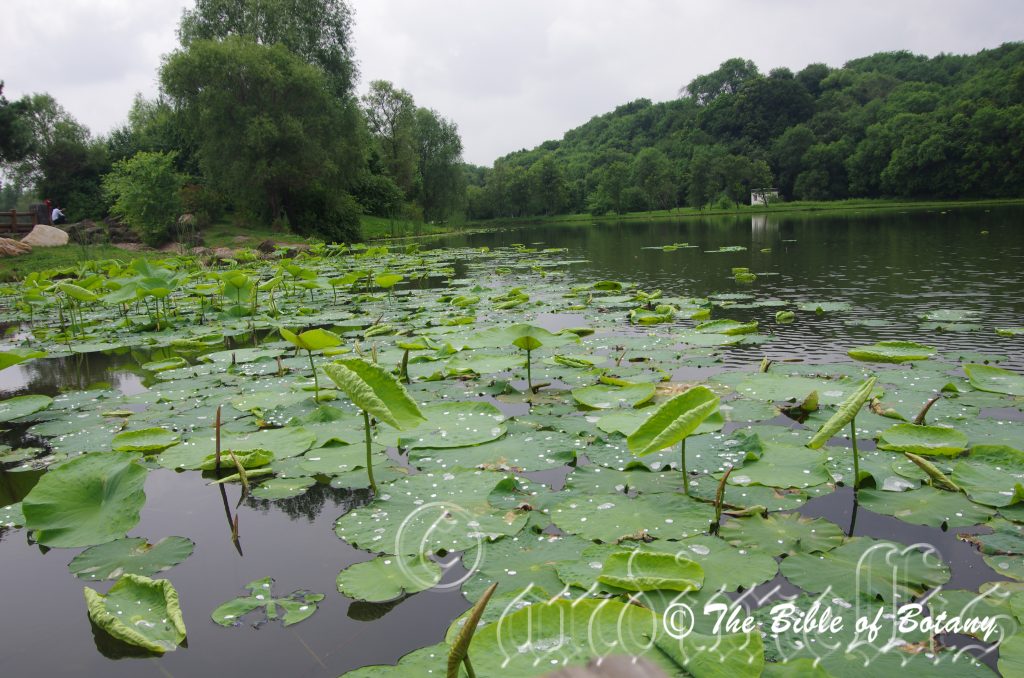
Chang Chun Jin Li China
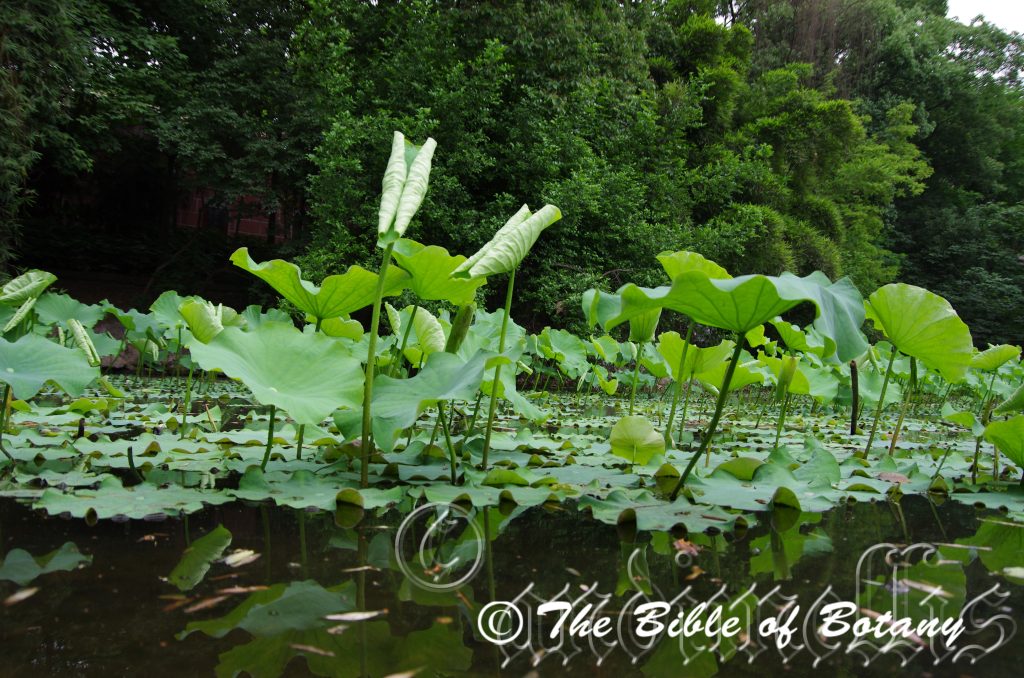
Chang Chun Jin Li China
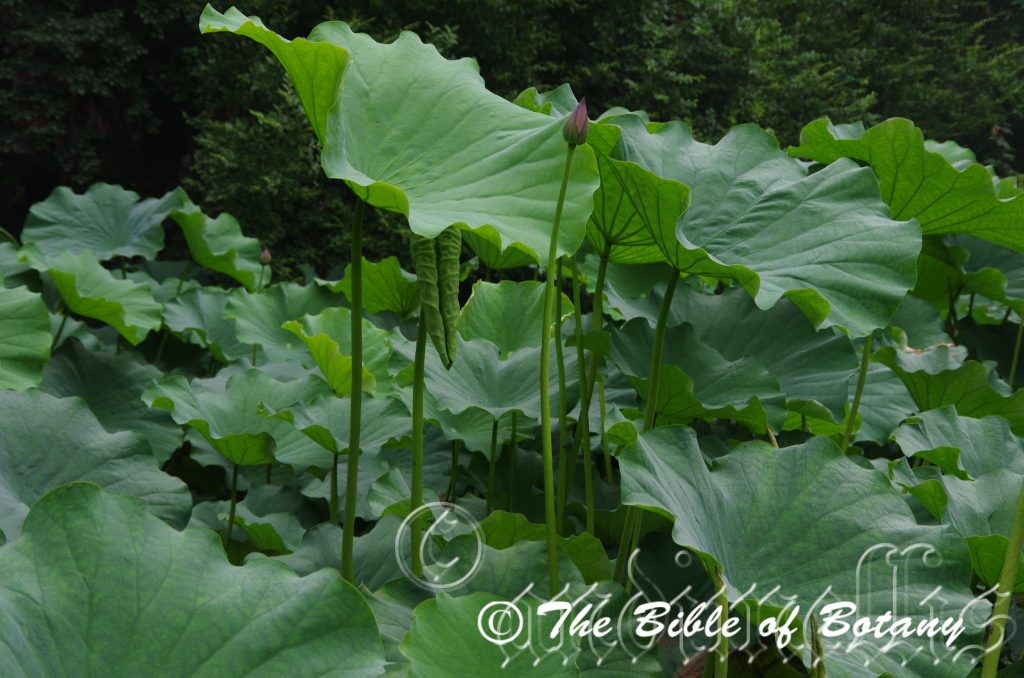
Sha Ping Ba China
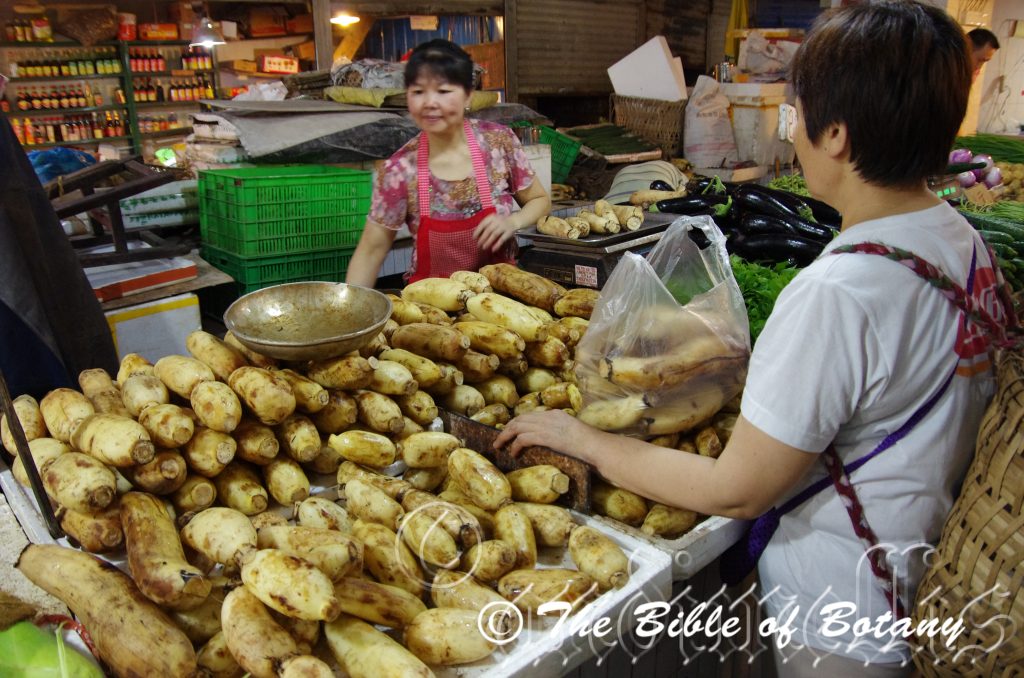
Sha Ping Ba farmers Market China
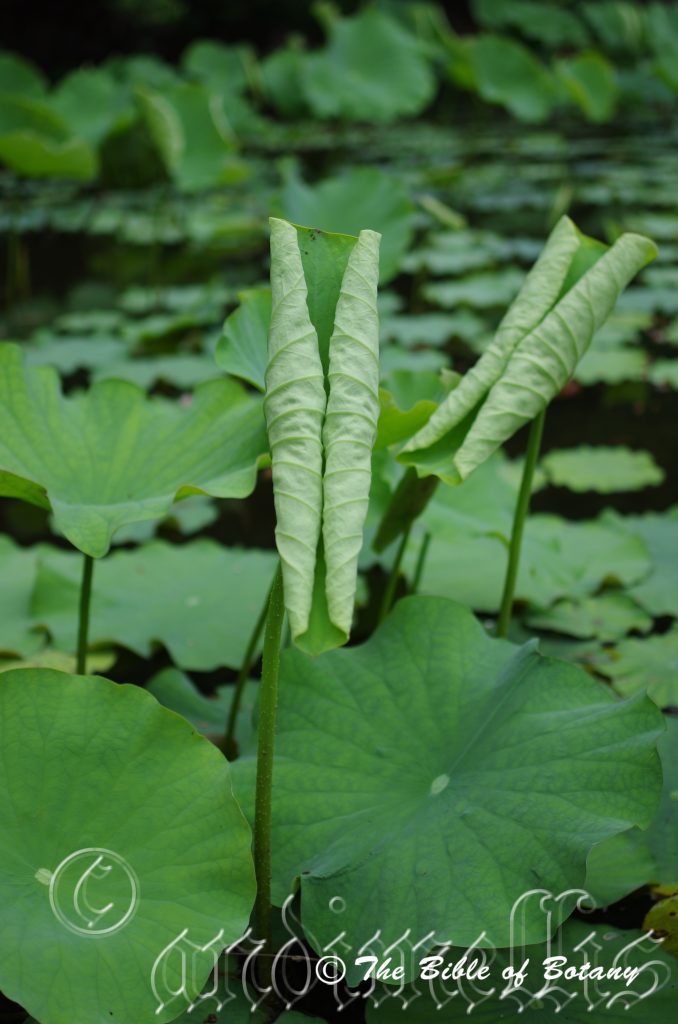
Sha Ping Ba China
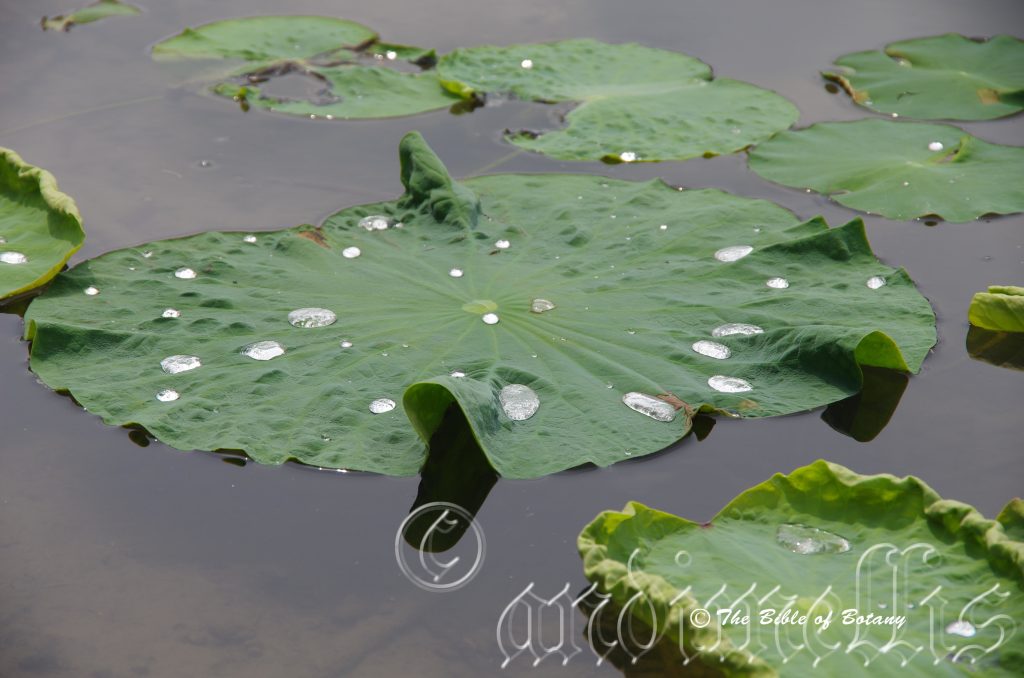
Chang Chun Jin Li China
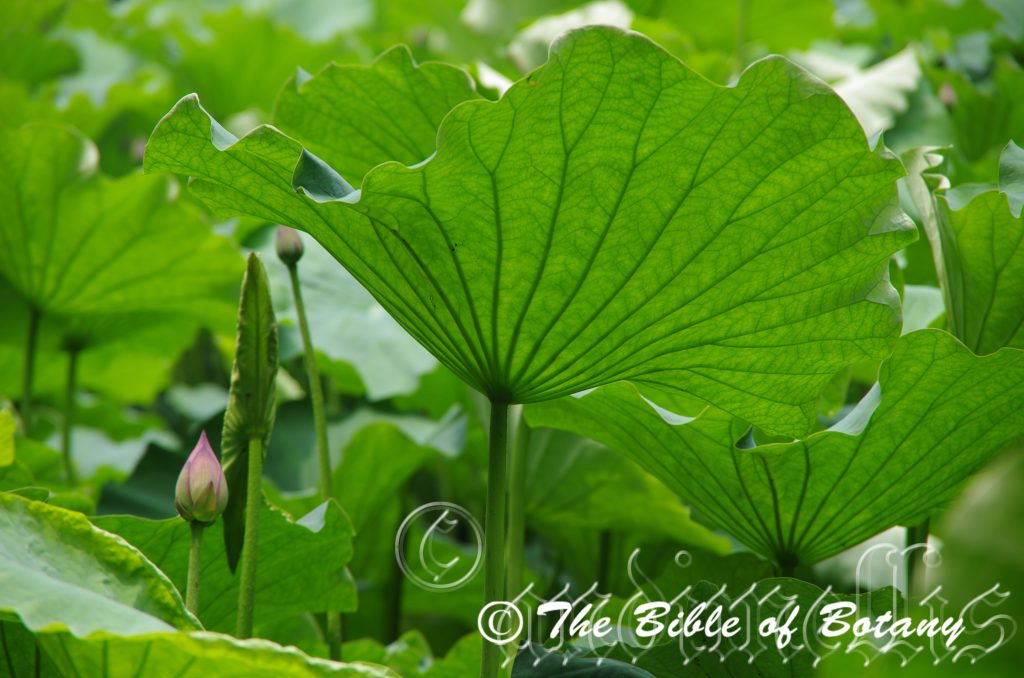
Sha Ping Ba China
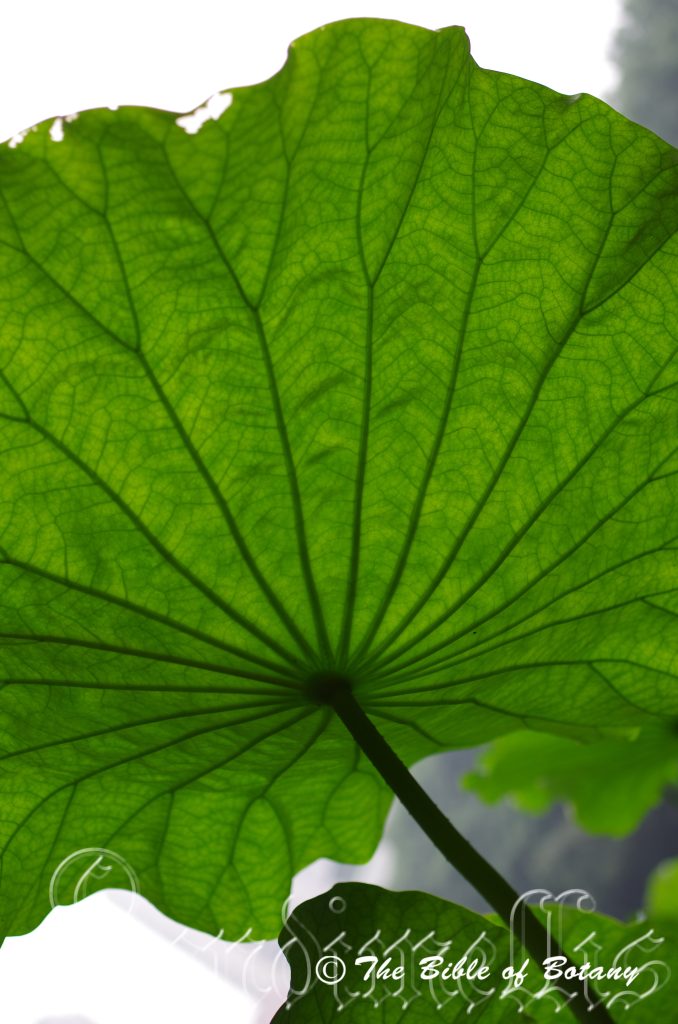
Sha Ping Ba China
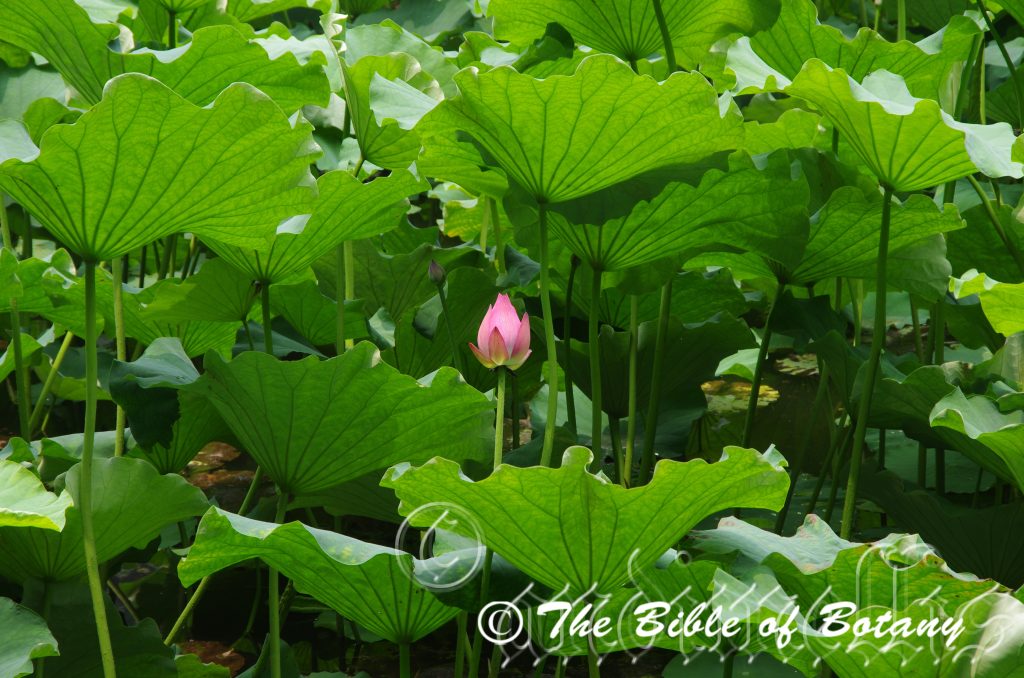
Sha Ping Ba China
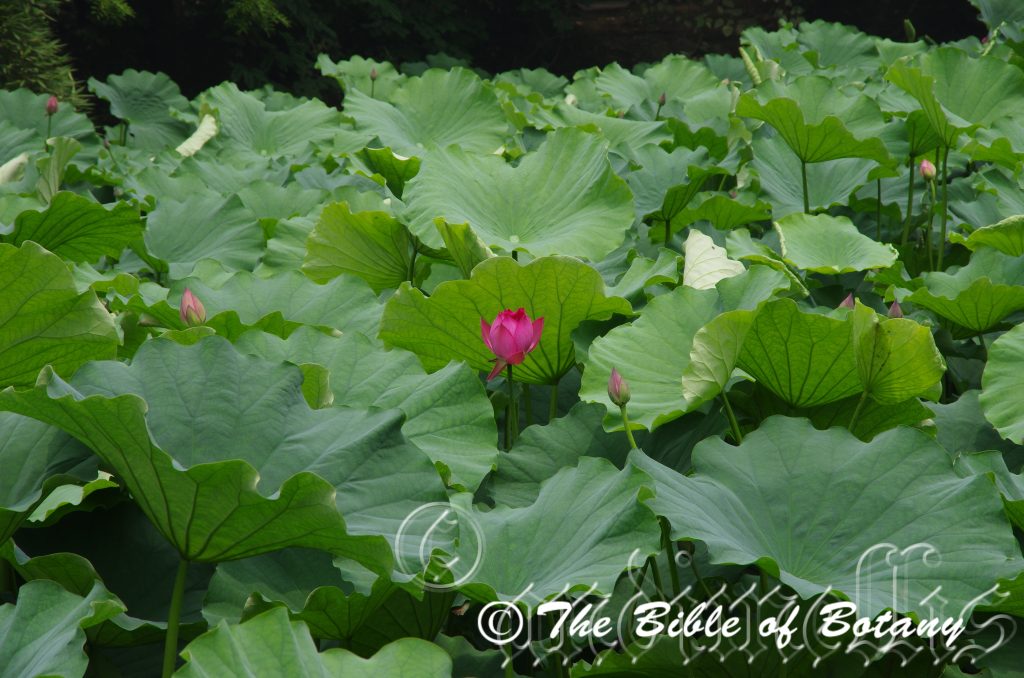
Sha Ping Ba China
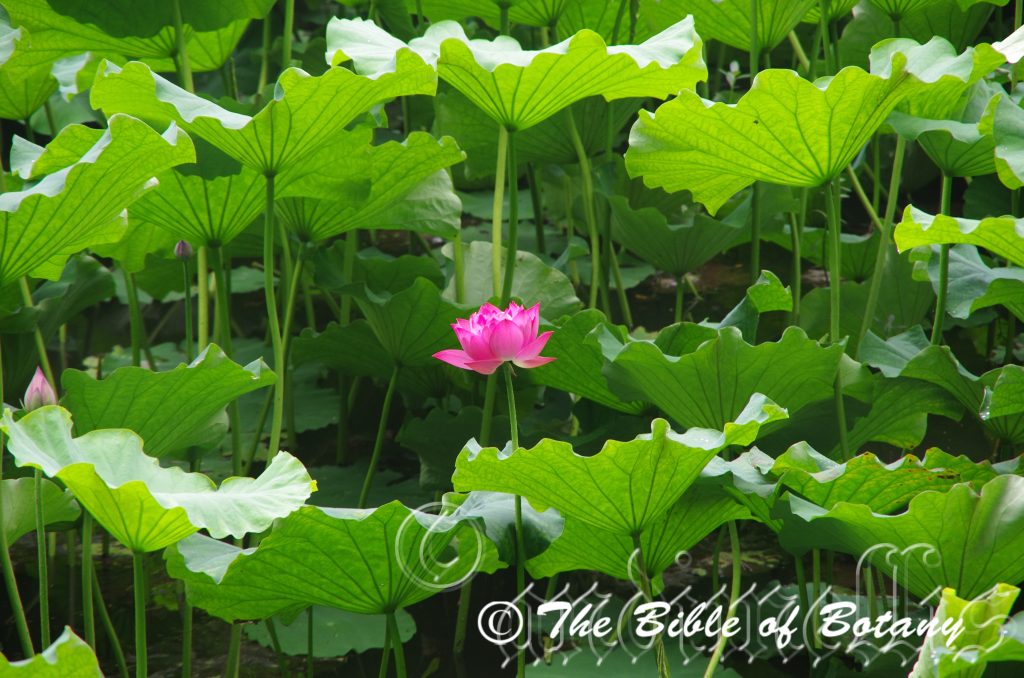
Sha Ping Ba China
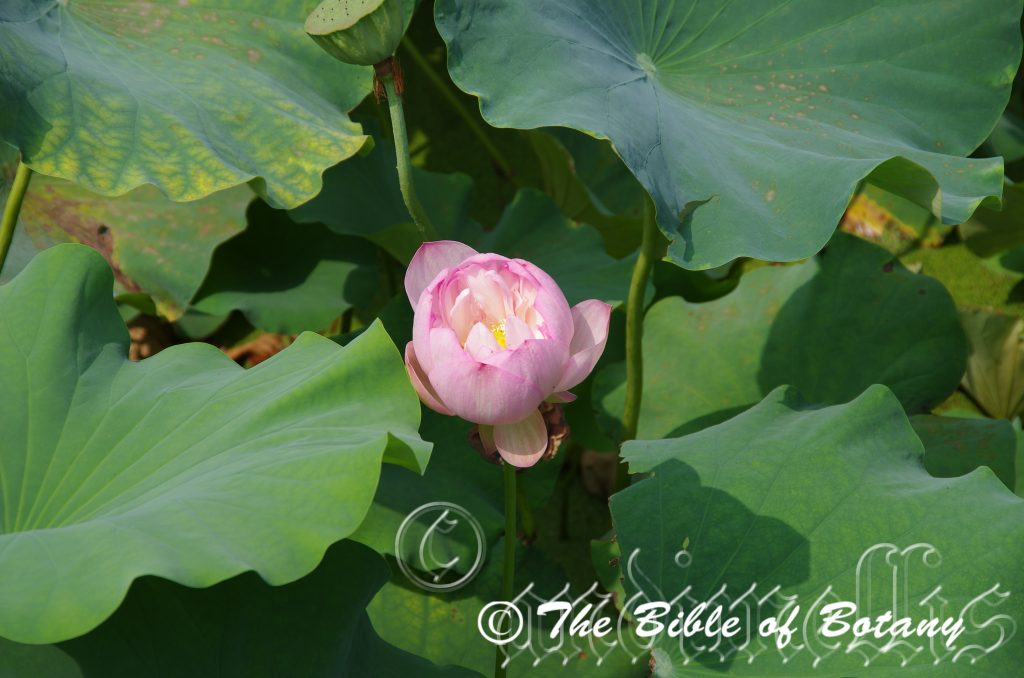
Number 1 State High School Chong Qing China
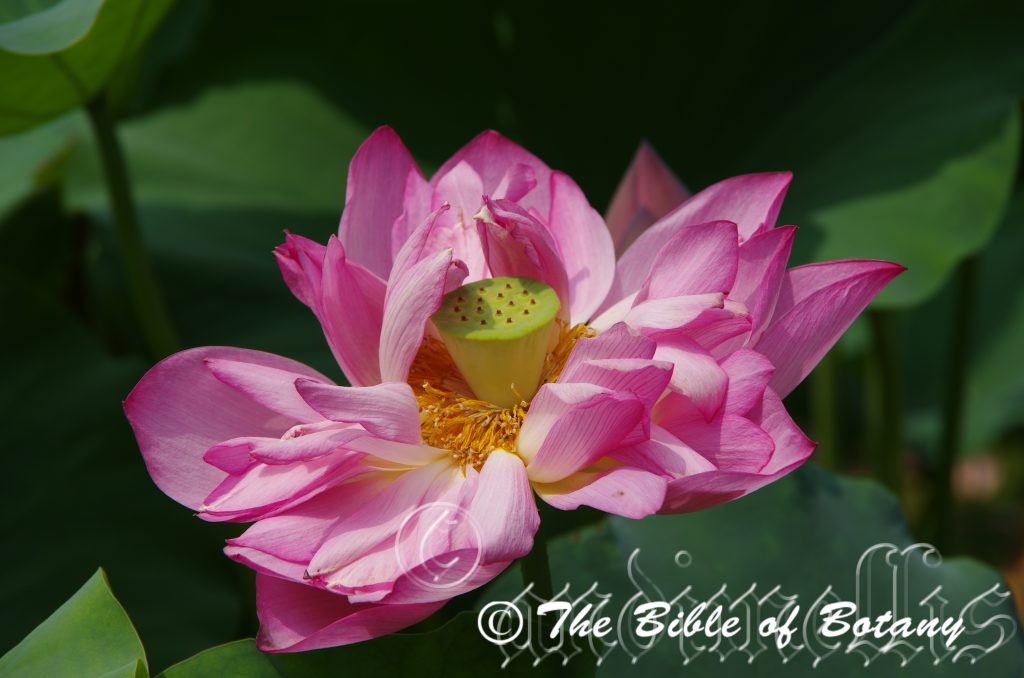
Number 1 State High School Chong Qing China
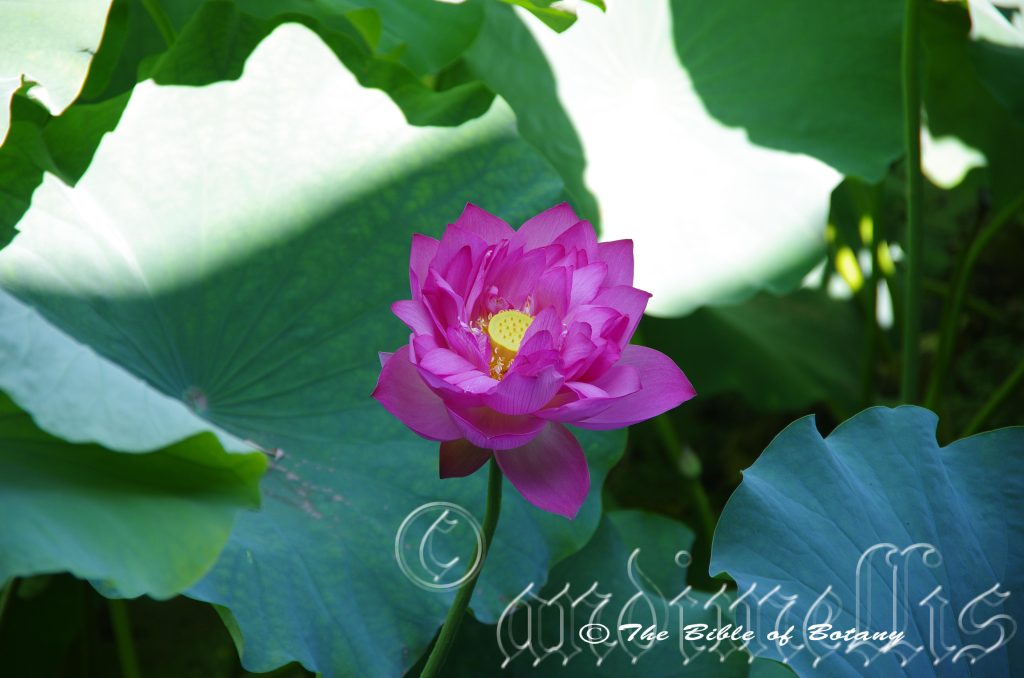
Sha Ping Ba China
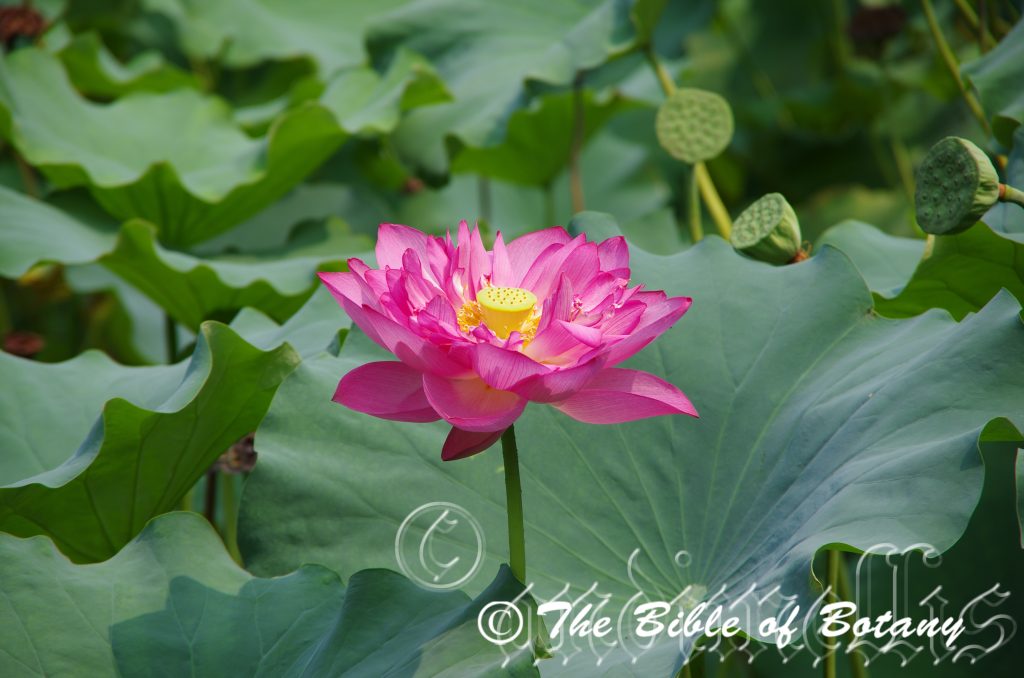
Sha Ping Ba China
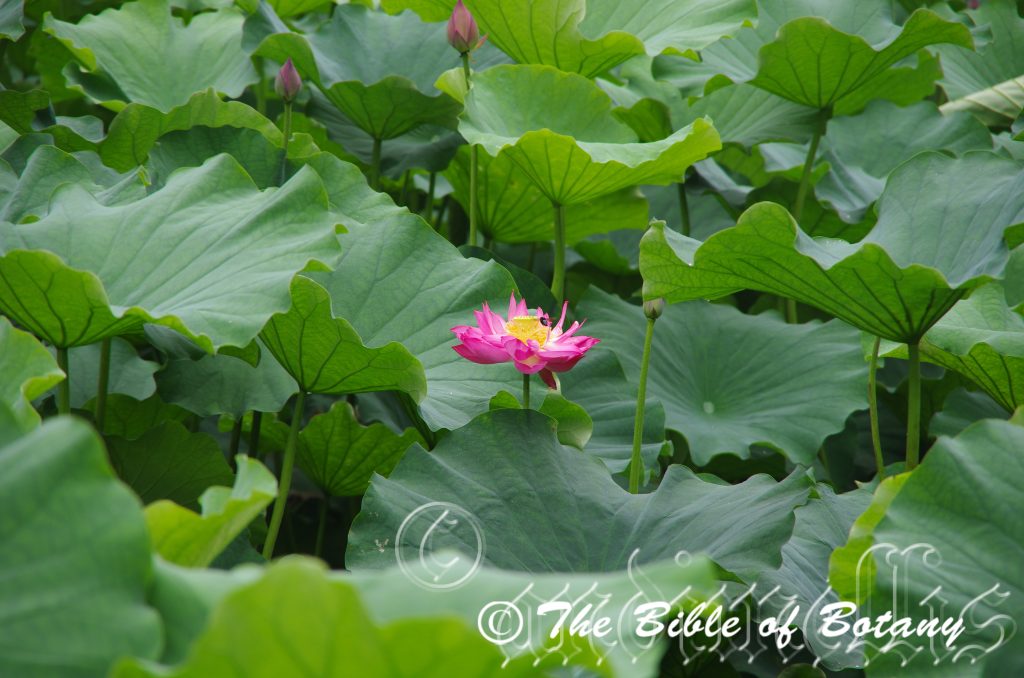
Sha Ping Ba China
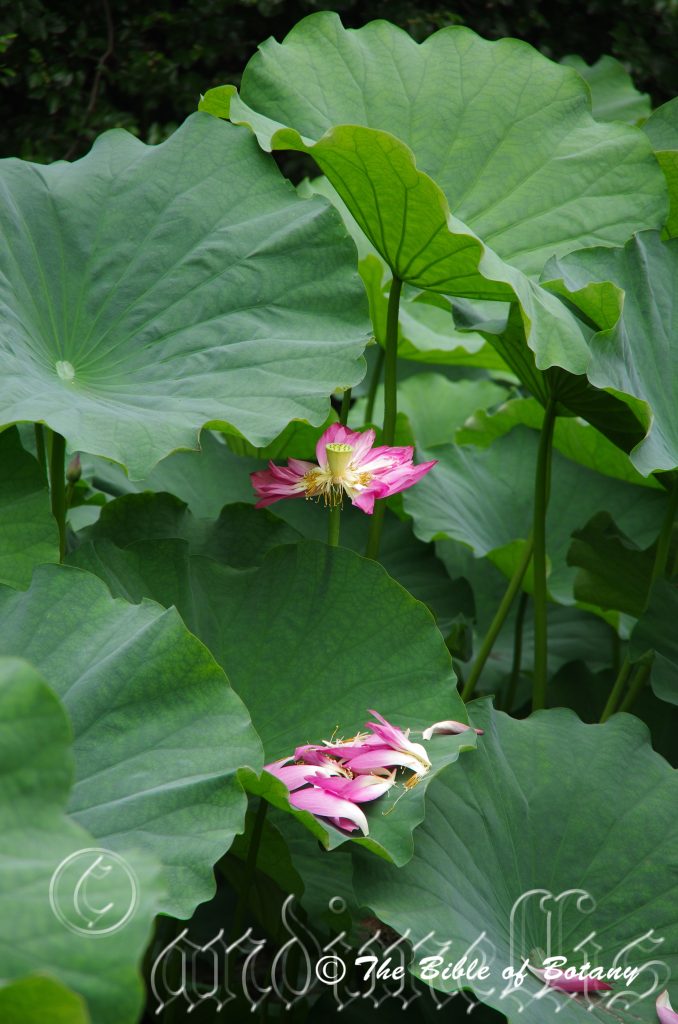
Sha Ping Ba China
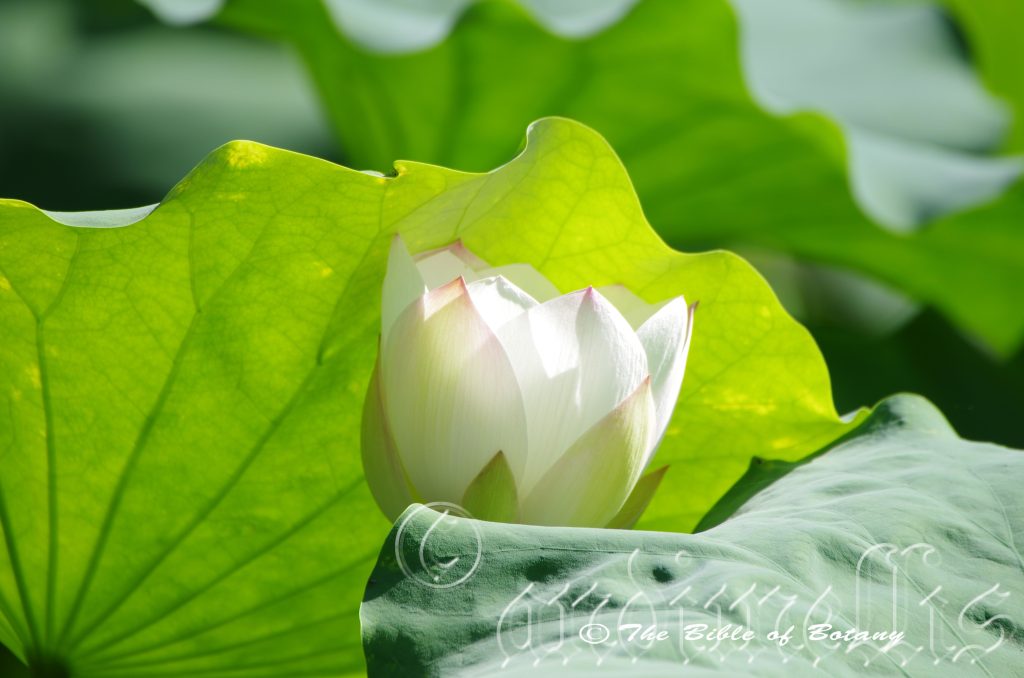
Ross River Townsville Qld.
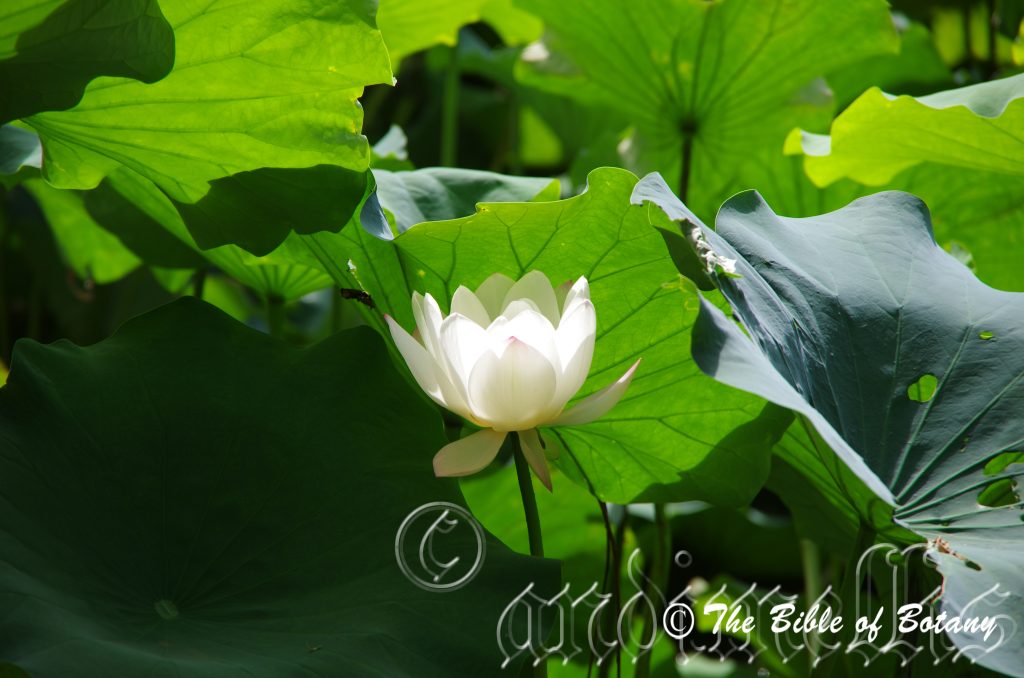
Sha Ping Ba China
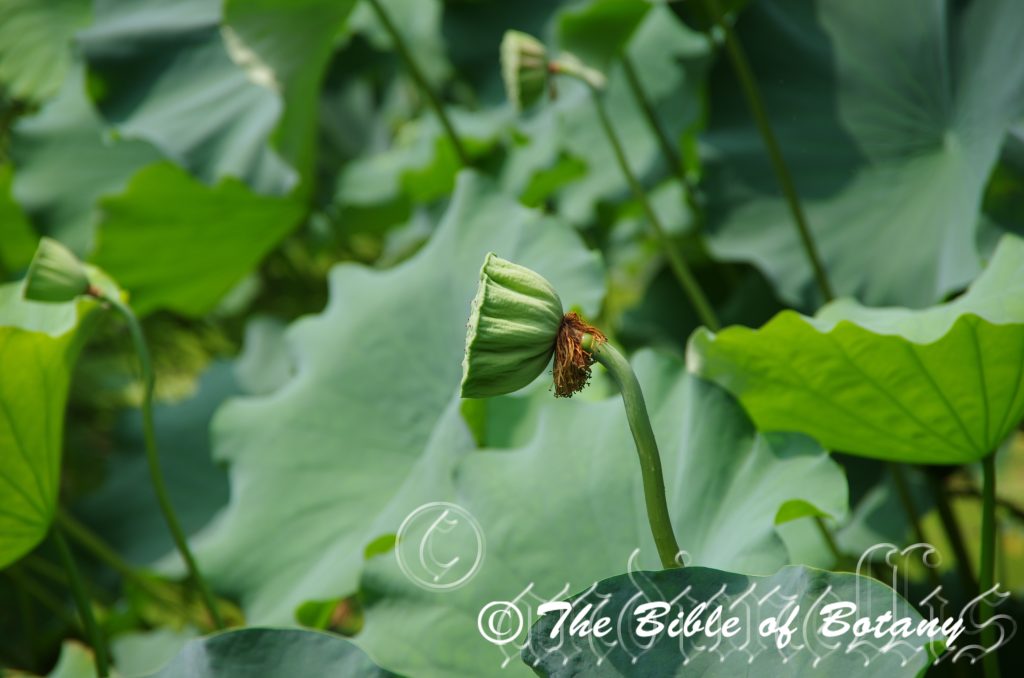
Number 1 State High School Chong Qing China
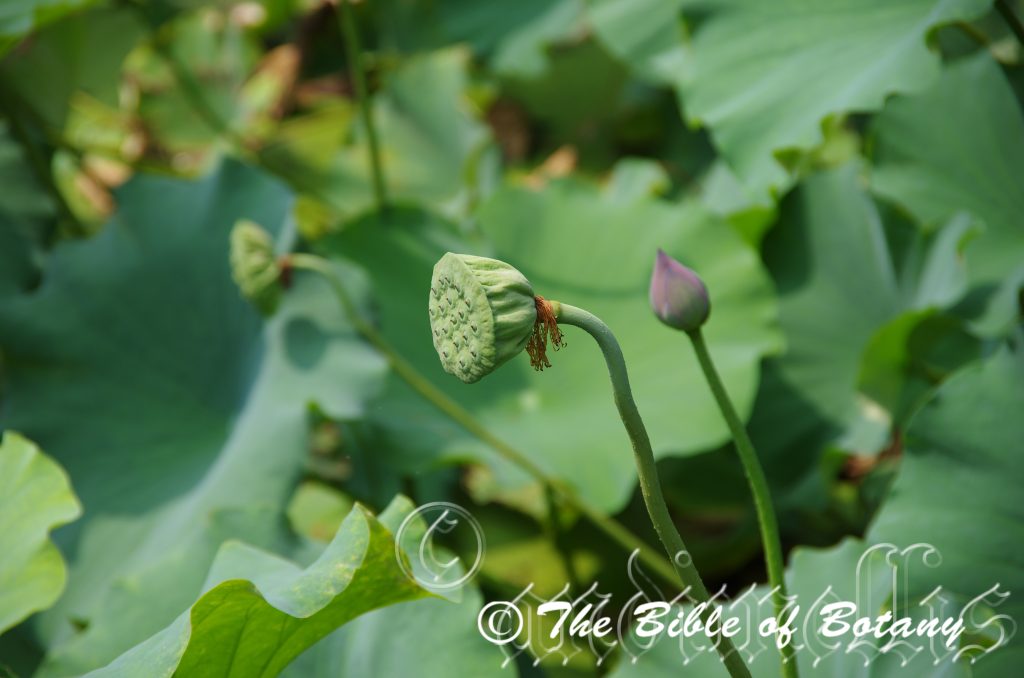
Number 1 State High School Chong Qing China
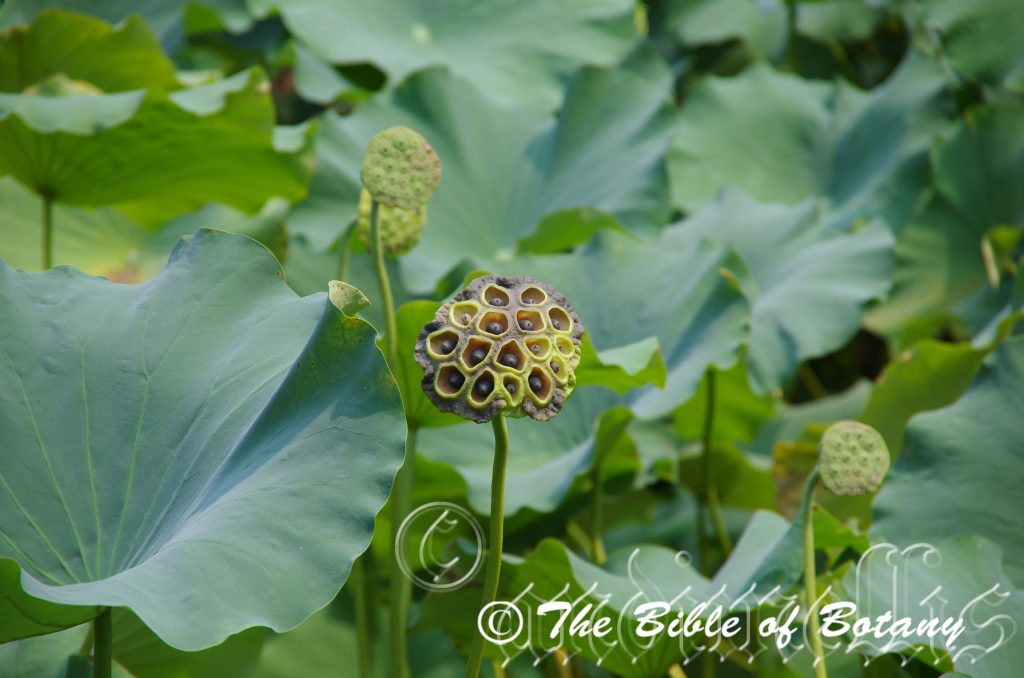
Number 1 State High School Chong Qing China
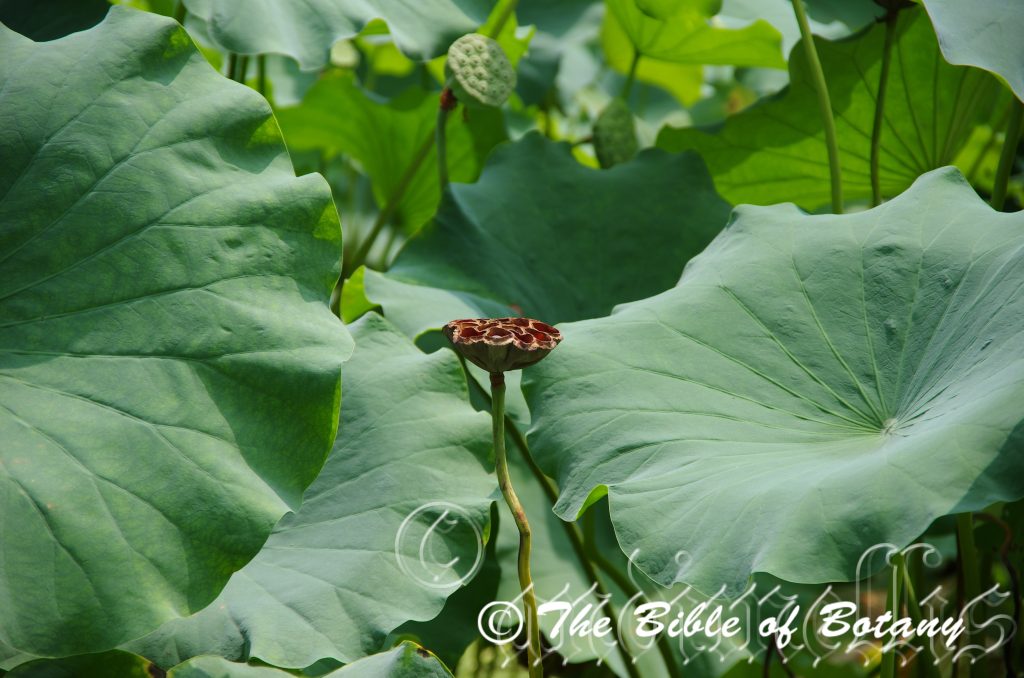
Sha Ping Ba China
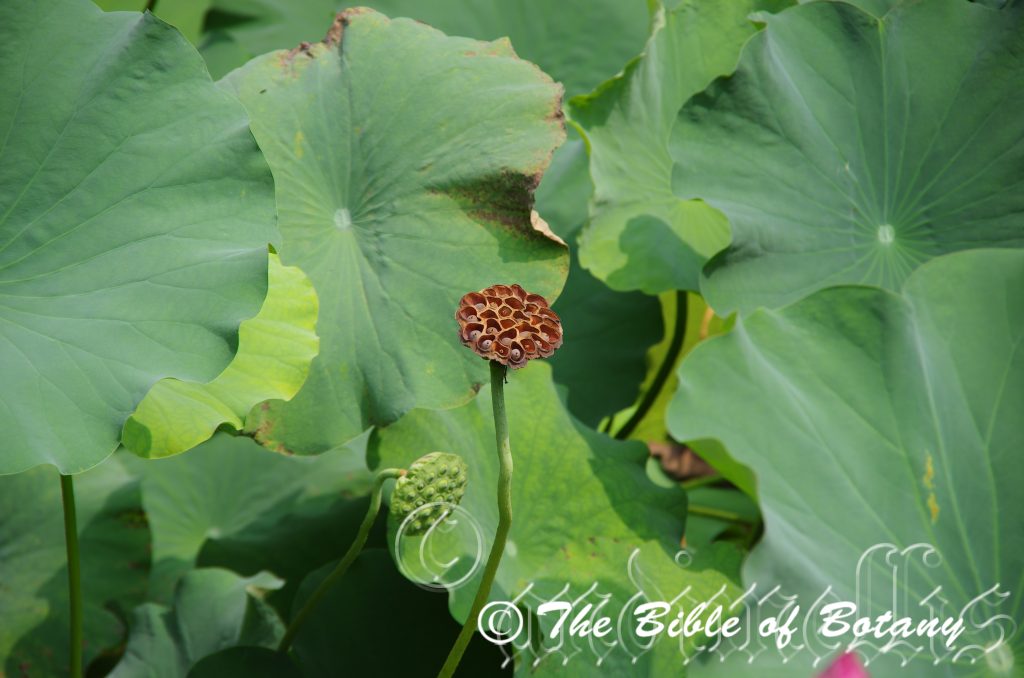
Number 1 State High School Chong Qing China
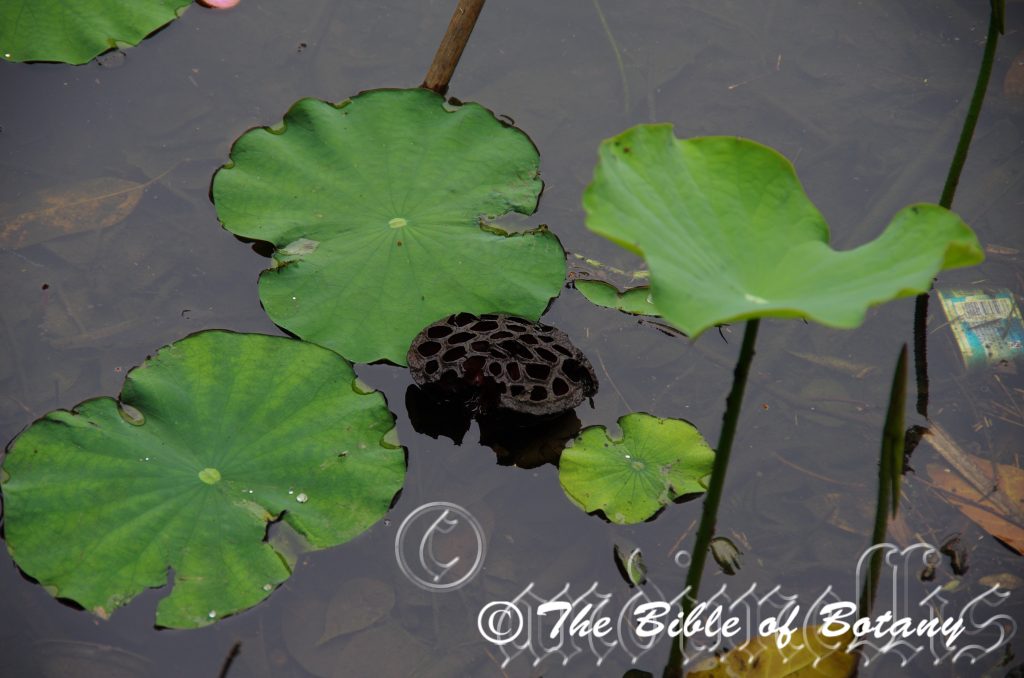
Sha Ping Ba China
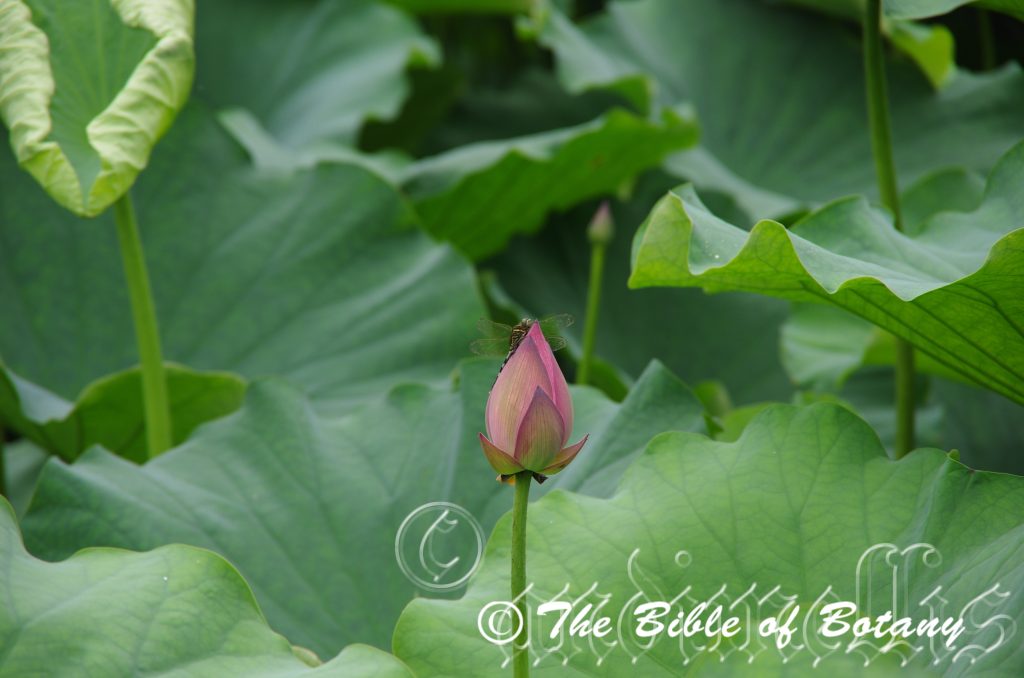
Sha Ping Ba China
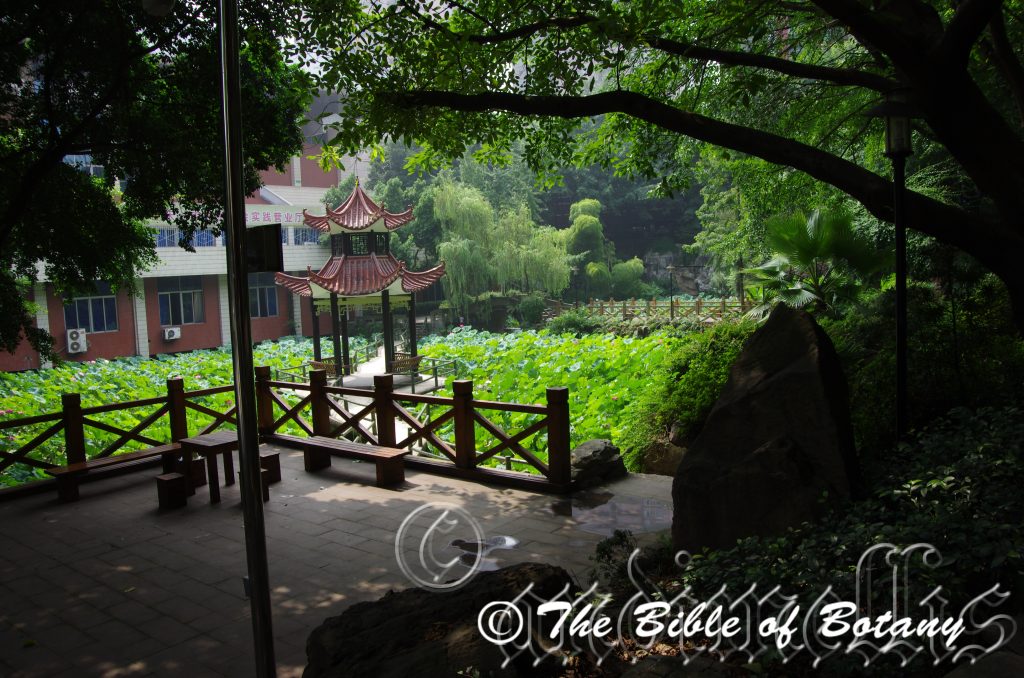
Number 3 State High School Sha Ping Ba China
Nelumbo nucifera
Classification
Unranked: Eudicots
Order: Proteales
Family: Nelumbonaceae
Genus: From Nelumbo, which is Latinized for the Sri Lankan vernacular name for the plant found there.
Specie: From Nuci, which is Latin for a nut and Ferae/Ferārum which is Latin for to bear or bearing. It refers to fruits, which contain a nut.
Sub species:
Common Name: Lotus, Lotus flower or Anembo – A quite place in reference to where the plants grow in northern Australia.
The northern aboriginal name for the plant is Anembo.
Distribution:
Nelumbo nucifera is a widespread species which is found in the northern quarter of the Northern Territory especially in the northern parts of Kakadu National Park.
In the east it is found south from Cape York Peninsula to the Condamine River in southern Queensland. It is mainly found on and east of the Great Dividing Range.
It is also found from central and southern India, Thailand, Vietnam, Laos, southern and eastern China, Japan, Malaysia, Philippines, Indonesia, Papua, New Guinee, Bougainville, The Solomon islands and many of the Island nations in the western Pacific region.
https://avh.ala.org.au/occurrences/search?taxa=Nelumbo+nucifera#tab_mapView
Habitat Aspect Climate:
Nelumbo nucifera prefers full sun. It grows along slow flowing creeks, flooded alluvial plains, in most types of swamps, lagoons or billabongs. This is a water plant for large ponds and dams. The altitude ranges from 20 meter ASL to 250 meters ASL.
The temperatures range from 12 degrees in August to 40 degrees in January.
The rainfall ranges from lows of 800mm to an average of 4000mm but this is of little importance as the plants grow in water which is from 200mm to 3 meters in depth.
Soil Requirements:
Nelumbo nucifera prefers fine sands medium clays to heavy silts. The soils are usually derived from decomposed basalts, better quality sandstones, shales or alluvial flats where they have been weathered and deposited as alluvial. The soils pH. ranges from 5pH to 6.5pH. It tolerates waterlogged soils usually growing in water to 2 meters deep. Non saline soils to moderately saline soils are tolerated.
Height & Spread:
Wild Plants: 1m to 3m by 1m to 3m.
Characteristics:
Nelumbo nucifera’s form large ellipsoidal rhizomes contain large circular air chambers which run longitudinally inside the tuber. The rhizomes measure 80mm to 200mm in length by 30mm to 60mm in diameter and are joined together by a short woody appendage. The appendage measures 3mm to 8mm in length by 4mm to 6mm in diameter. The rhizomes are a pale fawn in colour, are glabrous or are covered in small black dots and lenticels.
Nelumbo nucifera’s simple leaves have petioles that vary greatly in length depending on the depth of the water the plants are growing in. They measure 250mm to 4500mm in length by 6mm to 10mm in diameter. The leaves may rest on the water surface or more commonly held 100mm to 1150mm above the water. The very large cordate leaves have a peltate petiole. They measure 160mm to 580mm in diameter. The laminas are concolourous with the laminas being pale grass green to mid blue-green, dull and glabrous. They are uniquely water resistant and self-cleaning. The margins are entire and flat to strongly undulating. The radiating veins are prominent on the lower lamina and are visible on the upper lamina.
The inflorescence of Nelumbo nucifera is a solitary emergent flower born directly from a root bud. The diurnal flowers open for two days and close at night. The pedicel measures 600mm to 5000mm in length and holds the flower 100mm to 300mm above the leaves. The 3 to 6 sepals are green-blue with the margins being paler or tinged with pink. The broad lanceolate to elliptical, cupped sepals measure 60mm to 75mm in length by 30mm to 50mm in width. The 10 to 30 lanceolate to narrow elliptical white to bright pink petals measure 60mm to 75mm in length by 15mm to 25mm in width. The ovary has 8 to 24 locules each producing a single seed. The 200 odd yellow stamens measure 10mm to 16mm in length. The 1mm to 1.5mm anthers are white, cream or yellow while the pollen is white and quite profuse. The cream yellow to deep yellow, inverted, flat conical receptacle measures 19mm to 24mm in length by 19mm to 24mm in diameter at the apex. They are fertilized by insects mainly beetles walking over the surface or face of the stigma. The sweetly scented flowers appear from late November to early February.
Nelumbo nucifera’s fruit is a large pod. The pods are a flat conical cone. They are glaucous blue-green turning deep grey when ripe. The pods face points skyward nodding downwards as the seeds ripen under the weight of the seeds so the seeds can drop out into the water. The ripe cones measure 20mm to 30mm in length by 50mm to 70mm in diameter at the apex. The seeds are not enclosed but are open to the weather at the top of the stigma. The black ellipsoidal seeds are round on one end and have a mucronate point on the other. The seeds measure 6mm to 9mm in length by 6mm to 8mm in width.
Wildlife:
Nelumbo nucifera relies upon many varieties of insects most of which are small beetles for fertilization. These beetles are unknown to the author.
The seeds are eaten by Australian Aborigines; unripe and raw, or ripe and roasted. They are a popular ingredient in local desserts in Asia. The rhizomes are also eaten and are very popular in China. They are boiled usually as a soup, candied as a dessert or pickled. The petioles and peduncles are also eaten and have a mild pleasant celery taste. The large circular leaves were also used to wrap food up for steaming in earth ovens. The plant has been cultivated in China since the early 12th century BC.
Cultivation:
Nelumbo nucifera makes an excellent plant for sunny areas and as an unusual addition to courtyards and around swimming pools. It is deciduous and dies down annually in the dry season or when the weather turns cold. As a garden subject it will grow from 500mm to 1500mm by 500mm to 2000mm in diameter. It is cold tolerant to temperatures at least as low as 1 degree once established provided the water or soil does not freeze over or where the waters are seasonal.
When you design a miniature bog garden with a pool, use contours to display the dry land plants to their best. If Nelumbo nucifera is to be grown remember it is a large water plant that requires fairly deep water and room to spread. It is best suited to ponds or dams with at least 200 square meters and a central depth of around a meter.
Use small tussock grasses or Lomandra adjacent to the water and plant Nelumbo nucifera more towards the center otherwise the taller leaves will cover the plants growing next to the water on the bank.
About 70mm of lotus for the human consumption is produced in China. In 2005, the area under cultivation in China was estimated at 300,000 hectares. A majority of lotus production is by small individual farmers and small cooperative farm practices in controlled mixed farming systems. The ponds or flooded fields rotated with rice and vegetables with kuhli loaches, Pangio kuhlii are something to behold.
With such a beautiful plant, it is easy to see why people consider it sacred and spend hours transfixed, endeavouring to secure a photograph that does it justice. The leaves, flowers and fruits, even in their dying stages still has the photographer captivated. Imagine being a high school student in the last Photo, where you are confronted with this magical scene as a part of your recreational area or walking from one classroom to the next or staring out the window during class. I would never get any work done, unless it was botany. To sit and be transfixed in what nature has to offer at school is truly astonishing. Yes this is in the middle of a city of 11,000,000 people. I am guilty in every manner of being addicted to the sacred lotus Nelumbo nucifera.
Yes the aboriginal word of ‘Anembo,’ translated to a tranquil scene or peaceful place is truly calming. To be by a billabong; shrouded with Anembo, is to be surrounded by mesmerising beauty, with its all its power of calmness and tranquillity, is candidly apt.
Propagation:
Two or three Nelumbo nucifera seeds can be sown directly into 50mm squat tubes. Cover the seeds with 5mm to 6mm of fine weed free mulch and keep moist by standing the tubes in a saucer of clean water. Change the water daily to ensure cleanliness. Place the tray in a warm semi shaded position. When the seedlings develop true leaves and are 100mm to 150mm tall, plant them into 200mm pots using a good organic mix and slowly adjust their position over a few weeks so they get full sun. Do not let them dry out at any stage. They can be replanted at around 12 months of age into 400mm or 500mm pots.
Division of root tubers is as a matter of breaking the root sections off and planting in separate pots.
Further Comments from Readers:
All information is included in good faith and has been thoroughly researched prior to printing. The website or the author does not warrant or guarantee the accuracy of any information on these pages, nor does the website or the author accept any responsibility for any loss arising from the use of the information found within. The views and opinions are strictly those of the author or those members who chose to actively participate in the contents herein.
Hi reader, it seems you use The Bible of Botany a lot. That’s great as we have great pleasure in bringing it to you! It’s a little awkward for us to ask, but our first aim is to purchase land approximately 1,600 hectares to link several parcels of N.P. into one at The Pinnacles NSW Australia, but we need your help. We’re not salespeople. We’re amateur botanists who have dedicated over 30 years to saving the environment in a practical way. We depend on donations to reach our goal. If you donate just $5, the price of your coffee this Sunday, We can help to keep the planet alive in a real way and continue to bring you regular updates and features on Australian plants all in one Botanical Bible. Any support is greatly appreciated. Thank you.
In the spirit of reconciliation we acknowledge the Bundjalung, Gumbaynggirr and Yaegl and all aboriginal nations throughout Australia and their connections to land, sea and community. We pay our respect to their Elders past, present and future for the pleasures we have gained.
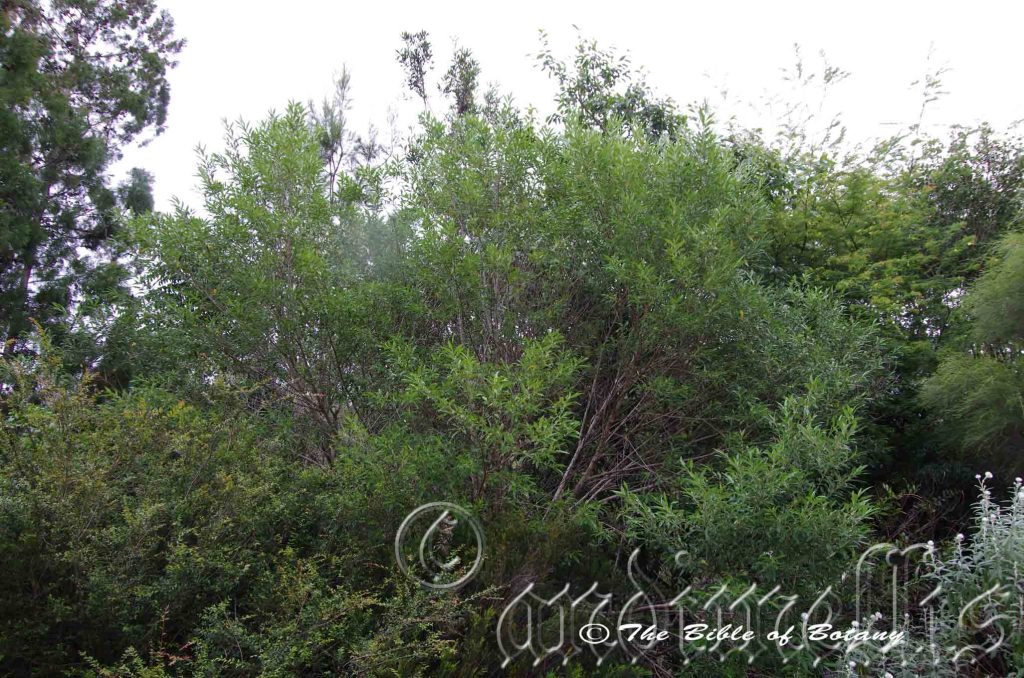
NCBG Coffs Harbour NSW
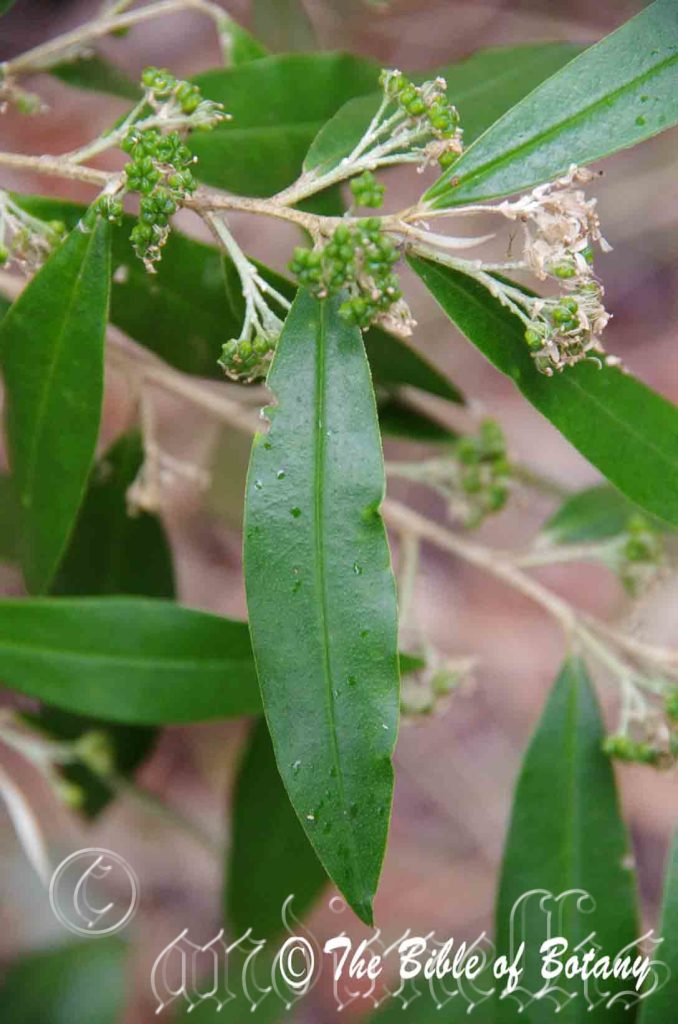
Innes Lake National Park NSW
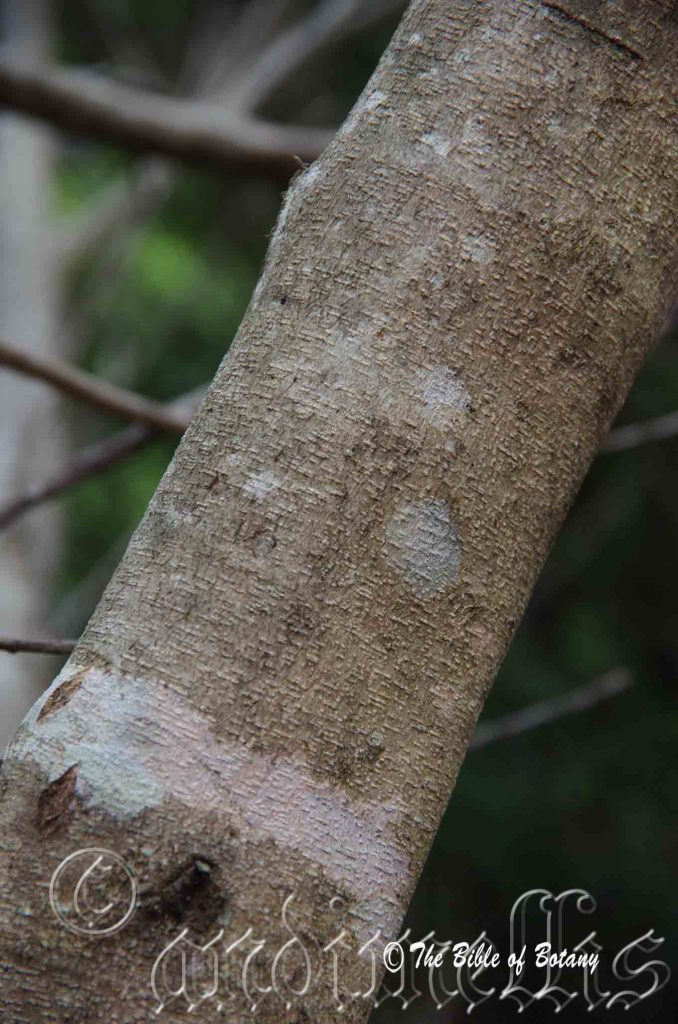
NCBG Coffs Harbour NSW
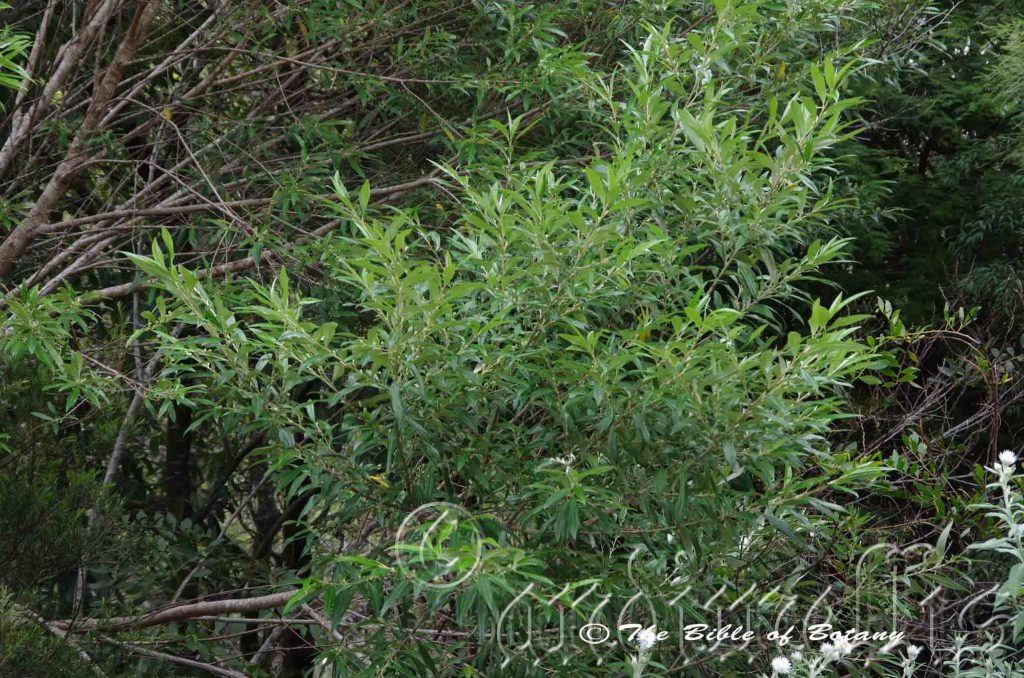
NCBG Coffs Harbour NSW
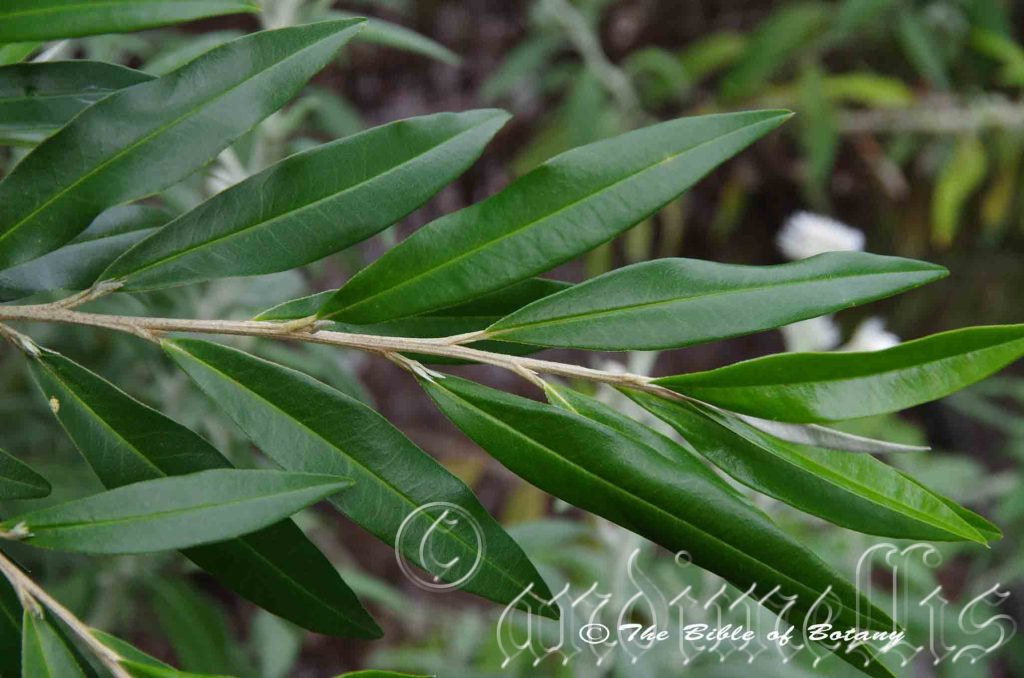
NCBG Coffs Harbour NSW
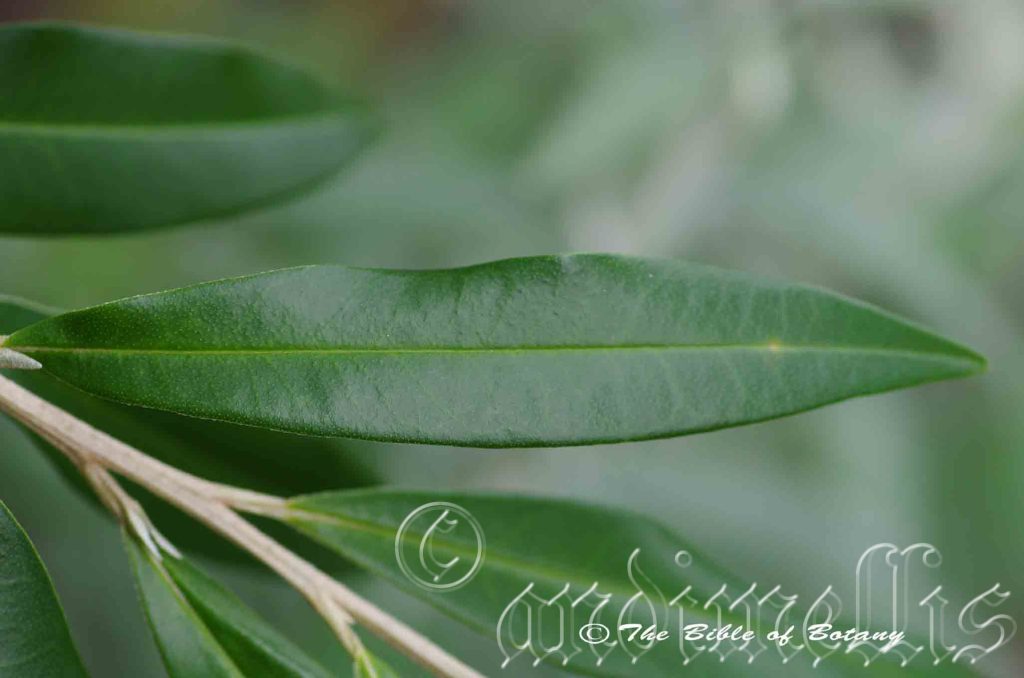
Ulong-Dorrigo Road Ulong NSW
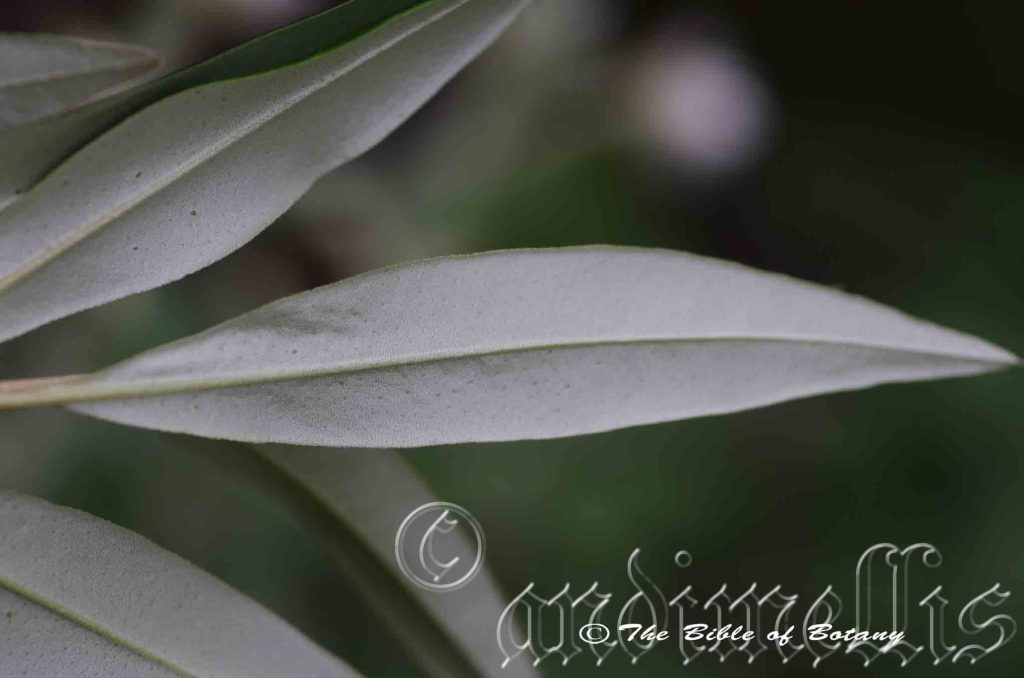
Ulong-Dorrigo Road Ulong NSW
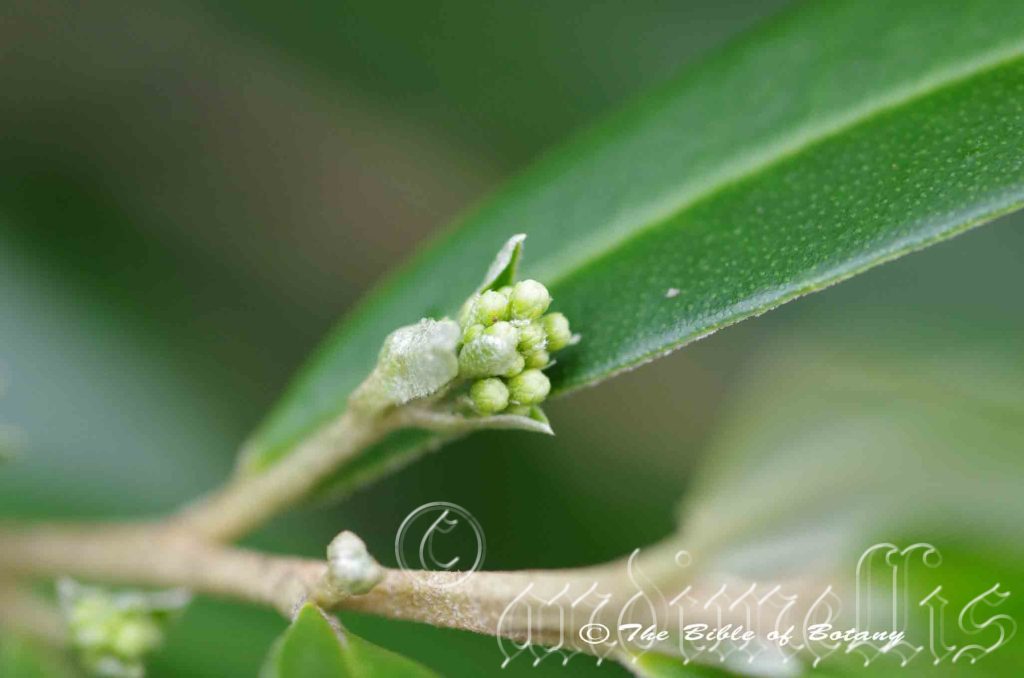
Ulong-Dorrigo Road Ulong NSW
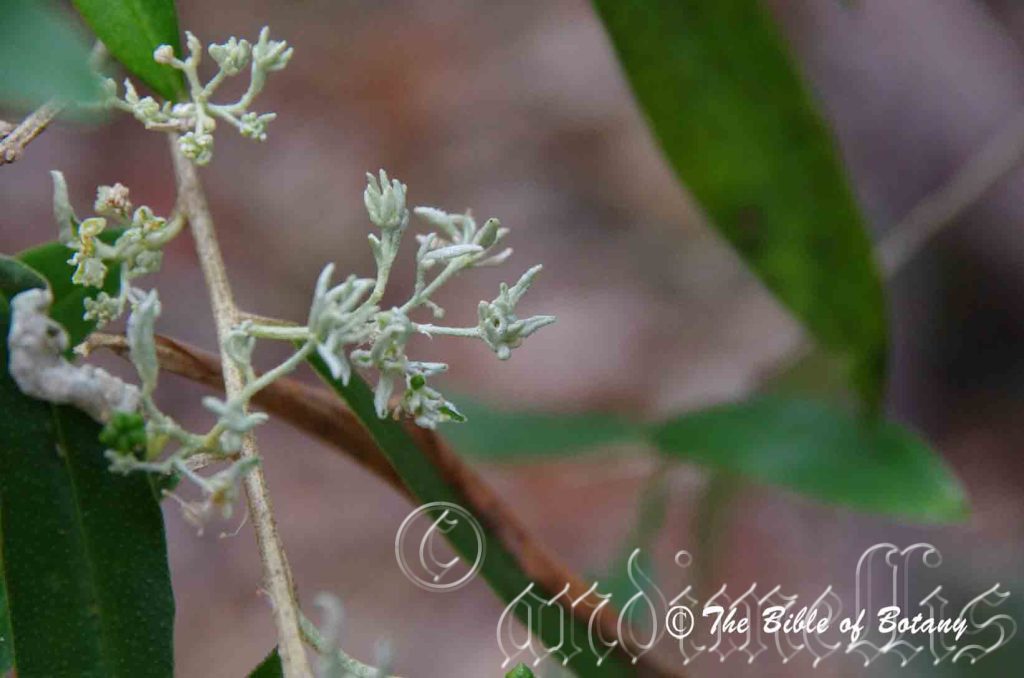
Innes Lake National Park NSW
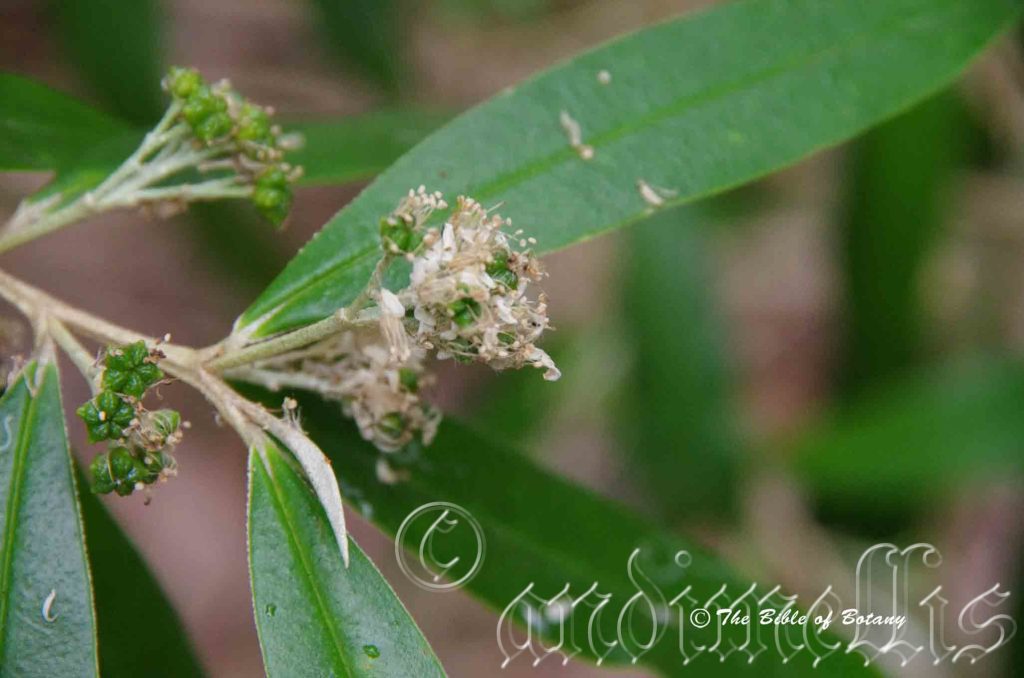
Innes Lake National Park NSW
Nematolepsis squamea
Classification
Unranked: Eudicots
Unranked: Rosids
Order: Sapindales
Family: Rutaceae
Genus: From Nêma, which is Ancient Greek or Nēma, which is Latin for a thread, and Lepis, which is Ancient Greek for a scale. It refers to a scale; at the base of the stamens, which are thread like.
Specie: From Squarrōsus, which is Latin for a scale or to be scale like. It probably refers to the small leaves, which appear somewhat like scales along the stems.
Sub specie: Nematolepis squamea subsp. coriacea. From Coriaceous, which is Latin for like leather or leathery. It refers to leaves, phyllodes and fronds which are thick and leathery to touch.
Sub specie: Nematolepis squamea subsp. retusa. From Retūsa, which is Latin for to make blunt. It refers to organs, usually the leaves or petals, which have obtuse apexes with a shallow notch as against emarginate which has a deep notch.
Sub specie: Nematolepis squamea subsp. squamea. From Squarrōsus, which is Latin for a scale or to be scale like. It probably refers to the small leaves, which appear somewhat like scales along the stems.
Common Name: Satinwood
Distribution:
Nematolepis squamea subsp. coriacea is found in a few isolated populations including the Warumbungle Mountains in New South Wales and the Snowy River and Mount Arbuckle in central Victoria.
Nematolepis squamea subsp. retusa is found south from The Watchtower and Nelsons Crag in the Licola district south to Tasmania excluding the Bass Strait Islands.
Nematolepis squamea subsp. squamea it is found mainly along the coast to the Great Dividing Range south from the Gold Coast hinterland and Beechworth to the Pyrenees Mountains in Victoria and mainly on the western side of Tasmania. There is a disjunct populations further north in Queensland on Quoin Island north east of Rockhampton.
https://avh.ala.org.au/occurrences/search?taxa=Nematolepsis+squamea#tab_mapView
Habitat Aspect Climate:
Nematolepis squamea prefers light dappled shade to full shade. It grows in wet sclerophyll forest, in temperate rainforest openings, cool sub-tropical rainforest openings, in moist gullies or moist gallery forests. The altitude ranges from 5 meter ASL to 1100 meters ASL.
The temperatures range from minus 4 degrees in August to 36 degrees in January.
The rainfall ranges from lows of 600mm to an average of 2000mm.
Soil Requirements:
Nematolepis squamea prefers better quality fine sands, sandy loams to medium clays. The soils are usually derived from decomposed granites, better quality sandstones, brown basalts or black basalts. The soils pH. ranges from 5pH to 6.5pH. It does not tolerate waterlogged soils. Non saline soils to moderately saline soils are tolerated.
Height & Spread:
Wild Plants:
Nematolepis squamea subsp. squamea 8m to 12m by 3m to 5m.
Nematolepis squamea subsp. coriacea 2m to 8m by 1m to 4m.
Nematolepis squamea subsp. retusa 1m to 4m by 1m to 3m.
Characteristics:
Nematolepis squamea’s main stems are mid grey-brown, smooth and glabrous. The branchlets are mid reddish-brown and glabrous while the angled new growth is a green, smooth and glabrous.
Nematolepis squamea’s narrow elliptical to broad elliptic leaves measure 50mm to 100mm in length by 10mm to 22mm in width. The glabrous petioles measure 2mm to 4.5mm in length. The bases are tapering to cuneate while the apexes are acuminate to broadly acuminate. The discolourous laminas are deep green to sea-green, smooth to finely verrucosa, glabrous and glossy on the upper lamina while the lower lamina is densely covered in white to silvery scales. The laminas are flat or undulating, slightly convex on the upper surface or recurve slightly upwards from the mid vein to the margins and gently decurve on the apical half while the margins are entire. The mid vein is strongly prominent on the lower lamina and distinctly visible on the upper lamina. The lateral veins are not distinguishable on either lamina.
The inflorescence of Nematolepis squamea is a small panicle born from the leaf axils. The peduncle, rachis and pedicel are angled and covered in white to silvery scales. The peduncle measures 12mm to 20mm in length while the rachis 10mm to 15mm in length and the pedicels measure 5mm to 10mm in length. There are 3 to 20 individual flowers to a panicle. The 5 small coriaceous, triangular sepals are densely covered in white to silvery scales measure 0.5mm to 1mm in length. The 5 elliptical, white petals are glabrous with a mucronate apex and measure 4mm to 5mm in length by 2mm to 2.6mm in width.
The 5 locule, white ovary is glabrous and measures 1.5mm in length by 2mm in diameter. The 10 white anthers measure 34mm to 4.5mm in length while the white obloidal anthers measure 1mm in length. The white style measure less than 3.5mm to 4mm in length. The sweetly scented flowers appear from September to November.
Nematolepis squamea’s fruits are small flat ellipsoidal cocci. The 5 green cocci radiate outwards from the pedicel and turn fawnish-brown to pale grey-brown when ripe. The cocci shrink as they ripen and measure 3mm to 3.5mm in length by 2mm to 2.5mm in width when ripe. The minute seeds are black.
Confusing Subspecies Varieties:
Nematolepis squamea subsp. squamea is described above.
Nematolepis squamea subsp. coriacea’s leaves are rather leathery and finely verrucose.
Nematolepis squamea subsp. retusa’s branches are strongly glandular to verrucose. The leaves measure 4mm to 40mm in length by 4mm to 9mm in width with 1mm to 3mm long petioles. Apex obtuse to retuse. The flowers are born singularly or in 2 to 5 flowered cymes. The pedicels measure 1mm to 3mm while the petals measure 3mm to 3.5mm in length. The flowers appear from September to January.
Wildlife:
Nematolepis squamea’s wildlife is unknown to the author.
Cultivation:
Nematolepis squamea makes an excellent plant for very shady moist areas and as an addition to small to large rainforests or when starting a small rainforest garden or as an understory to an existing rainforest garden if Nematolepis squamea subsp. retuse is planted out. It always looks green and fresh especially where adequate ground moisture is retained whether it is grown in light shade or dense shade. It is very suitable on sandy to heavy clay soils and are most suitable for small, medium and large gardens close to the coast in warm temperate, sub-tropical, tropical gardens. As garden subjects they will grow from 6 meters to 8 meters in height by 5 meters to 6 meters in diameter when grown in the open or 2 meters to 3 meters in height by 2 meters to 3 meters in diameter.
It is cold tolerant to temperatures at least as low as minus 4 degrees once established.
It is most suitable for use as a back drop to provide shade when grown in a sheltered open position, courtyards, besides pathways, shady rockeries, along drive ways or adjacent to natural bush gardens.
Planted within a rainforest the white flowers will carpet the ground.
It is an ideal plant for growing epiphytic ferns and orchids on while the trunks will develop a multitude of lichens when grown in the shade.
Propagation: Nematolepis squamea seeds can be sown directly into a seed raising mix once the weather warms up. Cover the seeds with 5mm to 10mm of fine weed free mulch and keep moist. Place the tray in a warm sunny position. When the seedlings are 30mm to 50mm tall, prick them out and plant them into 50mm native tubes using a good organic mix.
Once the seedlings reach 100mm to 150mm in height they can be planted out into their permanent position.
Fertilize using seaweed, fish emulsion or organic chicken pellets soaked in water on an alternate basis. Fertilize every two months until the plants are established then twice annually in early September or March to maintain better health, vitality and flowering.
Further Comments from Readers:
Hi reader, it seems you use The Bible of Botany a lot. That’s great as we have great pleasure in bringing it to you! It’s a little awkward for us to ask, but our first aim is to purchase land approximately 1,600 hectares to link several parcels of N.P. into one at The Pinnacles NSW Australia, but we need your help. We’re not salespeople. We’re amateur botanists who have dedicated over 30 years to saving the environment in a practical way. We depend on donations to reach our goal. If you donate just $5, the price of your coffee this Sunday, We can help to keep the planet alive in a real way and continue to bring you regular updates and features on Australian plants all in one Botanical Bible. Any support is greatly appreciated. Thank you.
In the spirit of reconciliation we acknowledge the Bundjalung, Gumbaynggirr and Yaegl and all aboriginal nations throughout Australia and their connections to land, sea and community. We pay our respect to their Elders past, present and future for the pleasures we have gained.
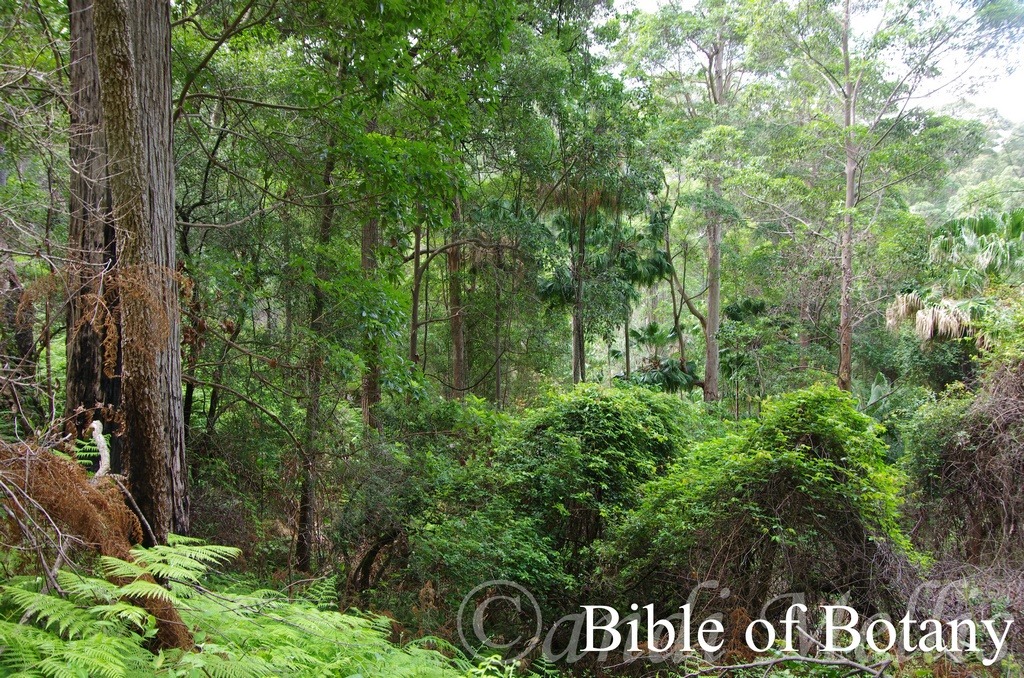
Wombat Creek Conservation Park NSW
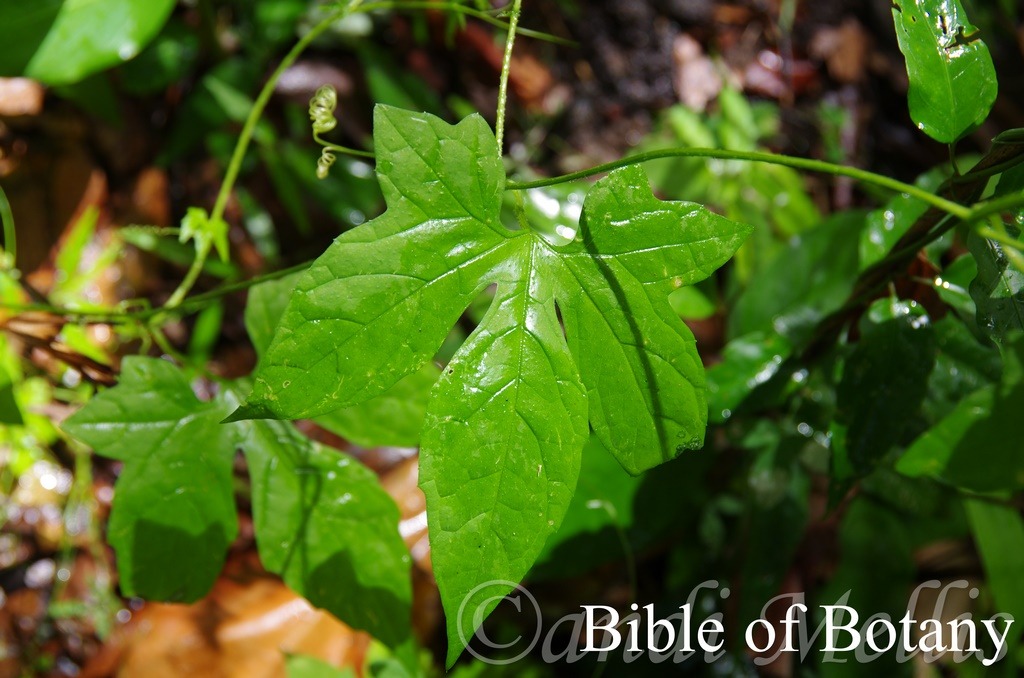
Wombat Creek Conservation Park NSW
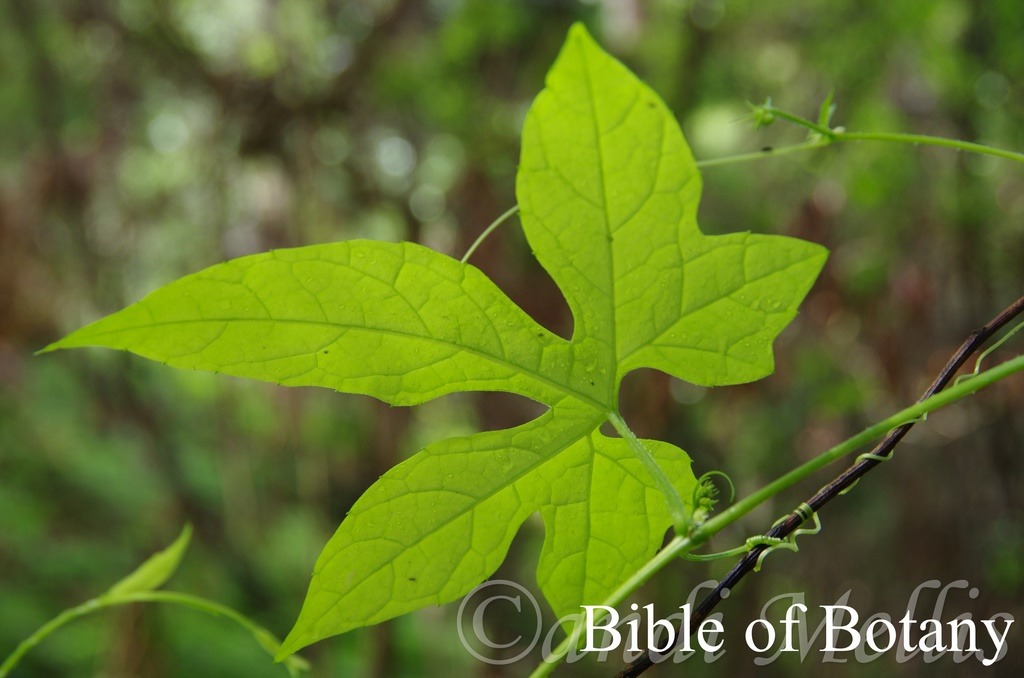
Wombat Creek Conservation Park NSW
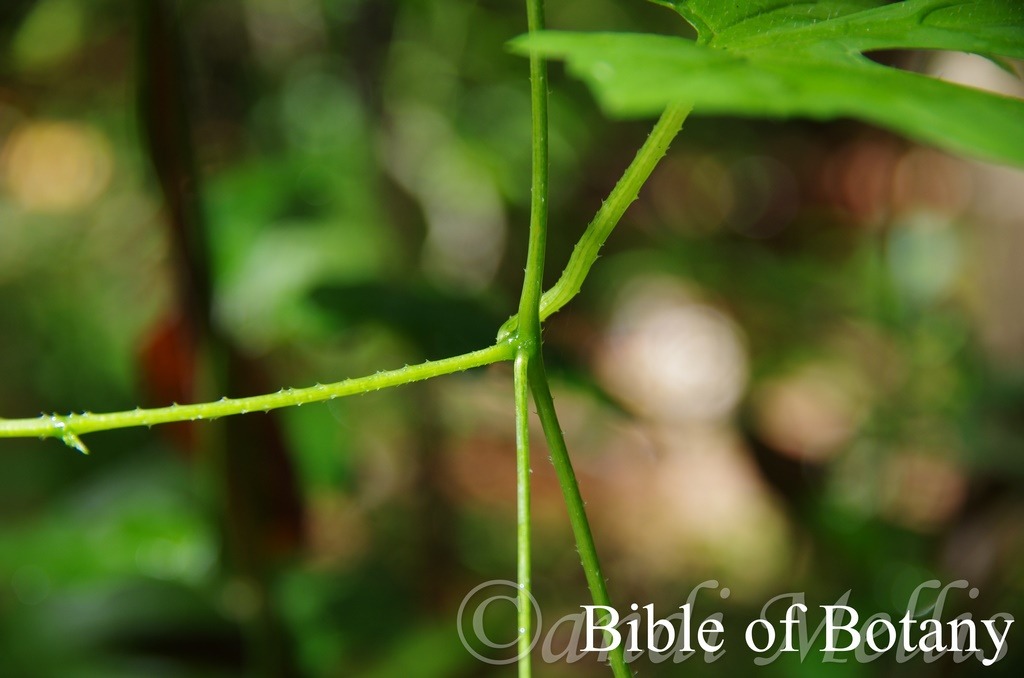
Wombat Creek Conservation Park NSW
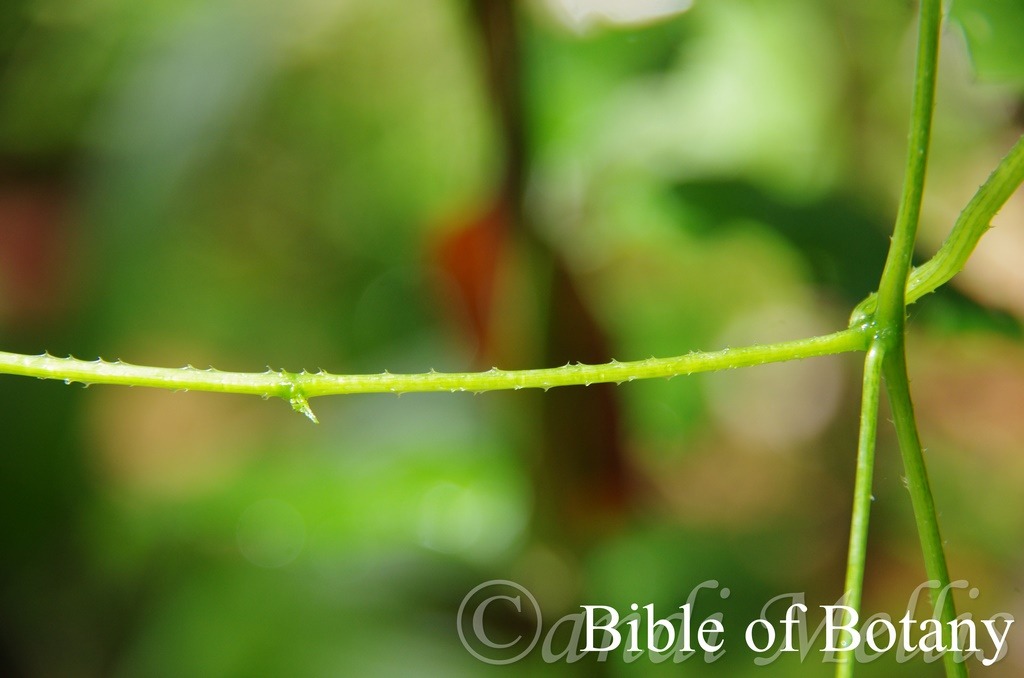
Wombat Creek Conservation Park NSW
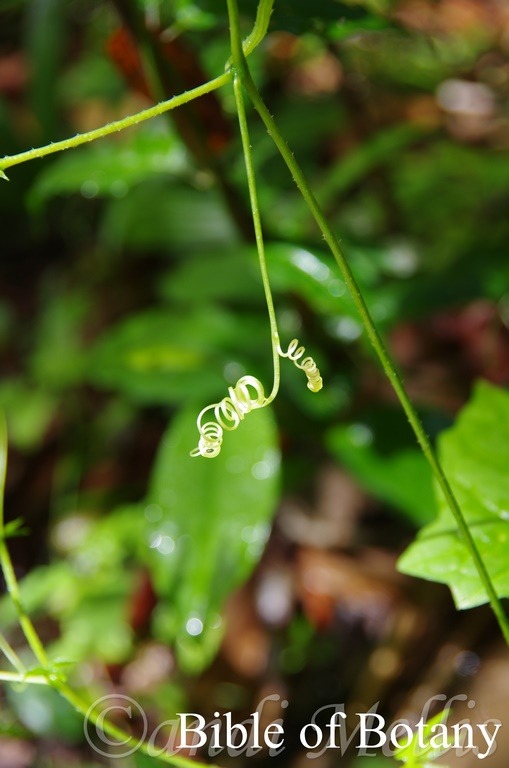
Wombat Creek Conservation Park NSW
Neoachmandra cunninghamii
Classification:
Unranked: Eudicots
Class: Rosids
Order: Cuccurbitales
Family: Cucurbitaceae
Subfamily: Cucurbitoideae
Tribe: Benincaseae
Genus: Is named in honour of Karl Ludwig Philipp Zeyher; 1799-1858, who was a German professional botanical and insect collector of specimens in Africa.
Specie: Is named in honour of Allan Cunningham; 1791-1839, who was an Australian explorer, botanist and collector of plants.
Sub specie:
Common Name: Slender Cucumber.
Distribution:
Neoachmandra cunninghamii is found in several disjunct populations on and east of the Great Dividing Range from the Torres Strait Islands in far north eastern Queensland south to Buladelah in south eastern New South Wales.
https://avh.ala.org.au/occurrences/search?taxa=neoachmandra+cunninghamii#tab_mapView
Habitat Aspect Climate:
Neoachmandra cunninghamii prefers light shade to full sunlight. It grows in warmer subtropical, littoral rainforests, tropical rainforests or monsoonal rain forests. The altitude ranges from 10 meters ASL to 800 meters ASL.
The temperatures range from 2 degrees in July to 36 degrees in January.
The rainfall ranges from lows of 1200mm to 3200mm average per annum.
Soil Requirements:
Neoachmandra cunninghamii usually prefers to grow on better quality, deep loams to medium clays. The soils are usually derived from decomposed brown, black basalts or better quality metamorphic rocks. The soils pH varies from 5pH to 6pH. It does not tolerate waterlogged soils. Non saline soils to moderately saline soils are tolerated.
Height & Spread:
Wild Plants: 1m to 2m by 1m to 2m.
Characteristics:
Neoachmandra cunninghamii grows as a small twinning climber with once divided tendrils from the leaf axils.
The alternate cordate to triangular leaves of Neoachmandra cunninghamii measure 40mm to 80mm in length by 30mm to 70mm in width. The petioles are sparsely to moderately covered in rows of stiff scale like hairs and measure 20mm to 60mm in length. The bases are cordate while the apexes are long tapering. The discolourous laminas are mid grass-green to deep olive-green, semi glossy and scabrous on the upper laminas while the lower laminas are paler. The lamina recurves slightly upwards from the midvein to the margins and decurves downwards near the apex. The lamina is thin while the margins are toothed or rarely shallowly three lobed.
The inflorescences of Neoachmandra cunninghamii are dioecious clusters born from the leaf axils. The male flowers have slender short peduncles.
The female flowers are born singularly to threes usually two in a cluster from the leaf axils. The slender pedicels measure 10mm to 40mm in length. The orbicular corolla measures 4mm to 5.5mm in length while the orbicular yellow calyxes measure 3mm to 4mm in length. The flowers appear from late November to early March.
Neoachmandra cunninghamii’s fruits are spherical berries. The mid olive-green berries are glabrous and turn pale yellow or greenish-yellow when ripe. The berries measure 6mm to 12mm in diameter. The 4 to 8 seeds measure 4mm to 6mm in length.
Wildlife:
Neoachmandra cunninghamii’s wildlife is unknown to the author.
Cultivation:
Neoachmandra cunninghamii is an interesting addition for cultivation yet it appears that it has not found its way into horticulture to date. Its requirements are simple, consistent soil moisture and heaps of mulch in a semi shaded area. In cultivation it grows 1 meter to 2 meters in diameter.
It is at its best when used as a small rainforest ground cover scrambling over understory shrubs, rocks, logs or raised mounds.
Propagation:
Seeds: The seeds of Neoachmandra cunninghamii can be removed easily from the ripe berries and washed, dried and stored in a cool place until required. Place the seeds in the vegetable crisper of the refrigerator in a dry calico bag over winter and sow in the spring once the last frosts have subsided. The seeds are very reliable and germinate within 10 days.
Sow freshly treated seeds directly into a seed raising mix, keeping them moist not wet. Do not over water as the seeds will rot off before germination takes place. Place the trays in a cool shaded area with 50mm shade cloth in the bush house.
When the seedlings are 20mm to 25mm tall, prick them out and plant them into 50mm native tubes using a good organic mix.
As the seedlings roots reach the bottom of the tubes plant them out into their permanent position. Do not delay.
Fertilize using Seaweed, fish emulsion or organic chicken pellets soaked in water and apply the liquid on an alternate basis. Fertilize e monthly until the plants are well established to maintain better health, vitality and flowering.
Cuttings:
Fortunately Neoachmandra cunninghamii cuttings strike easy. Use 100mm to 200mm long tip cuttings or lateral shoots from the present season’s growth. Take them in warmer months of the year. Remove half the leaves from the bottom section being careful not to tear the bark.
1 Prepare the cutting mix by adding two thirds sharp clean river sand, one third peat or one third perlite. These ingredients must be sterilized,
2 Select good material from non-diseased plants,
3 Select semi green stems for cuttings,
4 Place the cutting on a flat, hard surface, and make a clean cut down one side of the cutting at the base for 10mm with a sharp sterile knife or razor blade. – This scarification of the node will increase the chances of roots emerging from this spot. Now remove all but one or two the leaves, leaving the apex leaves intact. If the leaves are very large in proportion to the stem, cut off the apical halves.
5 Fill a saucer with water, and place a little medium strength rooting hormone into another container like a milk bottle top. Dip the node end of the cutting into the water and then into the rooting hormone. Tap off any excess hormone,
6 Use a small dipple stick or old pencil to poke a hole into the soilless potting mix. Ensure the hole is slightly larger than the stem diameter and be careful not to wipe the rooting hormone off the cuttings base. Place 2 to 4 cuttings in each of the 50mm native tubes,
7 I like to place the tubes in bucket with holes drilled in the bottom to allow excess water to drain out. A plastic bag that fits over the bucket is ideal to help maintain temperature and moisture. Place in a semi shaded, warm position like under 50mm shade cloth.
8 When the cuttings have struck, open the bag to allow air circulation for a few days to a week,
9 Once hardened off remove the cuttings from the bag and allow to further hardening for a few more days to a week,
10 Transplant into a good potting mix to grow on.
Fertilize using seaweed, fish emulsion or organic chicken pellets soaked in water on an alternate basis. Fertilize every two months until the plants are established then twice annually in early September or March to maintain health, vitality and better flowering.
Further Comments from Readers:
Hi reader, it seems you use The Bible of Botany a lot. That’s great as we have great pleasure in bringing it to you! It’s a little awkward for us to ask, but our first aim is to purchase land approximately 1,600 hectares to link several parcels of N.P. into one at The Pinnacles NSW Australia, but we need your help. We’re not salespeople. We’re amateur botanists who have dedicated over 30 years to saving the environment in a practical way. We depend on donations to reach our goal. If you donate just $5, the price of your coffee this Sunday, We can help to keep the planet alive in a real way and continue to bring you regular updates and features on Australian plants all in one Botanical Bible. Any support is greatly appreciated. Thank you.
In the spirit of reconciliation we acknowledge the Bundjalung, Gumbaynggirr and Yaegl and all aboriginal nations throughout Australia and their connections to land, sea and community. We pay our respect to their Elders past, present and future for the pleasures we have gained.
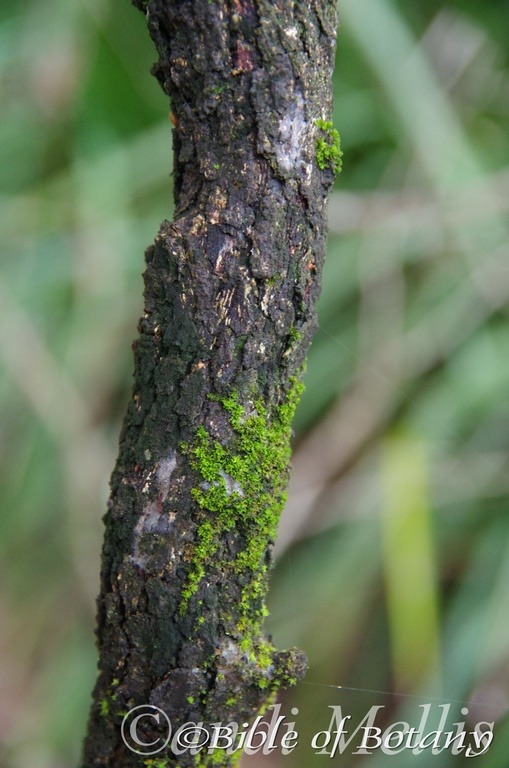
Mount Cootha Botanic Gardens Qld.
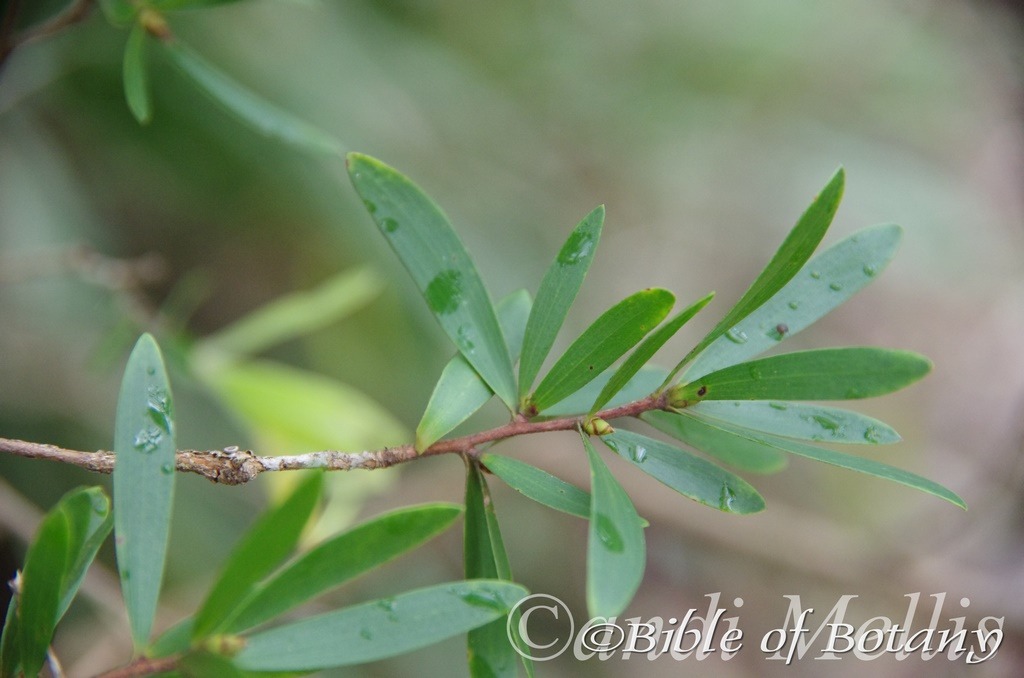
Mount Cootha Botanic Gardens Qld.
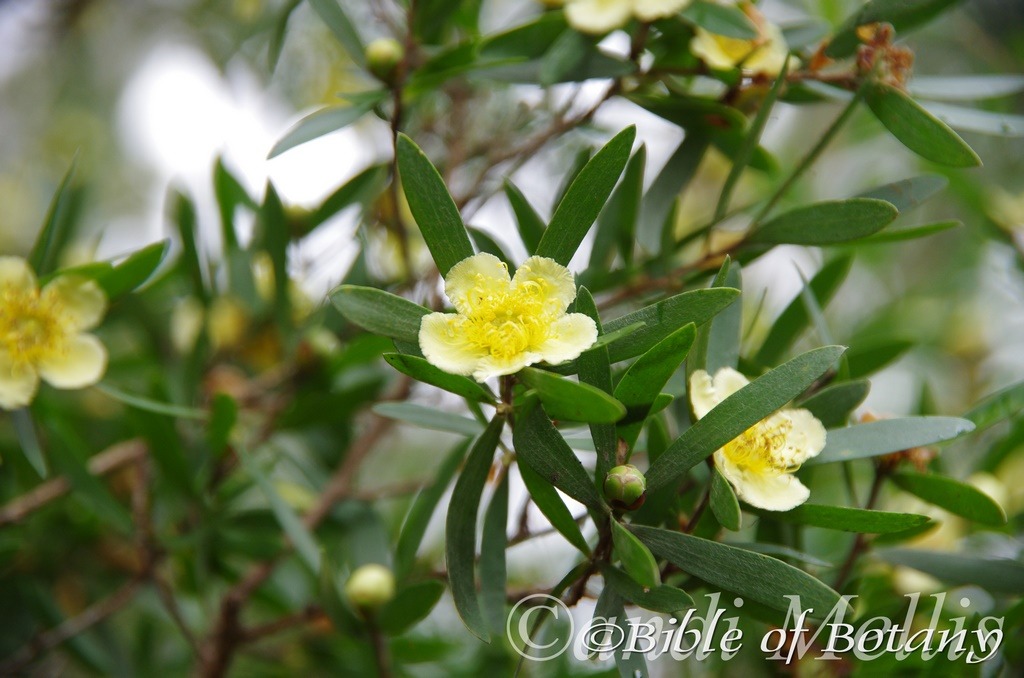
Mount Cootha Botanic Gardens Qld.
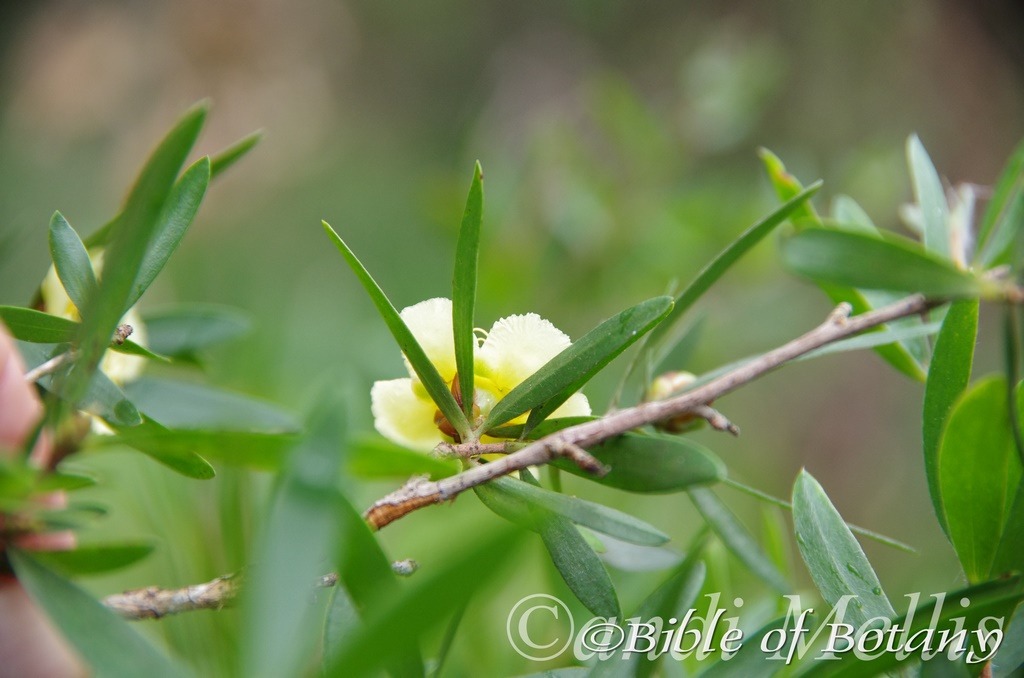
Mount Cootha Botanic Gardens Qld.

Mount Cootha Botanic Gardens Qld.
Neofabricia myrtifolia
Classification:
Unranked: Magnoliophyta
Class: Magnoliopsida
Sub Class: Rosidae
Order: Myrtales
Family: Myrtaceae
Subfamily: Myrtoideae
Tribe: Leptospermeae
Genus: From Neoa, which is Ancient Greek for new or recent and Fabrica, which is Latin for a society. It refers to plants, which are on the periphery of one genus but are separated from it.
Specie: From Múrtos, which is Ancient Greek for bitter or later Myrtus, which is Latin for the European Myrtle genus and Folium, which is Latin for foliage. It refers to leaves, which are similar to the European myrtles.
Sub species:
Common Name: Yellow Tea Tree or Black Tea Tree.
Distribution:
Neofabricia myrtifolia is a widespread species which is found south from Cape York Peninsula and the Torres Strait Island to Townsville and the off shore Islands.
https://avh.ala.org.au/occurrences/search?taxa=Neofabricia+myrtifolia#tab_mapView
Habitat Aspect Climate:
Neofabricia myrtifolia prefers light dappled shade to full shade. It grows in open forests, open Eucalyptus heaths, scrub forests and occasionally adjacent to rainforests. The altitude ranges from 5 meter ASL to 100 meters ASL.
The temperatures range from 8 degrees in August to 36 degrees in January.
The rainfall ranges from lows of 1600mm to an average of 3000mm.
Soil Requirements:
Neofabricia myrtifolia prefers sandy loams to medium clays. The soils are usually derived from decomposed basalts and better quality sandstones, shales, alluvial flats or accumulated coral sands. The soils pH. ranges from 5pH to 7.5pH. It does not tolerate waterlogged soils. Non saline soils to moderately saline soils are tolerated.
Height & Spread:
Wild Plants: 2m to 5m by 1.5m to 2.5m.
Characteristics:
Neofabricia myrtifolia grows as a medium shrub with mid grey to deep grey-brown trunk and vertical furrows. The bark is tight fibrous and flaky and is persistent on the trunk and lower branches thickening as the tree ages. The pale red-brown to purple-brown branchlets are glabrous to flaky. Newly emerging stems are purple-red in colour and are covered in silvery-white pannate hairs.
Neofabricia myrtifolia’s alternate to almost opposite, narrow elliptical-oblanceolate leaves, measure 35mm to 50mm in length by 7mm to 11mm in width. The bases are cuneate while the apexes are mucronate. The short petiole measures 1mm to 4mm in length. The concolourous laminas are olive-green to deep sea green. The new growth is red to purple-red initially and densely covered in soft silvery-white pannate hairs soon becoming glabrous and semi glossy. The margins are entire and slightly thickened. The mid vein is slightly prominent on the lower lamina and is just visible on the upper lamina.
The inflorescences of Neofabricia myrtifolia are born solitarily from the leaf axis and measure 22mm to 27mm in diameter. The pale green glabrous hypanthium measures 1.5mm to 2mm in length. The pedicels measure 1.5mm to 2mm in length. The 5 orbicular calyxes are pale green to cream tipped brown and measure 3.5mm to 4mm in length by 4.5mm to 5mm in width and are glabrous. The 5 pale yellow to deep yellow glabrous petals are broad orbicular and measure 9mm to 11mm in length by 8mm to 10mm in width.
The 20 pale yellow to deep yellow stamens are form a ring around the rim of the disc and measure 5mm to 7mm in length. They are fused to the inner rim of the hypanthia and have pale yellow to deep yellow anthers which measure 1mm in length. The yellow-green style is centrally located on the bright, glossy yellow-green disc and measures 4mm to 5mm in length. The flowers appear from April to early July.
Neofabricia myrtifolia’s fruit is a broad conical capsule. The 5 to 10 locular capsules measure 9mm to 11mm in length by 7mm to 8mm in diameter at the rim. The pale green capsules turn grey-brown on ripening. The valves are strongly exserted and spread as wide as the inner rim on the hypanthium. The seeds are red-brown.
Wildlife:
The flowers of Neofabricia myrtifolia are fed upon by numerous small butterflies, native bees Tetragonula carbonaria and the Blue banded bee Amegilla cingulata, native beetles, wasps and flies and small honey-eaters like the scarlet honey-eater, Myzomela sanguinolenta.
Cultivation:
Neofabricia myrtifolia are beautiful small trees or medium shrubs that grow particularly well in most sunny situations whether it is moist but not waterlogged. It has great potential in cultivation because of the wide range in climate, soils and fantastic flowering. It is suitable for small, medium and large gardens close to the coast or high in the mountains in temperate, sub-tropical, tropical or semi-arid gardens. As garden subjects they will grow from 1.5 meters to 2.5 meters by 1.5 meters to 3 meters wide as a shrub or 5m tall by 3 meters as a small tree.
It is cold tolerant to temperatures at least as low as minus 2 degrees once established. It can be lightly tip pruned if a small bushier shrub is required. It responds well to pruning and can be shaped to give a twisted gnarled appearance if required very easily.
It makes excellent hedges, screens and wildlife corridors because of their upright bushy growth habit and their abundance of flowers.
It is best used as a small park like trees, placed in the background or planted centrally as a small feature tree in small gardens surrounded by other small native shrubs. Placed at the rear of a bush garden their striking display of flowers will draw your attention so that you will want to investigate further. Plants with small red flowers and large or fine green leaves can be used in the mid ground while small red or yellow flowering prostrate shrubs can be used in the front. Whether It is in flower or not these trees will catch your attention because of the proliferation of flowers, and pale beautiful new growth of the foliage at other times of the year.
Use a single tree or scatter 3 or 4 around near old stumps and roots to make the stumps or roots look larger and more gnarled. The deep grey furrowed trunk will blend both the horizontal gnarled logs and stumps with the vertical furrows adding greater emphasis on the smooth exteriors of the stumps. To achieve this all the lower branches and stems must be pruned and some training of the trunk in the early stages maybe necessary to increase the visual effect of time. Sparingly use other plants when planting and remember that deserted beach scenes are rolling flat barren places, not steep hills so it is best to use a gentle slope or a basin with a small pool in the bottom comer if water is to be added. Do not use a waterfall or cascades as they will be very difficult to blend in and would look out of place. That is unless you are prepared to spend years training the plant to grow horizontally over the cascade or waterfall in which case it would prove very dominant and impressive.
When using this plant as a feature only grow small plants that do not reach more than 1 meter in height and have a compact habit with either blue-grey or pale grass green leaves, but be careful that these plants do not steal the limelight in such a scenario. Use them sparingly. Annuals and perennials would really compliment a barren scene as would small ground covers and procumbent plants. Try Boronia specie, Grevillea specie, Hovea specie, Pultenaea specie, Hibertia linearis, Hibertia obtusifolia, Hibbertia scandens or any other small compact native. Select an area of ground and let your hair down and be imaginative but remember it is the trunk, the stumps or rocks that are the feature and the very small ground covers add the extra textures so pleasing to the eye.
It is also very good bonsai plants where it is very effective when highlighting the gnarled trunk.
Propagation:
Seeds: Neofabricia myrtifolia seeds can be sown directly into a seed raising mix. Cover the seeds with 15mm to 20mm of fine weed free mulch and keep moist. Place the tray in a warm sunny position keeping it moist not wet. When the seedlings are 20mm to 30mm tall, prick them out and plant them into 50mm native tubes using a good organic mix.
Once the seedlings reach 100mm to 150mm in height they can be planted out into their permanent position.
Cuttings: Fortunately Neofabricia myrtifolia is relatively easy strike from cuttings so get in and give it a go.
Use 100mm to 200mm long tip cuttings or lateral shoots from the present season’s growth that have just hardened off. Take them in warmer months of the year. Remove half the leaves from the bottom section being careful not to tear the bark.
1 Prepare the cutting mix by adding two thirds sharp clean river sand, one third peat or one third perlite. These ingredients must be sterilized,
2 Select good material from non diseased plants,
3 Select semi green stems for cuttings. Look for a stem with two or three nodes,
4 Place the cutting on a flat, hard surface, and make a clean cut down one side of the cutting at the base for 10mm with a sharp sterile knife or razor blade. – This scarification of the node will increase the chances of roots emerging from this spot. Now remove all but one or two the leaves, leaving the apex leaves in tact. If the leaves are very large in proportion to the stem, cut off the apical halves.
5 Fill a saucer with water, and place a little medium strength rooting hormone into another container like a milk bottle top. Dip the node end of the cutting into the water and then into the rooting hormone. Tap off any excess hormone,
6 Use a small dipple stick or old pencil to poke a hole into the soilless potting mix. Ensure the hole is slightly larger than the stem diameter and be careful not to wipe the rooting hormone off the cuttings base. Place 2 to 4 cuttings in each of the 50mm native tubes,
7 I like to place the tubes in bucket with holes drilled in the bottom to allow excess water to drain out. A plastic bag that fits over the bucket is ideal to help maintain temperature and moisture. Place in a semi shaded, warm position like under 50mm shade cloth.
8 When the cuttings have struck, open the bag to allow air circulation for a few days to a week,
9 Once hardened off remove the cuttings from the bag and allow to further hardening for a few more days to a week,
10 Transplant into a good potting mix to grow on.
Fertilize using seaweed, fish emulsion or organic chicken pellets soaked in water on an alternate basis. Fertilize every two months until the plants are established then twice annually in early September or March to maintain health, vitality and better flowering.
Further Comments from Readers:
Hi reader, it seems you use The Bible of Botany a lot. That’s great as we have great pleasure in bringing it to you! It’s a little awkward for us to ask, but our first aim is to purchase land approximately 1,600 hectares to link several parcels of N.P. into one at The Pinnacles NSW Australia, but we need your help. We’re not salespeople. We’re amateur botanists who have dedicated over 30 years to saving the environment in a practical way. We depend on donations to reach our goal. If you donate just $5, the price of your coffee this Sunday, We can help to keep the planet alive in a real way and continue to bring you regular updates and features on Australian plants all in one Botanical Bible. Any support is greatly appreciated. Thank you.
In the spirit of reconciliation we acknowledge the Bundjalung, Gumbaynggirr and Yaegl and all aboriginal nations throughout Australia and their connections to land, sea and community. We pay our respect to their Elders past, present and future for the pleasures we have gained.
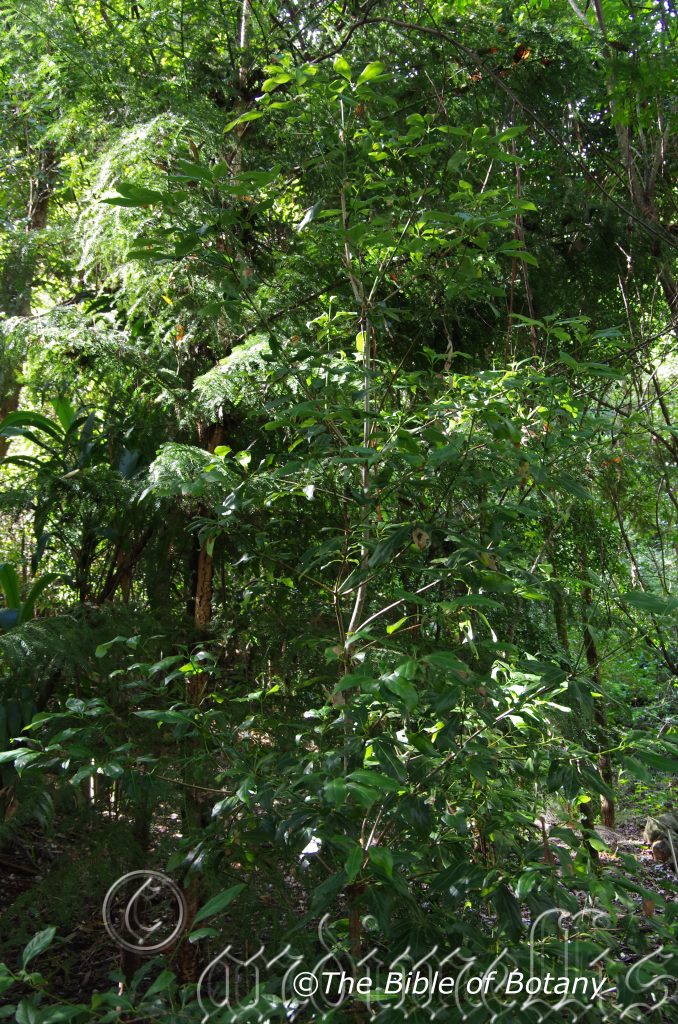
LBG Lismore NSW
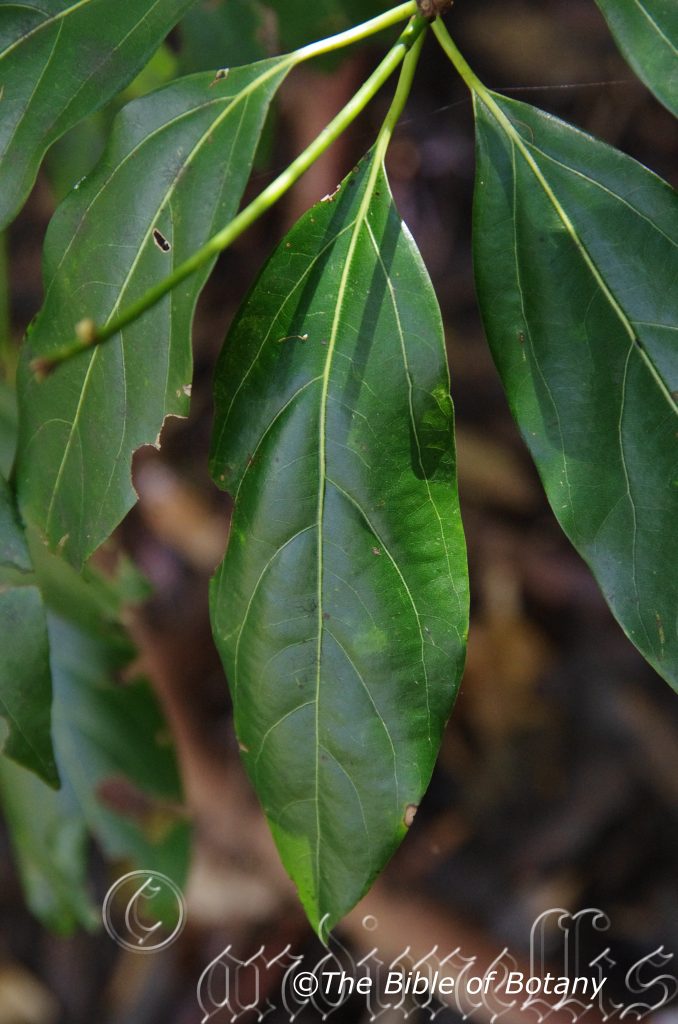
LBG Lismore NSW
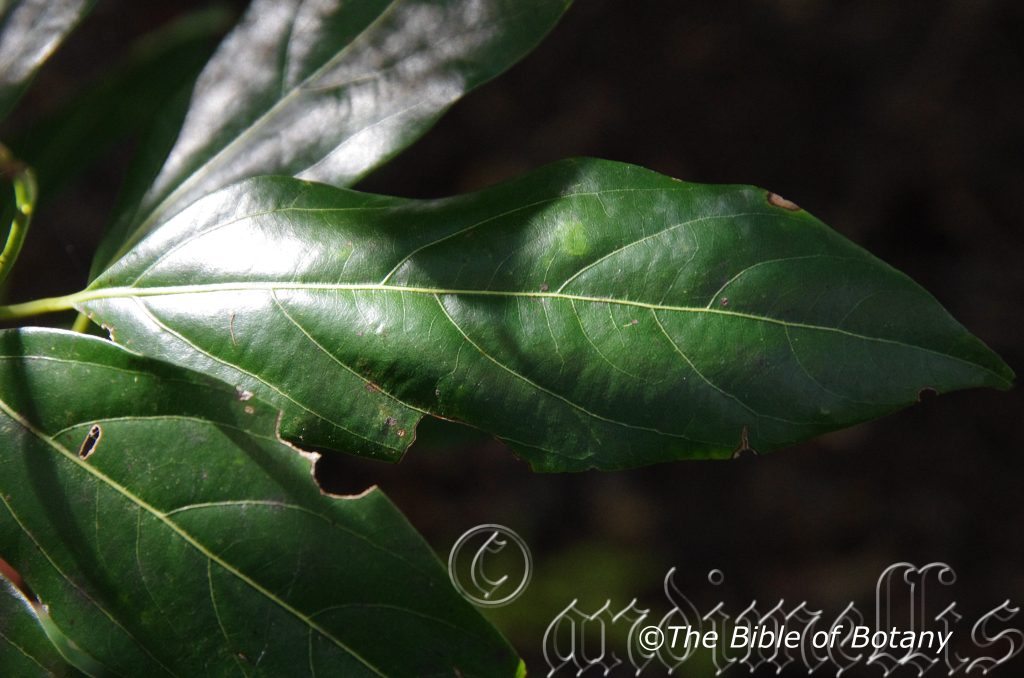
LBG Lismore NSW
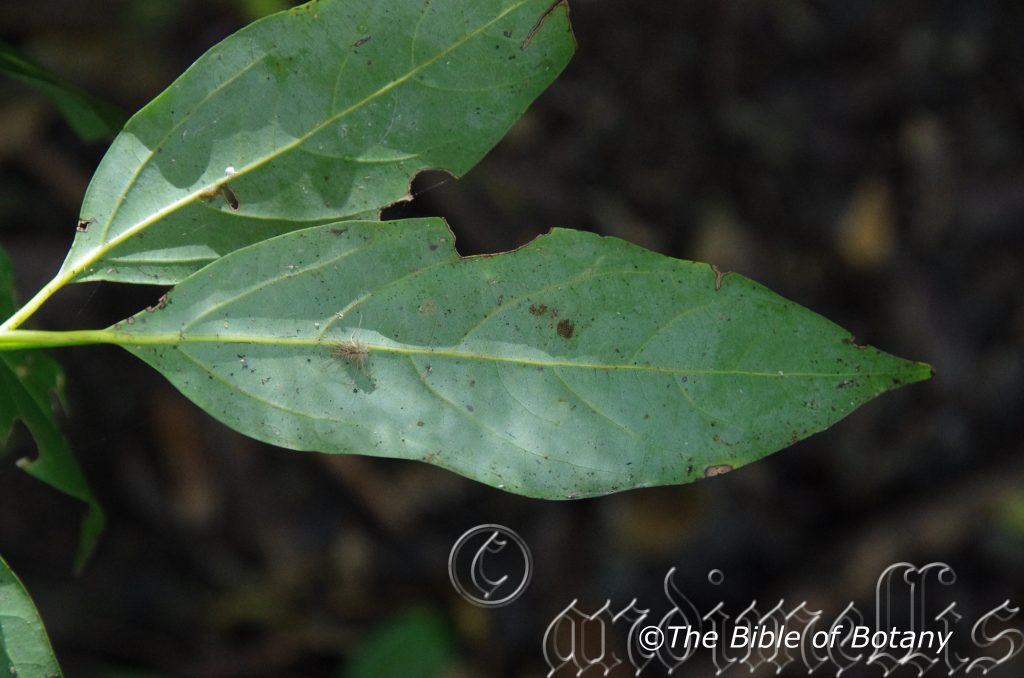
LBG Lismore NSW
Neolitsea australiensis
Classification:
Unranked: Magnoliids
Order: Laurales
Family: Lauraceae
Genus: From Neoa, which is Ancient Greek for new or recent, Li, which is Latinized from the Chinese word for small and xiao小 for small. However from my association with Chinese (My wife and working in China) I would consider that Li丽is Chinese for pretty or beautiful; unless the word has been taken from a, minority dialect, and Se色could be for colour or Se 涩not smooth or astringent to taste. It could refer to the beautiful patchwork bark with mosses and lichens found on wild trees or from the original named species Litsea chinensis or Litsea cubeda, which have beautiful pale yellow flowers, coupled with a magnificent scent of which I believe the latter is more accurate. If it is from small it may refer to the beautiful faint scent on the small flowers.
Specie: From Terra Australis, which is Latin for land of the south. It refers to plants, which were first discovered from the land down under.
Sub species:
Common Name: Green Bolly Gum.
Distribution:
Neolitsea australiensis is a widespread species which is found in at several disjunct locations in New South Wales, Queensland and the Northern Territory.
It is found on Melville Bathurst Island and in the Litchfield National Park in the far north west of the Northern Territory.
In the east it is found in several disjunct populations south from Cooktown in far north eastern Queensland to Ourimbah Forest in north eastern New South Wales. It is mainly found on the Western Slopes, on and east of the Great Dividing Range to the coast.
https://avh.ala.org.au/occurrences/search?taxa=Neolitsea+australiensis#tab_mapView
Habitat Aspect Climate:
Neolitsea australiensis prefers light dappled shade to full shade. It grows along creeks alluvial plains in most types of rainforests. It is found where there is a break in the canopy. The altitude ranges from 10 meter ASL to 1150 meters ASL.
The temperatures range from minus 4 degrees in August to 40 degrees in January.
The rainfall ranges from lows of 800mm to an average of 3000mm.
Soil Requirements:
Neolitsea australiensis prefers sandy loams to medium clays. The soils are usually derived from decomposed basalts and better quality sandstones, shale or alluvial flats. The soils pH. ranges from 5.5pH to 7pH. It tolerates seasonal inundations for short periods. Non saline soils to moderately saline soils are tolerated.
Height & Spread:
Wild Plants: 8m to 15m by 3m to 5m.
Characteristics:
Neolitsea australiensis’s trunk is grey and glabrous. Branches are mid olive-green to deep sea green and glabrous. New growth is a paler green, covered in fine lenticels and covered in pale brown scales towards the apex.
Neolitsea australiensis’s simple ovate to elliptical leaves measure 65mm to 130mm in length by 20mm to 60mm in width. The glabrous petioles measure 15mm to 25mm in length. The bases are broad cuneate while the apexes are acute to broadly acuminate. The discolourous laminas are deep sea green, dull to semi glossy and glabrous while the lower lamina is glaucous-green to deep sea green. Juvenile leaves are pale pink-purple to mushroom pink and densely covered in short white to fawn sericeous hairs. The margins are entire and flat. The mid vein is strongly prominent on the lower lamina and slightly prominent on the upper lamina. There are 2 main lateral veins which are also prominent on the lower lamina.
The inflorescence of Neolitsea australiensis is a simple umbel born from the upper leaf axils and old leaf scars. The peduncle is sparsely covered in short fawn hirsute hairs. The peduncle measures 2mm to 4mm in length. The pedicel is glabrous and measures 6mm to 10mm in length. There are 6 to 10 individual flowers to an umbel. The 4 or 5 lanceolate calyx lobes are covered in short fawn sericeous hairs and measure 2.5mm to 3mm in length. The single locule ovary and perianth are glabrous. The 5 white to cream stamens measure 2mm to 2.5mm in length while the white to cream style measures less than 2.5mm to 3mm in length. The sweetly scented flowers appear from December to February.
Neolitsea australiensis’s fruit is a small round drupe. The hard green drupes turn black on ripening. They measure 9mm to 10mm in diameter and ripen from May to June. The calyx lobes are persistent at the base of the drupes. The flesh surrounding the seeds is purple. The pale fawn ovoid seeds measure 6mm to 7mm in diameter.
Wildlife:
Neolitsea australiensis relies upon Bower Birds, Cat Birds, Fig Birds and fruit eating pigeons to spread its seeds. The trees leaves are frequently damaged by unknown butterfly larvae.
The fruits are edible for those with discerning taste buds. In other words they taste ghastly but palatable when you are hungry.
Cultivation:
Neolitsea australiensis makes an excellent plant for very shady areas and as an addition to the under-story in a rainforests or when starting a small rain forest garden. This is an erect usually single stemmed small tree with attractive pale black fruits which will attract many birds to the garden in late autumn and winter. It is very suitable on sandy to heavy clay soils and are most suitable for small, medium and large gardens close to the coast in warm temperate, sub-tropical, tropical and would be worthwhile trying in semi-arid gardens. As garden subjects they will grow from 7 meters to 9 meters in height by 5 meters to 6 meters in diameter when grown in the open. It is cold tolerant to temperatures at least as low as minus 3 degrees once established.
It is most suitable for use around semi shaded swimming pools, courtyards, besides pathways, shady rockeries, along sandy clay banks or along drive ways or adjacent to natural bush gardens. Remember that they will drop some leaf. Mass plantings of 5 or more plants even in small areas; really do the plants justification especially when it is in flower and pruned to promote bushier multi-trunk trees. If it is not pruned it will develop the single stem of their wild parents. When mass planted the black fruits will hang for a long time and will attract a continuous foray of native birds to the garden.
Planted within a rainforest the perfume from the flowers will drift below the canopy. The perfume from the flowers is subtle and sweet. If it is grown for their scent then trimming in the early stages will promote a more dense plant with branching closer to the ground.
It is suitable for growing most small epiphytic ferns and orchids on.
Propagation:
Neolitsea australiensis seeds can be sown directly into a seed raising mix once the weather warms up. Cover the seeds with 5mm to 10mm of fine weed free mulch and keep moist. Place the tray in a warm sunny position. When the seedlings are 30mm to 50mm tall, prick them out and plant them into 50mm native tubes using a good organic mix.
Once the seedlings reach 100mm to 150mm in height they can be planted out into their permanent position.
Fertilize using seaweed, fish emulsion or organic chicken pellets soaked in water on an alternate basis. Fertilize every two months until the plants are established then twice annually in early September or March to maintain better health, vitality and flowering.
Further Comments from Readers:
Hi reader, it seems you use The Bible of Botany a lot. That’s great as we have great pleasure in bringing it to you! It’s a little awkward for us to ask, but our first aim is to purchase land approximately 1,600 hectares to link several parcels of N.P. into one at The Pinnacles NSW Australia, but we need your help. We’re not salespeople. We’re amateur botanists who have dedicated over 30 years to saving the environment in a practical way. We depend on donations to reach our goal. If you donate just $5, the price of your coffee this Sunday, We can help to keep the planet alive in a real way and continue to bring you regular updates and features on Australian plants all in one Botanical Bible. Any support is greatly appreciated. Thank you.
In the spirit of reconciliation we acknowledge the Bundjalung, Gumbaynggirr and Yaegl and all aboriginal nations throughout Australia and their connections to land, sea and community. We pay our respect to their Elders past, present and future for the pleasures we have gained.
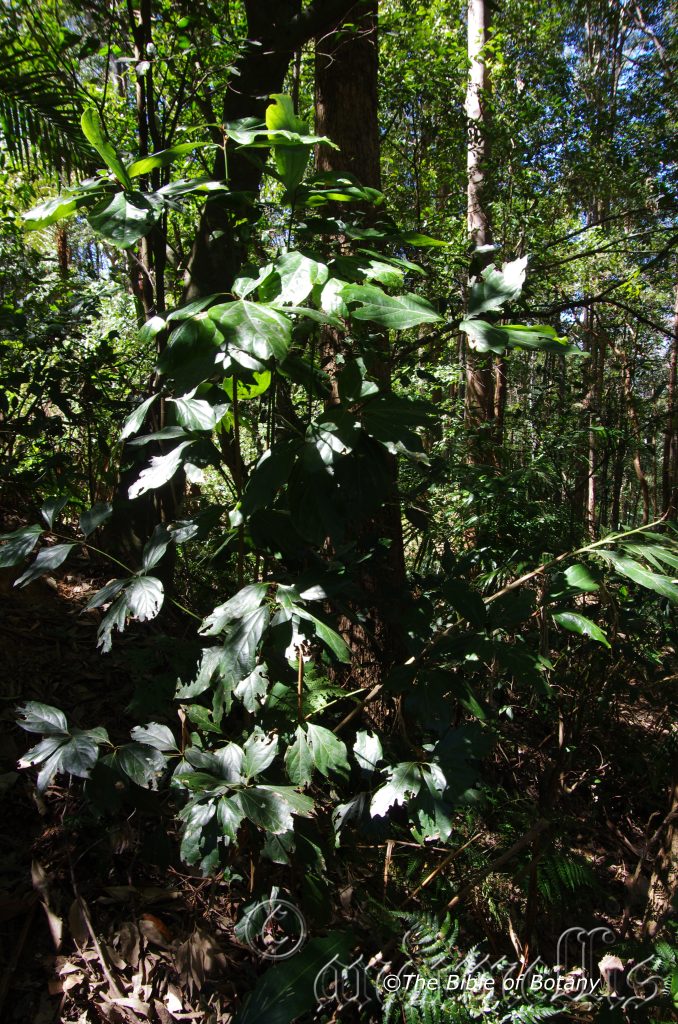
Washpool National Park NSW
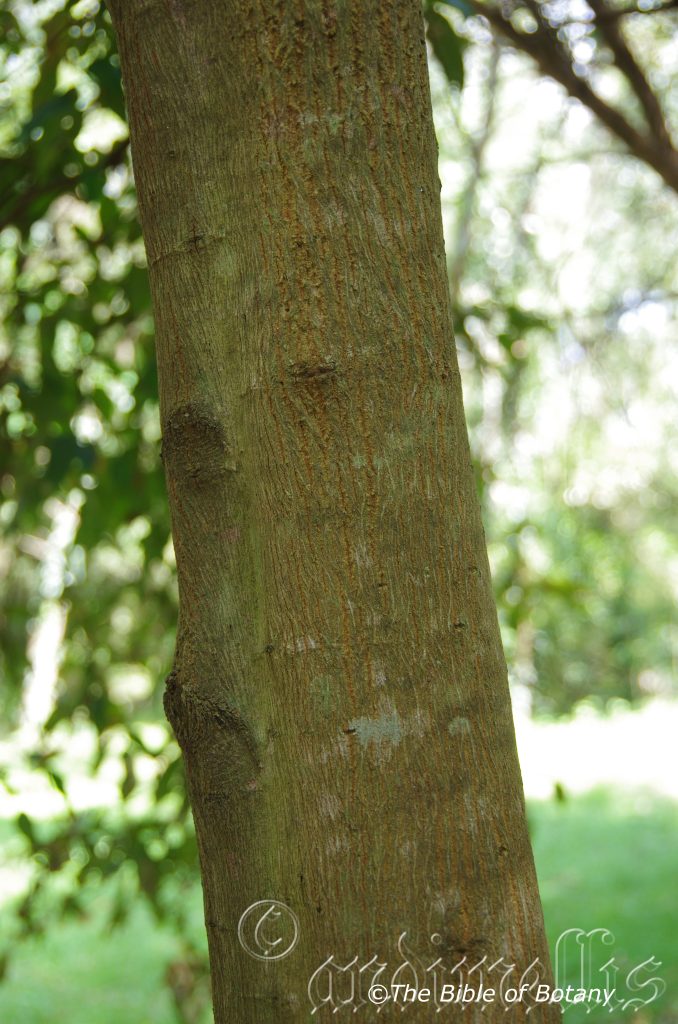
South Grafton NSW
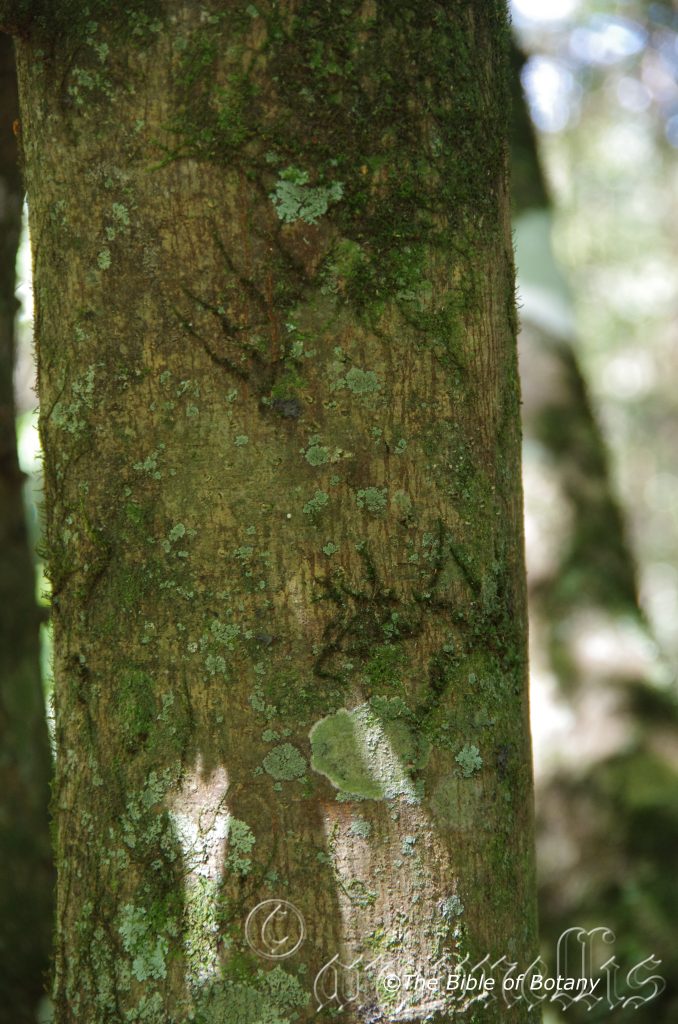
Washpool National Park NSW
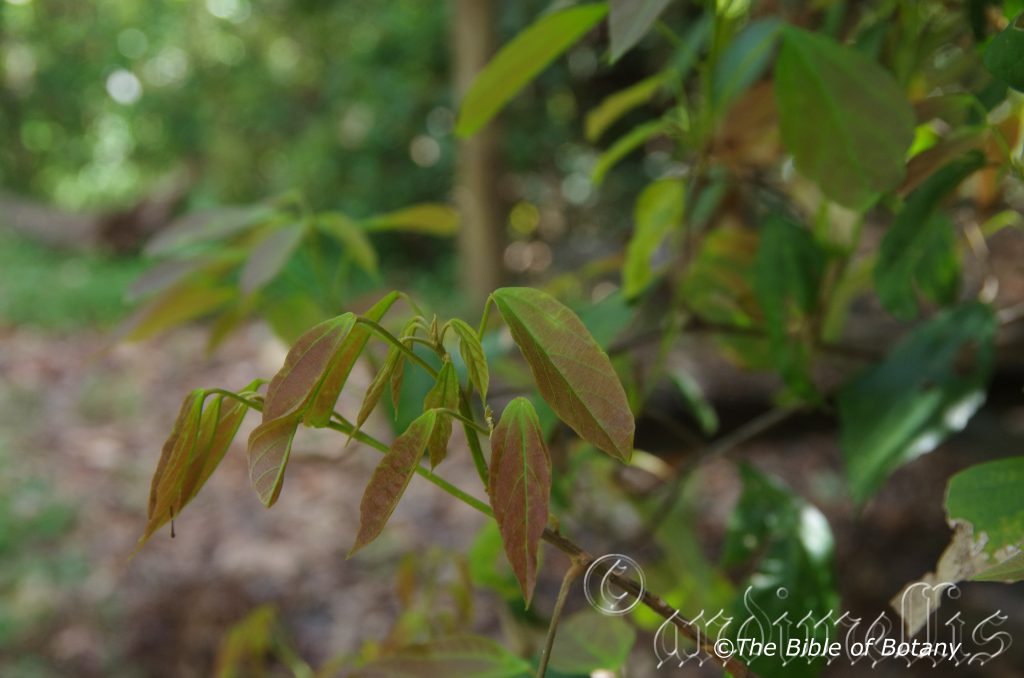
South Grafton NSW
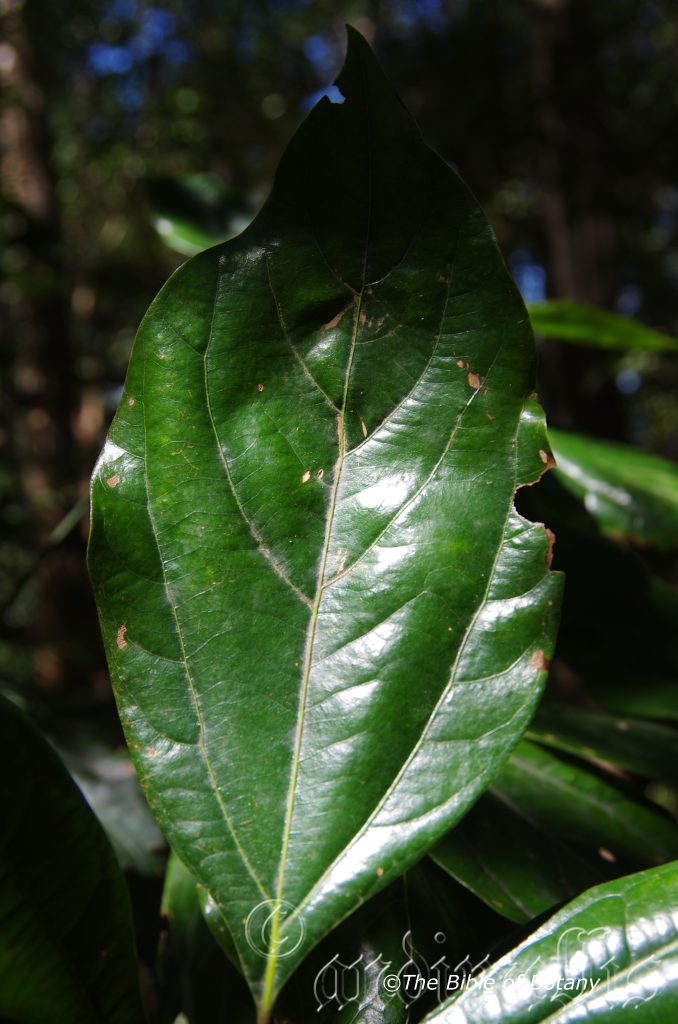
Washpool National Park NSW
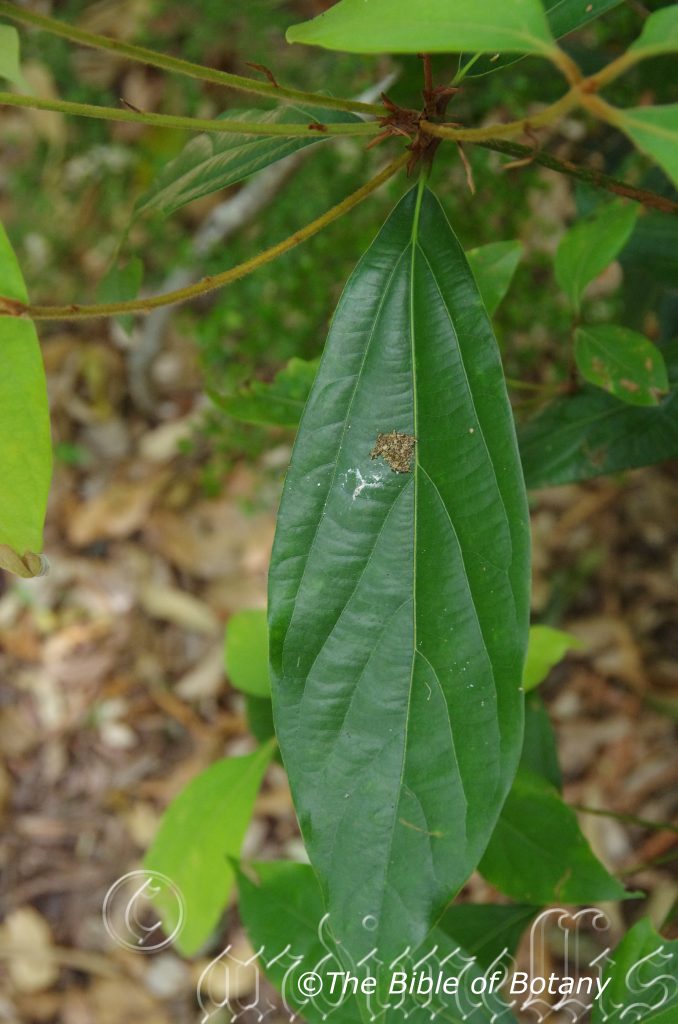
NCBG Coffs Harbour NSW
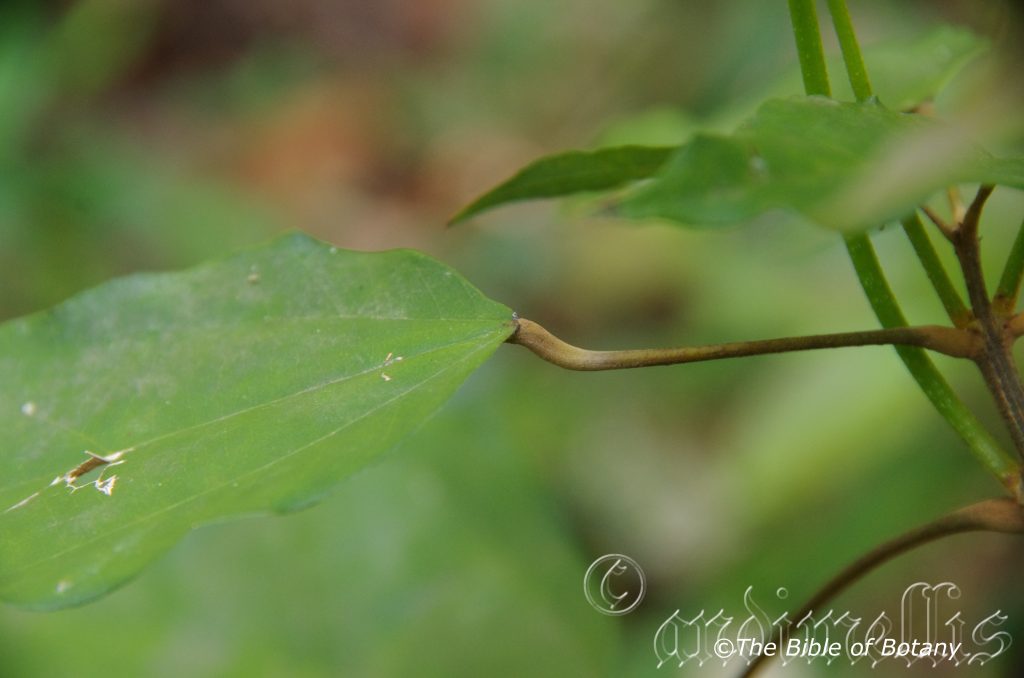
South Grafton NSW
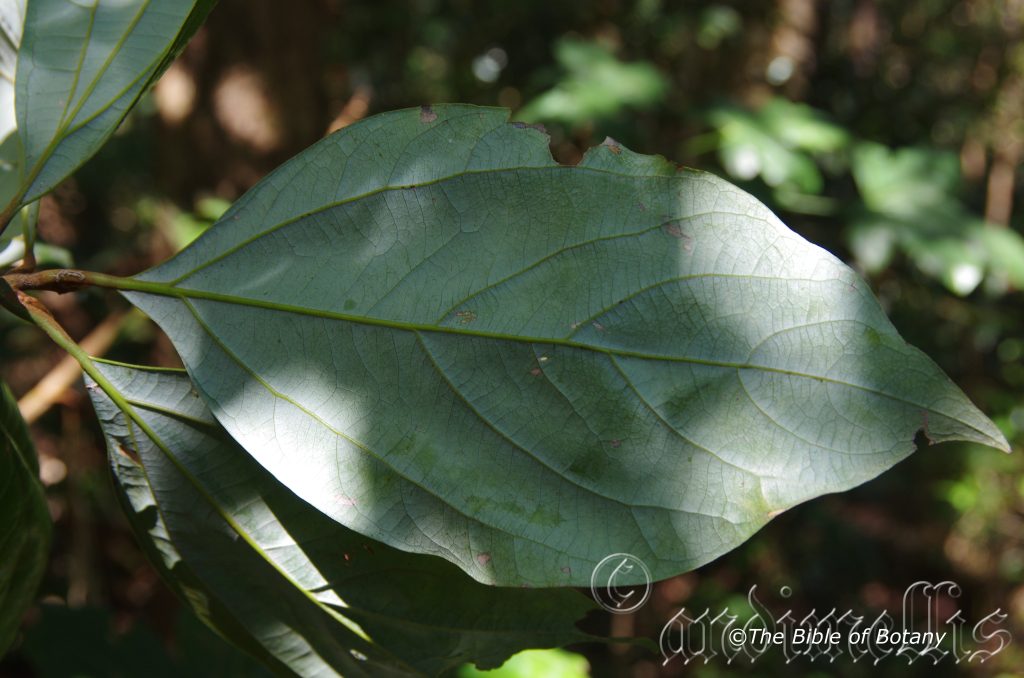
Washpool National Park NSW
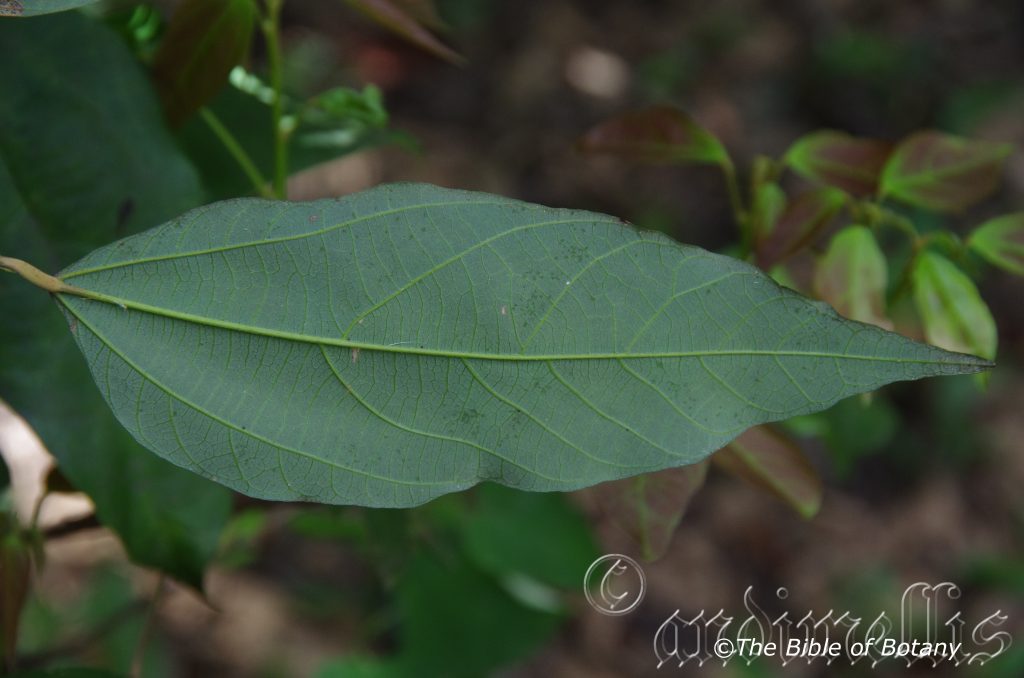
South Grafton NSW
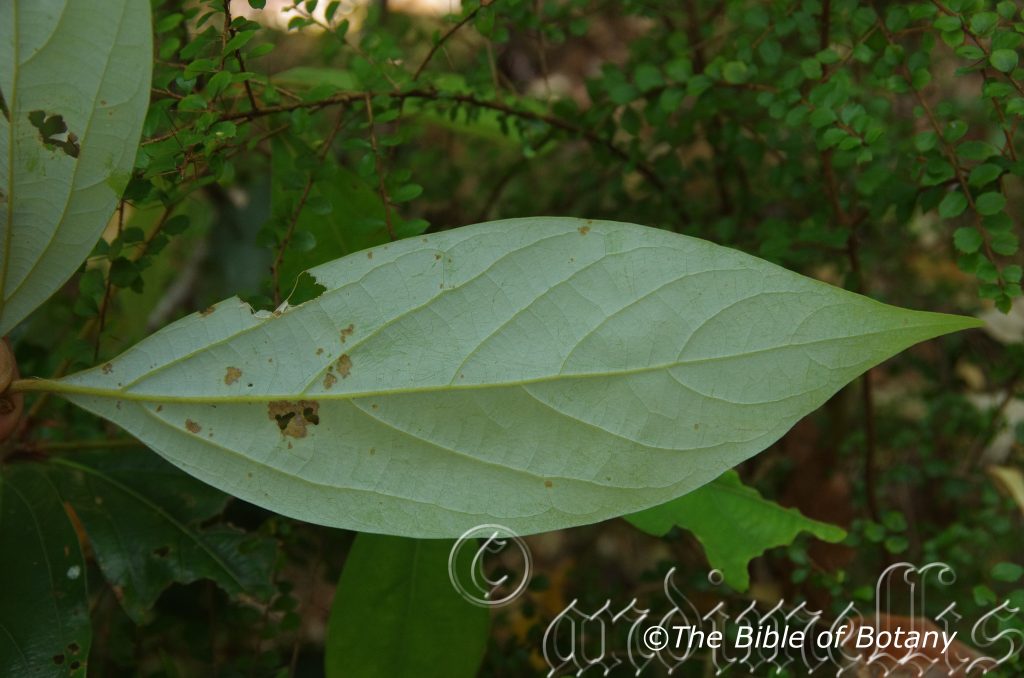
NCBG Coffs Harbour NSW
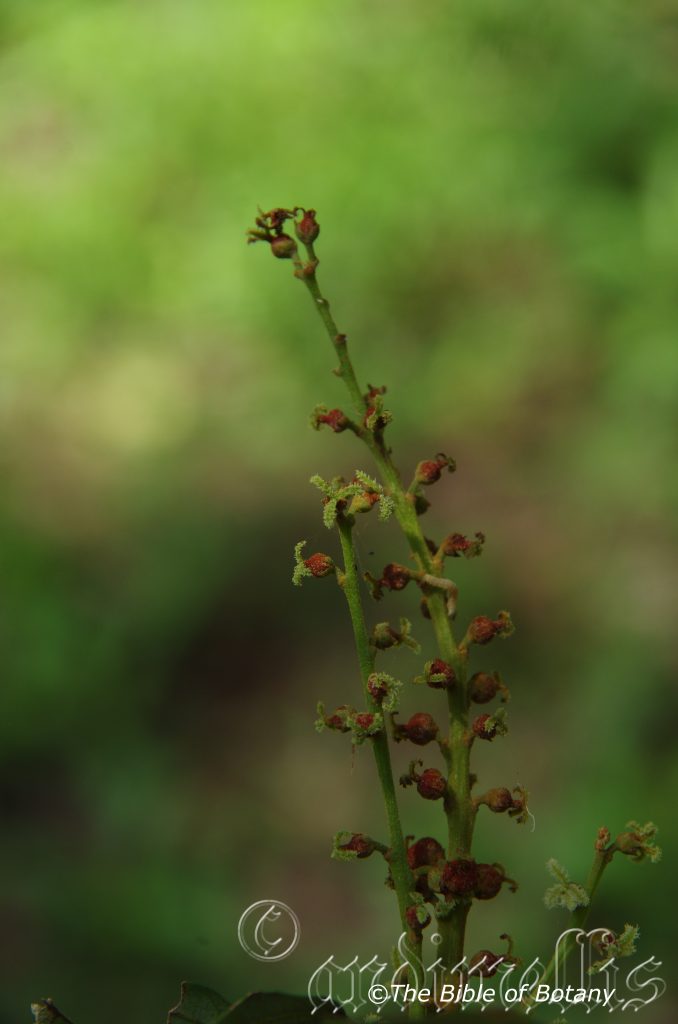
South Grafton NSW
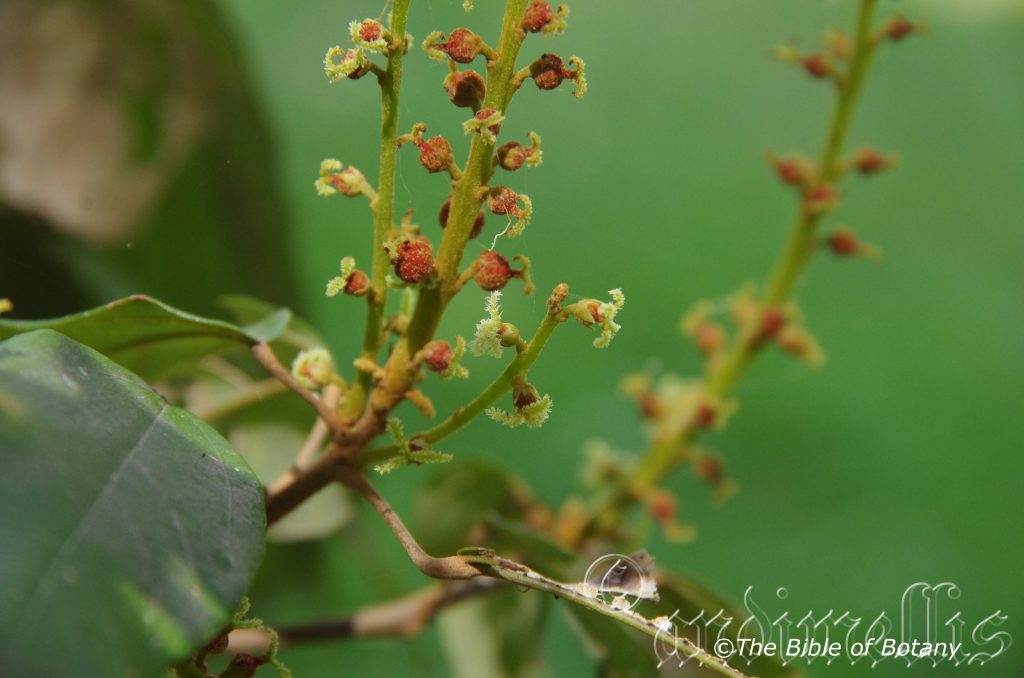
South Grafton NSW
Neolitsea dealbata
Classification:
Unranked: Magnoliids
Order: Laurales
Family: Lauraceae
Genus: From Neoa, which is Ancient Greek for new or recent, Li, which is Latinized from the Chinese word for small and xiao小 for small. However from my association with Chinese (My wife and working in China) I would consider that Li丽is Chinese for pretty or beautiful; unless the word has been taken from a, minority dialect, and Se色could be for colour or Se 涩not smooth or astringent to taste. It could refer to the beautiful patchwork bark with mosses and lichens found on wild trees or from the original named species Litsea chinensis or Litsea cubeda, which have beautiful pale yellow flowers, coupled with a magnificent scent of which I believe the latter is more accurate. If it is from small it may refer to the beautiful faint scent on the small flowers.
Specie: From Dealbata, which is Latin for white wash. It refers to the underside of the leaves having the appearance of being whitish or white washed in lime.
Sub species:
Common Name: Hairy Bolly Gum or Hairy Leaf Bolly Gum.
Distribution:
Neolitsea dealbata is a widespread species which is found in several disjunct populations south from Cape York Peninsula in north eastern Queensland to the Illawarra district in New South Wales. It is only found on and the Great Dividing Range to the coast.
https://avh.ala.org.au/occurrences/search?taxa=Neolitsea+dealbata#tab_mapView
Habitat Aspect Climate:
Neolitsea dealbata prefers light dappled shade to full shade. It grows along creeks alluvial plains in most types of rainforests. It is found where there is a break in the canopy. The altitude ranges from 5 meter ASL to 1100 meters ASL.
The temperatures range from minus 4 degrees in August to 38 degrees in January.
The rainfall ranges from lows of 800mm to an average of 3200mm.
Soil Requirements:
Neolitsea dealbata prefers better quality sandy loams to medium clays. The soils are usually derived from decomposed basalts, better quality sandstones, shale or alluvial deposits. The soils pH. ranges from 5pH to 6.5pH. It does not tolerate waterlogged soils. Non saline soils to moderately saline soils are tolerated.
Height & Spread:
Wild Plants: 8m to 12m by 3m to 5m.
Characteristics:
Neolitsea dealbata grows as a small tree with glabrous, grey trunk. Branchlets are mid olive-green to deep sea green and glabrous. New growth is a paler green, covered in fine lenticels and covered in pale brown sericeous hairs close to the apex.
Neolitsea dealbata’s simple elliptical to obovate leaves measure 70mm to 180mm in length by 25mm to 80mm in width. The glabrous petioles measure 10mm to 15mm in length. The bases are broad cuneate to rounded while the apexes are acuminate to broadly acuminate. The discolourous laminas are glabrous, glossy and deep sea green on the upper lamina while the lower lamina is glaucous with scattered fawn sericeous hairs. Juvenile leaves are pale salmon pink to mushroom pink and densely covered in short, soft, white to fawn sericeous hairs. The margins are entire. The mid vein and two main lateral veins are strongly prominent on the lower lamina and slightly prominent on the upper lamina. The veins are sparsely covered in fawn to pale rusty-brown tomentose hairs.
The inflorescence of Neolitsea dealbata is a simple umbel born from the upper leaf axils and old leaf scars. The peduncle and pedicel are sparsely covered in short fawn to rusty-brown hirsute hairs The peduncle measures 1mm to 2mm in length while the pedicels measure 2mm to 4mm in length. There are 6 to 10 individual flowers to an umbel. The 4 or 5 fawn lanceolate calyx lobes are covered in short fawn sericeous hairs and measure 2.5mm to 3mm in length. The 5 inserted obcordate petals are glabrous and cream to pale yellow in colour and measure less than 1mm in diameter. The single locule ovary and perianth are glabrous. The 5 cream to pale yellow stamens measure 2mm to 2.5mm in length while the white to cream styles measure less than 2.5mm to 3mm in length. The sweetly scented flowers appear from December to February.
Neolitsea dealbata’s fruit is a small round drupe. The hard green drupes turn black on ripening. They measure 9mm to 10mm in diameter and ripen from April to June. The calyx lobes and perianth are persistent at the base of the drupes. The flesh surrounding the seeds is deep purple-black. The pale fawn ovoid seeds measure 6mm to 7mm in diameter.
Wildlife:
Neolitsea dealbata relies upon Bower Birds, Cat Birds, Fig Birds, Fruit eating pigeons and medium size honey-eaters like the Lewin’s Honey-eater for seed dispersal. The trees leaves are frequently damaged by unknown butterfly larvae.
The fruits are edible for those with discerning taste buds. In other words they taste ghastly but palatable when you are hungry.
Cultivation:
Neolitsea dealbata makes an excellent plant for very shady areas and as an addition to the under-story in a rainforests or when starting a small rainforest garden. It always look green and fresh especially where adequate ground moisture is retained whether it is grown in light shade or dense shade. It is very suitable on sandy to heavy clay soils and are most suitable for small, medium and large gardens close to the coast in warm temperate, subtropical, tropical gardens. They would be worthwhile trying in semi-arid gardens. As garden subjects they will grow from 6 meters to 9 meters in height by 5 meters to 6 meters in diameter when grown in the open.
It is cold tolerant to temperatures at least as low as minus 4 degrees once established.
It is most suitable for use as a back drop to provide shaded around swimming pools, shady courtyards, besides pathways, shady rockeries, along sandy clay banks or along drive ways or adjacent to natural bush gardens. Mass plantings of 5 or more plants even in small areas; really do the plants justification especially when it is in flower and pruned to promote bushier multi-trunk trees. If it is not pruned it will develop the single stem of its wild parents. When mass planted the black fruits will hang for a long time and will attract a continuous foray of native birds to the garden.
Planted within a rainforest the perfume from the flowers will drift below the canopy. The perfume from the flowers is subtle and sweet. If it is grown for their scent then trimming in the early stages will promote a more dense plant with branching closer to the ground.
It is ideal plants for growing epiphytic ferns and orchids on while the trunks will develop a multitude of lichens when grown in the shade.
Propagation: Neolitsea dealbata seeds can be sown directly into a seed raising mix once the weather warms up. Cover the seeds with 5mm to 10mm of fine weed free mulch and keep moist. Place the tray in a warm sunny position. When the seedlings are 30mm to 50mm tall, prick them out and plant them into 50mm native tubes using a good organic mix.
Once the seedlings reach 100mm to 150mm in height they can be planted out into their permanent position.
Fertilize using seaweed, fish emulsion or organic chicken pellets soaked in water on an alternate basis. Fertilize every two months until the plants are established then twice annually in early September or March to maintain better health, vitality and flowering.
Further Comments from Readers:
Hi reader, it seems you use The Bible of Botany a lot. That’s great as we have great pleasure in bringing it to you! It’s a little awkward for us to ask, but our first aim is to purchase land approximately 1,600 hectares to link several parcels of N.P. into one at The Pinnacles NSW Australia, but we need your help. We’re not salespeople. We’re amateur botanists who have dedicated over 30 years to saving the environment in a practical way. We depend on donations to reach our goal. If you donate just $5, the price of your coffee this Sunday, We can help to keep the planet alive in a real way and continue to bring you regular updates and features on Australian plants all in one Botanical Bible. Any support is greatly appreciated. Thank you.
In the spirit of reconciliation we acknowledge the Bundjalung, Gumbaynggirr and Yaegl and all aboriginal nations throughout Australia and their connections to land, sea and community. We pay our respect to their Elders past, present and future for the pleasures we have gained.
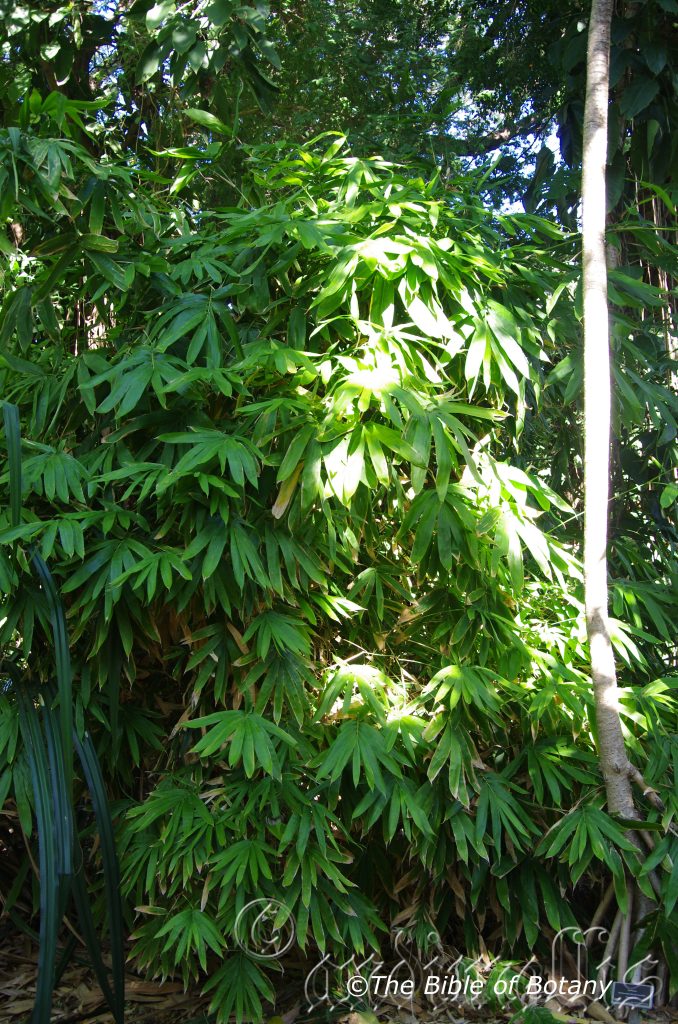
Anderson Botanic Gardens Townsville Qld.
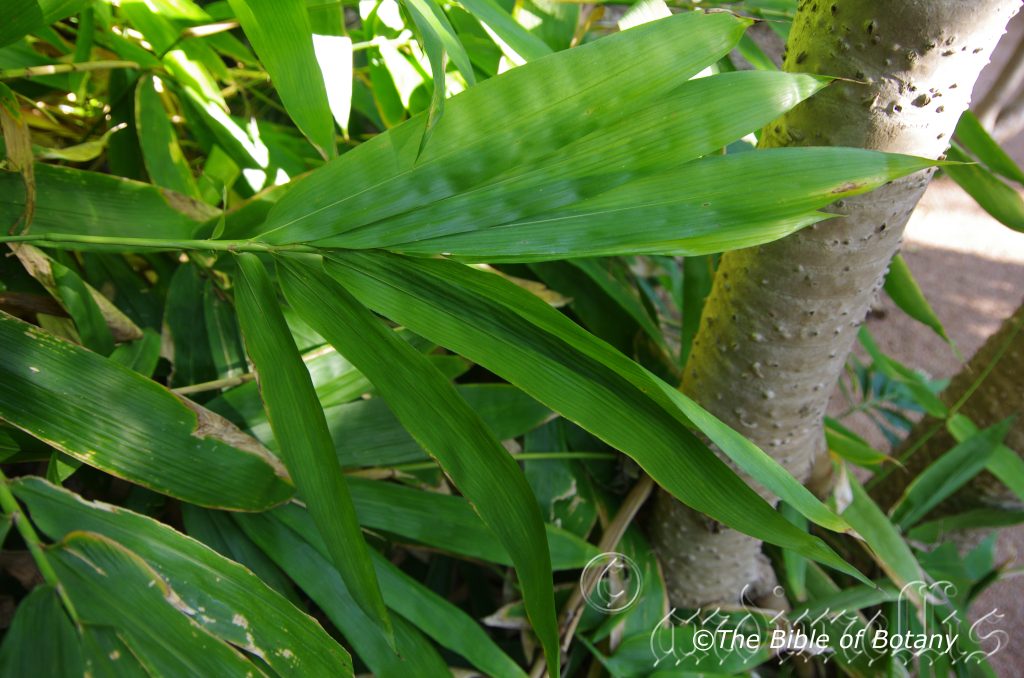
Anderson Botanic Gardens Townsville Qld.
Neololeba atra
Classification:
Phylum: Monocots
Class: commelinids
Order: Poales
Family: Poaceae
Genus: From Neo/a, which is Ancient Greek for new or recent, Loleba, which is Latinized probably for a local vernacular for the plant and a small village where the original specimens were located.
Specie: From ātra, which is Latin for a fire. It refers to the dead canes, which were extensively used and are good for starting fires even in the humid weather of New Guinee.
Sub species:
Common Name: Clump Bamboo, Black Bamboo or Bamboo.
Distribution:
Neololeba atra is found south from the top of Cape York Peninsula to Keating Creek in far north eastern Queensland.
It is also found in the Bismarck Archipelago, Maluku, Papua, New Guinea, Philippines, the Sulawesi Islands and East Timor.
https://avh.ala.org.au/occurrences/search?taxa=Neololeba+atra#tab_mapView
Habitat Aspect Climate:
Neololeba atra prefers light dappled shade to full sun. It grows above littoral rainforests in coastal rainforests, gallery rainforests, vine thickets, and moist Eucalyptus forests. The altitude ranges from 5 meter ASL to 200 meters ASL.
The temperatures range from 8 degrees in August to 40 degrees in January.
The rainfall ranges from lows of 2000mm to an average of 3200mm.
Soil Requirements:
Neololeba atra prefers better quality loams to medium clays. The soils are usually derived from decomposed black basalts, granite or alluvial deposits. The soils pH. ranges from 5pH to 6.5pH. It does not tolerate waterlogged soils but . Non saline soils to moderately saline soils are tolerated.
Height & Spread:
Wild Plants: 6m to 7m by 2m to 4m in diameter.
Characteristics:
Neololeba atra grows as a small clump, bamboo with smooth, green culms. The culms measure 6 metres to 7 meters in height by 20mm to 42mm in diameter.
Neololeba atra’s oblong leaves measure 280mm to 350mm by 60mm to 75mm in width. The bases are rounded to somewhat asymmetrical, while the apexes are long acuminate. The concolourous leaves are semi glossy and deep green. The laminas are flat, while the margins have minute teeth. The mid vein is slightly prominent on the lower lamina and clearly visible on the upper lamina, while 6 to 8 the parallel lateral veins either side of the main vein are clearly visible.
The inflorescence of Neololeba atra are many branched and measure 500mm to 1100mm in length. The spikelets are produced in tufts at the nodes and decrease in size as they approach the apex. The flat spikelets measure 8mm to 12mm in length. The anthers measure 4mm to 5mm length, while the ovary gradually tapers into a flat style with 3 stigmas.
Wildlife:
Neololeba atra’s wildlife is unknown to the author.
Cultivation:
Neololeba atra makes an excellent starter plant in a suburban rainforest garden. It always looks green and fresh especially where adequate ground moisture is retained whether it is grown in light shade or full sun. It is very suitable on sandy to heavy clay soils and are most suitable for small, medium and large gardens close to the coast in warm temperate, sub-tropical, tropical gardens where frosts are not a problem. It would also be worthwhile trying it in semi-arid gardens away from the coast near septic trenches or where house hold water is channelled. As garden subjects it grows from 12 meters to 16 meters in height by 6 meters to 9 meters in diameter when grown in the open.
It is most suitable for use as a back drop to provide shaded around swimming pools, shady courtyards, besides pathways, shady rockeries, along sandy clay banks or along drive ways or adjacent to natural bush gardens. Mass plantings of 5 or more plants even in medium areas; really do the plants justification because of the unusual foliage.
Planted within a rainforest the perfume from the flowers will drift below the canopy. The perfume from the flowers is subtle and sweet.
It is an ideal plant for growing epiphytic ferns and orchids on while the trunks will develop a multitude of lichens when grown in the shade as it matures.
Propagation:
Division is the only reliable method of reproduction. Prepare the garden bed and add a handful of blood and bone and chicken pellets to the hole and mix thoroughly.
1. Do not water before you start unless the ground is very hard and won’t break away.
2. Cut back canes to around 200mm to 400mm in length,
3. Use a garden fork or shovel to dig around the clump you want to divide (about 100mm to 150mm greater circumference than the canes),
4. Lift the whole of the root ball out of the ground,
5. Remove as much soil as practical by shaking. If the soil is hard allow to sit in a container of water for 15 minutes to half an hour. repeat the shaking in the water and hose off excess soil,
6. Once the canes and rhizomes can be seen clearly it is easier to pry and split the clump apart.
7. Leave a small number of canes in each new clump,
8. Replant in the prepared bed,
9. Level off at the same level as the canes were at the start.
10. Water thoroughly, then regularly and feed monthly until the plants have re-established themselves.
Fertilize using seaweed, fish emulsion or organic chicken pellets soaked in water on an alternate basis. Fertilize every two months until the plants are established then twice annually in early September or March to maintain better health, vitality and flowering.
Further Comments from Readers:
Hi reader, it seems you use The Bible of Botany a lot. That’s great as we have great pleasure in bringing it to you! It’s a little awkward for us to ask, but our first aim is to purchase land approximately 1,600 hectares to link several parcels of N.P. into one at The Pinnacles NSW Australia, but we need your help. We’re not salespeople. We’re amateur botanists who have dedicated over 30 years to saving the environment in a practical way. We depend on donations to reach our goal. If you donate just $5, the price of your coffee this Sunday, We can help to keep the planet alive in a real way and continue to bring you regular updates and features on Australian plants all in one Botanical Bible. Any support is greatly appreciated. Thank you.
In the spirit of reconciliation we acknowledge the Bundjalung, Gumbaynggirr and Yaegl and all aboriginal nations throughout Australia and their connections to land, sea and community. We pay our respect to their Elders past, present and future for the pleasures we have gained.
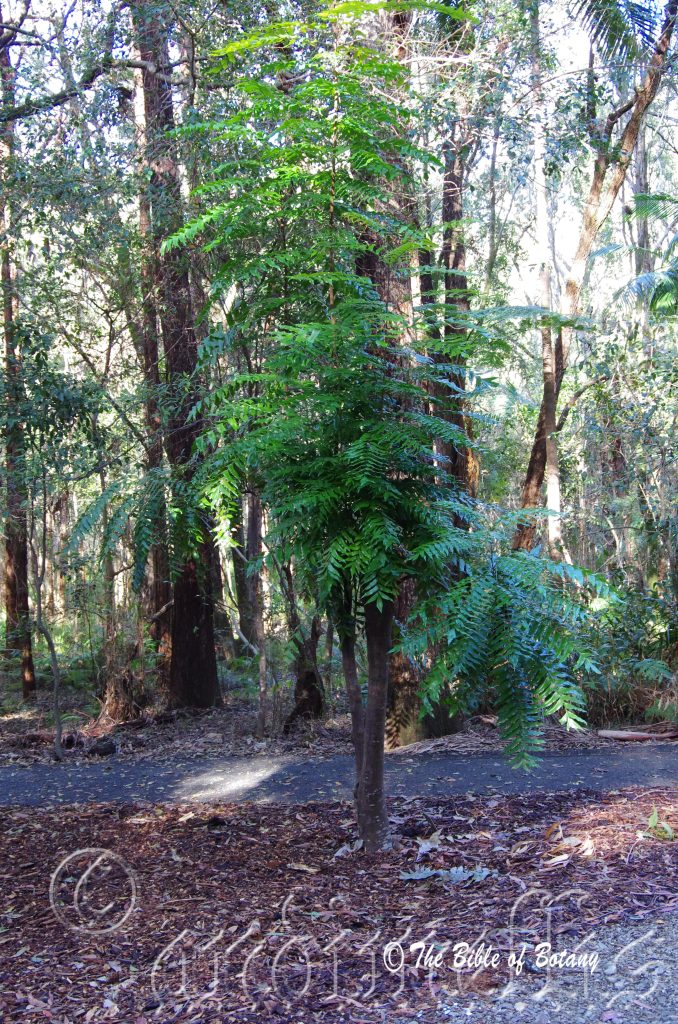
NCBG Coffs Harbour NSW
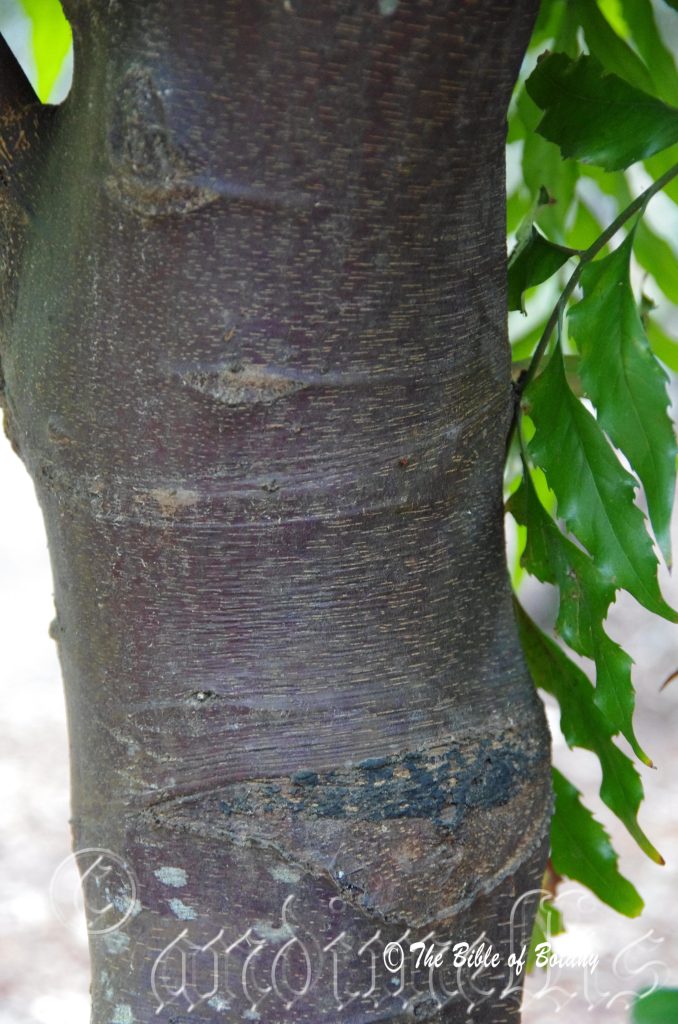
NCBG Coffs Harbour NSW
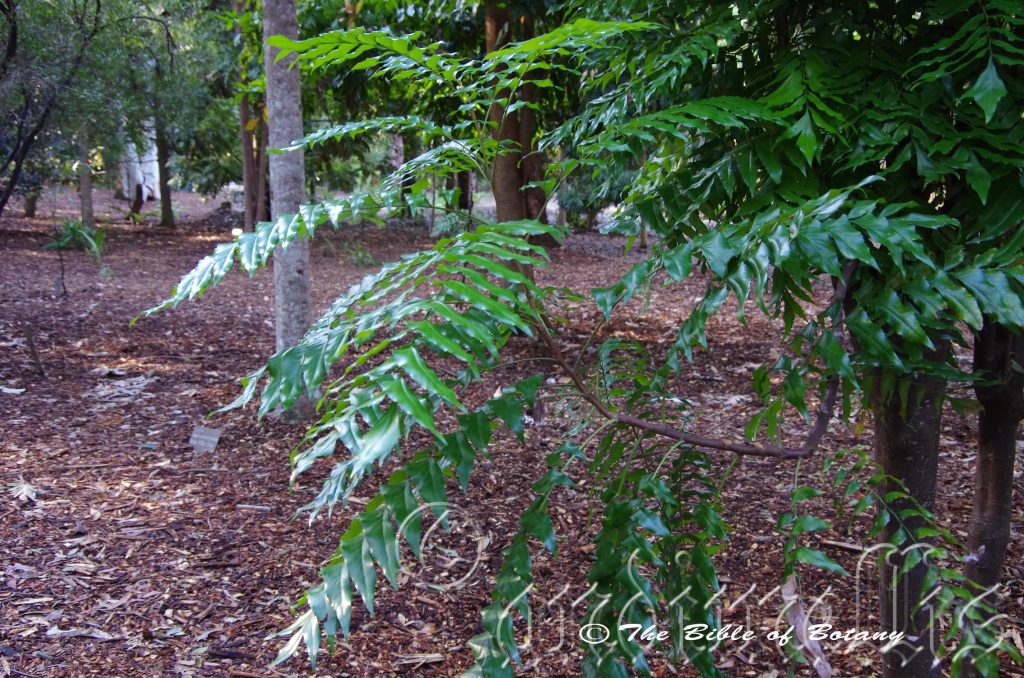
NCBG Coffs Harbour NSW
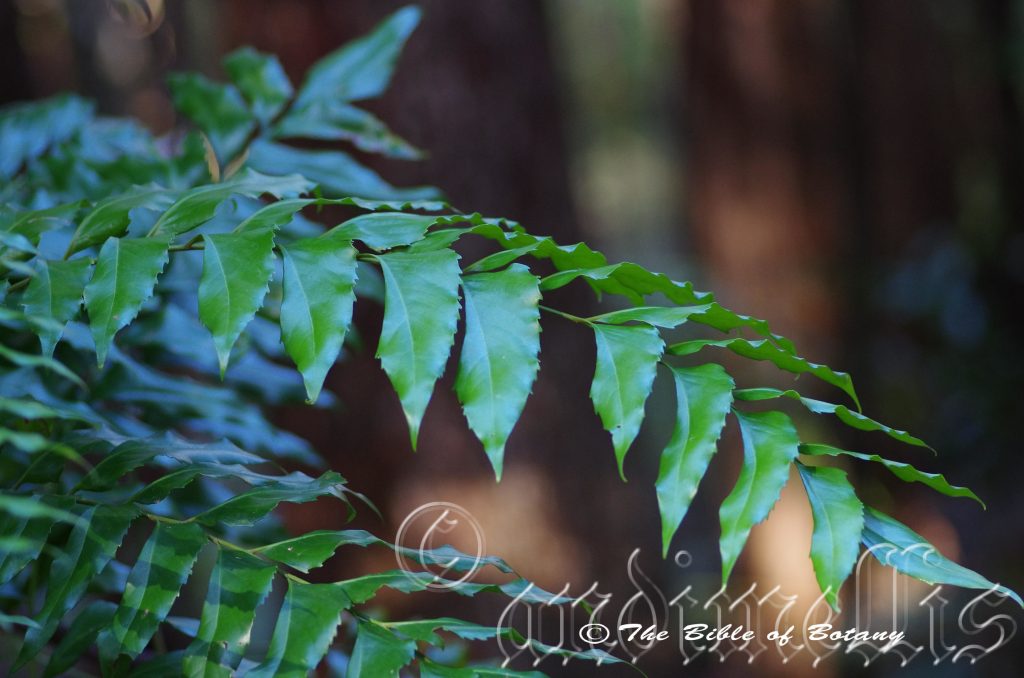
NCBG Coffs Harbour NSW
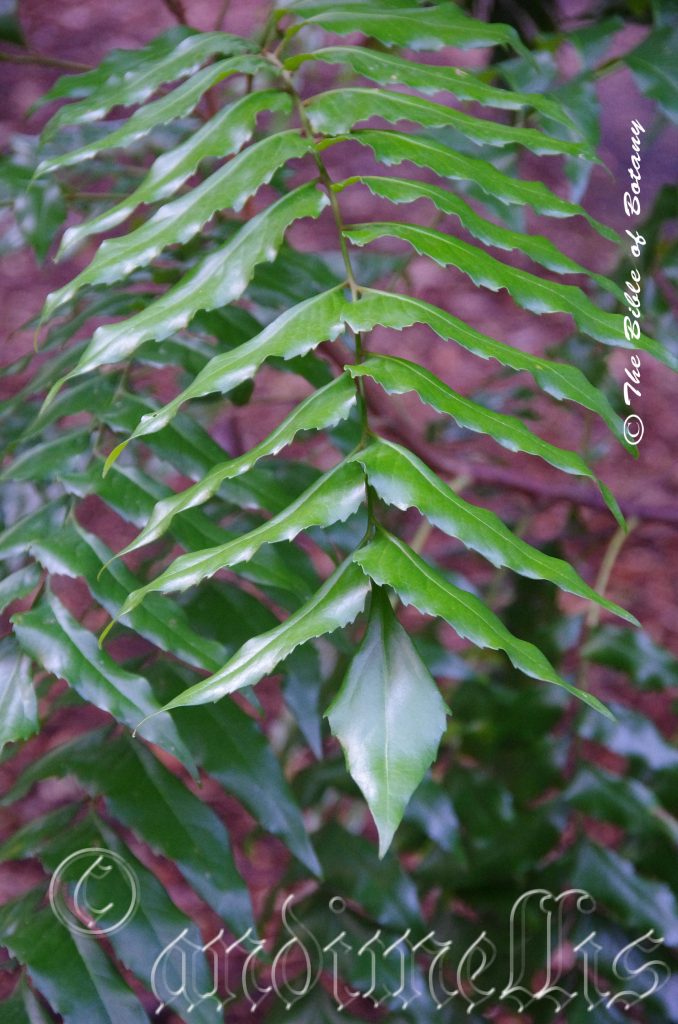
NCBG Coffs Harbour NSW
Neoritis kevedianus
Classification:
Phylum: Charophyta
Class: Equisetopsida
Order: Proteales
Family: Proteaceae
Genus: From Neoa, which is Ancient Greek for new or recent, Oros, which is Ancient Greek for a mountain and Ites, which is Ancient Greek for to be Native to. It refers to plants, which prefer higher altitudes in the mountains.
Specie: From Keved, which is unknown and –ānus, which is an ancient Greek suffix indicating procession or originating from.
Sub species:
Common Name: Fishtail Silky Oak or Fishtail Oak.
Distribution:
Neorites kevedianus is found south from Lorna Doone to the coastal ranges west of Smithfield in far north eastern Queensland. It is found on and east of the Great Dividing Range.
https://avh.ala.org.au/occurrences/search?taxa=Neoritis+kevedianus#tab_mapView
Habitat Aspect Climate:
Neorites kevedianus prefers light dappled shade to full sun. It grows in well developed rainforests. The altitude ranges from 5 meter ASL to 1000 meters ASL.
The temperatures range from 4 degrees in August to 38 degrees in January.
The rainfall ranges from lows of 2200mm to an average of 3200mm.
Soil Requirements:
Neorites kevedianus prefers better quality loams to medium clays. The soils are usually derived from decomposed black basalts or alluvial deposits. The soils pH. ranges from 5pH to 6.5pH. It does not tolerate waterlogged soils. Non saline soils to moderately saline soils are tolerated.
Height & Spread:
Wild Plants: 12m to 30m by 8m to 15m.
Characteristics:
Neorites kevedianus grows as a medium tree with a deep grey trunk with pale creamy fine horizontal lenticels or covered in strongly compressed horizontal lenticels. The branchlets are mid grass-green to deep grass-green and densely covered in pale rusty-brown pubescent hairs.
Neorites kevedianus’s leaves are extremely variable being pinnate on juvenile trees and coppice growth and simple on mature trees. The new growth is bright glossy pink with 10 to 14 opposite leaflets on the rachis at the base becoming subopposita then alternate near the apex. The asymmetrical leaflets are rhomboidal, crescent, semielliptical and falcate. The concolourous or slightly discolourous laminas are bright glossy grass-green and glabrous on the upper laminas while the lower laminas are paler. The laminas are undulating and decurve downwards from the base to the apex. The margins are toothed.
The adult leaves are oblong to oblong-elliptical and measure 60mm to 250mm by 20mm to 100mm in width. The glabrous, glossy green petioles measure 25mm to 40mm in length. The bases are tapering attenuate while the apexes are narrow acute to narrow acuminate. The discolourous laminas are deep lime-green to grass-green glabrous and glossy on the upper laminas while the lower laminas are paler and dull. The laminas are flat, or recurve strongly upwards from the mid vein to the margins, undulate and decurve downwards close to the apex or decurve downwards from the base to the apex. The margins are finely toothed especially on the apical half. The mid vein and lateral veins are slightly prominent on the lower lamina and slightly prominent on the upper lamina.
The inflorescence of Neorites kevedianus is a simple panicle born from the upper leaf axils and old leaf scars. The peduncle and rachis are sparsely covered in short fawn to pale rusty-brown pubescent hairs. The peduncle measures 5mm to 20mm in length while the rachis measure 30mm to 70mm in length. The individual flowers are paired without pedicels. The 5 oblong petals are glabrous, white and measure less than 4.5mm to 6.5mm in length by 1mm to 1.6mm in width.
The 5 cream to pale yellow stamens measure 2mm to 2.5mm in length while the white to cream style measure less than 4mm to 6mm in length. The 2 to 4 hypogynous glands are usually clavate. The sessile ovary is densely ferruginous pubescent hairs and contains 6 to 8 ovules. The sweetly scented flowers appear from December to February.
Neorites kevedianus’s fruits are compressed obloidal follicles. The hard green follicles turn brown when ripe. They measure 50mm to 75mm in length by 20mm to 30mm in diameter. The calyx lobes are persistent at the base of the follicles while the style is persistent at the apex. The compressed ovate seeds have a wing attached to one end. The seeds measure 25mm to 45mm in length by 10mm in width while the wing measures 15mm to 30mm in length.
Wildlife:
Neorites kevedianus’s wildlife is unknown to the author.
Cultivation:
Neorites kevedianus makes an excellent starter plant in a suburban rainforest garden. It always looks green and fresh especially where adequate ground moisture is retained whether it is grown in light shade or full sun. It is very suitable on sandy to heavy clay soils and are most suitable for small, medium and large gardens close to the coast in warm temperate, sub-tropical, tropical gardens where frosts are not a problem. It would also be worthwhile trying it in semi-arid gardens away from the coast near septic trenches or where house hold water is channelled. As garden subjects it grows from 12 meters to 16 meters in height by 6 meters to 9 meters in diameter when grown in the open.
It is most suitable for use as a back drop to provide shaded around swimming pools, shady courtyards, besides pathways, shady rockeries, along sandy clay banks or along drive ways or adjacent to natural bush gardens. Mass plantings of 5 or more plants even in medium areas; really do the plants justification because of the unusual foliage.
Planted within a rainforest the perfume from the flowers will drift below the canopy. The perfume from the flowers is subtle and sweet.
It is an ideal plant for growing epiphytic ferns and orchids on while the trunks will develop a multitude of lichens when grown in the shade as it matures.
Propagation:
Neorites kevedianus seeds can be sown directly into a seed raising mix once the weather warms up. Cover the seeds with 5mm to 10mm of fine weed free mulch and keep moist. Place the tray in a warm sunny position. When the seedlings are 30mm to 50mm tall, prick them out and plant them into 50mm native tubes using a good organic mix.
Once the seedlings reach 100mm to 150mm in height they can be planted out into their permanent position.
Fertilize using seaweed, fish emulsion or organic chicken pellets soaked in water on an alternate basis. Fertilize every two months until the plants are established then twice annually in early September or March to maintain better health, vitality and flowering.
Further Comments from Readers:
Hi reader, it seems you use The Bible of Botany a lot. That’s great as we have great pleasure in bringing it to you! It’s a little awkward for us to ask, but our first aim is to purchase land approximately 1,600 hectares to link several parcels of N.P. into one at The Pinnacles NSW Australia, but we need your help. We’re not salespeople. We’re amateur botanists who have dedicated over 30 years to saving the environment in a practical way. We depend on donations to reach our goal. If you donate just $5, the price of your coffee this Sunday, We can help to keep the planet alive in a real way and continue to bring you regular updates and features on Australian plants all in one Botanical Bible. Any support is greatly appreciated. Thank you.
In the spirit of reconciliation we acknowledge the Bundjalung, Gumbaynggirr and Yaegl and all aboriginal nations throughout Australia and their connections to land, sea and community. We pay our respect to their Elders past, present and future for the pleasures we have gained.
Nepenthes mirabilis
Classification:
Unranked: Eudicots
Unranked: Core Eudicots
Order: Caryophyllales
Family: Nepenthaceae
Genus: From Ne which is Ancient Greek for not or not having and Penthos, which is Ancient Greek for to have sorrow. It refers to the plants, which are carnivorous and not having any remorse or sorry for killing its victims slowly in an enzyme, solvent bath.
Specie: From Mirabilis, which is Latin for wonderful. It usually refers to flowers, which are truly beautiful or to plants, which have a wonderful appearance overall.
Sub species:
Common Name: Pitcher Plant or Swamp Pitcher Plant.
Distribution:
Nepenthes mirabilis is found south from the Torres Strait Islands to near Coen on Cape York Peninsula with a population further south at Bramston Beach near Cairns in far north Queensland.
I would suspect the occurrence of this plant to also be further widespread possibly in the northern parts of Northern Territory and Islands in the Gulf of Carpentaria.
It is found east from Borneo, Cambodia, Caroline Islands, southern China including Hong Kong, and Macau, D’Entrecasteaux Islands, Java, Laos, Louisiade Archipelago, Maluku Islands, Myanmar, New Guinea, Malaysia, Philippines, Sulawesi, Sumatra, Thailand and Vietnam. It has also been recorded from many smaller islands, including Babi, Bangka, Banyak Islands, Batu Islands, Bengkalis, Enggano, Ko Lanta, Ko Tarutao, Langkawi, Mendol, Mentawai Islands, Meranti Islands, Nias, Penang, Phuket, Riau Islands, Rupat and Tawi-Tawi.
https://avh.ala.org.au/occurrences/search?taxa=Nepenthes+mirabilis#tab_mapView
Habitat Aspect Climate:
Nepenthes mirabilis prefers full sun. It grows along creeks alluvial plains in most types of swamps and wallums. It is found amongst grasses and scrambling type shrubs. It is an unusual carnivorous plant with great variation in its pitcher size and colour. The altitude ranges from 10 meter ASL to 300 meters ASL.
The temperatures range from 12 degrees in August to 44 degrees in January.
The rainfall ranges from lows of 1200mm to an average of 3600mm.
Soil Requirements:
Nepenthes mirabilis prefers poor quality sands to sandy loams. The soils are usually derived from decomposed sandstones, granites, shale or alluvial flats. The soils pH. ranges from 4.5pH to 7pH. It tolerates waterlogged soils. Non saline soils to slightly saline soils are tolerated.
Height & Spread:
Wild Plants: 1.5m to 2.2m by 1m to 1.5m.
Characteristics:
Nepenthes mirabilis grows as a perennial pitch plant with mid green to deep green and are often tinged or streaked in purple stems. The plants are easily distinguished by the slender stem to 20mm in diameter and the unusual pitchers.
Nepenthes mirabilis’s complex leaves have three distinct sections, the petiole and clasp, the leaf blade and tendril and the pitcher which is a modified leaf blade.
The petioles measure 35mm to 80mm in length before they completely encircle the stem. They are distinctly channelled on the upper surface and sometimes have extended wings.
They are basal initially forming a rosette before becoming alternate as the main stem begins to climb. The lanceolate to oblanceolate leaf blade measures 110mm to 250mm in length by 40mm to 80mm in width. The bases are cuneate, with the collar section measuring 60mm to 80mm in length, while the apexes are acute to round. The concolourous laminas are pale grass green, dull and are covered in red or rusty-red farinaceous bumps. The margins are entire, flat or slightly undulating. The mid vein is strongly prominent on the lower lamina and is visible on the upper lamina.
The tendril is the extension of the mid vein and ends in a pitcher often encircling a branch or twig before developing into the pitcher. The tendrils measure 120mm to 240mm in length.
The pitcher is an oblong cylinder that measures 80mm to 160mm in length by 20mm to 55mm in width. There are two distinct ribs running vertically from near the base to the thickened lip of the pitcher. These ribs form a simple wing which is sometimes fringed. The pitchers are pale grass green, tinged or marked in red, purple or burgundy. They are dull covered in red or rusty-red farinaceous bumps. The mid vein extends up the back of the pitcher and forms a lid over the opening of the pitcher.
The three species Nepenthes mirabilis, Nepenthes rowanae and Nepenthes tenax are very closely related.
The dioeciously inflorescence of Nepenthes mirabilis is a raceme born from the terminal. The plants peduncles measures 250mm to 650mm in length while the pedicel measures 5mm to 15mm in length. There are 70 to 110 individual flowers to a raceme. The 4 hemi orbicular to oblong or obovate tepals are glabrous coriaceous and measure 4mm to 7mm in length by 2mm to 3mm in width. The pale green tepals are sparsely to densely covered in red, purple to burgundy markings. The tepals are strongly reflexed while the margins are flat or curve slightly upwards towards the mid vein.
Male flowers have 4 to 25 stamens fused to form a connate column. The connate column is pale grass green with various markings from scarlet red through to purple and burgundy. The stamens measure 4mm to 7mm in length with the anthers having pale yellow to yellow or fawn.
Female specimens I have seen indicate that the female flowers have a 3 locular ovary. The flowers appear from April to May.
Nepenthes mirabilis’s fruit is an elongated triangular ellipsoidal capsule. The capsules are pale grass green turning black when ripe. The capsules split length wise from the base to the apex and measure 20mm to 30mm in length by 5mm to 6mm in cross section. The off white seeds are 8mm to 9mm in diameter by 0.5mm thick including the wings. The seeds measure 1.1mm to 1.3mm in diameter.
Confusing species:
The differences between Nepenthes mirabilis and Nepenthes rowanae are as listed below. Hopefully one day I can find Nepenthes tenax and complete the chart
Nepenthes mirabilis Nepenthes rowanae
Leaf Blade Apex: Acute to round. Narrowly acute-acute.
Petiole connection: At base of pitcher. Somewhat peltate.
Connection to stem: 1/3 of internode’s length. 1/2 of internode’s length.
Pitcher wings: Simple, fringed. Flattened often fringed.
Leaf Blade: Usually chartaceous. Strongly coriaceous.
Wildlife:
Nepenthes mirabilis relies on ants and beetles for supplementing its nitrogen supply in the poor soils in which it grows.
Cultivation:
Nepenthes mirabilis is an unusual addition to the keen gardener who is looking for something different yet still easy to grow. It is ideal in settings near ponds in courtyards or the rockery. It needs strong sunlight to very light shade to grow at their best. Cultivated forms are available that are easier to grow, have a wider choice in colours from pure green forms to rich reds and burgundies and pitchers that vary from squat forms to long narrow forms. The pitchers vary in measurements from 50mm to 330mm in length by 15mm to 85mm in width.
To make a bog garden, extend the pond or to make an artificial marshland on sand all you need is a sheet of black plastic and some rocks. Dig the soil out and lay two or three layers of black plastic on the shallow depression. Fill the plastic to the original level with sharp course sand and peat mixed at a ratio of 4 to 1.Make sure the sand is free of salt. If it isn’t wash the sand several times to make sure the salt is completely removed. Fill the depression with water until it is within 50mm of the surface. Place the rocks around the perimeter so that it looks natural. Make a depression with your arm in the corner on the low side so excess water can drain away when it rains. Water should be drained regularly to maintain freshness.
With Nepenthes mirabilis ensure their roots are growing down below the permanent water line and water moisture is maintained through capillary action. It is a good idea to allow them to dry out in the dry season, however keep the soil slightly moist at all times.
I like to use some of the small Juncus or dwarf forms of Lomandra as a base and back drops when growing small carnivorous plants as most are small and they look more natural when planted around or amongst grass like foliages. With Nepenthes species you can use any of the carnivorous plants like Drosera spathulata to highlight each other.
Remove the plants and carefully plant them into their wallum. Do not fertilize.
The best thing about the carnivorous plants is you can grow a large number in a small area. It reaches its full potential in just 1 year and flower in their first year. The water level must be kept topped up for most carnivorous plants but to maintain optimum conditions for Nepenthes mirabilis it is best to plant those on a raised section well above the water table and let capillary action feed the plants.
Propagation:
Seeds: Nepenthes mirabilis seeds require some treatment before sowing. Treat the seeds by placing them in a cool dry position for 3 to 6 months. Sow stratified seeds directly into a deep tray or 150mm squat pot. The mix to be added should be 40mm course sharp sand, 40mm black peat that is salt free and 20mm perlite. Wet the mix well allowing it to soak for an hour or two then drain the excess moisture off. Cover the surface with pre-soaked sphagnum moss. Press the seeds into the sphagnum moss about 20mm apart. Place the tray in a warm place sunny place. If the tray starts to dry out, water it from below by standing the tray or pot in a saucer of water. Do not leave the tray in the water for longer than to wet the mix throughout.
When the seedlings are 10 to 15 mm tall, prick them out and plant them into their permanent position in the bog garden or terrarium. Alternatively they can be transplanted into 75mm pots.
Mass plantings can be achieved by planting them at 600mm to 1000mm centers.
Fertilize using Seaweed or fish emulsion at half strength two weeks before planting out. This is all the plants will need for a life time of happiness. Mass plantings can be achieved with spacing of 600mm to 1000mm centers.
Further Comments from Readers:
Hi reader, it seems you use The Bible of Botany a lot. That’s great as we have great pleasure in bringing it to you! It’s a little awkward for us to ask, but our first aim is to purchase land approximately 1,600 hectares to link several parcels of N.P. into one at The Pinnacles NSW Australia, but we need your help. We’re not salespeople. We’re amateur botanists who have dedicated over 30 years to saving the environment in a practical way. We depend on donations to reach our goal. If you donate just $5, the price of your coffee this Sunday, We can help to keep the planet alive in a real way and continue to bring you regular updates and features on Australian plants all in one Botanical Bible. Any support is greatly appreciated. Thank you.
In the spirit of reconciliation we acknowledge the Bundjalung, Gumbaynggirr and Yaegl and all aboriginal nations throughout Australia and their connections to land, sea and community. We pay our respect to their Elders past, present and future for the pleasures we have gained.
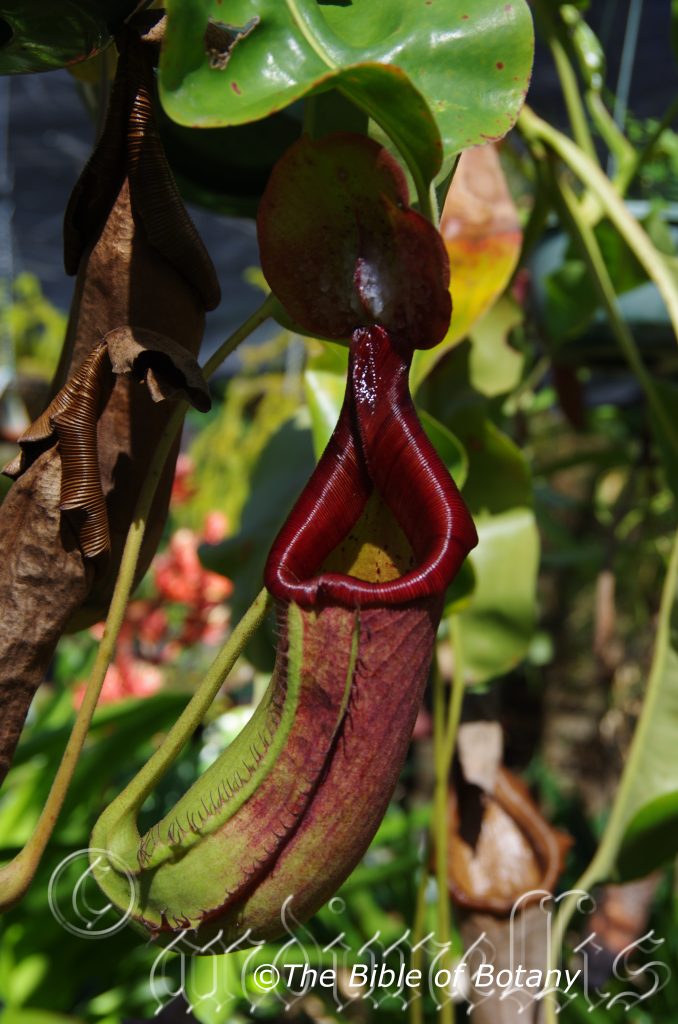
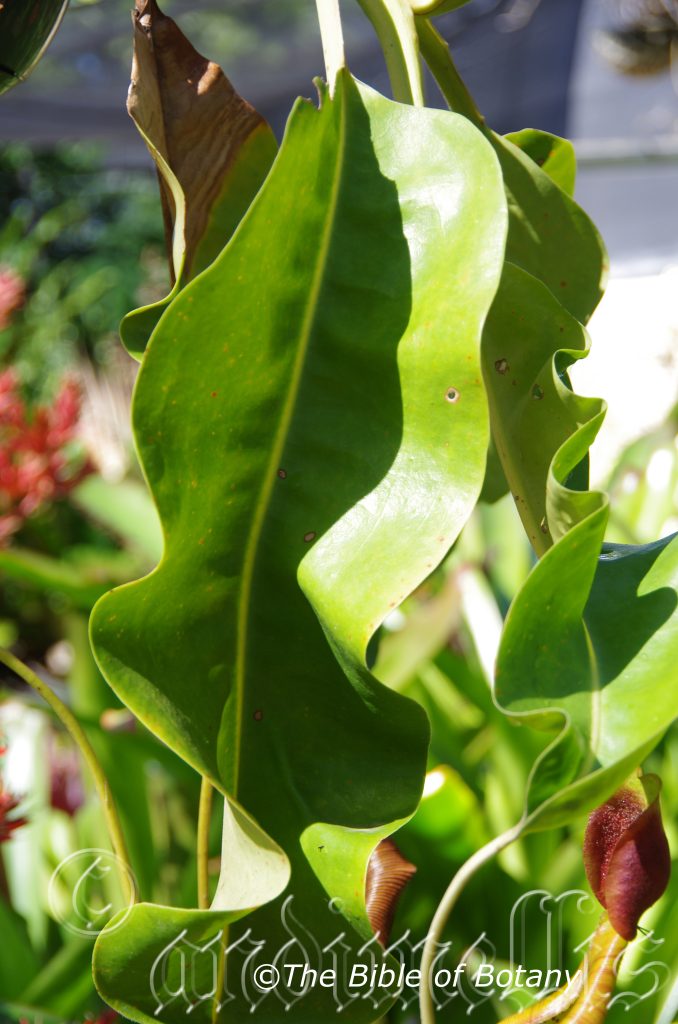
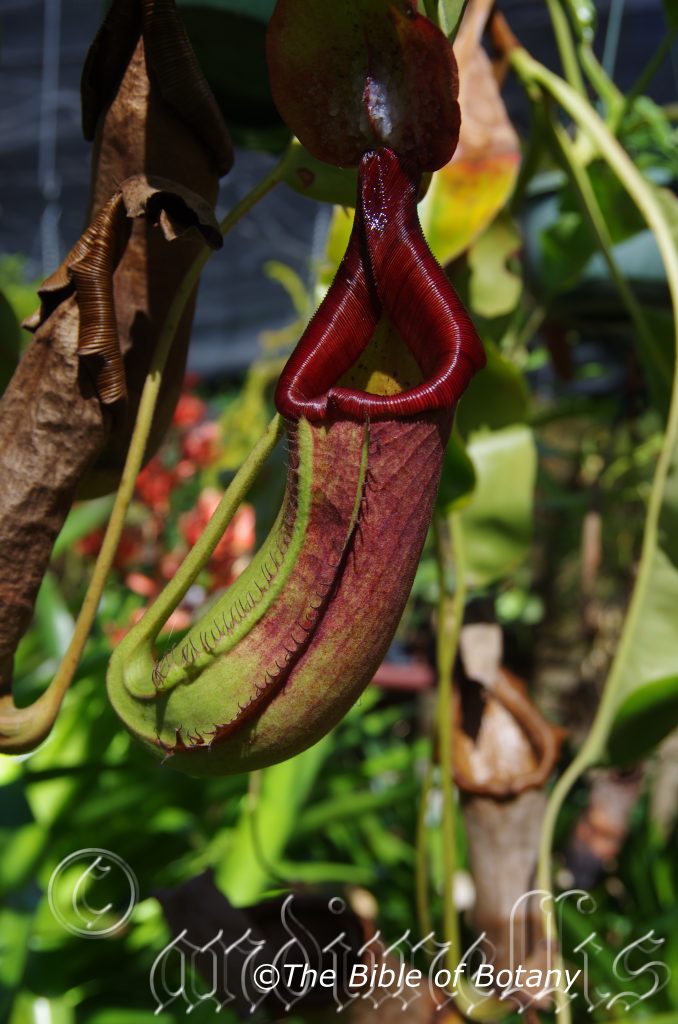
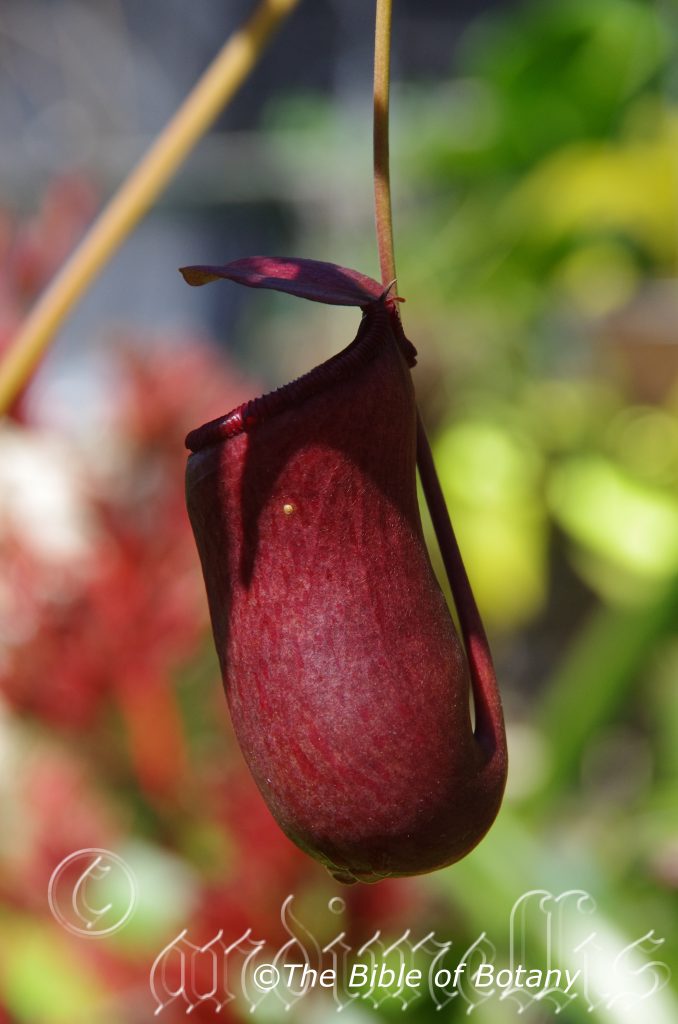
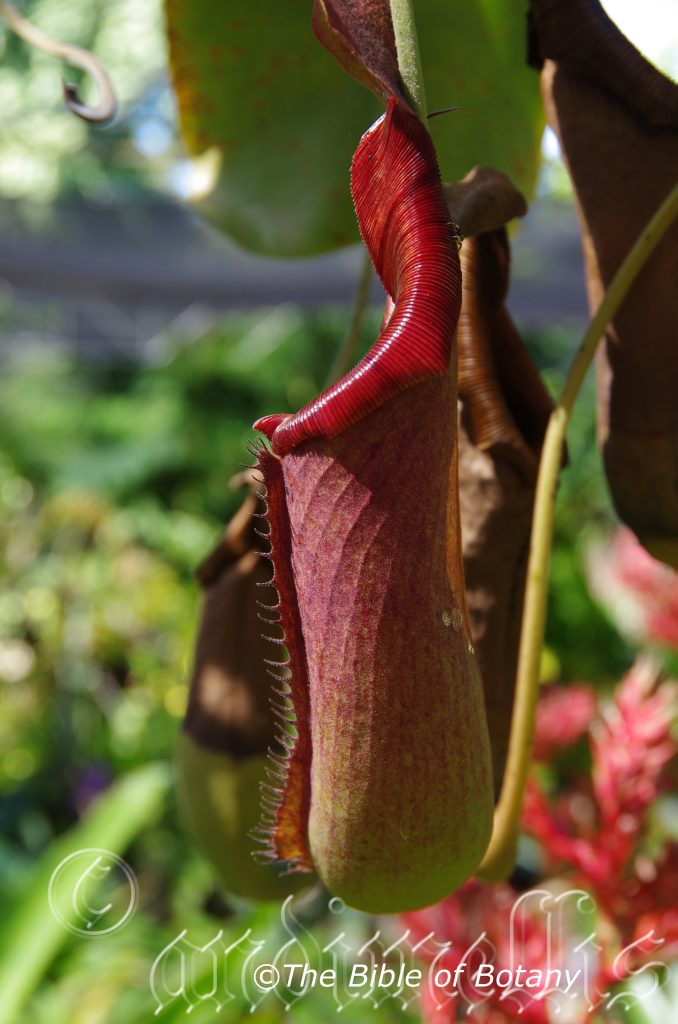
Anderson Gardens Townsville Qld.
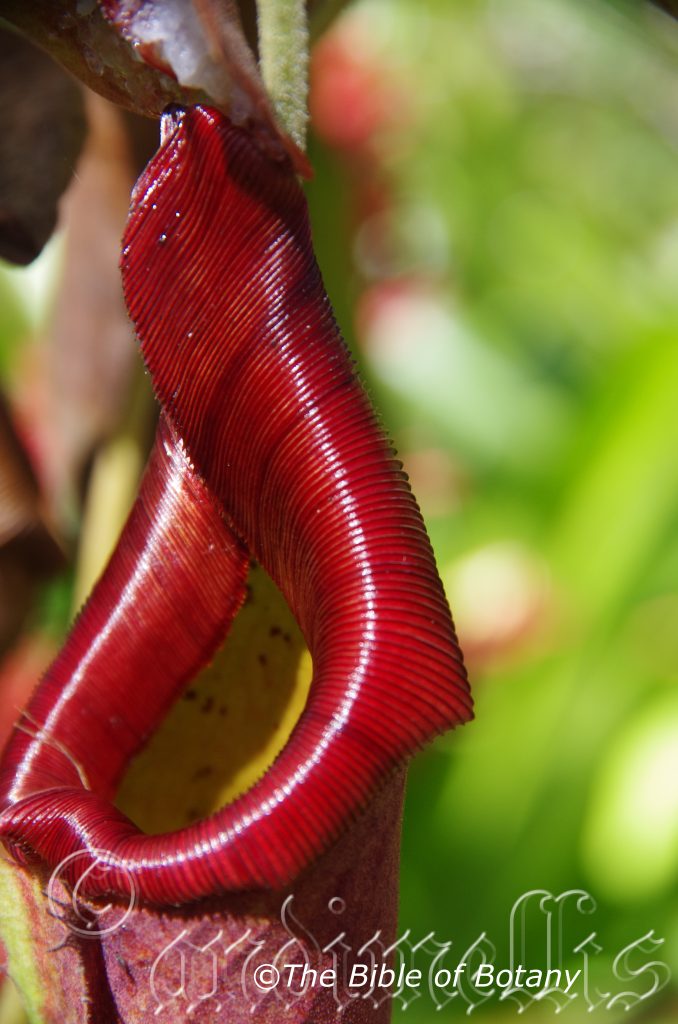
Anderson Gardens Townsville Qld.
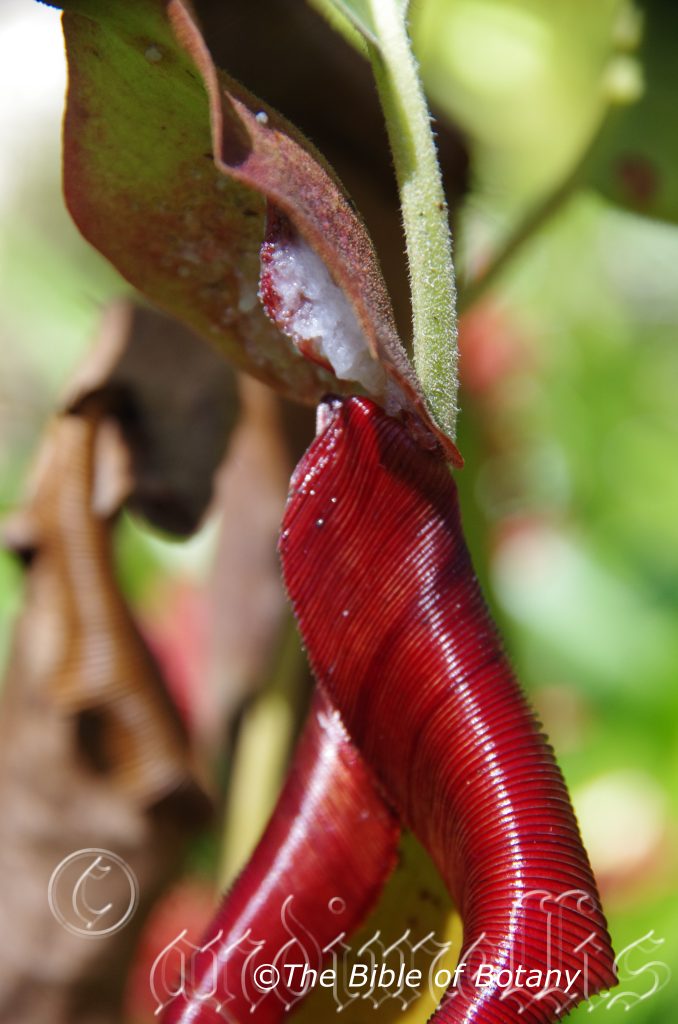
Anderson Gardens Townsville Qld.
Nepenthes rowanae
Classification:
Unranked: Eudicots
Unranked: Core Eudicots
Order: Caryophyllales
Family: Nepenthaceae
Genus: From Ne which is Ancient Greek for not or not having and Penthos, which is Ancient Greek for to have sorrow. It refers to the plants, which are carnivorous and not having any remorse or sorry for killing its victims slowly in an enzyme, solvent bath.
Specie: Is named in honour of Marian Ellis Rowan 1848-1922 who was one of Australia’s most adventurous and talented natural history artists, specialising in flowers and birds, and occasionally insects. Her desire and love of the Australian bush led to obsessiveness is defined in the following statement – “My love for the flora of Australia, at once so unique and so fascinating, together with my desire to complete my collection of floral paintings, has carried me into other colonies, Queensland and some of the remotest parts of the great Continent of Australia. The excitement of seeking and the delight of finding rare or even unknown specimens abundantly compensated me for all difficulties, fatigue and hardships.” The bulk of her Australian and New Guinea collection is owned by the Australian Government and is housed in the National Library in Canberra. This fulfilled one of her dreams – to have the work available for the Australian people. More than any other artist she often painted the backgrounds in a surrealist style giving a greater feeling for the plants and the environment she painted.
Sub species:
Common Name: Pitcher Plant or Swamp Pitcher Plant.
Distribution:
Nepenthes rowanae is found on the western side of Cape York Peninsula in far north Queensland. It is probably found over the same area as Nepenthes mirabilis and to the tip of the Peninsula as the species are difficult to tell apart and have similar habitats.
https://avh.ala.org.au/occurrences/search?taxa=Nepenthes+rowanae#tab_mapView
Habitat Aspect Climate:
Nepenthes rowanae prefers full sun. It grows along creeks alluvial plains in most types of swamps or wallums. It is found amongst grasses and scrambling heath shrubs. It is an unusual carnivorous plant with great variation in its pitcher size and colour. The altitude ranges from 5 meter ASL to 200 meters ASL.
The temperatures range from 12 degrees in August to 44 degrees in January.
The rainfall ranges from lows of 1200mm to an average of 3600mm.
Soil Requirements:
Nepenthes rowanae prefers quality sands to sandy loams. The soils are usually derived from decomposed sandstones, granites, shale or alluvial flats. The soils pH. ranges from 4.5pH to 6.5pH. It tolerate waterlogged soils. Non saline soils to slightly saline soils are tolerated.
Height & Spread:
Wild Plants: 2m to 4m by 1m to 1.5m.
Characteristics:
Nepenthes rowanae grows as a perennial pitcher plant with mid green to deep green stems which are often marked with purple tinges or markings. The plants are easily distinguished by the slender stem to 20mm in diameter and the unusual pitchers.
Nepenthes rowanae’s complex leaves have three distinct sections, the petiole and clasp, the leaf blade and tendril and the pitcher which is a modified leaf blade.
The petioles measure 35mm to 80mm in length before they clasp around the stems for half its circumference. They are distinctly channelled on the upper surface and sometimes have extended wings.
They are basal initially forming a rosette before becoming alternate as the main stem begins to climb. The lanceolate to oblanceolate leaf blade measure 110mm to 250mm by 40mm to 80mm in width. The bases are cuneate, with the collar section measuring 60mm to 80mm in length, while the apexes are narrowly acute to acute. The concolourous laminas are pale grass-green, dull and are covered in red or rusty-red farinaceous bumps. The margins are entire, flat or slightly undulating. The mid vein is strongly prominent on the lower lamina and is visible on the upper lamina.
The tendril is the extension of the mid vein and ends in a pitcher often encircling a branch or twig before developing into the pitcher. The tendrils measure 120mm to 240mm in length.
The pitcher is an oblong cylinder that measures 80mm to 160mm in length by 20mm to 55mm in width. There are two distinct ribs running vertically from near the base to the thickened lip of the pitcher. These ribs form a simple wing which is fringed on the upper half and forms a “Shape on the lower section. The pitchers are pale grass green, tinged or marked in red, purple or burgundy. They are dull covered in red or rusty-red farinaceous bumps. The pitcher’s peristome is ovate in cross section. The mid vein extends up the back of the pitcher and forms an ovate lid over the opening of the pitcher.
The dioeciously inflorescence of Nepenthes rowanae is a raceme born from the terminal. The plants peduncles that measure 160mm to 240mm in length while the rachises measure 350mm to 450mm in length. The pedicels measure 12mm to 15mm in length. There are 70 to 110 individual flowers to a raceme. The 4 hemi orbicular to oblong or obovate tepals are glabrous coriaceous and measure 4mm to 7mm in length by 2mm to 3mm in width. The pale green tepals are sparsely to densely covered in red, purple to burgundy markings. The tepals are strongly reflexed while the margins are flat or curve slightly forward towards the mid vein.
Male flowers have 4 to 25 stamens fused to form a connate column. The connate column is pale grass green with various markings from scarlet red through to purple and burgundy. The stamens measure 4mm to 7mm in length with the anthers having pale yellow to yellow or fawn.
Female specimens I have seen indicate that the female flowers have a 3 locular ovary. The flowers appear from April to May.
Nepenthes rowanae’s fruit is an elongated triangular ellipsoidal capsule. The capsules are pale grass green turning black when ripe. The capsules split length wise from the base to the apex and measure 22mm to 28mm in length by 5mm to 6mm in cross section. The off white seeds are 8mm to 9mm in diameter by 0.5mm thick including the wings. The seeds measure 1.1mm to 1.3mm in diameter by 0.3mm thick.
Confusing Species:
The three species Nepenthes mirabilis, Nepenthes rowanae and Nepenthes tenax are very closely related.
The differences between Nepenthes mirabilis and Nepenthes rowanae are as listed below. Hopefully one day I can find Nepenthes tenax and complete the chart
xxxxxxxxxxxxxxxxxxxNepenthes mirabilis Nepenthes rowanae
Leaf Blade Apex: Acute to round. Narrowly acute-acute.
Petiole connection: At base of pitcher. Somewhat peltate.
Connection to stem: 1/3 of internode’s length. 1/2 of internode’s length.
Pitcher wings: Simple, fringed. Flattened often fringed.
Leaf Blade: Usually chartaceous. Strongly coriaceous.
Wildlife:
Nepenthes rowanae relies on ants and beetles for supplementing its nitrogen supply in the poor soils in which it grows.
Cultivation:
Nepenthes rowanae is an unusual addition to the keen gardener who is looking for something different yet still easy to grow. It is ideal in settings near ponds in courtyards or the rockery. It needs strong sunlight to very light shade to grow at their best. Cultivated forms are available that are easier to grow, have a wider choice in colours from pure green forms to rich reds and burgundies and pitchers that vary from squat forms to long narrow forms The pitchers vary in measurements from 50mm to 330mm in length by 15mm to 85mm in width.
To make a bog garden, extend the pond or to make an artificial marshland on sand all you need is a sheet of black plastic and some rocks. Dig the soil out and lay two or three layers of black plastic on the shallow depression. Fill the plastic to the original level with sharp course sand and peat mixed at a ratio of 4 to 1.Make sure the sand is free of salt. If it isn’t wash the sand several times to make sure the salt is completely removed. Fill the depression with water until it is within 50mm of the surface. Place the rocks around the perimeter so that it looks natural. Make a depression with your arm in the corner on the low side so excess water can drain away when it rains. The water should be drained at regular intervals to maintain freshness.
With Nepenthes mirabilis ensure their roots are growing down into the permanent water line and water moisture is maintained through capillary action. It is a good idea to allow them to dry out in the dry season, however keep the soil slightly moist at all times.
I like to use some of the small Juncus or dwarf forms of Lomandra as a base and back drops when growing small carnivorous plants as most are small and they look more natural when planted around or amongst grass like foliages. With Nepenthes species you can use any of the carnivorous plants like Drosera spathulata to highlight each other.
Remove the plants and carefully plant them into their wallum. Do not fertilize.
The best thing about the carnivorous plants is you can grow a large number in a small area. It often reaches its full potential in just 1 year and flower in their first year. The water level must be kept topped up for most carnivorous plants but to maintain optimum conditions for Nepenthes rowanae it is best to plant these on a raised section well above the water table and let capillary action feed the plants.
It is an ideal plant for terrariums because watering can easily be maintained. Planting a terrarium needs a sandy mix as already outlined using 4 parts sand to 1 part peat. Mix it up carefully place it in the container. Water well and drain off any excess water. Carefully remove the plants from their pots and plant them ensuring no mix is covering the leaves. Seed should be purchased from reputable dealers or collectors.
Propagation:
Seeds: Nepenthes rowanae seeds require some treatment before sowing. Treat the seeds by placing them in a cool dry position for 3 to 6 months. Sow stratified seeds directly into a deep tray or 150mm squat pot. The mix to be added should be 40mm course sharp sand, 40mm black peat that is salt free and 20mm perlite. Wet the mix well allowing it to soak for an hour or two then drain the excess moisture off. Cover the surface with pre-soaked sphagnum moss. Press the seeds into the sphagnum moss about 20mm apart. Place the tray in a warm place sunny place. If the tray starts to dry out, water it from below by standing the tray or pot in a saucer of water. Do not leave the tray in the water for longer than to wet the mix throughout.
When the seedlings are 10 to 15 mm tall, prick them out and plant them into their permanent position in the bog garden or terrarium. Alternatively they can be transplanted into 75mm pots.
Fertilize using Seaweed or fish emulsion at half strength two weeks before planting out. This is all the plants will need for a life time of happiness. Mass plantings can be achieved with spacing of 600mm to 1000mm centers.
Further Comments from Readers:
Hi reader, it seems you use The Bible of Botany a lot. That’s great as we have great pleasure in bringing it to you! It’s a little awkward for us to ask, but our first aim is to purchase land approximately 1,600 hectares to link several parcels of N.P. into one at The Pinnacles NSW Australia, but we need your help. We’re not salespeople. We’re amateur botanists who have dedicated over 30 years to saving the environment in a practical way. We depend on donations to reach our goal. If you donate just $5, the price of your coffee this Sunday, We can help to keep the planet alive in a real way and continue to bring you regular updates and features on Australian plants all in one Botanical Bible. Any support is greatly appreciated. Thank you.
In the spirit of reconciliation we acknowledge the Bundjalung, Gumbaynggirr and Yaegl and all aboriginal nations throughout Australia and their connections to land, sea and community. We pay our respect to their Elders past, present and future for the pleasures we have gained.
Nephrolepis arida
Classification
Division: Pteridophyta
Class: Polypodiopsida / Pteridosida (In dispute)
Order: Polypodales
Family: Lomariopsidaceae
Genus: From Nephros, which is Ancient Greek for a kidney and Lepis, which is Ancient Greek for a scale. It refers to the indusium scales covering the spores, which are the shape or form of a kidney.
Specie: From ārida, which is Latin for dry. It refers to plants, which prefer habitats that are drier or more arid than other species in the genus.
Sub species:
Common Name: Fishbone Fern.
Distribution:
Nephrolepis arida is a restricted to a few populations in the Gregory River National Park and Kings Canyon in the Northern Territory. In Western Australia it is found from the Kymberley, Gibb River Gorges and along the gorges on the Ord River.
https://avh.ala.org.au/occurrences/search?taxa=Nephrolepis+arida#tab_mapView
Habitat Aspect Climate:
Nephrolepis arida prefers light dappled shade to full shade. It grows along creeks and seepages on sandstone cliffs. This is an erect to cascading large fishbone. The altitude ranges from 10 meter ASL to 180 meters ASL.
The temperatures range from 7 degrees in August to 44 degrees in January.
The rainfall ranges from lows of 250mm to an average of 3000mm.
Soil Requirements:
Nephrolepis arida prefers to grow on poor better sands to light fatty clays. The soils are usually derived from decomposed sandstones. The soils pH. ranges from 4.5pH to 6pH. It does not tolerate waterlogged soils but prefers soils that are moist throughout the year. Non saline soils to moderately saline soils are tolerated.
Height & Spread:
Wild Plants: 1m to 1.2m by 2m to 2.5m.
1. Notice the gap and position between each of the pinnae.
2. Notice the shape and position of the base auricle overlapping the mid vein and opposite pinnae,
3. The midvein curves downwards towards the upper margin of the opposite pinnae.
Characteristics:
Nephrolepis arida’s rhizomes are slender and wiry. They are densely covered in rusty-brown lanceolate scales. The stipes are covered in red-brown lanceolate scales at the base. Often these scales 50 or more are covered in red-brown ciliate hairs.
The rusty brown rachis is densely covered in short rusty-brown hirsute hairs. The erect single pinnate fronds grow out in clusters at the ends of the rhizome and measure 800mm to 1200mm in length by 20mm to 150mm in width becoming narrower as they approach the apex.
The sterile linear pinnae measure 10mm to 75mm in length by 6mm to 15mm in width near the base. The base has a hemi ovate auricle on both margins though the upper auricle is more pronounced and is contorted over the rachis and opposite upper pinnae. The apexes are narrow acute or narrow rounded. The margins are crenate but less so near the apex. The mid vein is prominent on the lower surface and sparsely covered in rusty-brown hirsute hairs.
The fertile pinnae are similar to the sterile pinnae. The sori are sub marginal and regularly spaced along both margins while the indusium are reniform. The spores are rusty-brown.
Wildlife:
Nephrolepis arida wildlife relationships are unknown to the author however fronds are at times eaten by an unknown looper caterpillar. Damage is generally minimal and the plants recover quickly.
Cultivation:
Nephrolepis arida is a larger fern for courtyards or in the garden where moist or humid bright airy conditions prevail. They respond to regular applications of our recommended fertilizers applied every couple of months on a rotating basis.
It is an excellent fern for sunny pool sides both in the ground and in hanging baskets, as they can handle some full sun, salt spray and neglect, recovering very quickly. If neglected for a short period of time cut them back severely to just above the crowns. Give them a good soaking with a dose of our recommended fertilizing program a week apart. This will see the plants recover in a week or two.
It often reaches its full potential in hanging baskets from top to bottom of 2200mm in just 2 years from small plants in 125mm squat pots. It is best to use fibre baskets as the air roots develop better when they can breathe and dry out between watering.
They can be used in more open positions in the garden where full sun is received during part of the day or placed in the fork of a large tree. When placing plants in a fork of a tree ensure that there is plenty of packed peat around the roots to give them a good start. Make sure the peat does not dry out as it will be very difficult to rewet. Regular watering with a mixed organic fertilizer will ensure good growth and long fronds cascading down nearly 2 meters under cultivation. Drip irrigation is highly recommended and beneficial to the plants grown as epiphytes. Select trees that are known for harbouring epiphytes so root toxins do not accumulate causing sickness or death in the long term.
This is one fern that excels behind moist retaining walls where it can cascade over the wall.
Propagation:
Spores: This plant is declared rare, vulnerable or endangered are protected by Federal and State Laws and must not be removed from the wild unless you are a land developer, mining company or main Roads department etc. This includes bulbs, roots, leaves and flowers. No part of any plant can be removed from Federal, State or Local Government land without the prior permission of the authority and this includes the spore.
Most people are put off at the thought of growing ferns from spore. Like all plants that produce their offspring from seed or spore the methods are basically the same. Remember nature has been doing this for millions of years and has been very successful. I have had excellent results growing over 200 different species of Australian ferns so don’t be afraid. Give it a go.
Step 1. Select spore from the fern fronds. Wait until the fern is just starting to release its spore. Rinse the fronds under clean running water and dry. This is to wash off any other spores from rogue ferns that may have settled onto the fronds. (There is nothing worse than having common brake or common soft bracken contaminating a prized tree fern or epiphyte.)
Step 2. Place the dry fronds in a clean brown paper bag and keep them in a cool dark place like the linen closet for about a week to ten days before you are ready to sow the spore. The exception to this rule applies to ferns, which produce green spores. These must be sown immediately that they are released. Todea Barbara is a good example of a fern, which produces green spore.
Step 3. Take a large ice cream container, a small ice cream container and a clean clear plastic bag large enough to seal the large ice cream container and three or four milk bottle tops.
Step 4. Punch or drill 6 to 10 5mm holes in the bottom of the small ice cream container.
Step 5. Wash both containers, tops and plastic bag so that they are very clean and sterile.
Step 6. Use a clean fine seed raising mi. We used 30mm fine sand, 30mm peat and 30mm perlite and 10mm vermiculite. We used crushed basalt, crusher dust and peat in a 50:50 ratio for epiphytes. Moisten the mix enough that water does not run out when the mix is squeezed between the fingers.
Step 7. Place the moisten mix (Enough to half fill the small ice cream container) in the microwave oven with a large glass of water for 7 or 8 minutes, until the water is boiling. Allow them to cool in the oven. You will need the water later so do not tip it out.
Step 8. Take the brown paper bag out of the linen closet. Shake the bag and remove the fronds. You should have a yellow, brown, black or rarely greenish brown or ochre powder or very fine, small round pin head size spore depending on the specie involved.
Step 9. Remove the mixture from the oven once it has cooled and place it in the small ice cream container and level.
Step 10. Sprinkle the spore sparsely over the mixture in the small ice cream container.
Step 11. Place the milk bottle tops in the large ice cream container with the flat surface facing down. Place the small ice cream container in the large ice cream container so that it is sitting on the milk bottle tops.
Step 12. Remove the water from the microwave and pour it into the larger ice cream container so there is 25mm to 30mm of water in the bottom.
Step 13. Place the ice cream containers in the plastic bag and seal. Step 14. Place the contents and bag in a warm shady place preferably 50mm to 70mm shade depending on the specie. Shade houses and some window sills are ideal.
Step 15. The surface should turn green within a week to two weeks. The prothallus will then develop. From the prthalus the first true fronds will appear. Wait until the ferns are 20mm to 35mm in height before you attempt to transplant them. Once they are ready open the bag up slightly and allow the air to flow around the little ferns. Every 3 to 5 days open the bag a little further so the ferns get use to their new environment. Allow them a week to two weeks to harden off before you transplant them following the removal of the plastic bag. Carefully prick them out into 50mm standard squat tubes as you would any seedling.
Do not try to transplant them as single plants as they are still a little delicate still.
Once the smaller ones again reach 50mm to 70mm you may wish to divide the stronger and hardier individual plants into smaller clumps in 100mm squat pots.
Step 16. We fertilized with seaweed, fish emulsion or organic chicken pellets soaked in water on an alternate basis until established. Fertilize every two months for one year even when in the ground.
Division or from runners? Planting runners is another method in which some plants can be propagated asexually. A plant runner is a rapidly growing stem that grows above the ground, on or just below the soil surfac. The stock plant usually produces a set number of runners which eventually, produces new individuals from the tips of their nodes. As the new plant is slowly developing, the stems of the plant continue to take advantage of the rich soil and grow, while the rhizomes begin to get stronger and support the newly created offspring. These can be severed and placed in a pot, after the fronds have been cut off at around 50mm above the runner’s new crown. Keep moist and maintain a warm humid position for a few weeks until the new roots and new fronds have fully developed then plant out or pot up. A tip for increasing warmth and humidity is to place the pots with their runners in a plastic bucket. Place the bucket in a warm position where it gets a little morning and or afternoon sun. Now place an old clear or opaque plastic shopping size bag around the top of the bucket. This will act like a min bush house.
Further Comments from Readers:
Hi reader, it seems you use The Bible of Botany a lot. That’s great as we have great pleasure in bringing it to you! It’s a little awkward for us to ask, but our first aim is to purchase land approximately 1,600 hectares to link several parcels of N.P. into one at The Pinnacles NSW Australia, but we need your help. We’re not salespeople. We’re amateur botanists who have dedicated over 30 years to saving the environment in a practical way. We depend on donations to reach our goal. If you donate just $5, the price of your coffee this Sunday, We can help to keep the planet alive in a real way and continue to bring you regular updates and features on Australian plants all in one Botanical Bible. Any support is greatly appreciated. Thank you.
In the spirit of reconciliation we acknowledge the Bundjalung, Gumbaynggirr and Yaegl and all aboriginal nations throughout Australia and their connections to land, sea and community. We pay our respect to their Elders past, present and future for the pleasures we have gained.
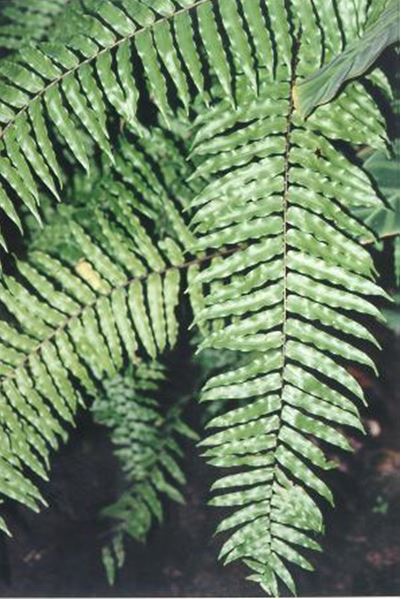
Nephrolepis biserrata
Classification:
Division: Pteridophyta
Class: Polypodiopsida / Pteridosida (In dispute)
Order: Polypodales
Family: Lomariopsidaceae
Genus: From Nephros, which is Ancient Greek for a kidney and Lepis, which is Ancient Greek for a scale. It refers to the indusium scales covering the spores, which are the shape or form of a kidney.
Specie: From Bi/Bis, which is Greek/Latin for two and Serrāta which is Latin for to have serrations. It refers to structures or organs, which have many fine or small serrations of which each has smaller serrations.
Sub species:
Common Name: Fishbone Fern or Australian Fishbone Fern.
Distribution:
Nephrolepis biserrata is restricted to a small area from the Kimberley Coast and Ranges, the Gibb River Gorges and along the gorges on the Ord River in Western Australia and the Gregory River National Park in the Northern Territory.
https://avh.ala.org.au/occurrences/search?taxa=Nephrolepis+biserrata#tab_mapView
Habitat Aspect Climate:
Nephrolepis biserrata prefers light dappled shade to full shade. It grows along creeks and seepages on sandstone cliffs and gallery forests. This is a very large erect to cascading large fishbone that has many distinct varieties and sub species. The altitude ranges from 10 meter ASL to 300 meters ASL.
The temperatures range from 7 degrees in August to 42 degrees in January.
The rainfall ranges from lows of 250mm to an average of 4000mm.
Soil Requirements:
Nephrolepis biserrata prefers poor better sands to light fatty clays. The soils are usually derived from decomposed sandstones. The soils pH. ranges from 4.5pH to 6pH. It does not tolerate waterlogged soils but prefers soils that are moist throughout the year. Non saline soils to moderately saline soils are tolerated.
Height & Spread:
Wild Plants: 1m to 1.7m by 2m to 3m.
Characteristics:
Nephrolepis biserrata’s rhizomes are slender and wiry. They are densely covered in rusty-brown lanceolate scales. The stipes are covered in red-brown lanceolate scales at the base. Often these scales 50 or more are covered in red-brown ciliate hairs.
The rusty brown rachis is densely covered in short rusty-brown hirsute hairs. The erect single pinnate fronds grow out in clusters at the ends of the rhizome and measure 1000mm to 1800mm by 20mm to 150mm wide becoming narrower as they approach the apex.
The sterile linear pinnae measure 12mm to 90mm in length by 5mm to 18mm in width near the base. The base is rounded or may have a hemi ovate auricle on both margins. This is not as pronounced as on Nephrolepis arida and is not contorted over the rachis and opposite upper pinnae while the apex is narrow acute. The margins are entire. The mid vein is prominent on the lower surface and sparsely covered in rusty-brown hirsute hairs.
The fertile pinnae are similar to the sterile pinnae. The sori are sub marginal and irregularly spaced along both margins while the indusium are reniform. The spore is rusty-brown.
Confusing Species:

Photograph from https://www.gardenia.net/plant/nephrolepis-biserrata
1. Notice the gap and position between each of the pinnae.
2. Notice there is no base auricle overlapping the mid vein and opposite pinnae,
3. The midvein curves downwards towards the upper margin of the opposite pinnae.
4. Apex is generally acute.
5. Margins usually entire and undulating.
Wildlife:
Nephrolepis biserrata wildlife relationships are unknown to the author however fronds are at times eaten by an unknown looper caterpillar. Damage is generally minimal and recovery is quick.
Cultivation:
Nephrolepis biserrata is a larger fern for courtyards or in the garden where moist bright airy conditions prevail. They respond to regular applications of our recommended fertilizers applied every couple of months on a rotating basis.
It is an excellent fern for pool sides both in the ground and in hanging baskets, as they can handle some full sun, salt spray and neglect, recovering very quickly. If neglected for a short period of time cut them back severely to just above the crowns. Give them a good soaking with a dose of our recommended fertilizing program a week apart. This will see the plants recover in a week or two.
They often reach their full potential from top to bottom of 3000mm by 3500 wide in just 2 years from small plants in 125mm squat pots.
They can be used in more open positions in the garden where full sun is received during part of the day or placed in the fork of a large tree. When placing plants in a fork of a tree ensure that there is plenty of packed peat around the roots to give them a good start. Make sure the peat does not dry out as it will be very difficult to rewet. Regular watering with a mixed organic fertilizer will ensure good growth and long fronds cascading down 2 meters or more under cultivation. Drip irrigation is highly recommended and beneficial to the plants grown as epiphytes. Select trees that are known for harbouring epiphytes so root toxins do not accumulate causing sickness or death in the long term.
This is one fern that excels behind moist retaining walls where it is allowed to cascade freely over the wall. It is particularly spectacular if placed near water falls or cascades.
Propagation:
Spores: All ferns that are declared rare, vulnerable or endangered are protected by Federal and State Laws and must not be removed from the wild unless you are a land developer, mining company or main Roads department etc. This includes bulbs, roots, leaves and flowers. No part of any plant can be removed from Federal, State or Local Government land without the prior permission of the authority and this includes the spore.
Most people are put off at the thought of growing ferns from spore. Like all plants that produce their offspring from seed or spore the methods are basically the same. Remember nature has been doing this for millions of years and has been very successful. I have had excellent results growing over 200 different species of Australian ferns so don’t be afraid. Give it a go.
Step 1. Select spore from the fern fronds. Wait until the fern is just starting to release its spore. Rinse the fronds under clean running water and dry. This is to wash off any other spores from rogue ferns that may have settled onto the fronds. (There is nothing worse than having common brake or common soft bracken contaminating a prized tree fern or epiphyte.)
Step 2. Place the dry fronds in a clean brown paper bag and keep them in a cool dark place like the linen closet for about a week to ten days before you are ready to sow the spore. The exception to this rule applies to ferns, which produce green spores. These must be sown immediately that they are released. Todea Barbara is a good example of a fern, which produces green spore.
Step 3. Take a large ice cream container, a small ice cream container and a clean clear plastic bag large enough to seal the large ice cream container and three or four milk bottle tops.
Step 4. Punch or drill 6 to 10 5mm holes in the bottom of the small ice cream container.
Step 5. Wash both containers, tops and plastic bag so that they are very clean and sterile.
Step 6. Use a clean fine seed raising mi. We used 30mm fine sand, 30mm peat and 30mm perlite and 10mm vermiculite. We used crushed basalt, crusher dust and peat in a 50:50 ratio for epiphytes. Moisten the mix enough that water does not run out when the mix is squeezed between the fingers.
Step 7. Place the moisten mix (Enough to half fill the small ice cream container) in the microwave oven with a large glass of water for 7 or 8 minutes, until the water is boiling. Allow them to cool in the oven. You will need the water later so do not tip it out.
Step 8. Take the brown paper bag out of the linen closet. Shake the bag and remove the fronds. You should have a yellow, brown, black or rarely greenish brown or ochre powder or very fine, small round pin head size spore depending on the specie involved.
Step 9. Remove the mixture from the oven once it has cooled and place it in the small ice cream container and level.
Step 10. Sprinkle the spore sparsely over the mixture in the small ice cream container.
Step 11. Place the milk bottle tops in the large ice cream container with the flat surface facing down. Place the small ice cream container in the large ice cream container so that it is sitting on the milk bottle tops.
Step 12. Remove the water from the microwave and pour it into the larger ice cream container so there is 25mm to 30mm of water in the bottom.
Step 13. Place the ice cream containers in the plastic bag and seal. Step 14. Place the contents and bag in a warm shady place preferably 50mm to 70mm shade depending on the specie. Shade houses and some window sills are ideal.
Step 15. The surface should turn green within a week to two weeks. The prothallus will then develop. From the prothallus the first true fronds will appear. Wait until the ferns are 20mm to 35mm in height before you attempt to transplant them. Once they are ready open the bag up slightly and allow the air to flow around the little ferns. Every 3 to 5 days open the bag a little further so the ferns get use to their new environment. Allow them a week to two weeks to harden off before you transplant them following the removal of the plastic bag. Carefully prick them out into 50mm standard squat tubes as you would any seedling.
Do not try to transplant them as single plants as they are still a little delicate still.
Once the smaller ones again reach 50mm to 70mm you may wish to divide the stronger and hardier individual plants into smaller clumps in 100mm squat pots.
Step 16. We fertilized with seaweed, fish emulsion or organic chicken pellets soaked in water on an alternate basis until established. Fertilize every two months for one year even when in the ground.
Division or from runners? Planting runners is another method in which some plants can be propagated asexually. A plant runner is a rapidly growing stem that grows above the ground, on or just below the soil surface. The stock plant usually produces a set number of runners which eventually, produces new individuals from the tips of their nodes. As the new plant is slowly developing, the stems of the plant continue to take advantage of the rich soil and grow, while the rhizomes begin to get stronger and support the newly created offspring. These can be severed and placed in a pot, after the fronds have been cut off at around 50mm above the runner’s new crown. Keep moist and maintain a warm humid position for a few weeks until the new roots and new fronds have fully developed then plant out or pot up. A tip for increasing warmth and humidity is to place the pots with their runners in a plastic bucket. Place the bucket in a warm position where it gets a little morning and or afternoon sun. Now place an old clear or opaque plastic shopping size bag around the top of the bucket. This will act like a mini hot house.
Further Comments from Readers:
Hi reader, it seems you use The Bible of Botany a lot. That’s great as we have great pleasure in bringing it to you! It’s a little awkward for us to ask, but our first aim is to purchase land approximately 1,600 hectares to link several parcels of N.P. into one at The Pinnacles NSW Australia, but we need your help. We’re not salespeople. We’re amateur botanists who have dedicated over 30 years to saving the environment in a practical way. We depend on donations to reach our goal. If you donate just $5, the price of your coffee this Sunday, We can help to keep the planet alive in a real way and continue to bring you regular updates and features on Australian plants all in one Botanical Bible. Any support is greatly appreciated. Thank you.
In the spirit of reconciliation we acknowledge the Bundjalung, Gumbaynggirr and Yaegl and all aboriginal nations throughout Australia and their connections to land, sea and community. We pay our respect to their Elders past, present and future for the pleasures we have gained.
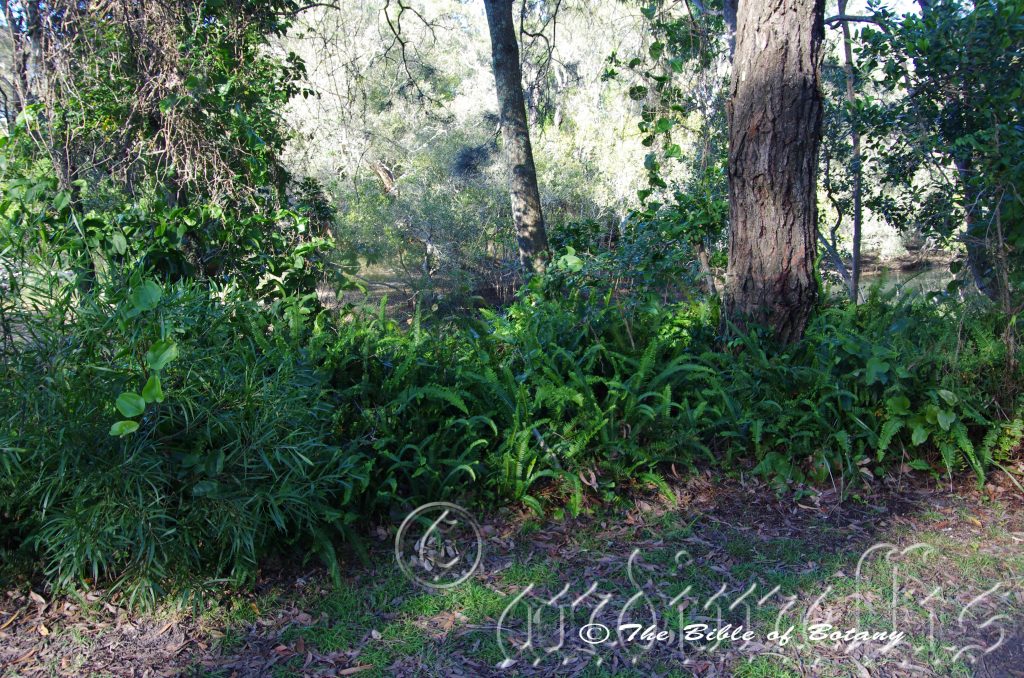
Stingray Creek Moonee Beach NSW
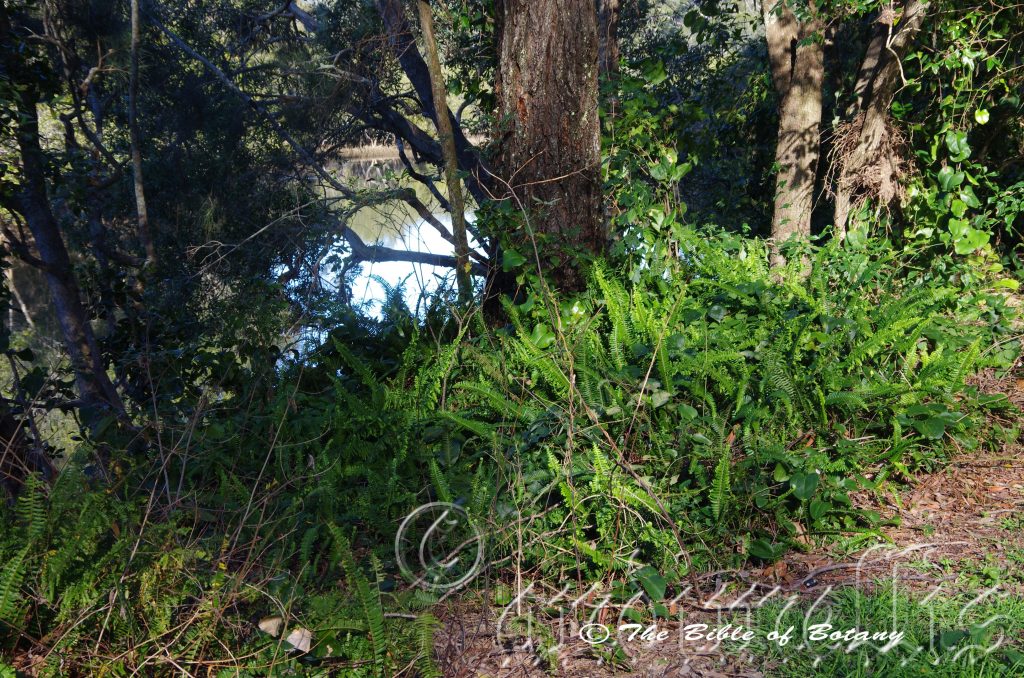
Stingray Creek Moonee Beach NSW
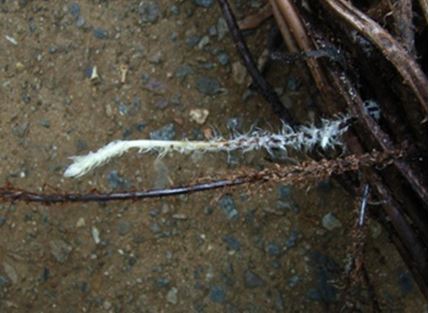
Cooparoo Qld.
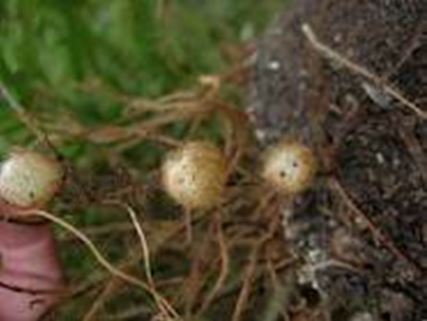
Cooparoo Qld.
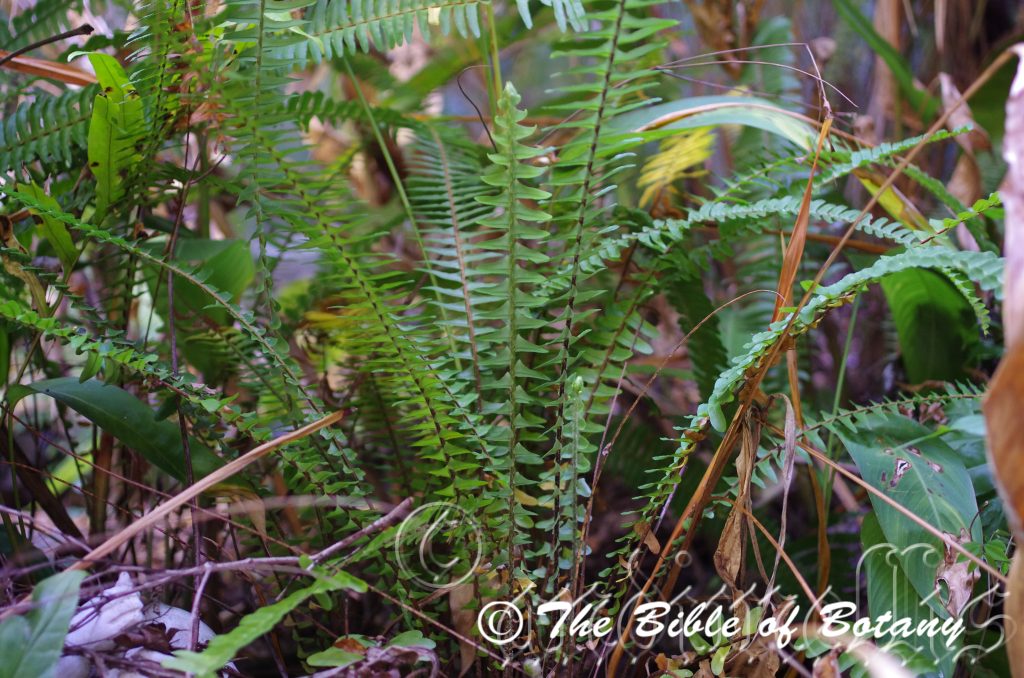
Grange Qld.
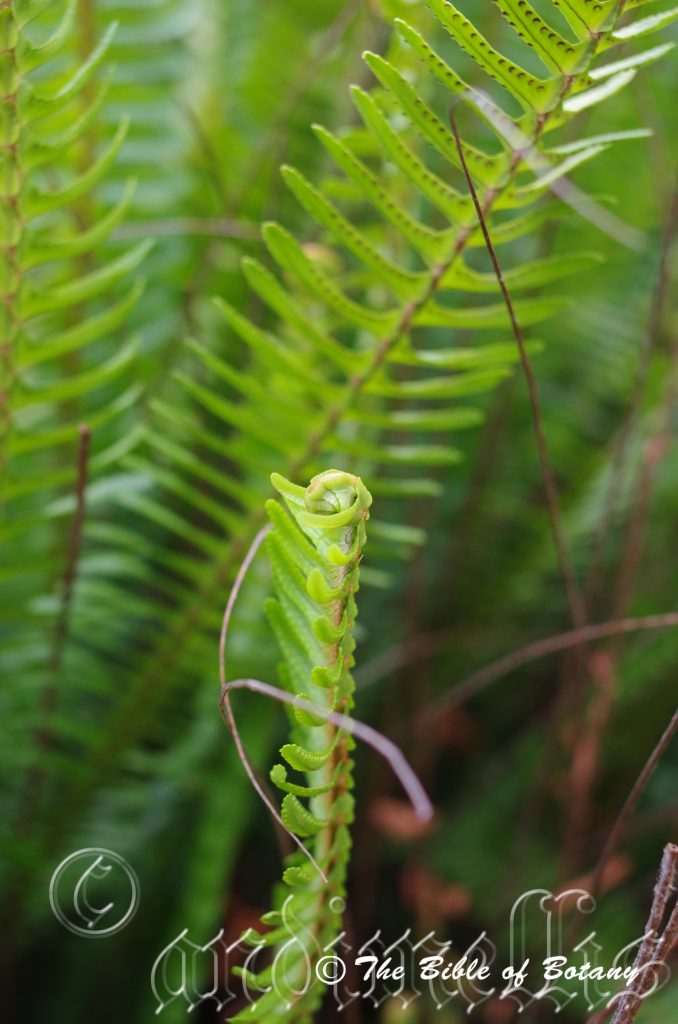
Number 1 State High School Chong Qing China
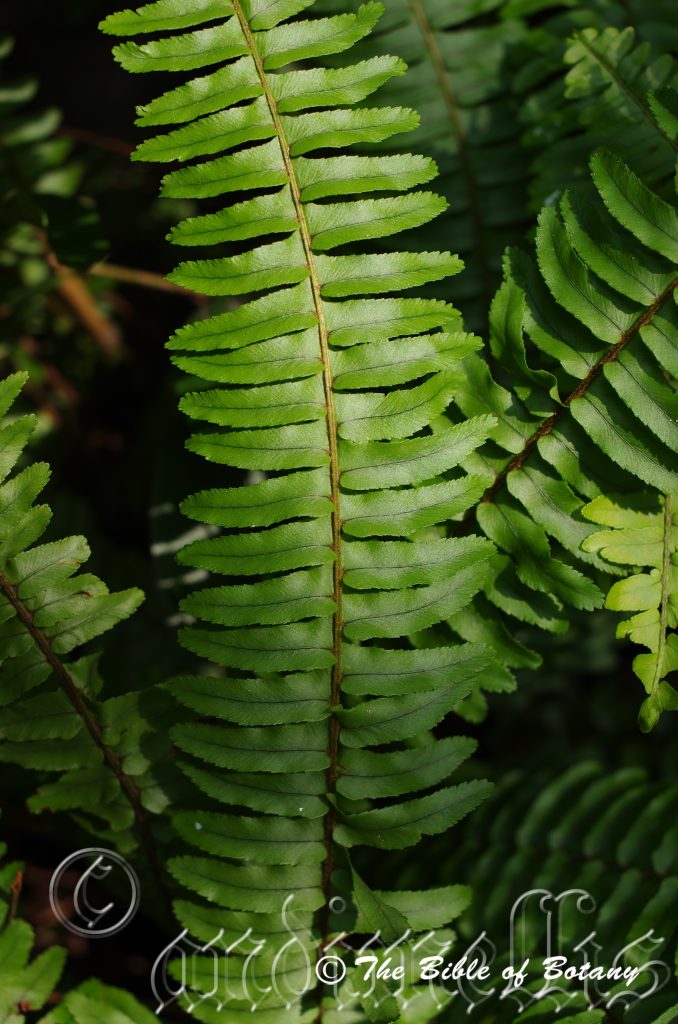
Number 1 State High School Chong Qing China
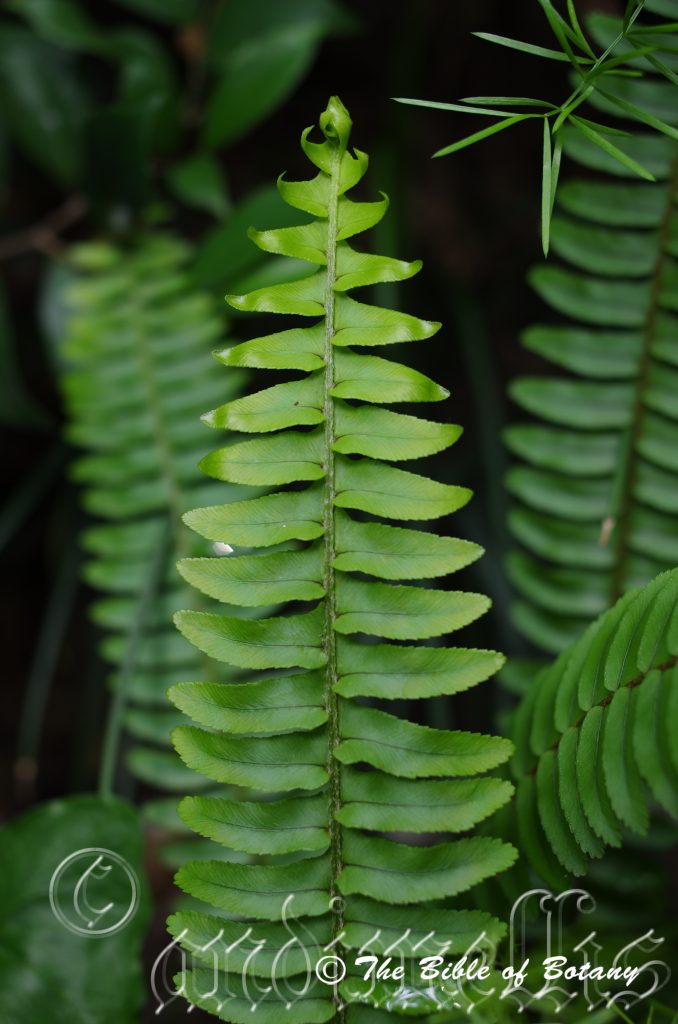
Number 1 State High School Chong Qing China
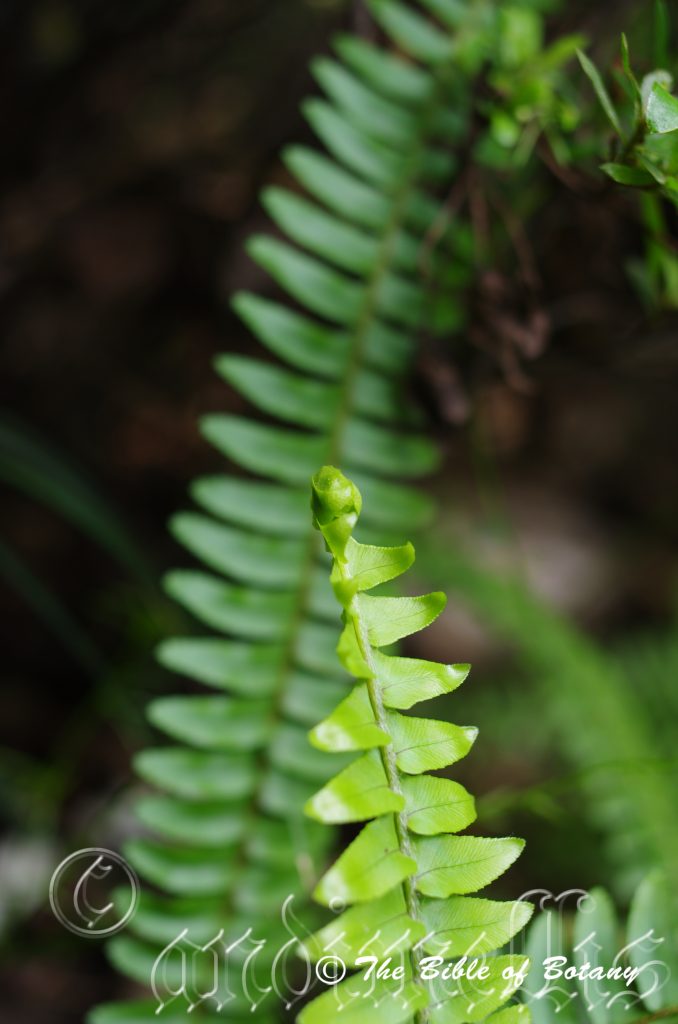
Cooparoo Qld.
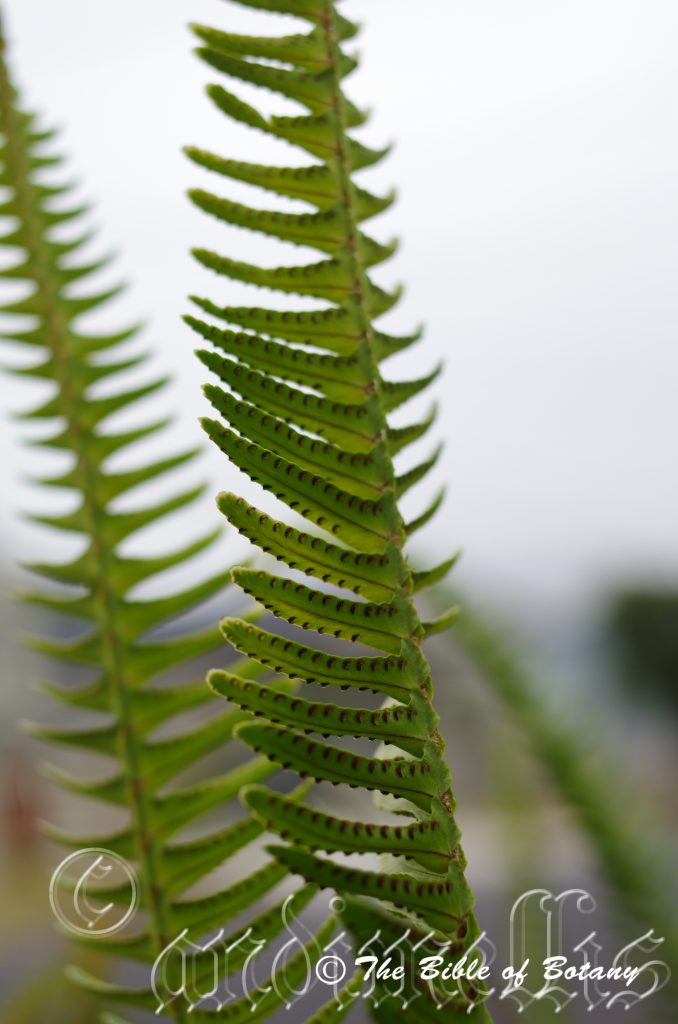
Cooparoo Qld.
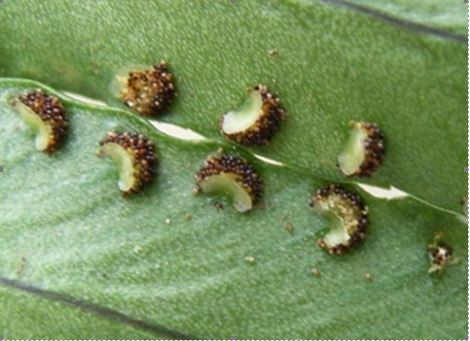
Cooparoo Qld.
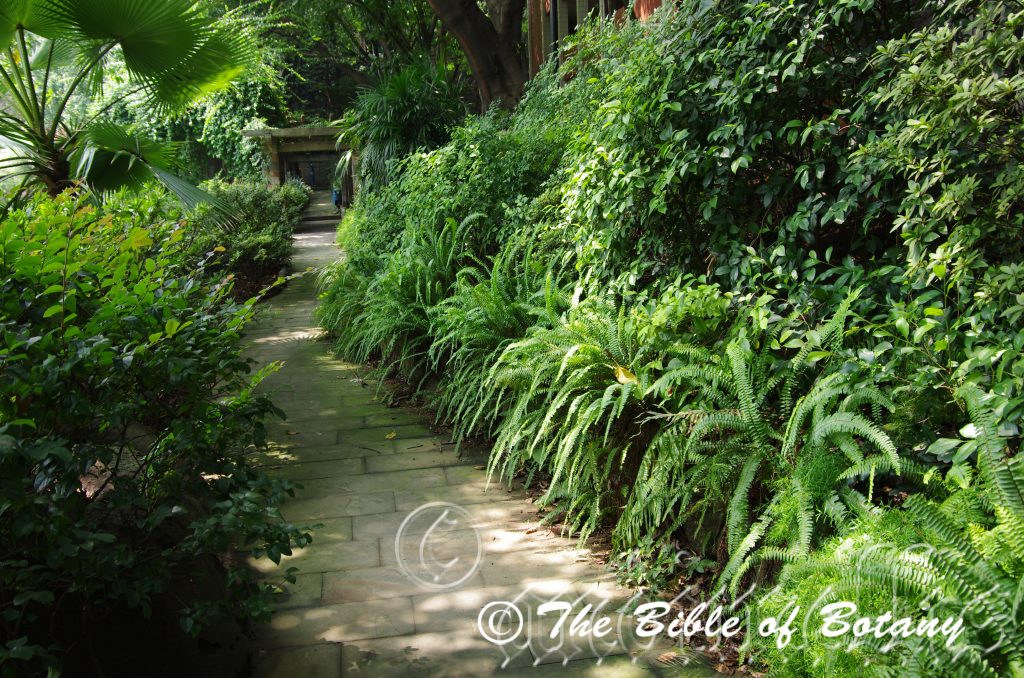
Number 1 State High School Chong Qing China
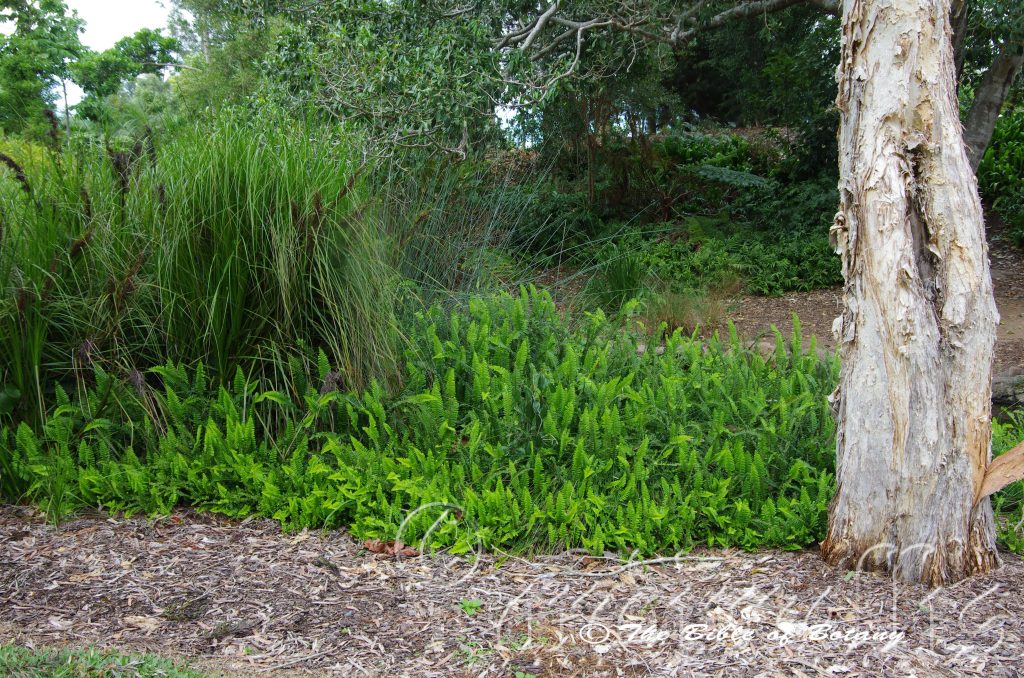
Sting Ray Creek Moonee Beach NSW
Nephrolepis cordifolia
Classification:
Division: Pteridophyta
Class: Polypodiopsida / Pteridosida (In dispute)
Order: Polypodales
Family: Lomariopsidaceae
Genus: From Nephros, which is Ancient Greek for a kidney and Lepis, which is Ancient Greek for a scale. It refers to the indusium scales covering the spores, which are the shape or form of a kidney.
Specie: From Kordātum, which is Ancient Greek or Cordātum, which is Latin for a heart shape and Folium, which is Latin for foliage. It refers to leaves, which have a heart shape.
Sub species:
Common Name: Common Fishbone Fern, Dwarf Fishbone Fern or Potato Fern.
Distribution:
Nephrolepis cordifolia is a widespread species on and east of the Great Dividing Range to the coast south from Cooktown in far north eastern Queensland to the Clarence River in New South Wales. The exact distribution will now always be suspect as the plants have colonized many areas within its natural habitat and has spread further south, north and west since colonization.
https://avh.ala.org.au/occurrences/search?taxa=Nephrolepis+cordifolia#tab_mapView
Habitat Aspect Climate:
Nephrolepis cordifolia prefers light dappled shade to full shade. It grows in openings created in moist tropical rainforests, moist subtropical rainforests, littoral rainforests, moist gallery forests and moist Eucalyptus forests. This is an erect to semi cascading fishbone that is very distinct from other species and easy to identify. This Nephrolepis is often seen growing as an epiphyte amongst Platycerium species and as a lithophyte where conditions are satisfactory.
The altitude ranges from 5 meter ASL to 900 meters ASL.
The temperatures range from minus 1 degree in August to 33 degrees in January.
The rainfall ranges from lows of 850mm to an average of 3200mm.
Soil Requirements:
Nephrolepis cordifolia prefers better quality sandy loams to medium clays. The soils are usually derived from decomposed sandstones, brown basalts, black basalts, metamorphic rocks, shales, granites or at times fertile, accumulated, peaty beach sands. The soils pH. ranges from 5.5pH to 7pH. It does not tolerate waterlogged soils but prefers soils that are moist throughout the year. Non saline soils to moderately saline soils are tolerated.
Height & Spread:
Wild Plants: 0.3m to 0.7m by 0.5m to 10m.
Sporangia on pinnae andi Mellis photo 9.1
1. Notice the gap and position between each of the pinnae.
2. Notice the pinnae closer to the apex contorts the base auricle of the lower pinnae to the mid vein,
3. The mid vein curves slightly downwards towards the upper sori of the opposite pinnae.
4. Apex is obtuse.
5. Margins usually entire or slightly crenate.
6. Potato like tubers on the rhizomes.
Characteristics:
Nephrolepis cordifolia’s deep brown-black to black glossy rhizomes are slender and wiry and measure 3mm to 5mm in diameter. They are densely covered in long white linear scales which turn rusty–brown with age. The new stipes are covered in white linear to villose scales which age to a rusty brown to mid fawn colour. The scales measure 5mm to 10mm in length by 1mm in width. They will develop small starchy ovoid tubers along the horizontal rhizomes which are below the surface. They are covered in pale fawn linear scales. These shrink during times of stress and expand again when the plants are thriving. Plants growing under ideal conditions will produce more tubers.
The mid green rachis turns rusty brown on maturing and is densely covered in short rusty-brown linear hirsute to villous scales. The erect single pinnate fronds grow out in clusters at the ends of the rhizome and measure 350mm to 700mm in length by 15mm to 80mm in width becoming wider as they approach the middle of the rachis.
The sterile linear pinnae are crowded along the rachis often contorting the pinnae below. They measure 6mm to 40mm in length by 4mm to 7mm in width near the base. The base has a hemi ovate to triangular auricle on both margins. This is more pronounced on the upper margin where it lies below the pinnae closer to the apex. The apex is obtuse. It also contorts the whole rachis. The margins are entire or crenate. The mid vein is prominent on the lower surface and sparsely covered in short white scales near the base.
The fertile fronds are similar to the sterile fronds. The sporangia are adjacent to the margin and are regularly spaced along both margins while the indusium is reniform. The large spores are cream to fawn and measure 0.3mm to 0.4mm by .015mm to 0.2.
Wildlife:
Nephrolepis cordifolia wildlife relationships are unknown to the author however fronds are at times eaten by an unknown looper caterpillar. Damage is generally minimal and plants recover quickly.
Short term skin tests and eaten in small quantities both raw and roasted had no noticeable ill effects. Good news is that our very own Nephrolepis cordifolia is edible so the little tubers can be harvested and baked like little potatoes. Here is a niche market on a weed ready for the enterprising agriculturalist. Nutrient Analysis of Nephrolepsis, Kathmandu University Journal of Science, Engineering and Technology, Vol 4, No 1 (2008).
Cultivation:
Nephrolepis cordifolia is a smaller more compact fishbone fern for courtyards or in the garden where moist bright airy conditions prevail.
It is an excellent fern for pool sides both in the ground and in hanging baskets, as they can handle some full sun, salt spray and neglect, recovering very quickly. If neglected for a short period of time cut them back severely to just above the crowns. Give them a good soaking with a dose of our recommended fertilizing program a week apart. This will see the plants recover in a week or two.
It often reaches its full potential from top to bottom of 900mm by 1000mm wide in just 2 years from small plants in 125mm squat pots. It is best planted in fibre baskets rather than plastic so their aerial roots can be free to breathe.
It can be used in more open positions in the garden where full sun is received during part of the day or placed in the fork of a large tree. When placing plants in a fork of a tree ensure that there is plenty of packed peat around the roots to give them a good start. Make sure the peat does not dry out as it will be very difficult to rewet. Regular watering with a mixed organic fertilizer will ensure good growth with longer fronds with good colour. Drip irrigation is highly recommended and beneficial to the plants grown as epiphytes. Select trees that are known for harbouring epiphytes so root toxins do not accumulate causing sickness or death in the long term.
Beautiful use of Nephrolepis cordifolia with Gahnia melanocarpa and the white trunk on Melaleuca quinquenervia at the Rosser Gardens Benowa make a beautiful contrast in texture and colour. Photo 2.1 andi Mellis
Propagation:
Spores: All ferns that are declared rare, vulnerable or endangered are protected by Federal and State Laws and must not be removed from the wild unless you are a land developer, mining company or main Roads department etc. This includes bulbs, roots, leaves and flowers. No part of any plant can be removed from Federal, State or Local Government land without the prior permission of the authority and this includes the spore.
Most people are put off at the thought of growing ferns from spore. Like all plants that produce their offspring from seed or spore the methods are basically the same. Remember nature has been doing this for millions of years and has been very successful. I have had excellent results growing over 200 different species of Australian ferns so don’t be afraid. Give it a go.
Step 1. Select spore from the fern fronds. Wait until the fern is just starting to release its spore. Rinse the fronds under clean running water and dry. This is to wash off any other spores from rogue ferns that may have settled onto the fronds. (There is nothing worse than having common brake or common soft bracken contaminating a prized tree fern or epiphyte.)
Step 2. Place the dry fronds in a clean brown paper bag and keep them in a cool dark place like the linen closet for about a week to ten days before you are ready to sow the spore. The exception to this rule applies to ferns, which produce green spores. These must be sown immediately that they are released. Todea Barbara is a good example of a fern, which produces green spore.
Step 3. Take a large ice cream container, a small ice cream container and a clean clear plastic bag large enough to seal the large ice cream container and three or four milk bottle tops.
Step 4. Punch or drill 6 to 10 5mm holes in the bottom of the small ice cream container.
Step 5. Wash both containers, tops and plastic bag so that they are very clean and sterile.
Step 6. Use a clean fine seed raising mi. We used 30mm fine sand, 30mm peat and 30mm perlite and 10mm vermiculite. We used crushed basalt, crusher dust and peat in a 50:50 ratio for epiphytes. Moisten the mix enough that water does not run out when the mix is squeezed between the fingers.
Step 7. Place the moisten mix (Enough to half fill the small ice cream container) in the microwave oven with a large glass of water for 7 or 8 minutes, until the water is boiling. Allow them to cool in the oven. You will need the water later so do not tip it out.
Step 8. Take the brown paper bag out of the linen closet. Shake the bag and remove the fronds. You should have a yellow, brown, black or rarely greenish brown or ochre powder or very fine, small round pin head size spore depending on the specie involved.
Step 9. Remove the mixture from the oven once it has cooled and place it in the small ice cream container and level.
Step 10. Sprinkle the spore sparsely over the mixture in the small ice cream container.
Step 11. Place the milk bottle tops in the large ice cream container with the flat surface facing down. Place the small ice cream container in the large ice cream container so that it is sitting on the milk bottle tops.
Step 12. Remove the water from the microwave and pour it into the larger ice cream container so there is 25mm to 30mm of water in the bottom.
Step 13. Place the ice cream containers in the plastic bag and seal. Step 14. Place the contents and bag in a warm shady place preferably 50mm to 70mm shade depending on the specie. Shade houses and some window sills are ideal.
Step 15. The surface should turn green within a week to two weeks. The prothallus will then develop. From the prthalus the first true fronds will appear. Wait until the ferns are 20mm to 35mm in height before you attempt to transplant them. Once they are ready open the bag up slightly and allow the air to flow around the little ferns. Every 3 to 5 days open the bag a little further so the ferns get use to their new environment. Allow them a week to two weeks to harden off before you transplant them following the removal of the plastic bag. Carefully prick them out into 50mm standard squat tubes as you would any seedling.
Do not try to transplant them as single plants as they are still a little delicate still.
Once the smaller ones again reach 50mm to 70mm you may wish to divide the stronger and hardier individual plants into smaller clumps in 100mm squat pots.
Step 16. We fertilized with seaweed, fish emulsion or organic chicken pellets soaked in water on an alternate basis until established. Fertilize every two months for one year even when in the ground.
Division or from runners? Planting runners is another method in which some plants can be propagated asexually. A plant runner is a rapidly growing stem that grows above the ground, on or just below the soil surface. The stock plant usually produces a set number of runners which eventually, produces new individuals from the tips of their nodes. As the new plant is slowly developing, the stems of the plant continue to take advantage of the rich soil and grow, while the rhizomes begin to get stronger and support the newly created offspring. These can be severed and placed in a pot, after the fronds have been cut off at around 50mm above the runner’s new crown. Keep moist and maintain a warm humid position for a few weeks until the new roots and new fronds have fully developed then plant out or pot up. A tip for increasing warmth and humidity is to place the pots with their runners in a plastic bucket. Place the bucket in a warm position where it gets a little morning and or afternoon sun. Now place an old clear or opaque plastic shopping size bag around the top of the bucket. This will act like a mini hot house.
Further Comments from Readers:
Hi reader, it seems you use The Bible of Botany a lot. That’s great as we have great pleasure in bringing it to you! It’s a little awkward for us to ask, but our first aim is to purchase land approximately 1,600 hectares to link several parcels of N.P. into one at The Pinnacles NSW Australia, but we need your help. We’re not salespeople. We’re amateur botanists who have dedicated over 30 years to saving the environment in a practical way. We depend on donations to reach our goal. If you donate just $5, the price of your coffee this Sunday, We can help to keep the planet alive in a real way and continue to bring you regular updates and features on Australian plants all in one Botanical Bible. Any support is greatly appreciated. Thank you.
In the spirit of reconciliation we acknowledge the Bundjalung, Gumbaynggirr and Yaegl and all aboriginal nations throughout Australia and their connections to land, sea and community. We pay our respect to their Elders past, present and future for the pleasures we have gained.
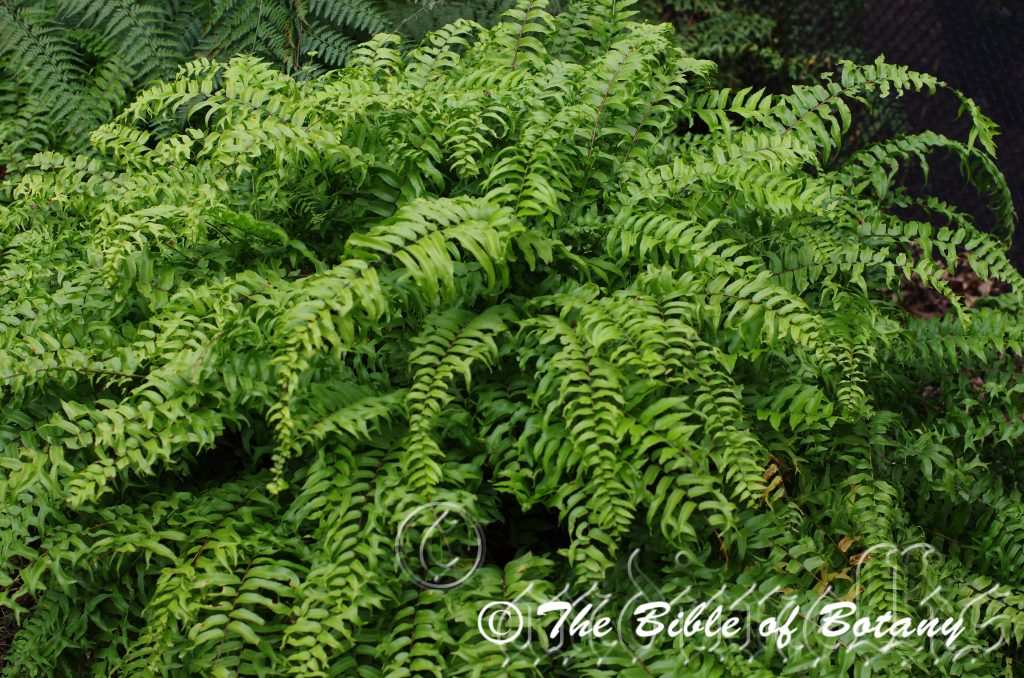
Nephrolepis falcata var. furcans Mount Cootha Botanic Gardens Qld.
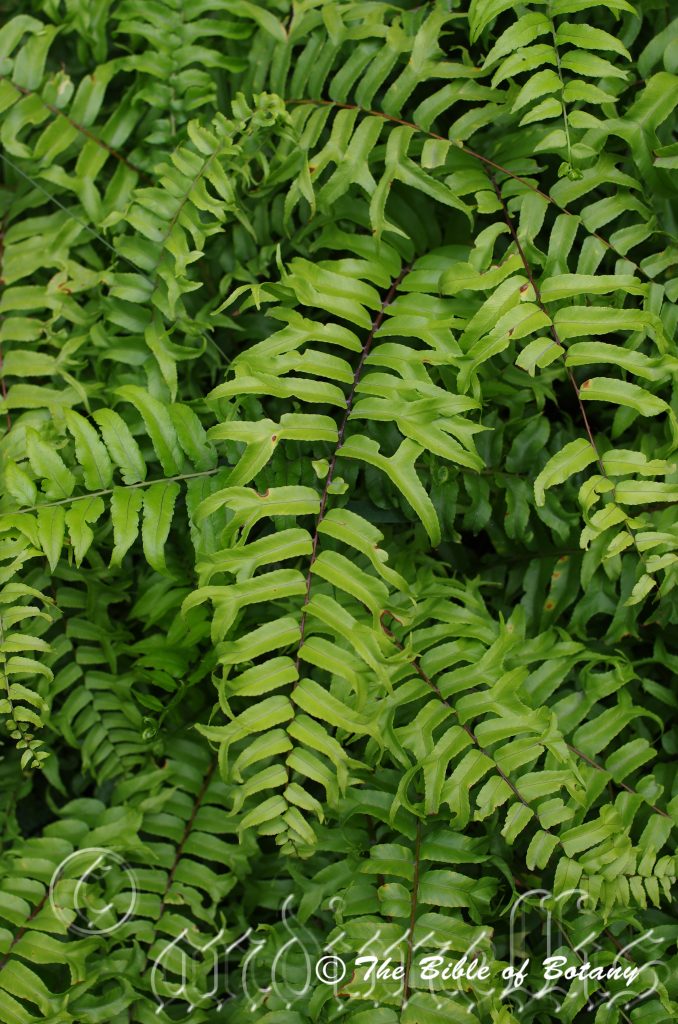
Nephrolepis falcata var. furcans Mount Cootha Botanic Gardens Qld.
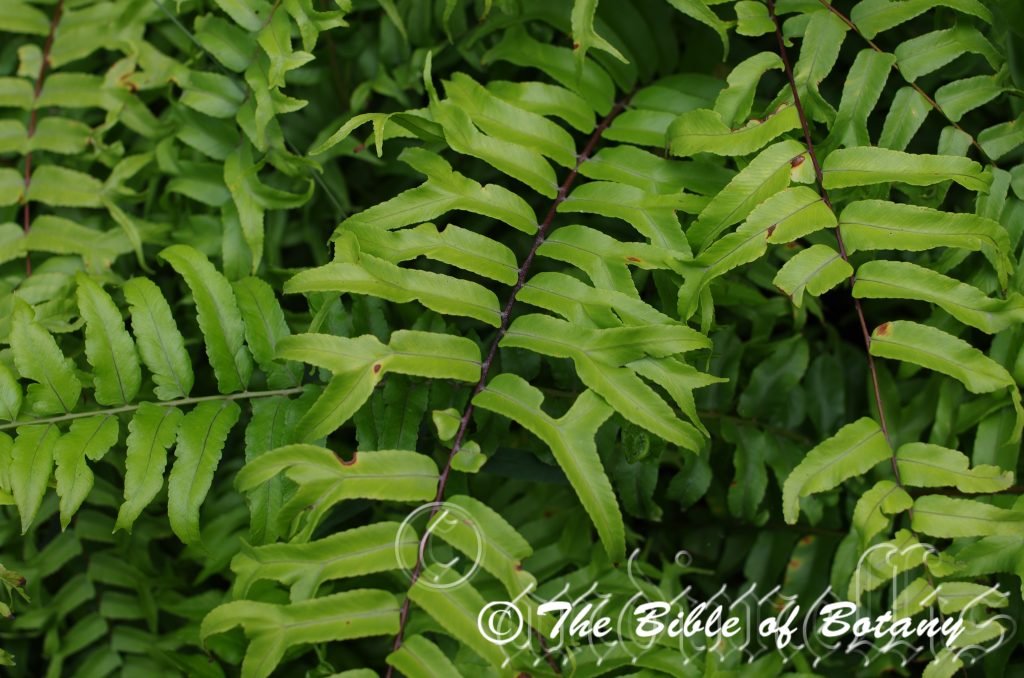
Nephrolepis falcata var. furcans Mount Cootha Botanic Gardens Qld.
Nephrolepis falcata
Classification:
Division: Pteridophyta
Class: Polypodiopsida / Pteridosida (In dispute)
Order: Polypodales
Family: Lomariopsidaceae
Genus: From Nephros, which is Ancient Greek for a kidney and Lepis, which is Ancient Greek for a scale. It refers to the indusium scales covering the spores, which are the shape or form of a kidney.
Specie: From Falcata, which is Latin for a scythe or sickle shape. It refers to leaves, which have a shape like the scythe or sickle shape.
Sub species:
Common Name: Fishbone Fern.
Distribution:
Nephrolepis falcata is widespread specie from Asia to New Guinea. It has not been positively found naturally in Australia to date however recent fossil finds indicate it was native in the recent past on Cape York Peninsula.
https://avh.ala.org.au/occurrences/search?taxa=Nephrolepis+falcata#tab_mapView
Habitat Aspect Climate:
Nephrolepis falcata prefers light dappled shade to full shade. It grows along creeks and seepages on sandstone cliffs as a lithophyte or epiphyte in rainforests.
The temperatures range from 7 degree in August to 40 degrees in January.
The rainfall ranges from lows of 1800mm to an average of 3600mm.
Soil Requirements:
Nephrolepis falcata prefers poor to better sandy loams to medium clays. The soils are usually derived from decomposed sandstones, brown and black basalts granites or alluvial deposits. The soils pH. ranges from 5.5pH to 7pH. It does not tolerate waterlogged soils but prefers soils that are moist throughout the year. Non saline soils to moderately saline soils are tolerated.
Height & Spread:
Wild Plants: 1m to 1.5m by 1m to 3m.
Characteristics:
Nephrolepis falcata’s deep brown-black rhizomes are slender, wiry and measure 3mm to 5mm in diameter. They are deep brown to brown-black and glabrous. The new stipes and rachis are deep ochre-brown to brown and glabrous.
The erect single pinnate fronds grow out in clusters at the ends of the short rhizome and measure 180mm to 1000mm in length by 100mm to 220mm in width becoming wider as they approach the middle of the rachis. The pinnules are divided on the apical half with the lobes often being divided again.
The sterile linear pinnae measure 20mm to 110mm in length by 10mm to 22mm in width near the base. The bases are truncate and are widest in the basal sections of the frond while the apexes are acute. The margins are sinuate to crenate. The mid vein is strongly prominent on the lower surface and sparsely covered in short rusty-brown scales or short hirsute hairs.
The fertile fronds are similar to the sterile fronds but differ in that they measure 35mm to 115mm in length by 5mm to 15mm in width near the base. The margins are more likely to be sinuate than crenate. The sori generally irregularly spaced along both margins while the indusium are reniform.
Wildlife:
Nephrolepis falcata wildlife relationships are unknown to the author.
It is unknown whether the fern has tubers and if it does whether they are edible or toxic.
Cultivation:
Nephrolepis falcata is a large often very dense foliage more divaricate in habit than the others in the genre. It is a suitable fishbone fern for courtyards or in the garden where moist bright airy conditions prevail. It is an excellent fern for pool sides both in the ground and in hanging baskets, as they can handle some full sun, salt spray and neglect, recovering very quickly. If neglected for a short period of time cut them back severely to just above the crowns. Give them a good soaking with a dose of our recommended fertilizing program a week apart. This will see the plants recover in a week or two.
It is a beautiful fern for using in fibre baskets rather than plastic so their aerial roots can be free to breathe.
It can be used in more open positions in the garden where full sun is received during part of the day or placed in the fork of a large tree. When placing plants in a fork of a tree ensure that there is plenty of packed peat around the roots to give them a good start. Make sure the peat does not dry out as it will be very difficult to rewet. Regular watering with a mixed organic fertilizer will ensure good growth with longer fronds with good colour. Drip irrigation is highly recommended and beneficial to the plants grown as epiphytes. Select trees that are known for harbouring epiphytes so root toxins do not accumulate causing sickness or death in the long term.
Propagation:
Spores: All ferns that are declared rare, vulnerable or endangered are protected by Federal and State Laws and must not be removed from the wild unless you are a land developer, mining company or main Roads department etc. This includes bulbs, roots, leaves and flowers. No part of any plant can be removed from Federal, State or Local Government land without the prior permission of the authority and this includes the spore.
Most people are put off at the thought of growing ferns from spore. Like all plants that produce their offspring from seed or spore the methods are basically the same. Remember nature has been doing this for millions of years and has been very successful. I have had excellent results growing over 200 different species of Australian ferns so don’t be afraid. Give it a go.
Step 1. Select spore from the fern fronds. Wait until the fern is just starting to release its spore. Rinse the fronds under clean running water and dry. This is to wash off any other spores from rogue ferns that may have settled onto the fronds. (There is nothing worse than having common brake or common soft bracken contaminating a prized tree fern or epiphyte.)
Step 2. Place the dry fronds in a clean brown paper bag and keep them in a cool dark place like the linen closet for about a week to ten days before you are ready to sow the spore. The exception to this rule applies to ferns, which produce green spores. These must be sown immediately that they are released. Todea Barbara is a good example of a fern, which produces green spore.
Step 3. Take a large ice cream container, a small ice cream container and a clean clear plastic bag large enough to seal the large ice cream container and three or four milk bottle tops.
Step 4. Punch or drill 6 to 10 5mm holes in the bottom of the small ice cream container.
Step 5. Wash both containers, tops and plastic bag so that they are very clean and sterile.
Step 6. Use a clean fine seed raising mi. We used 30mm fine sand, 30mm peat and 30mm perlite and 10mm vermiculite. We used crushed basalt, crusher dust and peat in a 50:50 ratio for epiphytes. Moisten the mix enough that water does not run out when the mix is squeezed between the fingers.
Step 7. Place the moisten mix (Enough to half fill the small ice cream container) in the microwave oven with a large glass of water for 7 or 8 minutes, until the water is boiling. Allow them to cool in the oven. You will need the water later so do not tip it out.
Step 8. Take the brown paper bag out of the linen closet. Shake the bag and remove the fronds. You should have a yellow, brown, black or rarely greenish brown or ochre powder or very fine, small round pin head size spore depending on the specie involved.
Step 9. Remove the mixture from the oven once it has cooled and place it in the small ice cream container and level.
Step 10. Sprinkle the spore sparsely over the mixture in the small ice cream container.
Step 11. Place the milk bottle tops in the large ice cream container with the flat surface facing down. Place the small ice cream container in the large ice cream container so that it is sitting on the milk bottle tops.
Step 12. Remove the water from the microwave and pour it into the larger ice cream container so there is 25mm to 30mm of water in the bottom.
Step 13. Place the ice cream containers in the plastic bag and seal. Step 14. Place the contents and bag in a warm shady place preferably 50mm to 70mm shade depending on the specie. Shade houses and some window sills are ideal.
Step 15. The surface should turn green within a week to two weeks. The prothallus will then develop. From the prthalus the first true fronds will appear. Wait until the ferns are 20mm to 35mm in height before you attempt to transplant them. Once they are ready open the bag up slightly and allow the air to flow around the little ferns. Every 3 to 5 days open the bag a little further so the ferns get use to their new environment. Allow them a week to two weeks to harden off before you transplant them following the removal of the plastic bag. Carefully prick them out into 50mm standard squat tubes as you would any seedling.
Do not try to transplant them as single plants as they are still a little delicate still.
Once the smaller ones again reach 50mm to 70mm you may wish to divide the stronger and hardier individual plants into smaller clumps in 100mm squat pots.
Step 16. We fertilized with seaweed, fish emulsion or organic chicken pellets soaked in water on an alternate basis until established. Fertilize every two months for one year even when in the ground.
Division or from runners? Planting runners is another method in which some plants can be propagated asexually. A plant runner is a rapidly growing stem that grows above the ground, on or just below the soil surface. The stock plant usually produces a set number of runners which eventually, produces new individuals from the tips of their nodes. As the new plant is slowly developing, the stems of the plant continue to take advantage of the rich soil and grow, while the rhizomes begin to get stronger and support the newly created offspring. These can be severed and placed in a pot, after the fronds have been cut off at around 50mm above the runner’s new crown. Keep moist and maintain a warm humid position for a few weeks until the new roots and new fronds have fully developed then plant out or pot up. A tip for increasing warmth and humidity is to place the pots with their runners in a plastic bucket. Place the bucket in a warm position where it gets a little morning and or afternoon sun. Now place an old clear or opaque plastic shopping size bag around the top of the bucket. This will act like a mini hot house.
Further Comments from Readers:
Hi reader, it seems you use The Bible of Botany a lot. That’s great as we have great pleasure in bringing it to you! It’s a little awkward for us to ask, but our first aim is to purchase land approximately 1,600 hectares to link several parcels of N.P. into one at The Pinnacles NSW Australia, but we need your help. We’re not salespeople. We’re amateur botanists who have dedicated over 30 years to saving the environment in a practical way. We depend on donations to reach our goal. If you donate just $5, the price of your coffee this Sunday, We can help to keep the planet alive in a real way and continue to bring you regular updates and features on Australian plants all in one Botanical Bible. Any support is greatly appreciated. Thank you.
In the spirit of reconciliation we acknowledge the Bundjalung, Gumbaynggirr and Yaegl and all aboriginal nations throughout Australia and their connections to land, sea and community. We pay our respect to their Elders past, present and future for the pleasures we have gained.
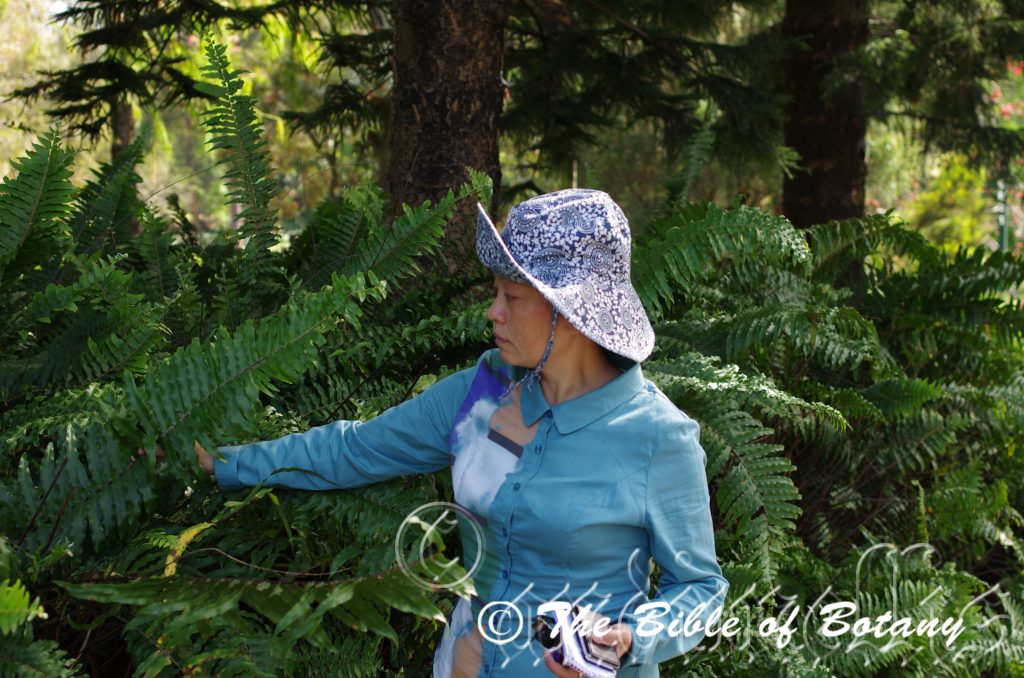
Mount Cootha Botanic Gardens Qld.
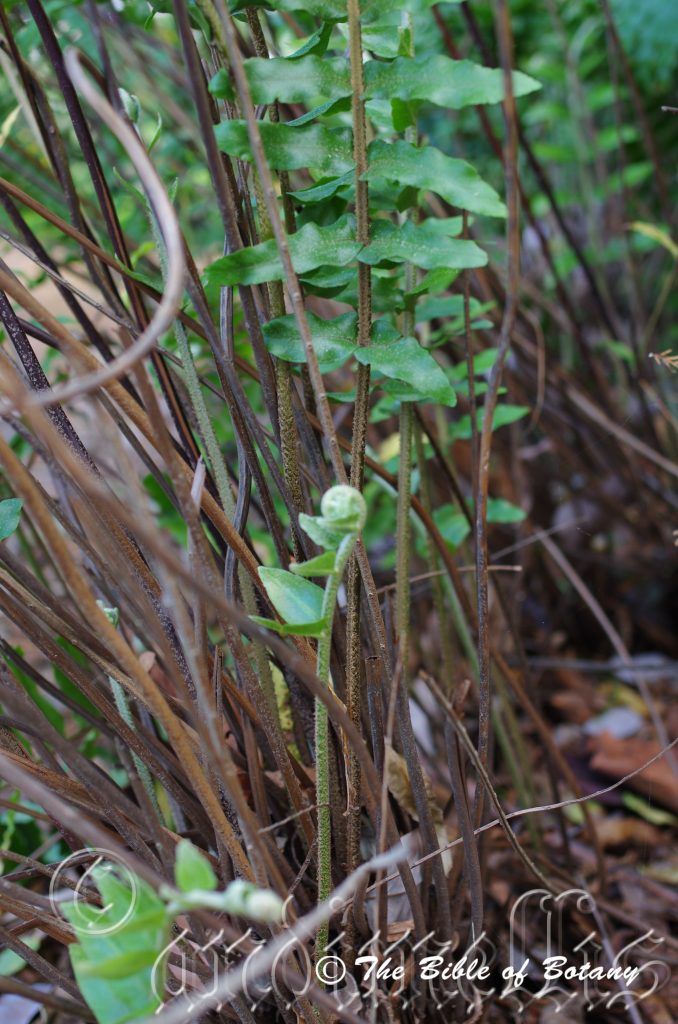
Mount Cootha Botanic Gardens Qld.
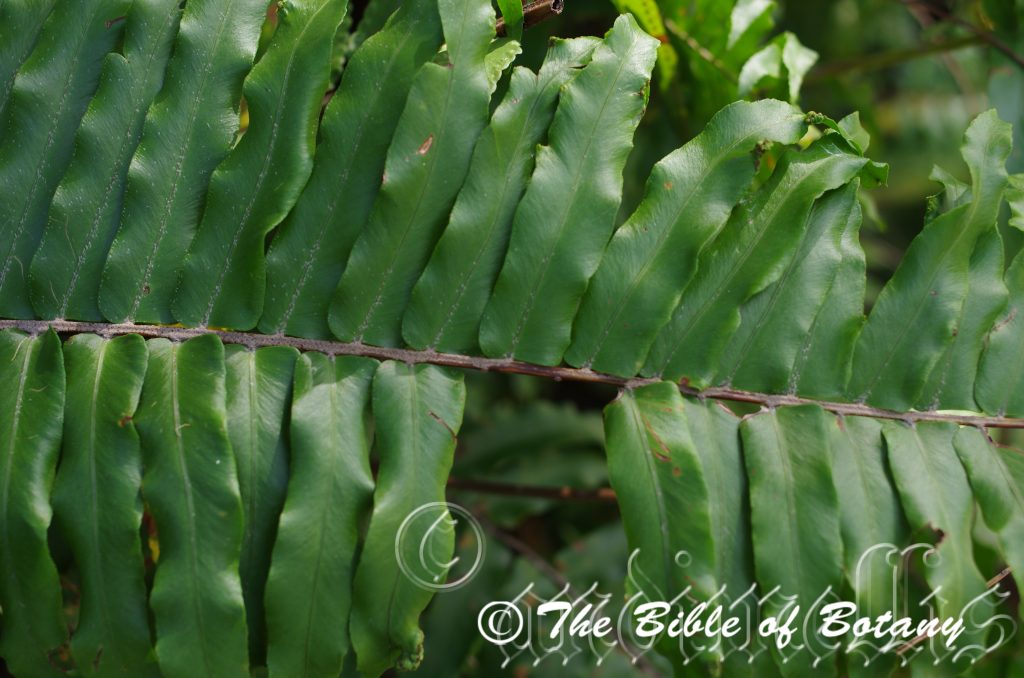
Mount Cootha Botanic Gardens Qld.
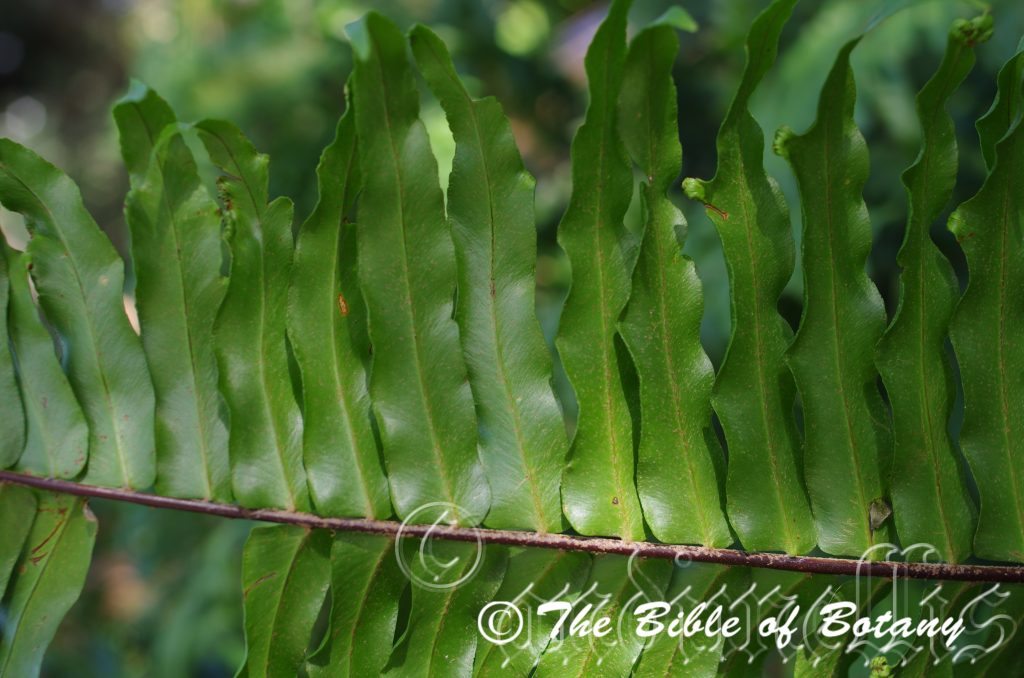
Mount Cootha Botanic Gardens Qld.
Nephrolepis hirsutula
Classification:
Division: Pteridophyta
Class: Polypodiopsida / Pteridosida (In dispute)
Order: Polypodales
Family: Lomariopsidaceae
Genus: From Nephros, which is Ancient Greek for a kidney and Lepis, which is Ancient Greek for a scale. It refers to the indusium scales covering the spores, which are the shape or form of a kidney.
Specie: From Hirsutus which is Latin for a hairy and shaggy. It refers to structures or organs, which have long, shaggy often coarse looking hairs.
Sub species:
Common Name: Fishbone Fern.
Distribution:
Nephrolepis hirsutula is a widespread species which is found in at least 8 disjunct locations in Queensland, the Northern Territory and Western Australia. On its present known distribution I would suspect that it is more widespread and common than it appears at first sight.
The Western Australia’s populations are known from the Ord River and the entire length of the Kimberley National Park on the coastal side.
In the Northern Territory it is found east from around Darwin to the north western parts of Kakadu National Park and the Islands along the north coast with a population near the border to Bundjamulla National Park (Home Hill).
In Queensland it is found south from the Torres Strait Islands to the Fitzroy River. It is also found on the Hinchinbrook group of islands, Green Island and possibly other Islands off the Queensland coast and inland to the Carnarvon Gorge National Park.
https://avh.ala.org.au/occurrences/search?taxa=Nephrolepis+hirsutula#tab_mapView
Habitat Aspect Climate:
Nephrolepis hirsutula prefers light dappled shade to full shade. It grows along creeks and seepages on sandstone cliffs in the west in arid or monsoonal areas of northern Australia. In the east it favours cool, moist tropical rainforests, drainage lines and seepages near cliffs, growing as a terrestrial fern, epiphytic fern or lithophytic fern on sandstones or brown basalts. The altitude ranges from 2 meter ASL to 600 meters ASL.
The temperatures range from minus 7 degree in August to 43 degrees in January.
The rainfall ranges from lows of 850mm to an average of 3200mm.
Soil Requirements:
Nephrolepis hirsutula prefers poor better sandy loams to medium clays. The soils are usually derived from decomposed sandstones, brown and black basalts granites or alluvial deposits. The soils pH. ranges from 5.5pH to 6.5pH. It does not tolerate waterlogged soils but prefers soils that are moist throughout the year. Non saline soils to moderately saline soils are tolerated.
Height & Spread:
Wild Plants: 1m to 1.5m by 1m to 3m.
Characteristics:
Nephrolepis hirsutula’s deep brown-black rhizomes are slender, wiry and measure 3mm to 5mm in diameter. They are densely covered in long white linear scales which turn rusty–brown with age. The new stipes are covered in white linear to villose scales which age to a rusty brown to mid fawn colour. The scales measure 5mm to 10mm long by1mm wide. They will occasionally develop starchy ovoid tubers along the horizontal rhizomes which are below the surface. These tubers will be covered in rusty-brown scales.
The mid green rachis turns rusty brown on maturing and is densely covered in short rusty-brown linear hirsute to villose scales. The erect single pinnate fronds grow out in clusters at the ends of the short rhizome and measure 1250mm to 1700mm in length by 80mm to 140mm in width becoming wider as they approach the middle of the rachis.
The sterile linear pinnae measure 20mm to 110mm in length by 10mm to 20mm in width near the base. They are widest in the middle sections of the frond. The apex is acute to obtuse. The base has a broad lanceolate auricle on both margins. This is longer on the upper margin where it lies along the rachis. The margins are sinuate to crenate. The mid vein is prominent on the lower surface and sparsely covered in short rusty-brown scales or short hirsute hairs.
The fertile fronds are similar to the sterile fronds but differ in that they measure 35mm to 115mm in length by 5mm to 15mm in width near the base. The margins are more likely to be sinuate than crenate. The sori are at least 2 diameters from the pinnae margin which is the main botanical difference between this fern and Nephrolepis arida. The sori generally irregularly spaced along both margins while the indusium are reniform.
Wildlife:
Nephrolepis hirsutula wildlife relationships are unknown to the author however fronds are at times eaten by an unknown looper caterpillar. Damage is generally minimal and recovery is quick.
It is unknown whether the tubers are edible or toxic.
Cultivation:
Nephrolepis hirsutula is a very large often more open in habit than the others in the genre. It is a suitable fishbone fern for courtyards or in the garden where moist bright airy conditions prevail. It is an excellent fern for pool sides both in the ground and in hanging baskets, as they can handle some full sun, salt spray and neglect, recovering very quickly. If neglected for a short period of time cut them back severely to just above the crowns. Give them a good soaking with a dose of our recommended fertilizing program a week apart. This will see the plants recover in a week or two.
They often reach their full potential from top to bottom of 2600mm by 3000mm wide in just 2 years from small plants in 125mm squat pots. It is best planted in fibre baskets rather than plastic so their aerial roots can be free and breathe.
It can be used in more open positions in the garden where full sun is received during part of the day or placed in the fork of a large tree. When placing plants in a fork of a tree ensure that there is plenty of packed peat around the roots to give them a good start. Make sure the peat does not dry out as it will be very difficult to rewet. Regular watering with a mixed organic fertilizer will ensure good growth with longer fronds with good colour. Drip irrigation is highly recommended and beneficial to the plants grown as epiphytes. Select trees that are known for harbouring epiphytes so root toxins do not accumulate causing sickness or death in the long term.
Propagation:
Spores: All ferns that are declared rare, vulnerable or endangered are protected by Federal and State Laws and must not be removed from the wild unless you are a land developer, mining company or main Roads department etc. This includes bulbs, roots, leaves and flowers. No part of any plant can be removed from Federal, State or Local Government land without the prior permission of the authority and this includes the spore.
Most people are put off at the thought of growing ferns from spore. Like all plants that produce their offspring from seed or spore the methods are basically the same. Remember nature has been doing this for millions of years and has been very successful. I have had excellent results growing over 200 different species of Australian ferns so don’t be afraid. Give it a go.
Step 1. Select spore from the fern fronds. Wait until the fern is just starting to release its spore. Rinse the fronds under clean running water and dry. This is to wash off any other spores from rogue ferns that may have settled onto the fronds. (There is nothing worse than having common brake or common soft bracken contaminating a prized tree fern or epiphyte.)
Step 2. Place the dry fronds in a clean brown paper bag and keep them in a cool dark place like the linen closet for about a week to ten days before you are ready to sow the spore. The exception to this rule applies to ferns, which produce green spores. These must be sown immediately that they are released. Todea Barbara is a good example of a fern, which produces green spore.
Step 3. Take a large ice cream container, a small ice cream container and a clean clear plastic bag large enough to seal the large ice cream container and three or four milk bottle tops.
Step 4. Punch or drill 6 to 10 5mm holes in the bottom of the small ice cream container.
Step 5. Wash both containers, tops and plastic bag so that they are very clean and sterile.
Step 6. Use a clean fine seed raising mi. We used 30mm fine sand, 30mm peat and 30mm perlite and 10mm vermiculite. We used crushed basalt, crusher dust and peat in a 50:50 ratio for epiphytes. Moisten the mix enough that water does not run out when the mix is squeezed between the fingers.
Step 7. Place the moisten mix (Enough to half fill the small ice cream container) in the microwave oven with a large glass of water for 7 or 8 minutes, until the water is boiling. Allow them to cool in the oven. You will need the water later so do not tip it out.
Step 8. Take the brown paper bag out of the linen closet. Shake the bag and remove the fronds. You should have a yellow, brown, black or rarely greenish brown or ochre powder or very fine, small round pin head size spore depending on the specie involved.
Step 9. Remove the mixture from the oven once it has cooled and place it in the small ice cream container and level.
Step 10. Sprinkle the spore sparsely over the mixture in the small ice cream container.
Step 11. Place the milk bottle tops in the large ice cream container with the flat surface facing down. Place the small ice cream container in the large ice cream container so that it is sitting on the milk bottle tops.
Step 12. Remove the water from the microwave and pour it into the larger ice cream container so there is 25mm to 30mm of water in the bottom.
Step 13. Place the ice cream containers in the plastic bag and seal. Step 14. Place the contents and bag in a warm shady place preferably 50mm to 70mm shade depending on the specie. Shade houses and some window sills are ideal.
Step 15. The surface should turn green within a week to two weeks. The prothallus will then develop. From the prthalus the first true fronds will appear. Wait until the ferns are 20mm to 35mm in height before you attempt to transplant them. Once they are ready open the bag up slightly and allow the air to flow around the little ferns. Every 3 to 5 days open the bag a little further so the ferns get use to their new environment. Allow them a week to two weeks to harden off before you transplant them following the removal of the plastic bag. Carefully prick them out into 50mm standard squat tubes as you would any seedling.
Do not try to transplant them as single plants as they are still a little delicate still.
Once the smaller ones again reach 50mm to 70mm you may wish to divide the stronger and hardier individual plants into smaller clumps in 100mm squat pots.
Step 16. We fertilized with seaweed, fish emulsion or organic chicken pellets soaked in water on an alternate basis until established. Fertilize every two months for one year even when in the ground.
Division or from runners? Planting runners is another method in which some plants can be propagated asexually. A plant runner is a rapidly growing stem that grows above the ground, on or just below the soil surface. The stock plant usually produces a set number of runners which eventually, produces new individuals from the tips of their nodes. As the new plant is slowly developing, the stems of the plant continue to take advantage of the rich soil and grow, while the rhizomes begin to get stronger and support the newly created offspring. These can be severed and placed in a pot, after the fronds have been cut off at around 50mm above the runner’s new crown. Keep moist and maintain a warm humid position for a few weeks until the new roots and new fronds have fully developed then plant out or pot up. A tip for increasing warmth and humidity is to place the pots with their runners in a plastic bucket. Place the bucket in a warm position where it gets a little morning and or afternoon sun. Now place an old clear or opaque plastic shopping size bag around the top of the bucket. This will act like a mini hot house.
Further Comments from Readers:
Hi reader, it seems you use The Bible of Botany a lot. That’s great as we have great pleasure in bringing it to you! It’s a little awkward for us to ask, but our first aim is to purchase land approximately 1,600 hectares to link several parcels of N.P. into one at The Pinnacles NSW Australia, but we need your help. We’re not salespeople. We’re amateur botanists who have dedicated over 30 years to saving the environment in a practical way. We depend on donations to reach our goal. If you donate just $5, the price of your coffee this Sunday, We can help to keep the planet alive in a real way and continue to bring you regular updates and features on Australian plants all in one Botanical Bible. Any support is greatly appreciated. Thank you.
In the spirit of reconciliation we acknowledge the Bundjalung, Gumbaynggirr and Yaegl and all aboriginal nations throughout Australia and their connections to land, sea and community. We pay our respect to their Elders past, present and future for the pleasures we have gained.
Nicotiana forsteri
Classification:
Unranked: Charophyta
Class: Equistetopsida
Subclass: Magloliideae
Superorder: Asteraneae
Order: Solanales
Family: Solanaceae
Genus: Is named in honour of Jaques Nicot; 1530-1600, who first introduced the plant and tobacco for smoking into France and Europe.
Specie: Is named in honour of the German naturalists Johann Reinhold Forster; 1729-1798, and his son, Johann Georg Adam Forster; 1754-1794 who were Polish explorers and botanical artists.
Sub species:
Common Name:
Distribution:
Nicotiana forsteri is found south from the tip of Cape York Peninsula in far north eastern Queensland to Kiama in central coastal New South Wales.
https://avh.ala.org.au/occurrences/search?taxa=Nicotiana+forsteri#tab_mapView
Habitat Aspect Climate:
Nicotiana forsteri prefers light dappled shade to full shade. It grows along creeks alluvial flats, in littoral rainforests, dry warm rainforests or moist warm sclerophyll forests. The altitude ranges from 5 meter ASL to 750 meters ASL.
The temperatures range from minus 2 degrees in August to 38 degrees in January.
The rainfall ranges from lows of 700mm to an average of 3200mm.
Soil Requirements:
Nicotiana forsteri prefers peaty sands, better quality sandy loams to medium clays. The soils are usually derived from decomposed brown basalts, black basalts, granites, shale, metamorphic rocks, better quality sandstones, alluvial flats or accumulated beach sands. The soils pH. ranges from 5pH to 7pH. It does not tolerate waterlogged soils. Non saline soils to moderately saline soils are tolerated.
Height & Spread:
Wild Plants: 1m to 1.5m by 1m to 2m.
Characteristics:
Nicotiana forsteri’s stems are pale green to pale grey-green and sparsely to moderately covered in white pulverulent hairs.
Nicotiana forsteri’s simple elliptical, broad lanceolate to obovate base leaves measure 150mm to 250mm in length by 18mm to 140mm in width. The bases are attenuate or auriculate while the apexes are acuminate to broadly acuminate. The concolourous laminas are pale green to pale grey-green, dull and sparsely to densely covered in white pubescent hairs. The margins are entire. The mid vein and two main lateral veins are strongly prominent on the lower lamina and slightly prominent on the upper lamina. The veins are sparsely covered in fawn to pale rusty-brown tomentose hairs.
The inflorescences of Nicotiana forsteri is a panicle born from the upper leaf axils and old leaf scars. The peduncle, rachis and pedicel are sparsely to moderately covered in short white pulverulent hairs. The peduncle measures 1mm to 2mm in length while the pedicels measure 2mm to 4mm in length. There are 6 to 10 individual flowers to an umbel. The 4 or 5 fawn lanceolate calyx lobes are covered in short fawn sericeous hairs and measure 2.5mm to 3mm in length. The 5 inserted obcordate petals are glabrous and cream to pale yellow in colour and measure less than 1mm in diameter. The single locule ovary and perianth are glabrous. The 5 cream to pale yellow stamens measure 2mm to 2.5mm in length while the white to cream styles measure less than 2.5mm to 3mm in length. The sweetly scented flowers appear from December to February.
The pale green to pale grey-green calyxes measure 4mm to 10mm in length. The white, funnel form corolla tubes are sparsely covered in white puberulent hairs externally and are glabrous internally. The calyx tube measures 10mm to 25mm in length by 1.5mm to 3mm in diameter near the base and 5mm to 6mm near the throat. The 4 lobes are broad, obtuse, glabrous and fused for half their length. They measure 4.5mm to 6mm in length by 5mm to 7mm in width.
The upper 4 anthers at the same level or nearly so; The 4 filaments are joined to the lower half of the corolla tube so that the anthers are level with the throat. The white filaments measure 4mm to 11mm in length while the fawn anthers are spherical.
Nicotiana forsteri’s fruits are ellipsoidal to ovoidal capsules. The green capsules turn deep grey when ripe. They measure 5mm to 11mm in length by 4mm to 7mm in diameter. The pale fawnish-ochre seeds are spherical to trapezoidal with a wrinkled or with wavy-edged honeycomb testa.
Confusing Species:
Nicotinia monoschizocarpa is distinguished by its narrower corolla lobes and its capsules have 3 valves.
Wildlife:
Nicotiana forsteri’s wildlife is unknown to the author.
Cultivation:
Nicotiana forsteri makes an excellent plant for semi shady moist areas in the garden. It always look green and fresh especially where adequate ground moisture is retained whether it is grown in light shade or dense shade. It is very suitable on sandy to heavy clay soils and are most suitable for small, medium and large gardens close to the coast in warm temperate, sub-tropical, tropical gardens. As a garden subject it will grow from 0.6 meters to 1 meter in height by 0.8 meters to 1.2 meters in diameter when grown in the open.
It is cold tolerant to temperatures at least as low as minus 2 degrees once established.
It is most suitable for use around swimming pools, bright semi shaded courtyards, besides pathways, shady rockeries, along sandy clay banks or along drive ways or adjacent to natural bush gardens. It is quick growing and looks good surrounded by native annuals.
Propagation:
Nicotiana forsteri seeds can be sown directly into a seed raising mix once the weather warms up. Cover the seeds with 5mm to 10mm of fine weed free mulch and keep moist. Place the tray in a warm sunny position. When the seedlings are 30mm to 50mm tall, prick them out and plant them into 50mm native tubes using a good organic mix.
Once the seedlings reach 100mm to 150mm in height they can be planted out into their permanent position.
Fertilize using seaweed, fish emulsion or organic chicken pellets soaked in water on an alternate basis. Fertilize every two months until the plants are established then twice annually in early September or March to maintain better health, vitality and flowering.
Further Comments from Readers:
Hi reader, it seems you use The Bible of Botany a lot. That’s great as we have great pleasure in bringing it to you! It’s a little awkward for us to ask, but our first aim is to purchase land approximately 1,600 hectares to link several parcels of N.P. into one at The Pinnacles NSW Australia, but we need your help. We’re not salespeople. We’re amateur botanists who have dedicated over 30 years to saving the environment in a practical way. We depend on donations to reach our goal. If you donate just $5, the price of your coffee this Sunday, We can help to keep the planet alive in a real way and continue to bring you regular updates and features on Australian plants all in one Botanical Bible. Any support is greatly appreciated. Thank you.
In the spirit of reconciliation we acknowledge the Bundjalung, Gumbaynggirr and Yaegl and all aboriginal nations throughout Australia and their connections to land, sea and community. We pay our respect to their Elders past, present and future for the pleasures we have gained.
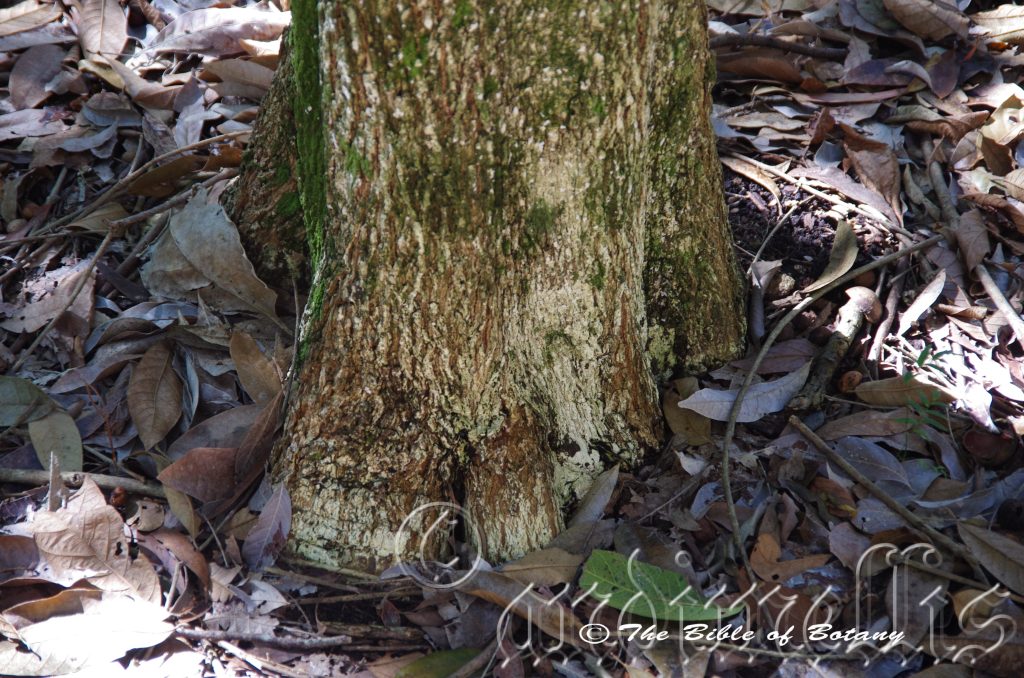
NCBG Coffs Harbour NSW
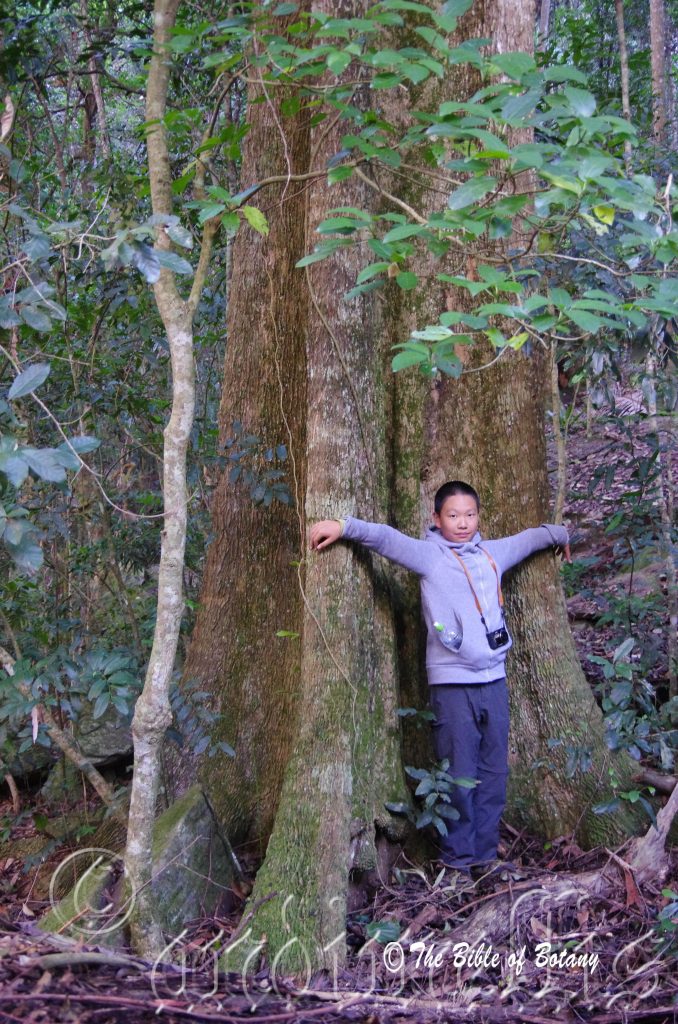
Nana Glen NSW

Nana Glen NSW
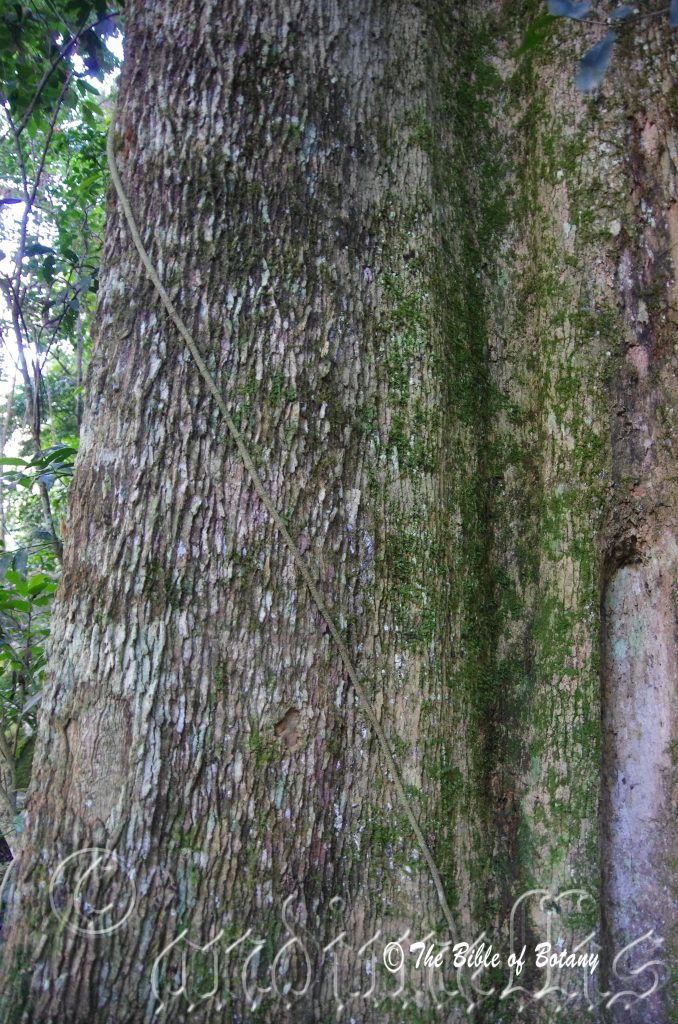
Nana Glen NSW
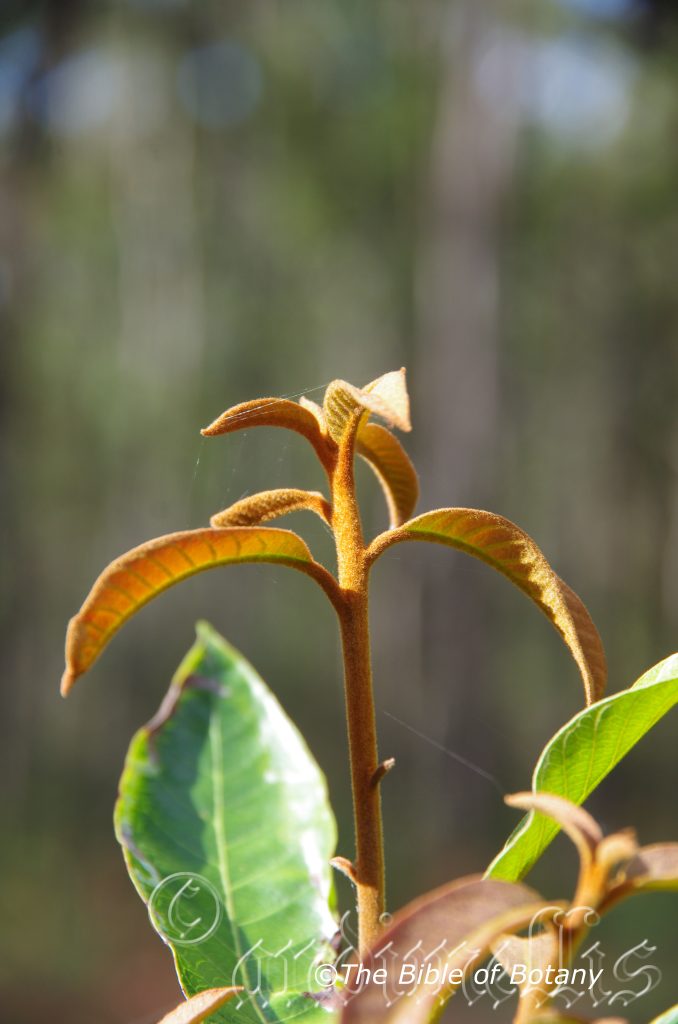
Author’s Garden The Pinnacles NSW
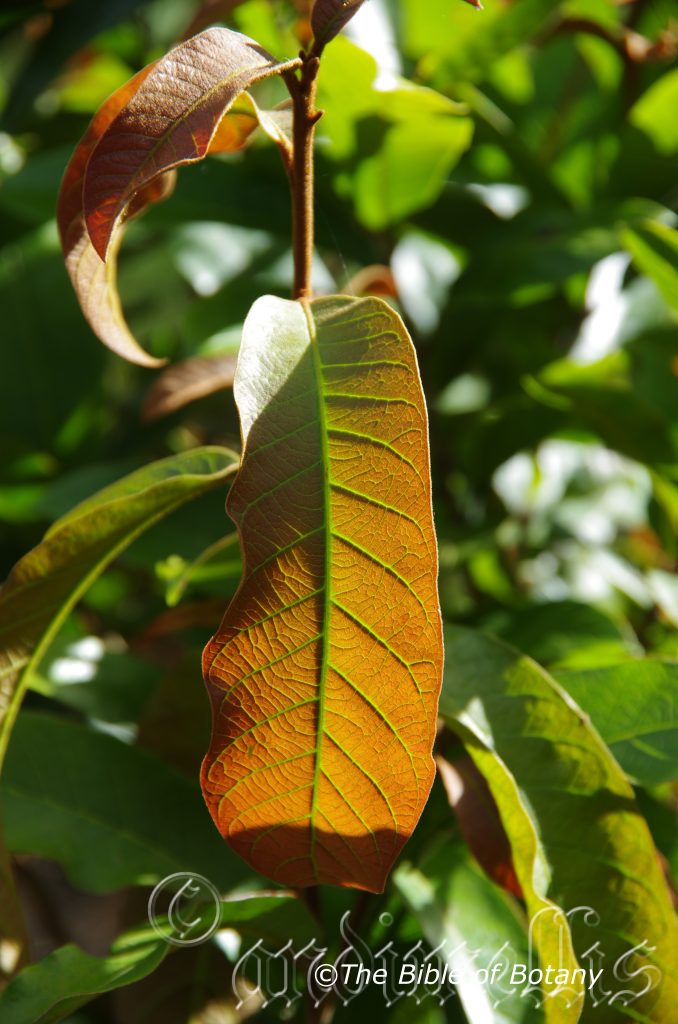
Author’s Garden The Pinnacles NSW
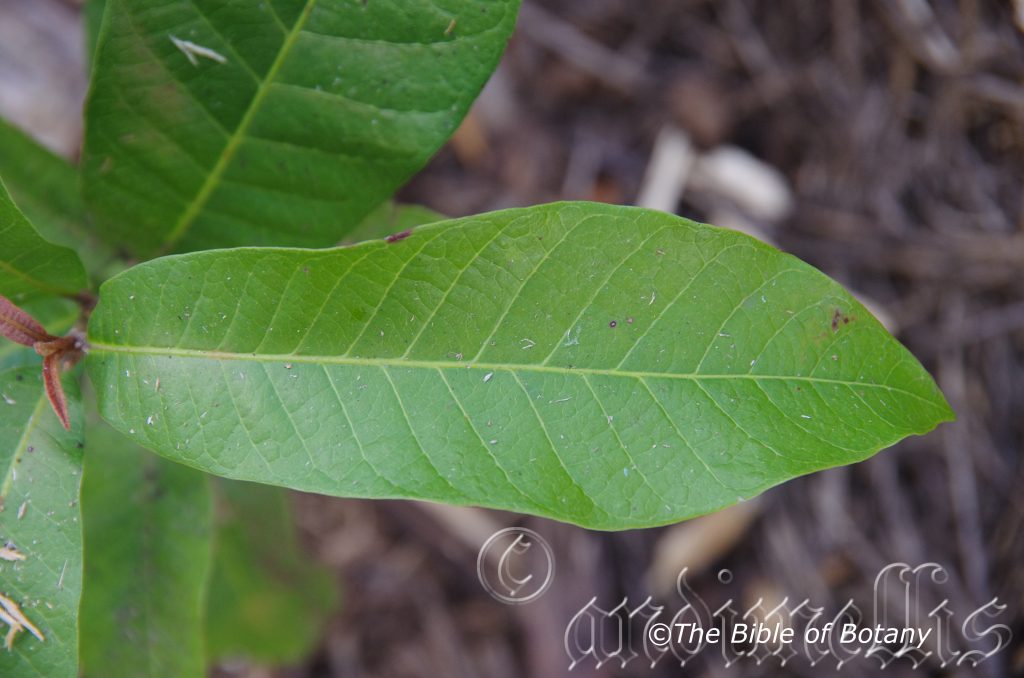
Author’s Garden The Pinnacles NSW
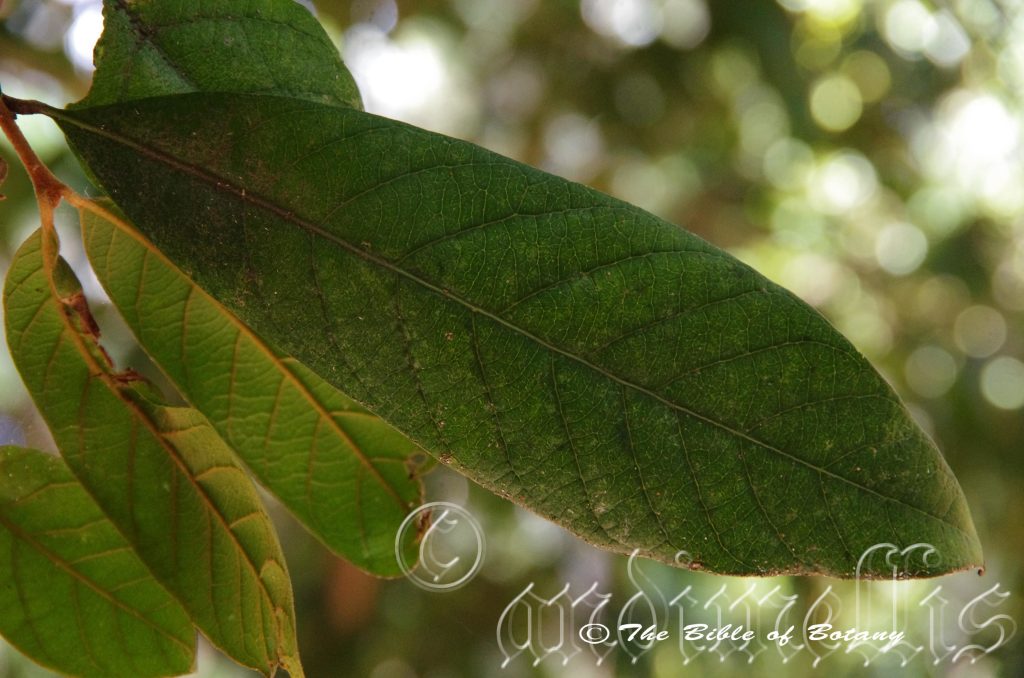
Author’s Garden The Pinnacles NSW
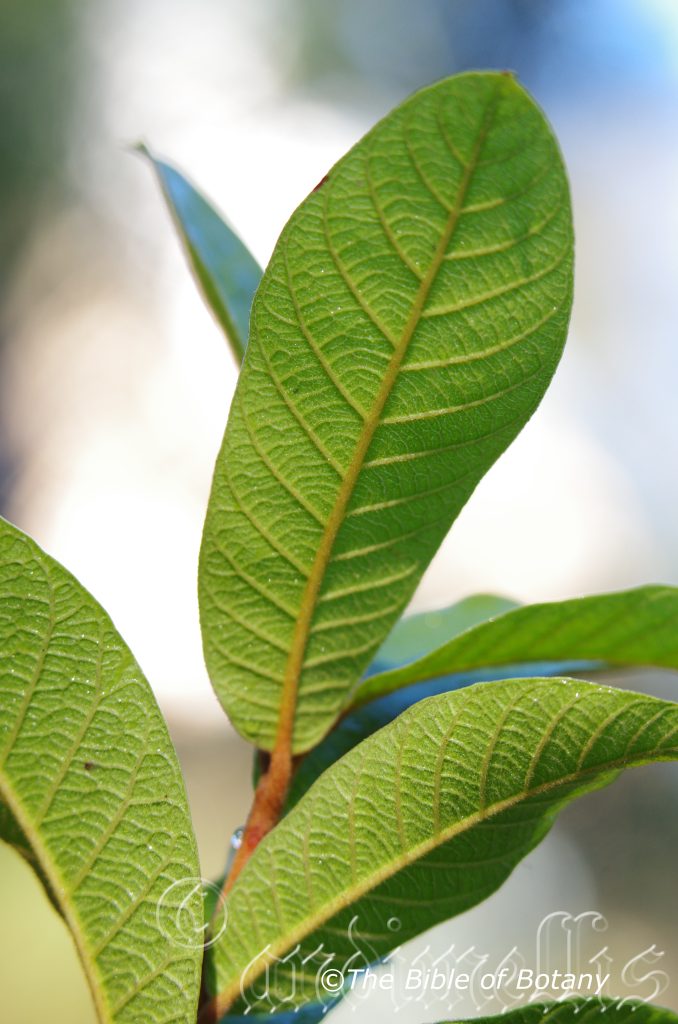
Author’s Garden The Pinnacles NSW
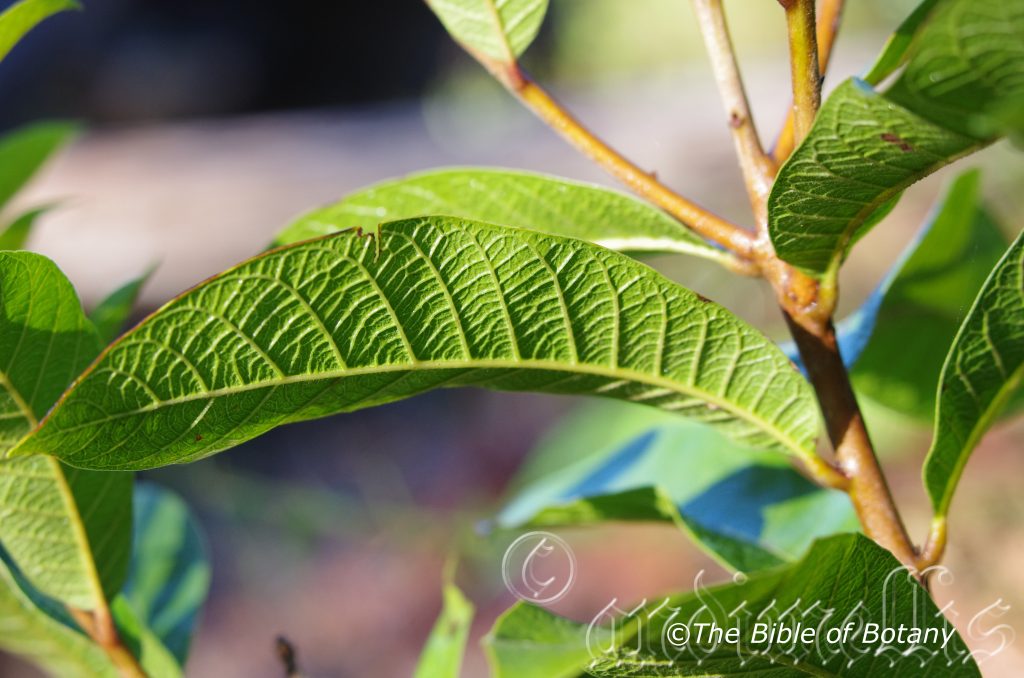
Author’s Garden The Pinnacles NSW
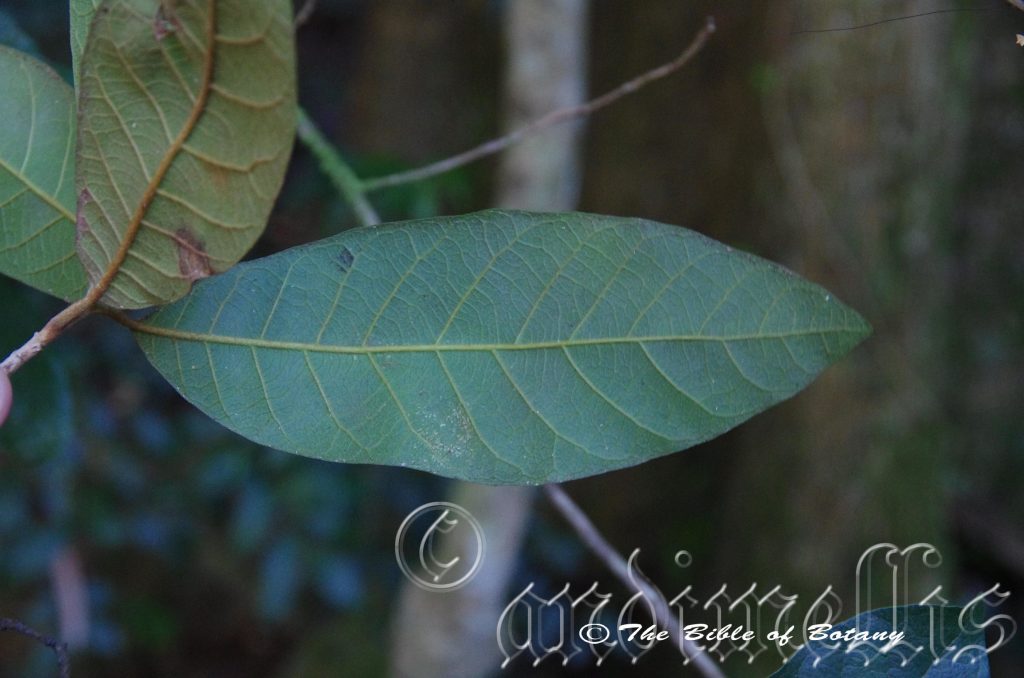
Nana Glen NSW
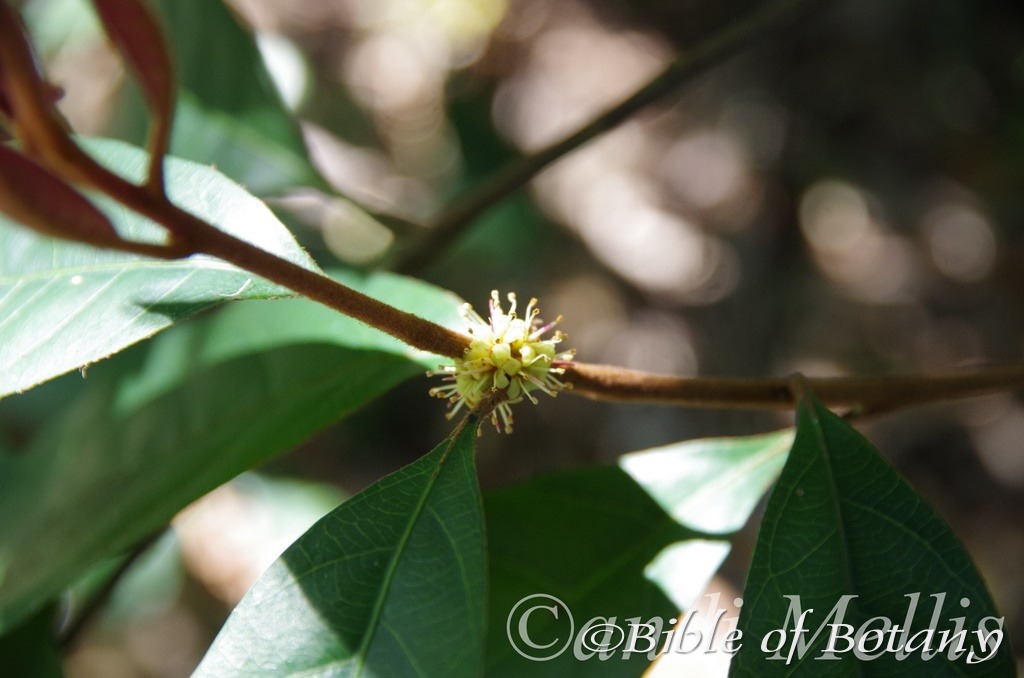
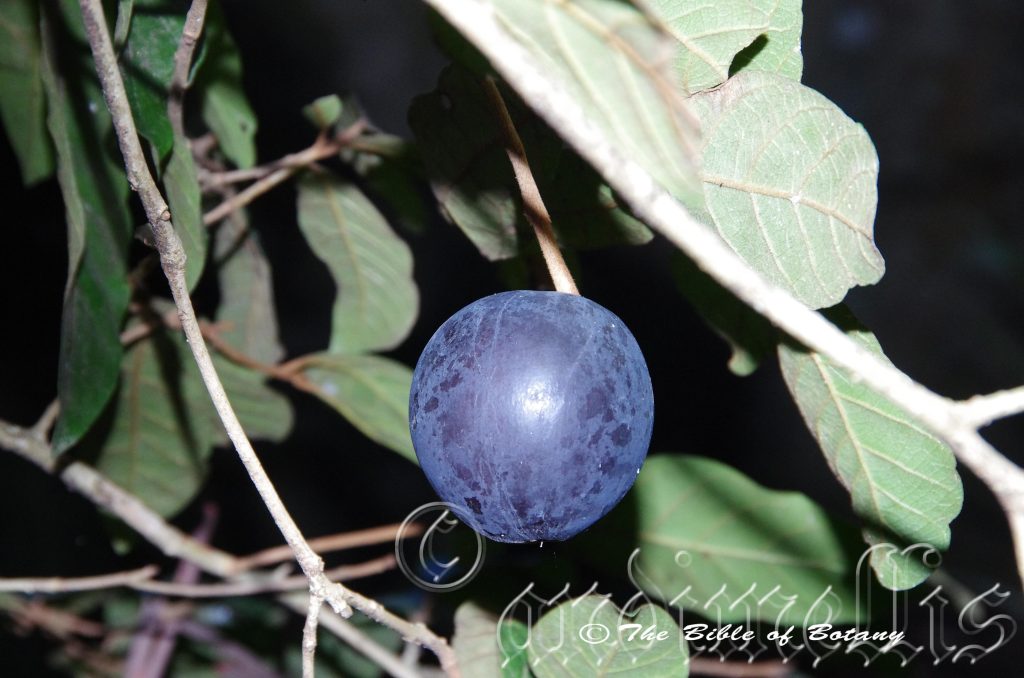
Nana Glen NSW
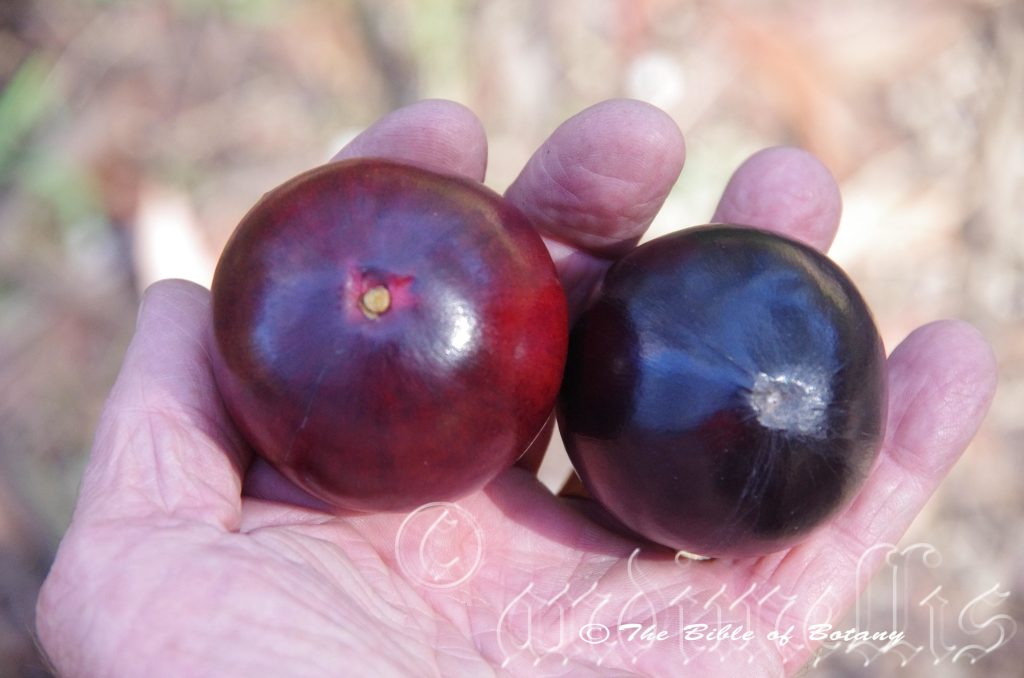
Nana Glen NSW
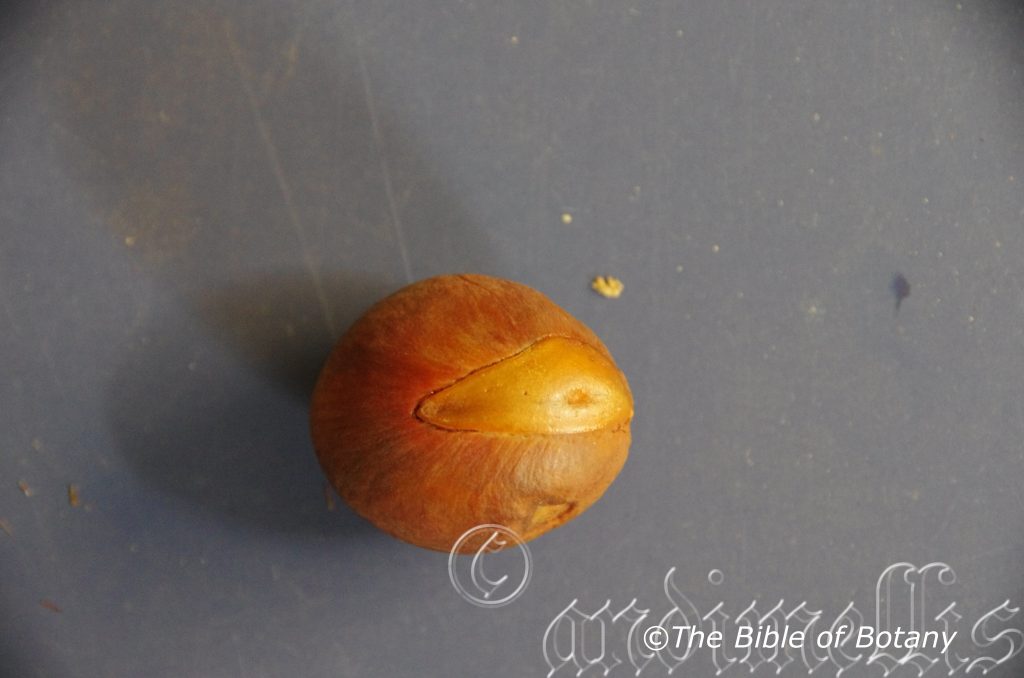
Nana Glen NSW
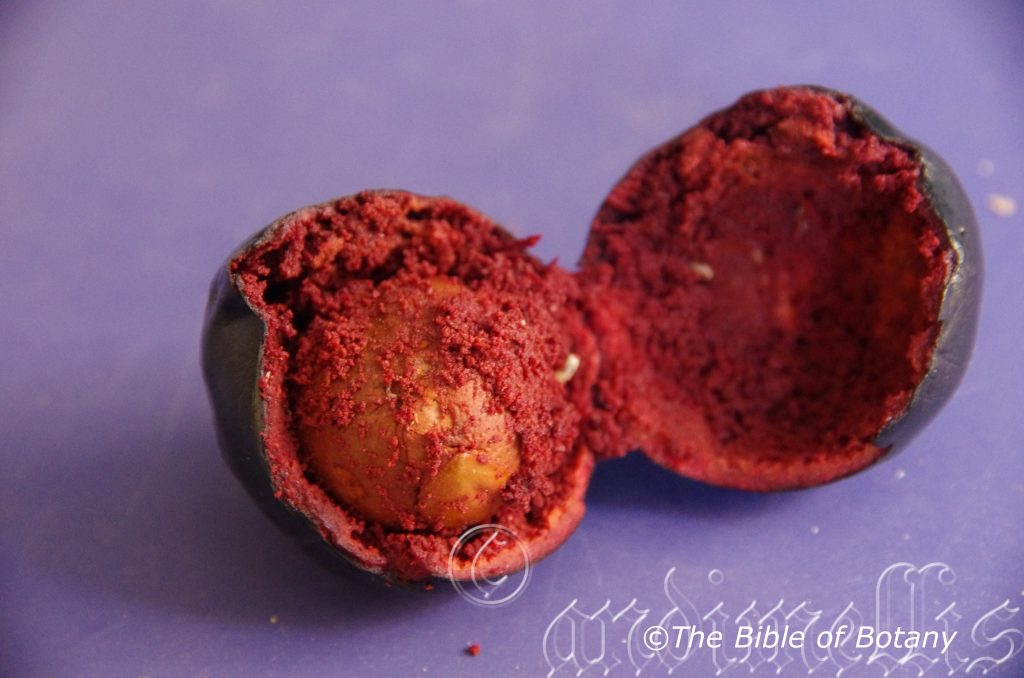
Nana Glen NSW
Niemeyera whitei
Classification:
Unranked: Eudicots
Unranked: Asterids
Order: Ericales
Family: Sapotaceae
Genus: Is named in honour of Dr. Felix von Niemeyer; 1820-1871, who was a German professor of medicine.
Specie: Is probably named in honour of Cyril Tennison White; 1890-1950, who was a Queensland botanist for 35 years.
Sub species:
Common Name: Rusty Plum or Plum Boxwood.
Distribution:
Niemeyera whitei is restricted to a small area south from Upper Tallebudgera Creek in far south eastern coastal Queensland to Dorrigo and Moonee Beach in north eastern coastal New South Wales with an isolated population in far north Queensland on the Windsor Tableland. It is found on and east of the Great Dividing Range.
https://avh.ala.org.au/occurrences/search?taxa=Niemeyera+whitei#tab_mapView
Habitat Aspect Climate:
Niemeyera whitei prefers light dappled shade to full shade. It grows along creeks moist galley forests below cliffs plains in moist warm subtropical rainforests or littoral rainforests. The altitude ranges from 5 meter ASL to 1240 meters ASL.
The temperatures range from minus 4 degrees in August to 38 degrees in January.
The rainfall ranges from lows of 800mm to an average of 3200mm.
Soil Requirements:
Niemeyera whitei prefers better quality sandy loams, sandy screes to light gritty clays. The soils are usually derived from partially decomposed better quality red sandstones, shale or alluvial flats. The soils pH. ranges from 5pH to 6.5pH. It does not tolerate waterlogged soils. Non saline soils to moderately saline soils are tolerated.
Height & Spread:
Wild Plants: 15m to 20m by 7m to 10m.
Characteristics:
Niemeyera whitei’s trunk is grey, glabrous and strongly fluted or irregular trunk. The branchlets are mid grey-brown and glabrous while the new growth is olive-green and densely covered in rusty-red to rusty-brown canescent hairs with a few longer rusty-red to rusty-brown hirsute hairs.
Niemeyera whitei’s coriaceous, oblong-elliptic to oblanceolate leaves measure 50mm to 150mm in length by 20mm to 50mm in width. The petioles are densely covered in rusty-red to rusty-brown canescent hairs and measure 5mm to 10mm in length. The bases are cuneate while the apexes are broad acuminate. The discolourous laminas are deep sea-green, glabrous, semi glossy on the upper lamina while the lower lamina is paler and covered in rusty-red to rusty-brown canescent hairs. The laminas are flat, recurve slightly upwards from the midvein to the margins and are convex between the main vein and lateral veins. The laminas also decurve gently downwards near the apex while the margins are entire. The mid vein and 30 to 40 lateral veins are strongly prominent and covered in rusty-red to rusty-brown canescent hairs on the lower lamina and are clearly visible from the upper lamina.
The juvenile leaves are deep salmon pink to mushroom pink and densely covered in short, soft, rusty-red to rusty-brown canescent hairs.
The inflorescences of Niemeyera whitei are small clusters of 3 or 4 individual flowers in each of the 4 to 15 clusters born along the upper branchlets. The pedicel are sparsely to densely covered in short rusty-red to rusty-brown canescent hairs. The sepals are sparsely to densely covered in short rusty-red to rusty-brown canescent hairs externally and are glabrous internally. The 3 or 4 ovate, white to pastel green petals are glabrous strongly recurved and measure 5mm to 6mm in length by 5mm to 6mm in width.
The usually singular locule or at times twin locule ovary and perianth are glabrous. The 6 white filiform stamens measure 4mm to 5mm in length while the white to cream styles measure less than 2.5mm to 3mm in length. The sweetly scented flowers appear from September to October.
Niemeyera whitei’s fruits are large round drupe. The hard green drupes turn deep purple black to black and soften a little when ripe. The spherical drupes usually measure 20mm to 50mm in diameter or at times to 70mm in diameter. The sepals are not persistent on the drupes. The flesh surrounding the seeds is greenish with red streaks. The deep glossy brown, spherical seed has a prominent elliptical scar and measures 20mm to 30mm in diameter. The fruits ripen from September to November.
Wildlife:
Niemeyera whitei’s fallen fruits are eagerly sought out by the Native Bush Rat (Rattus fuscipes) which distributes the seeds around the forest floor. I would suspect the common Brush Tail Possum (Tricosorus vulpecula), the Black Flying Fox (Pteropus alecto) and the Little Red Flying Fox (Pteropus scapulatus) would also eat the fruits as most fruits on the ground are totally or partially eaten. Many of the fruits are infested with Queensland fruit fly (Bacttocera tryoni).
The fruits are edible for those of us with discerning taste buds. In other words they taste similar to a semi dried plum with the delights of fruit fly maggots inserted giving a smoother somewhat creamy taste. This takes some getting use to but once your mind can handle the thought they are rather pleasant.
Cultivation:
Niemeyera whitei makes an excellent plant for shady areas and as an addition to the rainforests or when starting a small rain forest garden. It always looks green and fresh especially where adequate ground moisture is retained whether it is grown in full sun, light shade or dense shade. It is very suitable on better quality sandy loams to medium clay soils and are most suitable for medium and large gardens close to the coast in warm temperate, sub-tropical, tropical gardens. As a garden subject it will grow from 12 meters to 16 meters in height by 9 meters to 12 meters in diameter when grown in the open on average soils.
It is cold tolerant to temperatures at least as low as minus 2 degrees once established provided it is protected in the early stages. A seedling that was self-sown at Nana Glen in a fertile section of the garden attained a height of 6 meters before it slowed down and began forming a real canopy. This tree was growing in semi shade provided by a very large Eucalyptus saligna, Melaleuca salicina and Araucaria cunninghamii.
Another two we have at The Pinnacles on very poor shallow decomposed sand struggled for the first 2 years attaining just 1.3 meters in height during 2 years of drought. As our organic approach started to kick in we saw over 2 meters gained in height during the next 12 months with a good wet season. These trees were growing beneath the cheese tree, Glochidion ferdinandi.
It most suitable for use as a back drop to provide shade around courtyards, besides pathways, shady rockeries, along sandy clay banks or along drive ways or adjacent to natural bush gardens. Mass plantings of 5 or more plants really would do the plants justification especially along long driveways and when it is in fruit.
It is an ideal plant for growing epiphytic ferns and orchids on while the trunks will develop a multitude of lichens when grown in the shade.
Propagation: Fresh Niemeyera whitei seeds can be sown directly into a seed raising mix, in 50mm or 75mm native. Cover the seeds with 10mm to 15mm of fine weed free mulch and keep moist. Place the tray in a warm position even to the extent of placing the tubes in a bucket with hole drilled in the bottom and covering it with an old plastic bag to help maintain warmth and humidity.
Once the seedlings reach 200mm to 250mm in height they can be planted out into their permanent position.
Fertilize using seaweed, fish emulsion or organic chicken pellets soaked in water on an alternate basis. Fertilize every two months until the plants are established then twice annually in early September or March to maintain better health, vitality and flowering.
Further Comments from Readers:
Hi reader, it seems you use The Bible of Botany a lot. That’s great as we have great pleasure in bringing it to you! It’s a little awkward for us to ask, but our first aim is to purchase land approximately 1,600 hectares to link several parcels of N.P. into one at The Pinnacles NSW Australia, but we need your help. We’re not salespeople. We’re amateur botanists who have dedicated over 30 years to saving the environment in a practical way. We depend on donations to reach our goal. If you donate just $5, the price of your coffee this Sunday, We can help to keep the planet alive in a real way and continue to bring you regular updates and features on Australian plants all in one Botanical Bible. Any support is greatly appreciated. Thank you.
In the spirit of reconciliation we acknowledge the Bundjalung, Gumbaynggirr and Yaegl and all aboriginal nations throughout Australia and their connections to land, sea and community. We pay our respect to their Elders past, present and future for the pleasures we have gained.
Nitraria billardierei
Classification:
Unranked: Eudicots
Unranked: Rosids
Order: Sapindales
Family: Nitrariaceae
Genus: Nitraria maybe Latinised from the word nitrate. The first plants studied showed a reduction in plasma levels of creatinine, urea, uric acid all of which contain nitrates.
Specie: Is named in honour of Jacques-Julien Houtou de Labillardière; 28.10.1755 – 8.01.1834, who was a French biologist noted for his descriptions of the flora of Australia. He was a member of a voyage in search of the La Perouse expedition. He published a popular account of his journey and produced the first Flora on the region.
Sub species:
Common Name: Nitra Bush, Wild Grape or Dillon Bush.
The aboriginal name for the fruit is karrambi
Distribution:
Nitraria billardierei is a wide spread species from Cape Range Peninsula in central western, Western Australia around the coast to Discovery bay in south western Victoria. It is also found further inland to the Finke River in the Northern Territory and scattered through western, New South Wales and to Tambo in south western Queensland.
https://avh.ala.org.au/occurrences/search?q=taxamm3Amm22Nitraria+billardierei22#tab_mapView
Habitat Aspect Climate:
Nitraria billardierei prefers light dappled shade to full shade. It grows on frontal dunes and behind the frontal dunes, sandy plains in semi-arid to arid areas. The altitude ranges from 2 meter ASL to 780 meters ASL.
The temperatures range from minus 4 degrees in August to 38 degrees in January.
The rainfall ranges from lows of 150mm to an average of 850mm.
Soil Requirements:
Nitraria billardierei prefers course sand to light sandy loams, sandy screes, light clays and is often found in saline salt pans. The soils are usually derived from partially decomposed sandstones, alluvial sands or accumulated sands. The soils pH. ranges from 5pH to 8.5pH. It does not tolerate waterlogged soils. Non saline soils to very saline soils are tolerated.
Height & Spread:
Wild Plants: 0.5m to 2m by 0.5m to 4m.
Characteristics:
Nitraria billardierei’s is a stiff spreading shrub, forming hummocks or are prostrate with tangled branchlets, often with short spines. Its new growth is pale to mid fawn and densely covered in white, appressed pubescent hairs soon becoming glabrous while the branchlets are pale to mid fawn.
The leaves are clustered in whorls of 3 to 6. They are oblanceolate narrow oblanceolate or obovate and measure 5mm to 40mm in length by 2.5mm to 12mm in width. They are densely covered in white, appressed pubescent hairs soon becoming glabrous. The deep green leaves or glaucous leaves are flat to curving upwards near the margins. The margins are entire. The base is narrow cuneate, while the apex is obtuse often with a small mucronate tip.
Nitraria billardierei has 5 or rarely 6 ovate calyx lobes which are densely covered in minute, white, appressed pubescent hairs. The 5 or rarely 6 usually bisexual flowers have white, oblong to oblanceolate petals, which measure 2mm to 5mm in length. The flowers are cupular on the apical half. Flowers that are male, female, and bisexual flowers are found on the same plant. The flowers appear from September to December.
Nitraria billardierei’s ovoid to oblong drupes measure 10mm to 20mm in length by 8mm to 16mm in diameter and are sparsely covered in white, appressed pubescent hairs. The green drupes turn purple, red or golden yellow with a reddish sheen when mature. The fruits ripen from November to February.
The drupes are high in vitamin C, polysaccharides, unsaturated fatty acids and proteins, amino acids, and various minerals.
Wildlife:
Nitraria billardierei’s leaves and stems are generally unpalatable to domestic stock and native animals. The ripe fruits are eagerly sought by most arid and coastal birds in its native range.
The fruits are edible for those of us with discerning taste buds. In other words they taste similar to a salty grape.
Cultivation:
Nitraria billardierei makes an excellent plant for hot sunny areas particularly in arid, semi arid or gardens where water is limited. As a garden subject it will grow from 1.5 meters to 2 meters in height by 2 meters to 3 meters in diameter when grown in the open on sandy soils.
It is cold tolerant to temperatures at least as low as minus 2 degrees once established provided it is protected in the early stages.
It most suitable for use as a back drop in desert gardens. Mass plantings of 5 or more plants really would do the plants justification especially along long, hot, dry driveways when in fruit.
The fruits are suitable for jams and jellies.
Propagation: Fresh Nitraria billardierei seeds can be sown directly into a seed raising mix once the nuts are cracked. This can be achieved by placing in a vice and slowly turning until the shell cracks. Sow individual seeds in 50mm native tubes. Cover the seeds with 10mm of fine weed free mulch and keep moist. Place the tubes in a warm position even to the extent of placing the tubes in a bucket with hole drilled in the bottom and covering it with an old plastic bag to help maintain warmth and humidity.
Once the seeds sprout remove and place in a warm sunny position. When the seedlings reach 200mm to 250mm in height they can be planted out into their permanent position.
Fertilize using seaweed, fish emulsion or organic chicken pellets soaked in water on an alternate basis. Fertilize every two months until the plants are established then twice annually in early September or March to maintain better health, vitality and flowering.
Further Comments from Readers:
Hi reader, it seems you use The Bible of Botany a lot. That’s great as we have great pleasure in bringing it to you! It’s a little awkward for us to ask, but our first aim is to purchase land approximately 1,600 hectares to link several parcels of N.P. into one at The Pinnacles NSW Australia, but we need your help. We’re not salespeople. We’re amateur botanists who have dedicated over 30 years to saving the environment in a practical way. We depend on donations to reach our goal. If you donate just $5, the price of your coffee this Sunday, We can help to keep the planet alive in a real way and continue to bring you regular updates and features on Australian plants all in one Botanical Bible. Any support is greatly appreciated. Thank you.
In the spirit of reconciliation we acknowledge the Bundjalung, Gumbaynggirr and Yaegl and all aboriginal nations throughout Australia and their connections to land, sea and community. We pay our respect to their Elders past, present and future for the pleasures we have gained.
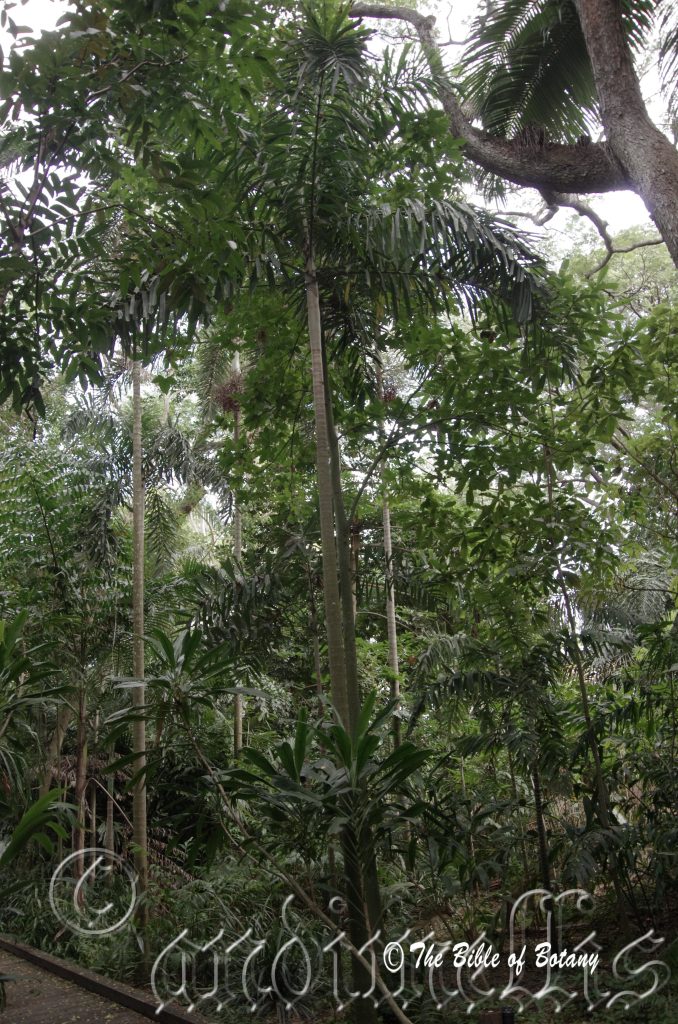
Palmata Gardens Townsville Qld.
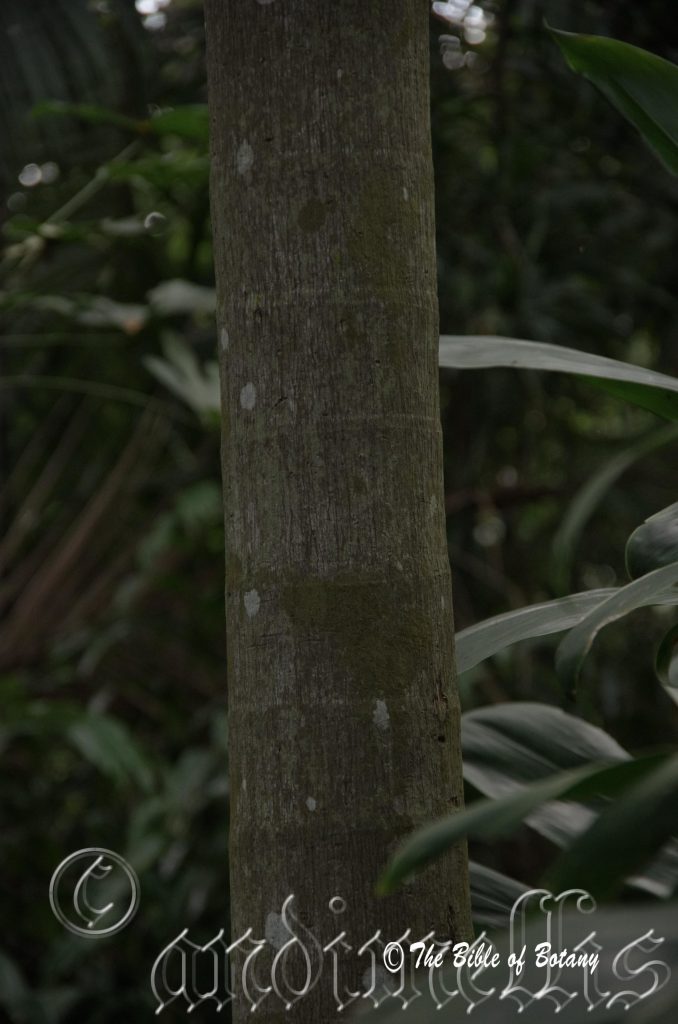
Palmata Gardens Townsville Qld.
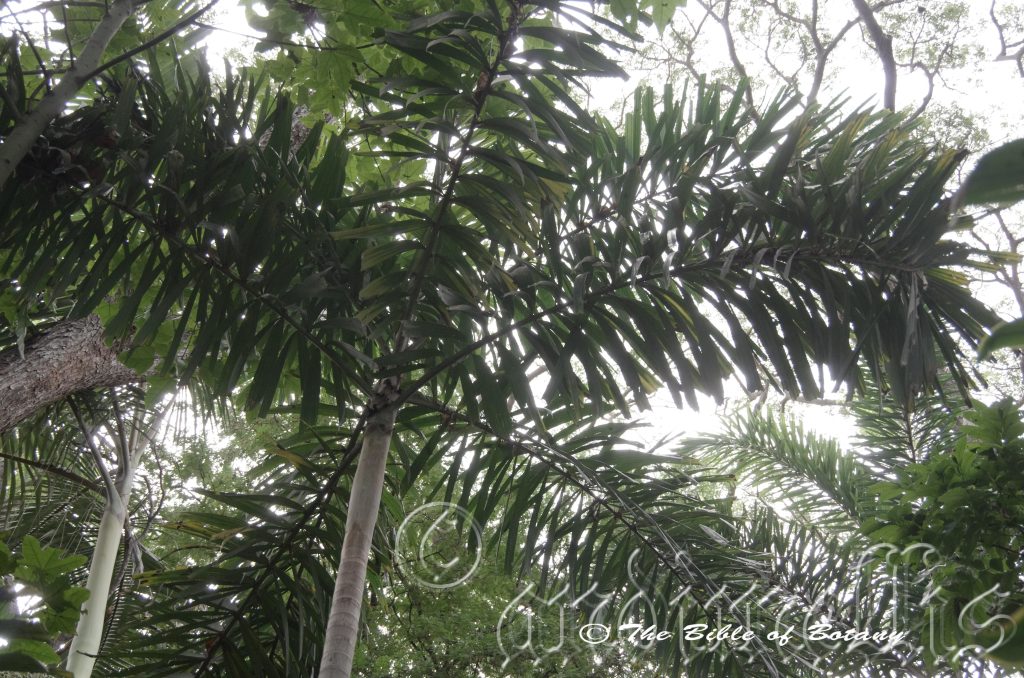
Palmata Gardens Townsville Qld.
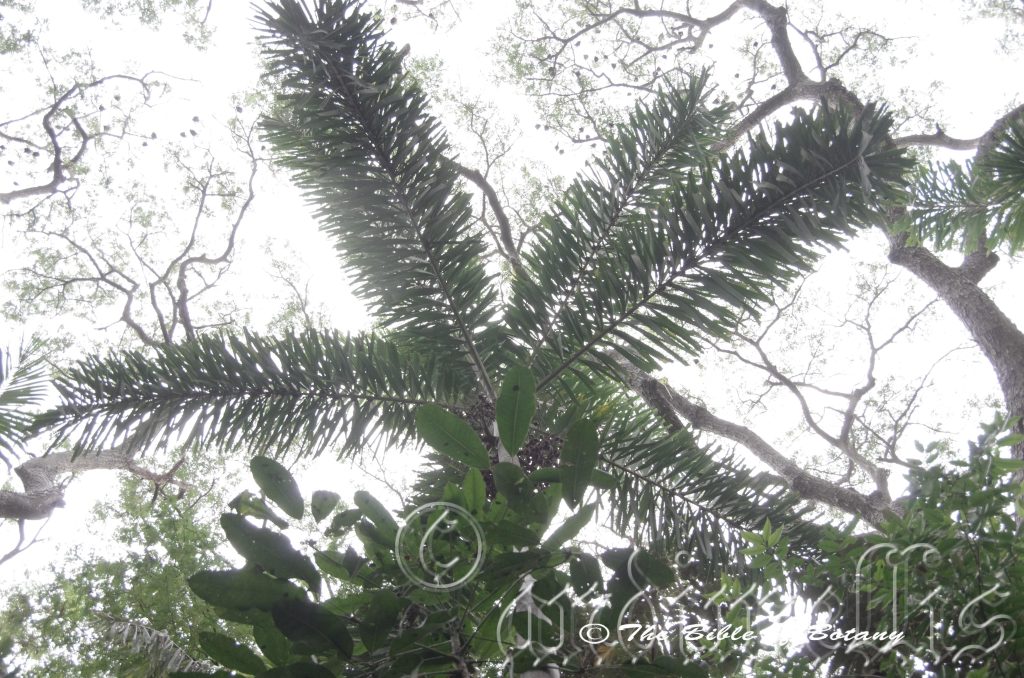
Palmata Gardens Townsville Qld.
Normanbya normanbyi
Classification
Unranked: Monocots
Unranked: Commelinids
Order: Arecales
Family: Arecaceae
Genus: Is named in honour of George Phipps 2nd Marquess of Normanby; 1819-1890, who was a governor of Queensland.
Specie: Is named in honour of George Phipps 2nd Marquess of Normanby; 1819-1890, who was a governor of Queensland.
Sub species:
Common Name: Normanby Palm.
Distribution:
Normanbya normanbyi has a restricted distribution south from the Iron Range National Park to Mossman in far north east of Queensland on Cape York Peninsula. It is found on and east of the Great Dividing Range.
https://avh.ala.org.au/occurrences/search?taxa=Normanbya+normanbyi#tab_mapView
Habitat Aspect Climate:
Normanbya normanbyi prefers dense shade to a dappled filtered light. It grows in coastal rain forests, riparian rainforests, littoral rainforests and monsoonal rainforests in north Queensland. The altitude ranges from 20 meter ASL to 700 meters ASL.
The temperatures range from 12 degrees in August to 37 degrees in January.
The rainfalls range from lows of 2000mm to an average of 3200mm annually.
Soil Requirements:
Normanbya normanbyi prefers poor quality to better quality sandy loams to light fatty clays with copious quantities of forest litter. The soils are usually derived from decomposed brown and black basalts, granites or at times alluvial deposits. The soils pH. ranges from 5.5pH to 6.5pH. It tolerates waterlogged soils but prefers soils that are moist throughout the year. Non saline soils to moderately saline soils are tolerated.
Height & Spread:
Wild Plants: 25m to 30m by 3m to 4m.
Characteristics:
Normanbya normanbyi grows as a single truck palm. The scar from old discarded leaves strongly ring the trunks which measure 250mm to 300mm in diameter.
Normanbya normanbyi arching leaves measure 2200mm to 2500mm in length by 800mm to 900mm across. They are known as a feather palm due to the leaves looking like the feather of a bird’s wing. It is a self-cleaning palm shedding old leaves soon after they die. There are 8 to 12 leaves in the crown. The leaf sheath is densely covered in fine white to pale green tomentose hairs and scales and measures 1000mm to 1200mm in length. The leaves have a pronounced lateral twist with 75 to 95 pairs of pinnae. The pinnae measure 400mm to 450mm in length by 30mm to 50mm in width. The apex pinnae are wedge shape. The petiole is densely covered in white to pale green tomentose scales and hairs and measure 220mm to 280mm. It is deeply grooved on the upper surface while the base clasps the trunk to form a crown shaft. The concolourous leaves are deep olive green to sea-green. The pinnae base is truncate while the apex is irregularly torn. The margins are entire while the midrib is prominent on both laminas.
Normanbya normanbyi’s monoecious inflorescence is born in large multi branched pendant panicles from below the crown shaft. They measure 800mm to 950mm in length by 400mm to 500mm in width.
The flowers are sessile with the male flowers out numbering the female flowers by 3 to 1.
The 3 deep green sepals are ovate on the male flowers and measure 12mm to 15mm in length. The 3 deep green sepals are ovate and measure 2mm to 3mm in length. The 3 deep green petals are oblong and measure 8mm to 10mm in length. The 24 to 40 white adnately fixed, filaments measure 8mm to 10mm in length while the white obloidal anthers measure 3.5mm to 5mm in length by 0.5mm in width. The white style and single white stigma are well developed on the dome hypanthium but the ovules are absent.
The 3 pale green sepals are ovate on the female flowers and measure 10mm to 12mm in length. The 3 pale green sepals are ovate and measure 5mm to 6mm in length. The 3 pale green petals are broad acute and measure 8mm to 9mm in length. The 3 petals are tightly packed around the style never fully opening. Only the strongly recurved, trilobed white stigmas are exserted beyond the petals. The staminodes are absent.
Normanbya normanbyi’s fruits are ovoid to ovoidal nuts. The nuts measure 35mm to 50mm in length by 26mm to 40mm in diameter. The green nuts turn red on ripening. The Calyx and stigma are persistent on the nuts. The red epicarp sheds to reveal the fawn-brown coconut fibres that surround the nut. The globular to pyriform nuts measure 30mm to 35mm in length by 20mm to 25mm in diameter at the widest point.
Wildlife:
Birds have a liking for the fruit especially Pigeons and Bower birds. Possums and gliders enjoy eating the flowers.
It is the host plant for the Yellow Palm Dart, Cephrenes trichopepla and the Orange Palm Dart, Cephrenes augiades sub sp. aperthias.
Cultivation:
Normanbya normanbyi is a beautiful palm from the East coast rainforests of Australia deserves a place in every warm temperate, sub-tropical, tropical and monsoonal garden. It may reach 20 meters by 5 meters in cultivation but don’t hold your breath.
The trunk is suitable for stags and other epiphytes. Normanbya normanbyi will grow on most soils especially those that are not pure sand as long as an adequate supply of water is given. They grow in very wet soils providing the water is not stagnant. It is a good feature plant around pools and ponds as it is self-cleaning and have a very dense crown. They take years to flower and fruit so there is little maintenance to worry about. Roots do not give any problems when in confined places like court yards and near pools. They make great accent plants against hard surfaces like brick walls.
Due to their slow growth these palms make very good indoor subjects or tub plants for patios for many years.
Indoor or potted on:
Sawdust or sand mixes are too well draining unless the sawdust has completely composted down where it exhibits a texture like plastacine to the touch. Moisture can be squeezed out between the fingers yet it remains moist. I find this a great basis to start with.
Mix equal parts of the well decomposed saw dust with the above feel with perlite and vermiculite. To this add two part sharp clean sand and one part compost. Make sure the sand comes from a source that does not have salt.
The Saw dust in this condition creates the moisture retention and holds nutrient in. The perlite and vermiculite make the mix neutral and both have great water holing capacity without shrinkage with age. The sand creates good drainage and is good for good healthy root development.
Indoor plants need good light and ventilation without drying breezes or wind. Normanbya normanbyi will tolerate darker positions in the home than Alexandra palms. Again fertilize the plants on a monthly basis with the above formula on a rotation basis.
Propagation:
Seeds: Sow Normanbya normanbyi into a deep seed tray using a good quality seed raising mix. Seed can be slow to germinate and is often erratic in germination.
When the seedlings are at the two or three leaf stage, prick them out and plant them into 75mm native tubes using a good organic mix.
Once the seedlings reach 250mm to 300mm in height plant them out into their permanent position.
Where mass plantings of Archontophoenix cunninghamiana are required, as a feature; plant them at 3 meters to 4 meters centers. Plantings along a drive way should be planted at 4 meter centers.
Fertilize using seaweed, fish emulsion or organic chicken pellets soaked in water on an alternate basis. Fertilize every two months until the plants are established then twice annually in early September or March to maintain better health, vitality and flowering.
Further Comments from Readers:
Hi reader, it seems you use The Bible of Botany a lot. That’s great as we have great pleasure in bringing it to you! It’s a little awkward for us to ask, but our first aim is to purchase land approximately 1,600 hectares to link several parcels of N.P. into one at The Pinnacles NSW Australia, but we need your help. We’re not salespeople. We’re amateur botanists who have dedicated over 30 years to saving the environment in a practical way. We depend on donations to reach our goal. If you donate just $5, the price of your coffee this Sunday, We can help to keep the planet alive in a real way and continue to bring you regular updates and features on Australian plants all in one Botanical Bible. Any support is greatly appreciated. Thank you.
In the spirit of reconciliation we acknowledge the Bundjalung, Gumbaynggirr and Yaegl and all aboriginal nations throughout Australia and their connections to land, sea and community. We pay our respect to their Elders past, present and future for the pleasures we have gained.
Notelaea johnsonii
Classification:
Unranked: Eudicots
Unranked: Asterids
Order: Lamiales
Family: Oleaceae
Genus: From Nóthos, which is Ancient Greek for False or counterfeit and Olaia, which is Ancient Greek for an olive. It refers to the leaves and fruits, which look like the European olive though it is not related.
Specie: Is named in honour of Johnson but which Johnson cannot be substantiated.
Sub species:
Common Name: Veinless Mock orange.
Distribution:
Notelaea johnsonii is restricted to a small area east of the Great Dividing Range south from Miriam Vale in southern Queensland to the Clarence River in northern New South Wales.
It is found in 2 isolated populations further north on the Bellenden Ker Range and further south at Box Hill in Sydney.
https://avh.ala.org.au/occurrences/search?taxa=Notelaea+johnsonii#tab_mapView
Habitat Aspect Climate:
Notelaea johnsonii prefers light dappled shade to full shade. It grows along creeks in moist sub rainforests. It is found where there is a break in the canopy. The altitude ranges from 5 meter ASL to 200 meters ASL.
The temperatures range from minus 2 degrees in August to 38 degrees in January.
The rainfall ranges from lows of 800mm to an average of 2000mm.
Soil Requirements:
Notelaea johnsonii prefers better quality loams to medium clays. The soils are usually derived from decomposed black basalts. The soils pH. ranges from 5.5pH to 6pH. It does not tolerate waterlogged soils but prefers soils that are moist throughout the year. Non saline soils to moderately saline soils are tolerated.
Height & Spread:
Wild Plants: 5m to 8m by 4m to 5m.
Characteristics:
Notelaea johnsonii’s stems are mid grey-brown to mid brown. Its branchlets are pale brown to reddish-brown and glabrous to moderately covered in minute white pubescent hairs. The newest shoots are pinkish-red and glabrous or sparsely to moderately covered in minute white pubescent hairs.The 2 to 4 axillary buds are pointed and glabrous.
Notelaea johnsonii’s simple opposite leaves are elliptic to narrow elliptic and measure 40mm to 120mm in length by 10mm to 50mm in width. The petioles measure 2mm to 13mm in length. The bases are tapering, cuneate to rounded while the apexes are acute to broad acute. The concolourous laminas are grass-green, blue-green, semi glossy or dull and glabrous or finely punctate. The laminas are flat, or recurve slightly upwards from the midvein to the margins, are undulating and decurve gently downwards on the apical third while the margins are entire to finely crenate. The mid vein is strongly prominent on the lower lamina and is visible on the upper lamina while the lateral veins are obscure. The grass-green, blue-green petioles are glabrous and measure 2mm to 12mm in length.
The inflorescence of Notelaea johnsonii is a simple raceme born from the upper leaf axils. The peduncles, rachis and pedicels are pinkish red and glabrous. The peduncle measures 10mm to 15mm in length while the rachis measure 40 to 65 mm in length and the pedicels measure 15mm to 25mm in length. There are 5 to 11 flowers along the raceme. The pale green calyxes are pinkish red and glabrous to sparsely or moderately covered in minute white pulverulent hairs and measures 0.7mm to 1mm in length. The 2 pairs of bluish black petals are on a stalk away from the ovary and measure 1.2mm to 1.5mm in length.
The stamens measure 1.2mm to 1.5mm in length. The pastel yellow to pale yellow stigma is bilobed. The flowers appear from June to July.
Notelaea johnsonii’s fruits are obliquely ellipsoidal drupes. The green drupes turn deep blue-black when ripe. The drupes measure 10mm to 20mm in length by 10mm to 11mm in diameter. The calyx lobes are persistent on the drupes. The flesh surrounding the seeds is greenish. The pale fawn ovoid seeds measure 8mm to 15mm in length by 7mm to 9mm in diameter.
Wildlife:
Notelaea johnsonii relies upon the Regent Bower Bird Sericulus chrysocephalus, satin bower bird Ptilonorhynchus violaceus, Green Cat Bird Ailuroedus maculosus, and the Green Fig Bird Sphecotheres vieilloti to spread its seeds.
Cultivation:
Notelaea johnsonii makes an excellent plant for shady to sunny areas or as an addition to the understory of larger rainforests or as a starter for small suburban rainforest gardens. It always look green and fresh especially where adequate ground moisture is retained whether it is grown in light shade or dense shade. It is very suitable on sandy loams to heavy clay soils are most suitable for small, medium and large gardens close to the coast in warm temperate, sub-tropical, tropical or arid gardens. As garden subjects they will grow from 5 meter to 6 meters in height by 5 meter to 6 meters in diameter when grown in the open or taller and narrower when confined in a rainforest.
It is cold tolerant to temperatures at least as low as minus 3 degrees once established.
It is suitable for use besides pathways, shady rockeries, along sandy clay banks or along driveways or adjacent to natural bush gardens. Mass plantings of 5 or more plants even in small areas; really do the plants justification.
The trees would make very good accent trees in front of low set commercial, industrial sheds or low set school buildings where they will break up hard rigid architectural lines and give warmth and breadth to buildings.
It is very suitable for small native epiphytic orchids and ferns.
Propagation: Notelaea johnsonii seeds can be sown directly into a seed raising mix. Cover the seeds with 5mm to 10mm of fine weed free mulch and keep moist. Place the tray in a warm semi shaded position beneath 50mm to 75mm shade cloth. When the seedlings are 30mm to 50mm tall, prick them out and plant them into 50mm native tubes using a good organic mix.
Once the seedlings reach 100mm to 150mm in height they can be planted out into their permanent position.
Fertilize using seaweed, fish emulsion or organic chicken pellets soaked in water on an alternate basis. Fertilize every two months until the plants are established then twice annually in early September or March to maintain better health, vitality and flowering.
Further Comments from Readers:
Hi reader, it seems you use The Bible of Botany a lot. That’s great as we have great pleasure in bringing it to you! It’s a little awkward for us to ask, but our first aim is to purchase land approximately 1,600 hectares to link several parcels of N.P. into one at The Pinnacles NSW Australia, but we need your help. We’re not salespeople. We’re amateur botanists who have dedicated over 30 years to saving the environment in a practical way. We depend on donations to reach our goal. If you donate just $5, the price of your coffee this Sunday, We can help to keep the planet alive in a real way and continue to bring you regular updates and features on Australian plants all in one Botanical Bible. Any support is greatly appreciated. Thank you.
In the spirit of reconciliation we acknowledge the Bundjalung, Gumbaynggirr and Yaegl and all aboriginal nations throughout Australia and their connections to land, sea and community. We pay our respect to their Elders past, present and future for the pleasures we have gained.

National Botanic Gardens ACT
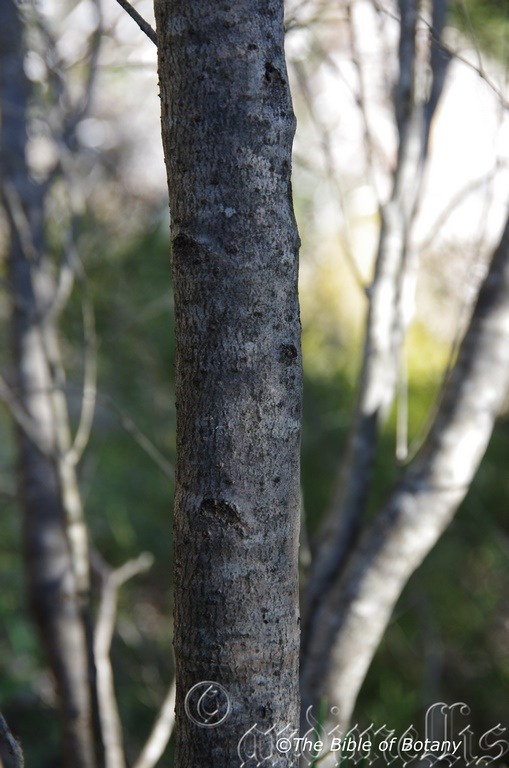
National Botanic Gardens ACT

National Botanic Gardens ACT
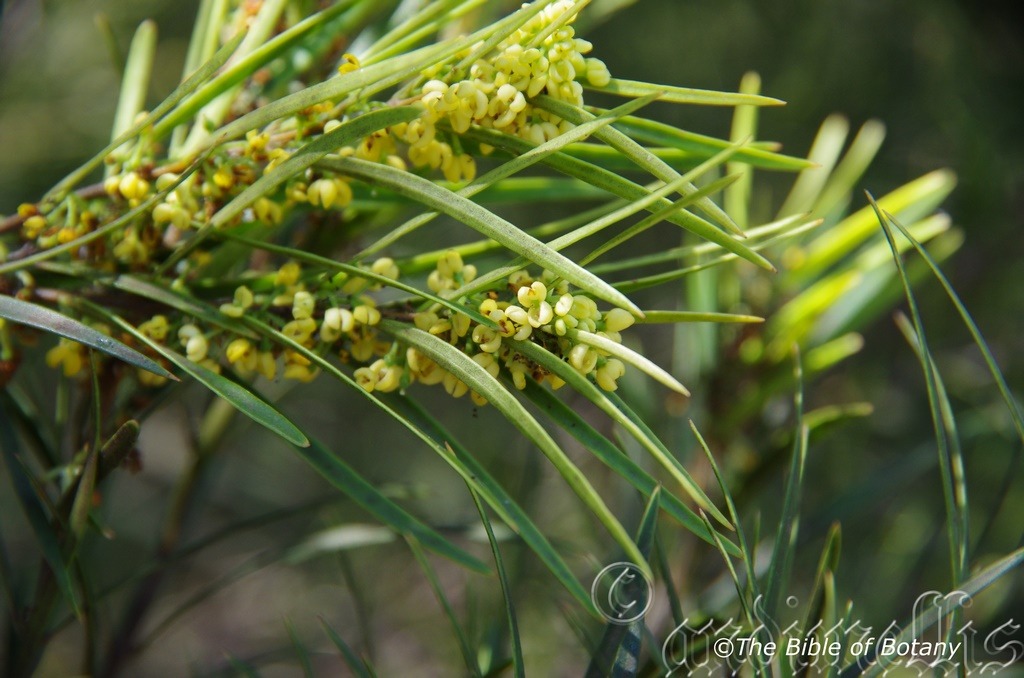
National Botanic Gardens ACT
Notelaea linearis
Classification:
Unranked: Eudicots
Unranked: Asterids
Order: Lamiales
Family: Oleaceae
Genus: From Nóthos, which is Ancient Greek for False or counterfeit and Olaia, which is Ancient Greek for an olive. It refers to the leaves and fruits, which look like the European olive though it is not related.
Specie: From Līneāris which is Latin for having lines. It refers to organs or structures usually the leaves that are narrow and have near parallel veins.
Sub species:
Common Name:
Distribution:
Notelaea linearis is found on Great Dividing Range south from west of Maryborough in south eastern Queensland to Ebor in north eastern New South Wales. There are 2 isolated populations further north at Mount Dillion and west at Mount Norman and Morven in Queensland and Wallangarra in New South Wales.
https://avh.ala.org.au/occurrences/search?taxa=Notelaea+linearis#tab_mapView
Habitat Aspect Climate:
Notelaea linearis prefers light dappled shade to full sun. It grows in drier heath scrubs and dry sclerophyll forest. The altitude ranges from 500 meters ASL to 1550 meters ASL.
The temperatures range from minus 5 degrees in August to 40 degrees in January.
The rainfall ranges from lows of 600mm to an average of 1000mm.
Soil Requirements:
Notelaea linearis prefers mixed quality sands, sandy loams to light gritty clays. The soils are usually derived from decomposed granites. The soils pH. ranges from 4.5pH to 6pH. It does not tolerate waterlogged soils but prefers soils that are moist throughout the year. Non saline soils to moderately saline soils are tolerated.
Height & Spread:
Wild Plants: 1m to 2.5m by 1m to 2m.
Characteristics:
Notelaea linearis has stems that are yellowish-fawn and glabrous to sparsely covered in short pubescent hairs. The branches are pale brown to pale grey and glabrous to slightly scabrous.
Notelaea linearis has simple, alternate or at times crowded, linear to very narrow-elliptic, rarely narrow-lanceolate or narrow-falcate leaves that measure 20mm to 70mm in length by 2mm to 7mm in width. The terete petioles measure 1mm to 4mm in length. The bases taper to the petiole, while the apexes are narrow with a rigid apiculate tip. The discolourous laminas are pale green, glabrous and dull on the upper lamina, while the lower lamina is paler and somewhat punctate. The laminas are flat or recurve slightly upwards from the midvein to the entire margins and decurve gently from the base to the apex. The mid vein is barely prominent on the lower lamina and is visible on the upper lamina while the lateral veins and venation are obscure.
The inflorescences of Notelaea linearis is a short, dense raceme from the leaf axis with 2 to 5 individual flowers. The racemes measure 4mm to 10mm in length. The pastel yellow calyxes are glabrous or sparsely covered in short pubescent hairs and measures 0.5mm to 1mm in length. The 2 pairs of semi cupular pastel yellow to lemon-yellow petals measure 1.4mm to 2.5mm in length by 1.4mm to 2.5mm in width.
The pastel yellow to lemon-yellow stamens measure 1.5mm to 2mm in length, while the oblong, yellowish-fawn anthers are in pairs and are joined at the apex. The flowers appear from September to January.
Notelaea linearis’s fruits are ovoidal drupes. The green drupes turn white or deep purplish-black when ripe and measure 5mm to 7mm in length by 4mm to 5mm in diameter. The calyx is persistent on the ripe drupes. The flesh surrounding the seeds is greenish.
Wildlife:
Notelaea linearis relies upon the Regent Bower Bird Sericulus chrysocephalus, satin bower bird Ptilonorhynchus violaceus, Green Cat Bird Ailuroedus maculosus and the Green Fig Bird Sphecotheres vieilloti to spread its seeds. The pied Currawong Strepera graculina, has been seen eating the fruits around Ebor.
Cultivation:
Notelaea linearis makes an excellent plant for shady to sunny areas or as an addition to the understory of rainforests gardens. It always look green and fresh especially where adequate ground moisture is retained whether it is grown in light shade or dense shade. It is very suitable on sandy loams to heavy clay soils and are most suitable for small, medium and large gardens close to the coast in warm temperate, subtropical, tropical or arid gardens. As a garden subject it will grow from 1 meter to 1.2 meters in height by 1 meter to 1.5 meters in diameter when grown in the open or taller and narrower when confined in a rainforest.
It is cold tolerant to temperatures at least as low as minus 3 degrees once established.
The broad ovate leaves make a great contrast to the foliage of most ferns and vertically growing plants like Cordyline species where the coloured foliage forms can be made to really highlight the differences in colour shape form and habit.
Propagation: Fresh Notelaea linearis seeds can be sown directly into a seed raising mix. Cover the seeds with 5mm to 10mm of fine weed free mulch and keep moist. Place the tray in a warm semi shaded position beneath 50mm to 75mm shade cloth. When the seedlings are 30mm to 50mm tall, prick them out and plant them into 50mm native tubes using a good organic mix.
Once the seedlings reach 100mm to 150mm in height they can be planted out into their permanent position.
Fertilize using seaweed, fish emulsion or organic chicken pellets soaked in water on an alternate basis. Fertilize every two months until the plants are established then twice annually in early September or March to maintain better health, vitality and flowering.
Further Comments from Readers:
Hi reader, it seems you use The Bible of Botany a lot. That’s great as we have great pleasure in bringing it to you! It’s a little awkward for us to ask, but our first aim is to purchase land approximately 1,600 hectares to link several parcels of N.P. into one at The Pinnacles NSW Australia, but we need your help. We’re not salespeople. We’re amateur botanists who have dedicated over 30 years to saving the environment in a practical way. We depend on donations to reach our goal. If you donate just $5, the price of your coffee this Sunday, We can help to keep the planet alive in a real way and continue to bring you regular updates and features on Australian plants all in one Botanical Bible. Any support is greatly appreciated. Thank you.
In the spirit of reconciliation we acknowledge the Bundjalung, Gumbaynggirr and Yaegl and all aboriginal nations throughout Australia and their connections to land, sea and community. We pay our respect to their Elders past, present and future for the pleasures we have gained.
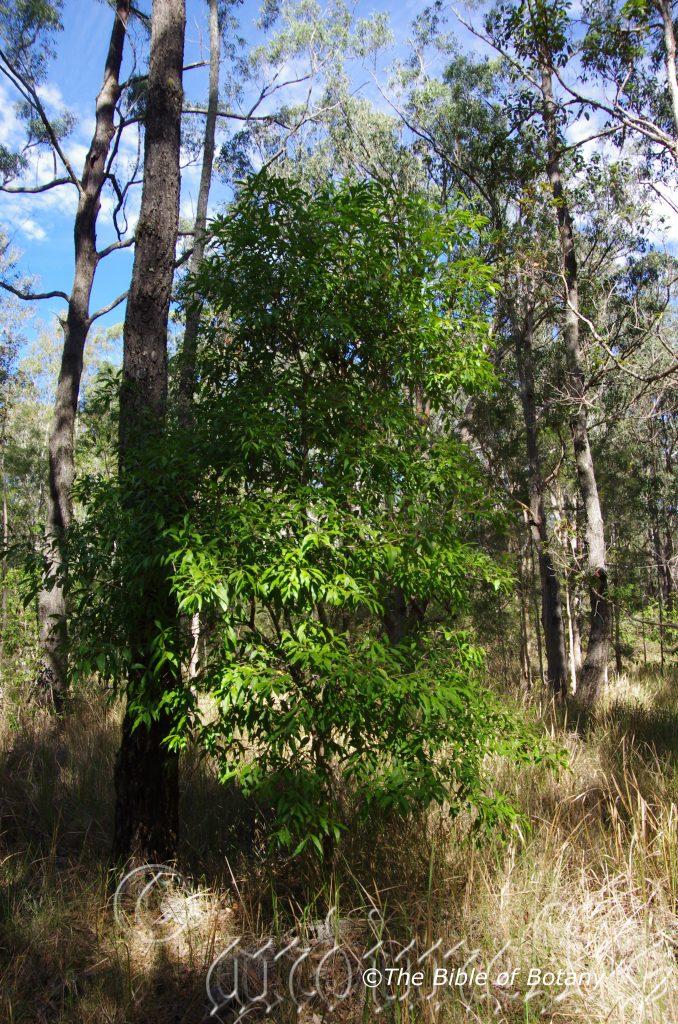
Pillar Valley NSW
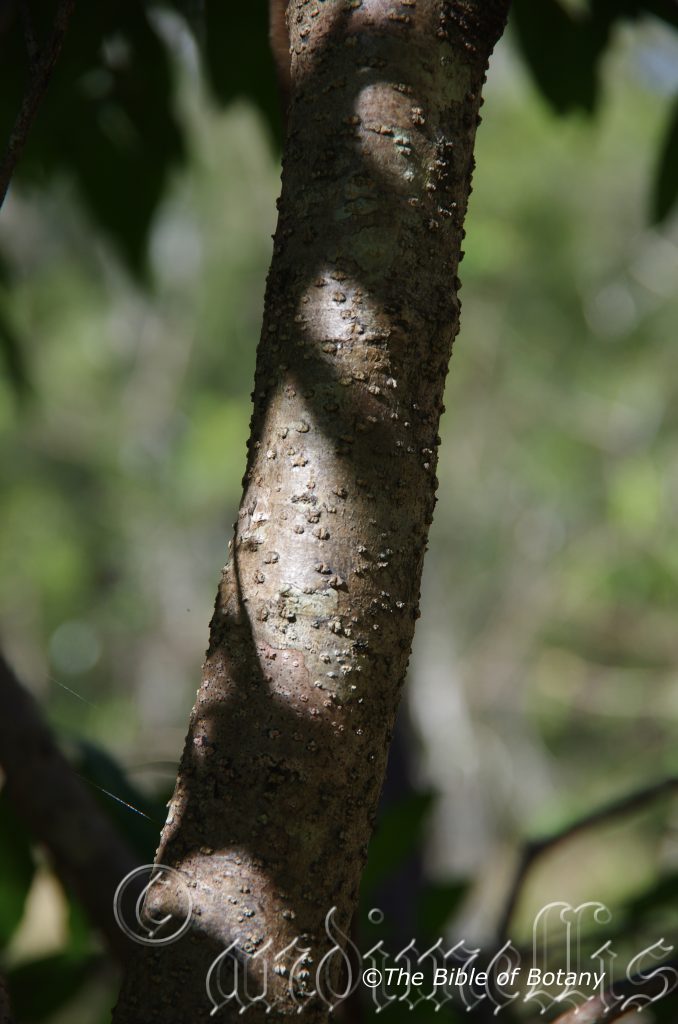
Pillar Valley NSW
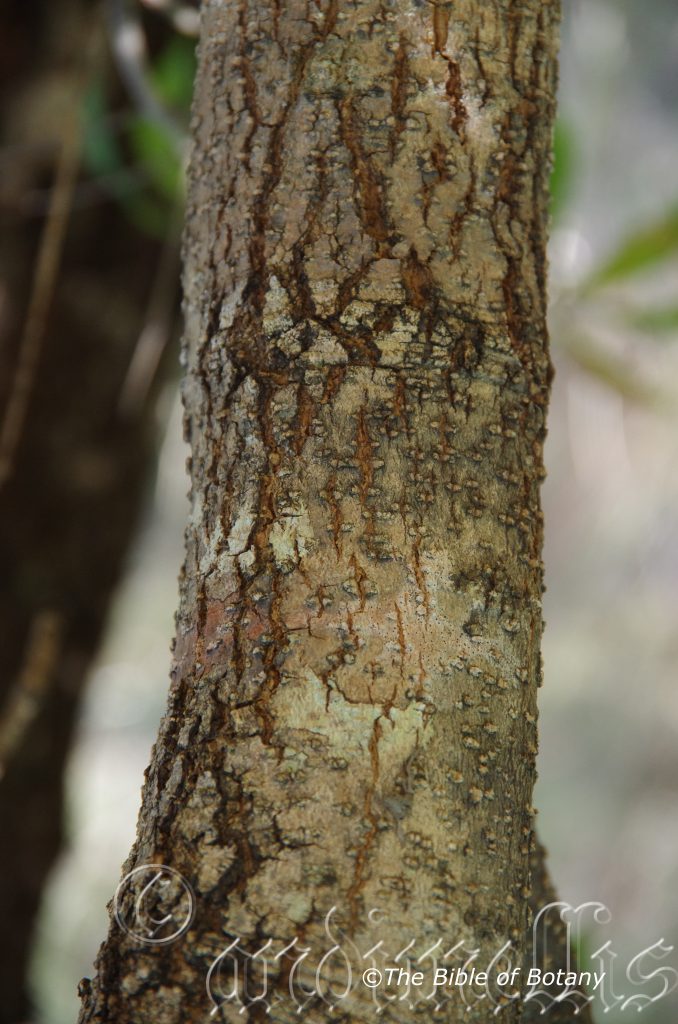
Pillar Valley NSW
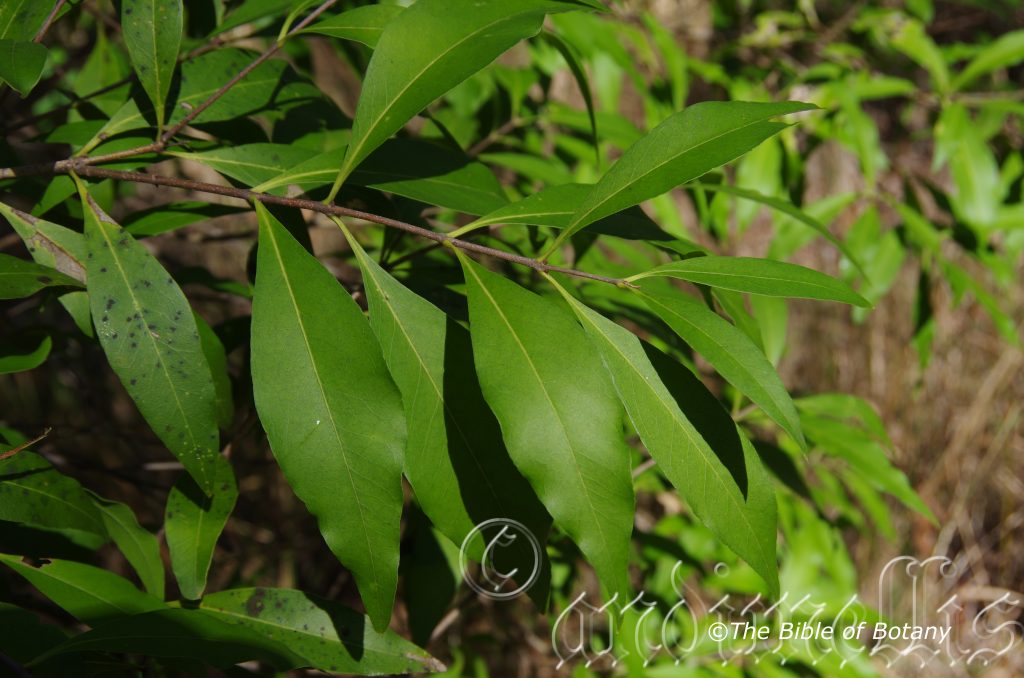
Pillar Valley NSW
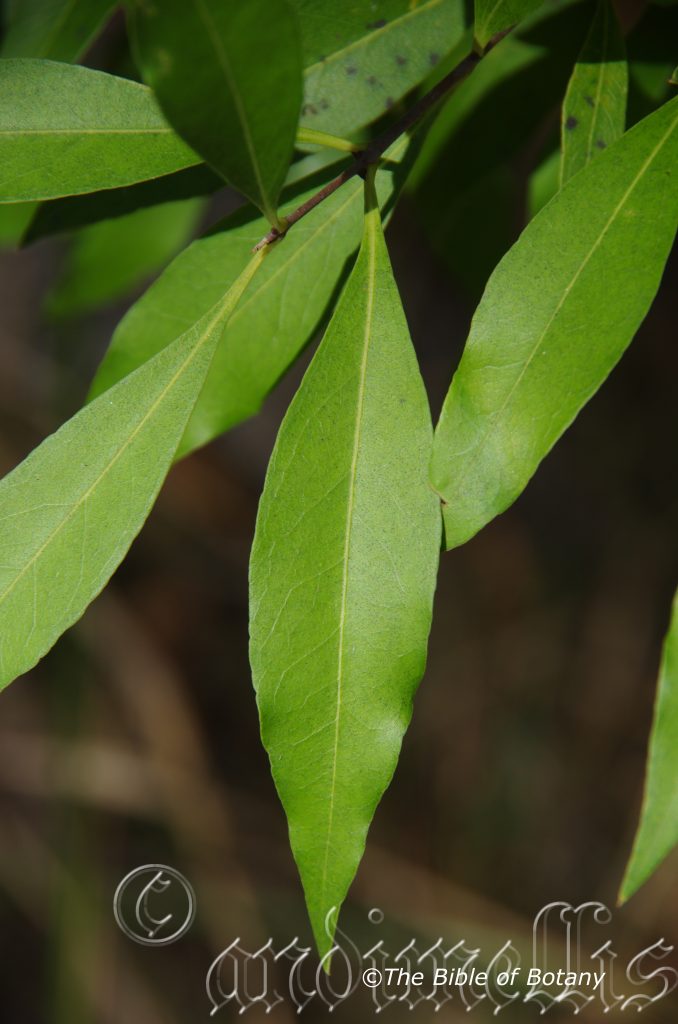
Pillar Valley NSW
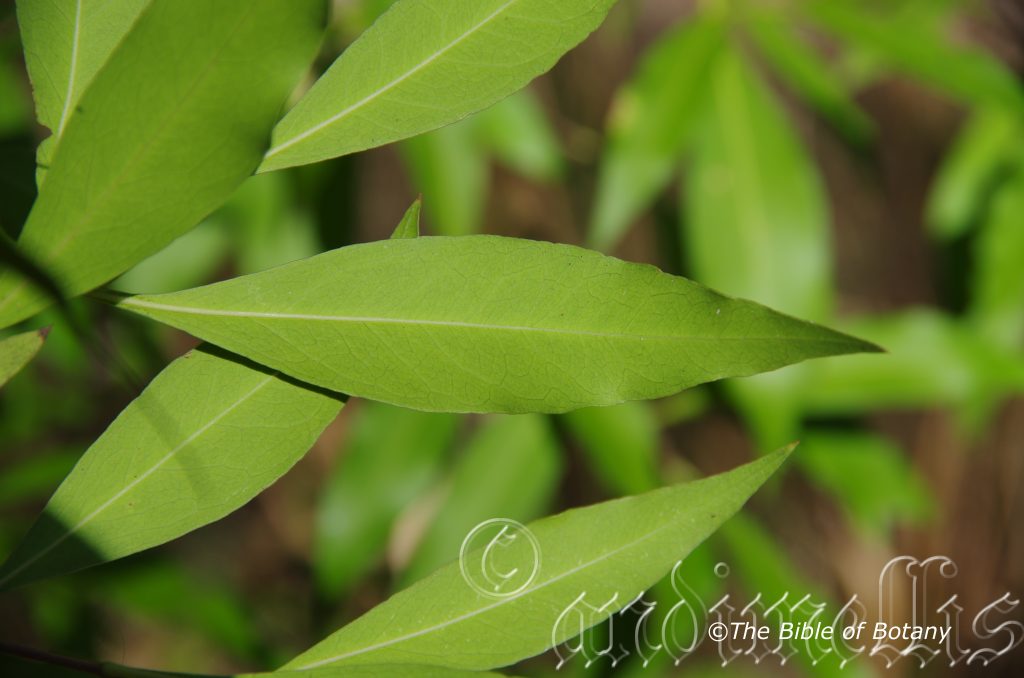
Pillar Valley NSW
Notelaea longifolia
Classification
Unranked: Eudicots
Unranked: Asterids
Order: Lamiales
Family: Oleaceae
Genus: From Nóthos, which is Ancient Greek for False or counterfeit and Olaia, which is Ancient Greek for an olive. It refers to the leaves and fruits, which look like the European olive though it is not related.
Specie: From Longitia/Longus, which are Latin for long in length and Folium, which is Latin for foliage. It refers to leaves, which are long and strap like or are much longer than other species in the genus.
Variety: Notelaea longifolia var. candoleana. Is named in honour of Augustin Pyramus de Candolle; 1778-1841, who was a Swiss professor of botany, founder of a classification system of botany and notable biological author.
Variety: Notelaea longifolia var. decomposita. From De, which is Latin for down and (com which is Latin for to come together) composita, which is Latin for to divide more than once.
Variety: Notelaea longifolia sub sp. glabra. From Glabra, which is Latin for glabrous or smooth. It refers to structures or organs, which have no hairs or scales.
Variety: Notelaea longifolia sub sp. longifolia. From Longitia/Longus, which is Latin for long in length and Folium, which is Latin for foliage. It refers to leaves, which are long and strap like.
Variety: Notelaea longifolia var. pedicellaris. From Pous, which is Ancient Greek or Pes/Pedi, which is Latin for a foot or feet. It refers to flowers, which have very long pedicels.
Variety: Notelaea longifolia var. typica. From Typikós, which is the Ancient Greek, Typicālis, which is Ancient Latin or later Typicum, which is Modern Latin for typical or normal. It refers to characteristics of species, which are very typical of the genus or a subspecies or variety that is typical of the species.
Variety: Notelaea longifolia var. velutina. From Velutinus, which is Latin for to be densely covered in short soft hairs. It refers to structures or organs, which form dense soft velvet like mats
Common Name: Large leaf Olive or Large Mock Olive.
Distribution:
There is presently work underway on this species to determine the varieties and their exact distributions so those stated below maybe redundant in years to come.
Notelaea longifolia var. candoleana is found south from Tweed Heads to Eden in New South Wales with an isolated population on Norfolk Island.
Notelaea longifolia var. decomposita is found in several disjunct populations south from Tinbeerwah in southern Queensland to Bulladelah in central New South Wales.
Notelaea longifolia var. glabra is found in several disjunct populations south from Tinbeerwah in southern Queensland to Bulladelah in central New South Wales.
Notelaea longifolia var. longifolia is found south from Tweed Heads to Eden in New South Wales with an isolated population on Norfolk Island.
Notelaea longifolia var. pedicellaris is found south of Springsure in Central eastern Queensland to Calder River in southern Victoria with a population much further north between Paluma and Hidden Valley in far north eastern Queensland.
Notelaea longifolia var. typica is found south from Tweed Heads to Eden in New South Wales with an isolated population on Norfolk Island.
Notelaea longifolia var. velutina is found south from Tweed Heads to Yarrowitch Falls in northern New South Wales with two isolated populations further west at Coolah and Gilgandra.
https://avh.ala.org.au/occurrences/search?taxa=Notelaea+longifolia#tab_mapView
Habitat Aspect Climate:
Notelaea longifolia prefers light dappled shade to full shade. It grows along creeks, alluvial plains in most types of rainforests. It is found where there is a break in the canopy. The altitude ranges from 5 meter ASL to 1600 meters ASL.
The temperatures range from minus 5 degrees in August to 40 degrees in January.
The rainfall ranges from lows of 800mm to an average of 3200mm.
Soil Requirements:
Notelaea longifolia prefers better quality sandy loams to medium clays. The soils are usually derived from decomposed sandstones, brown, black basalts, granites, metamorphic rocks or alluvial flats. The soils pH. ranges from 5.5pH to 7pH. It does not tolerate waterlogged soils but prefers soils that are moist throughout the year. Non saline soils to moderately saline soils are tolerated.
Height & Spread:
Wild Plants: 1m to 6m by 0.5m to 1.5m.
Characteristics:
Notelaea longifolia’s stems are mid grey-brown to deep grey-brown. Notelaea longifolia sub sp. glabra’s branchlets are pale brown to green-brown and glabrous or very sparsely covered in white hirtellous hairs. The newest shoots are pale dull green and glabrous or very sparsely covered in white hirtellous hairs.
Notelaea longifolia sub sp. intermedia’s branchlets are pale brown to green-brown and sparsely covered in white puberulent to hirtellous hairs. The newest shoots are pale dull green and sparsely covered in white hirtellous hairs.
Notelaea longifolia sub sp. longifolia’s branchlets are pale brown to green-brown and densely covered in white puberulent hairs. The newest shoots are pale dull green and densely covered in white hirtellous hairs.
Notelaea longifolia’s simple opposite leaves are ovate to elliptical and measure 40mm to 100mm in length by 8mm to 55mm in width. The petioles on the individual trees vary considerably from 5mm to 15mm in length. The bases are broad attenuate while the apexes are acute to narrowly acute. The discolourous laminas are deep sea green, dull to semi glossy and glabrous on the upper lamina and paler on the lower lamina. The margins are entire, flat and undulating. The mid vein is prominent on the upper lamina and is visible on the lower lamina.
Notelaea longifolia sub sp. glabra’s leaves are glabrous or very sparsely covered in white hirtellous hairs.
Notelaea longifolia sub sp.intermedia’s leaves are sparsely covered in white puberulent to hirtellous hairs.
Notelaea longifolia sub sp. longifolia’s leaves are densely covered in white puberulent hairs.
The inflorescence of Notelaea longifolia is a simple raceme born from the upper leaf axils. The rachis measure 15 to 20 mm in length while, the pedicels measure 3mm to 4mm in length. There are 5 to 13 flowers along the raceme. The pale green calyx measures 0.5mm to 0.8mm in length while the 4 calyx lobes are triangular. The 4 obtuse petals are creamy yellow and measure 1.5mm to 2mm in length and diameter.
The cream stamens measure 1mm to 2mm in length while the cream style divides into 2 short lobes and measures 0.5mm in length. The pastel yellow to pale yellow stigma is bilobed. The flowers appear from April to October.
Notelaea longifolia’s fruit is an ovoidal drupe. The drupes are blue-black and measure 10mm to 16mm in length by 8mm to 14mm in diameter. The calyx lobes and style are not persistent on the drupes though a dimple occurs where the style was. The flesh surrounding the seeds is greenish. The pale fawn ovoid seeds measure 8mm to 12mm in length by 5mm to 8mm in diameter.
Wildlife:
Notelaea longifolia relies upon Bower Birds, Cat Birds and Fig Birds to spread its seeds. The trees leaves are frequently damaged by unknown butterfly larvae.
Cultivation:
Notelaea longifolia makes an excellent plant for very shady areas and as an addition to the understory of rainforests. They always look green and fresh especially where adequate ground moisture is retained whether it is grown in light shade or dense shade. It is very suitable on sandy to heavy clay soils and are most suitable for small, medium and large gardens close to the coast in warm temperate, sub-tropical, tropical or arid gardens. As garden subjects they will grow from 2 meter to 4 meters in height by 1 meter to 3 meters in diameter when grown in partial shade.
It iscold tolerant to temperatures at least as low as 1 degrees once established.
It is most suitable for use around semi shaded swimming pools, courtyards, besides pathways, shady rockeries, along sandy clay banks or along drive ways or adjacent to natural bush gardens. Mass plantings of 5 or more plants even in small areas; really do the plants justification especially when it is in flower and pruned to keep them short and bushy. If it is not pruned they will develop the single stem of their wild parents.
Small to medium frog ponds will benefit from Notelaea longifolia to give protection to frogs and add that tropical look on a small scale. Plants can be pruned and encouraged to lean out over the edge of such features. When mass planted the blue fruits are very attractive and will hang for a long time if not stolen by small native birds.
If companion plants are sought then the choice of plants to use either side is limited by size of the area to be landscaped and the size of the other plants as they should be no more than 1 meter in height to emphasize the Notelaea longifolia. Try mass plantings of Viola betonicifolia, Viola sieberiana, Viola violaceae or Wahlenbergia stricta if there is a little more sunlight. Small shrubs with fine pale green leaves would give a strong contrast.
Propagation: Notelaea longifolia seeds can be sown directly into a seed raising mix. Cover the seeds with 5mm to 10mm of fine weed free mulch and keep moist. Place the tray in a warm semi shaded position beneath 50mm to 75mm shade cloth. When the seedlings are 30mm to 50mm tall, prick them out and plant them into 50mm native tubes using a good organic mix.
Once the seedlings reach 100mm to 150mm in height they can be planted out into their permanent position.
Fertilize using seaweed, fish emulsion or organic chicken pellets soaked in water on an alternate basis. Fertilize every two months until the plants are established then twice annually in early September or March to maintain better health, vitality and flowering.
Further Comments from Readers:
Hi reader, it seems you use The Bible of Botany a lot. That’s great as we have great pleasure in bringing it to you! It’s a little awkward for us to ask, but our first aim is to purchase land approximately 1,600 hectares to link several parcels of N.P. into one at The Pinnacles NSW Australia, but we need your help. We’re not salespeople. We’re amateur botanists who have dedicated over 30 years to saving the environment in a practical way. We depend on donations to reach our goal. If you donate just $5, the price of your coffee this Sunday, We can help to keep the planet alive in a real way and continue to bring you regular updates and features on Australian plants all in one Botanical Bible. Any support is greatly appreciated. Thank you.
In the spirit of reconciliation we acknowledge the Bundjalung, Gumbaynggirr and Yaegl and all aboriginal nations throughout Australia and their connections to land, sea and community. We pay our respect to their Elders past, present and future for the pleasures we have gained.
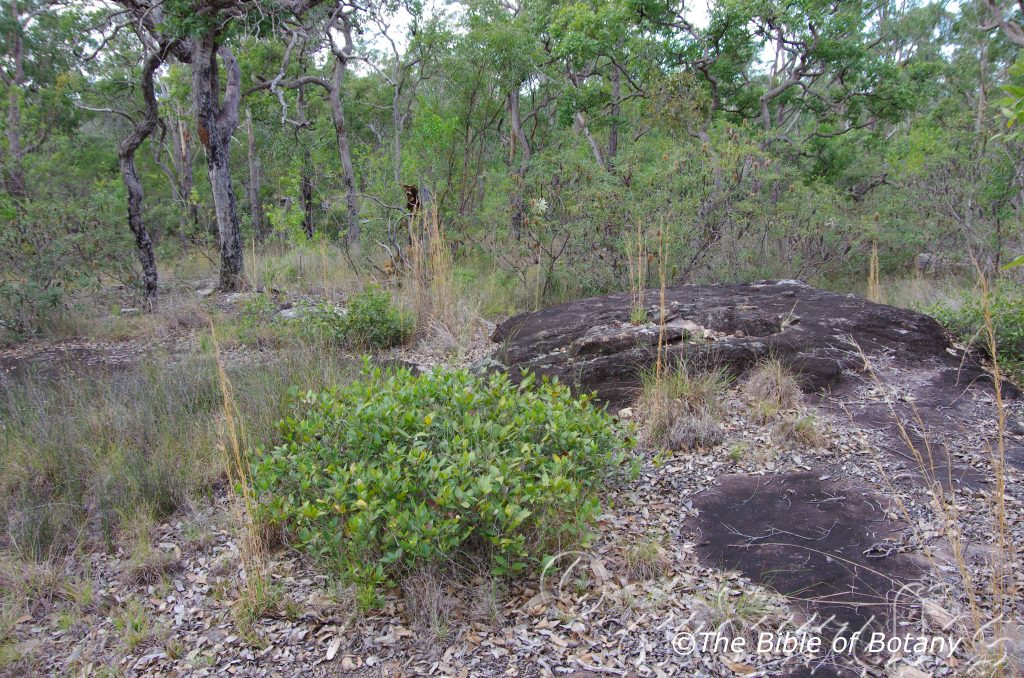
The Pinnacles NSW
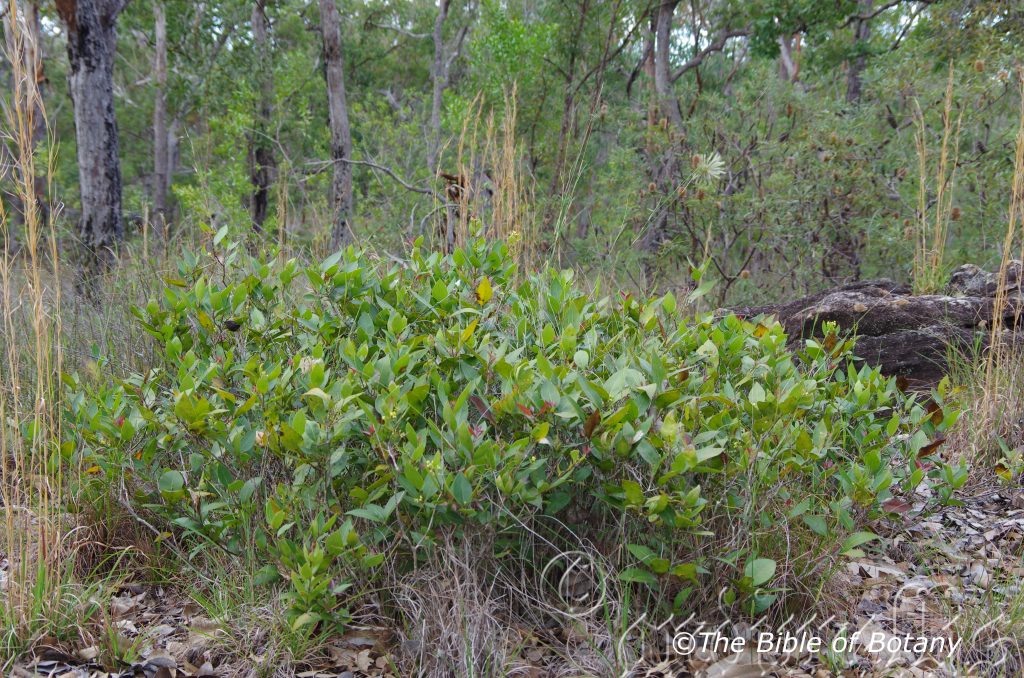
The Pinnacles NSW
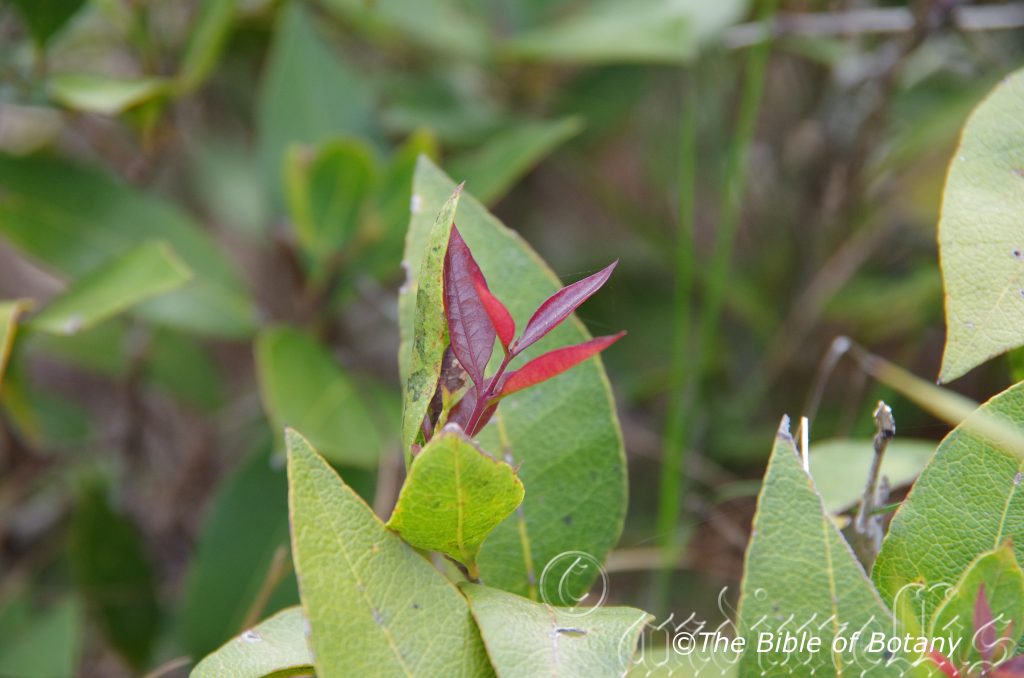
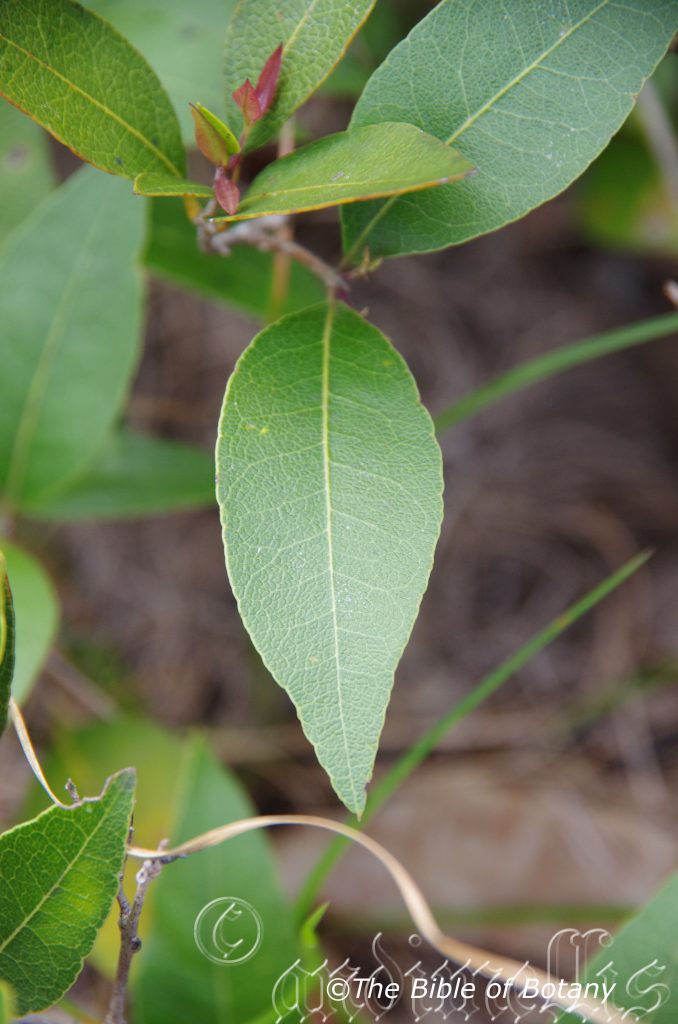
The Pinnacles NSW

Sherwood Nature Reserve NSW

Sherwood Nature Reserve NSW
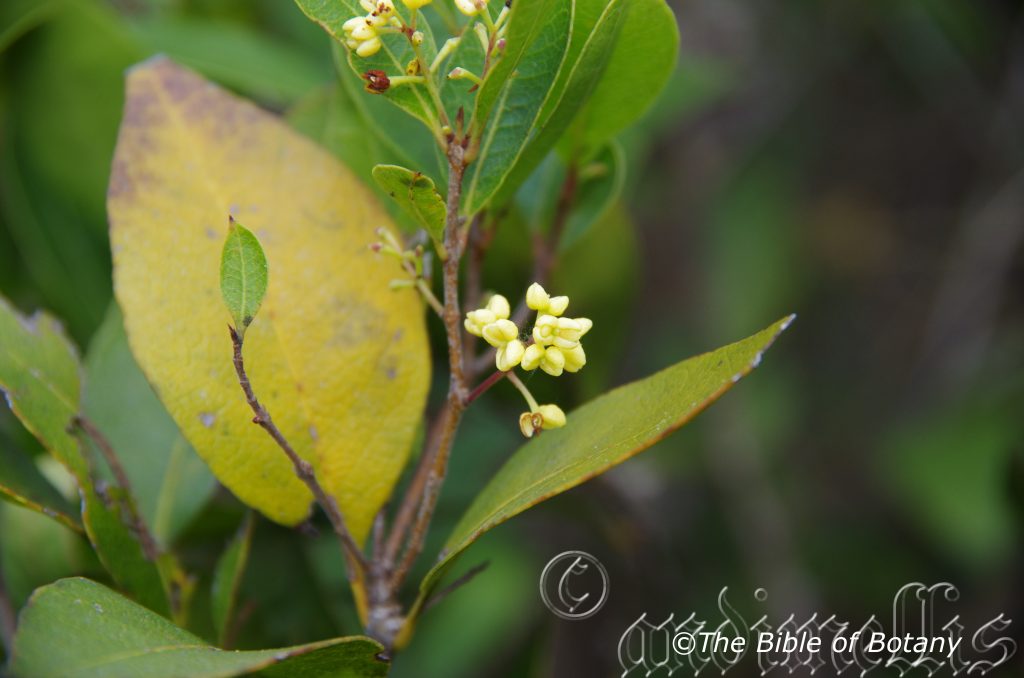
The Pinnacles NSW
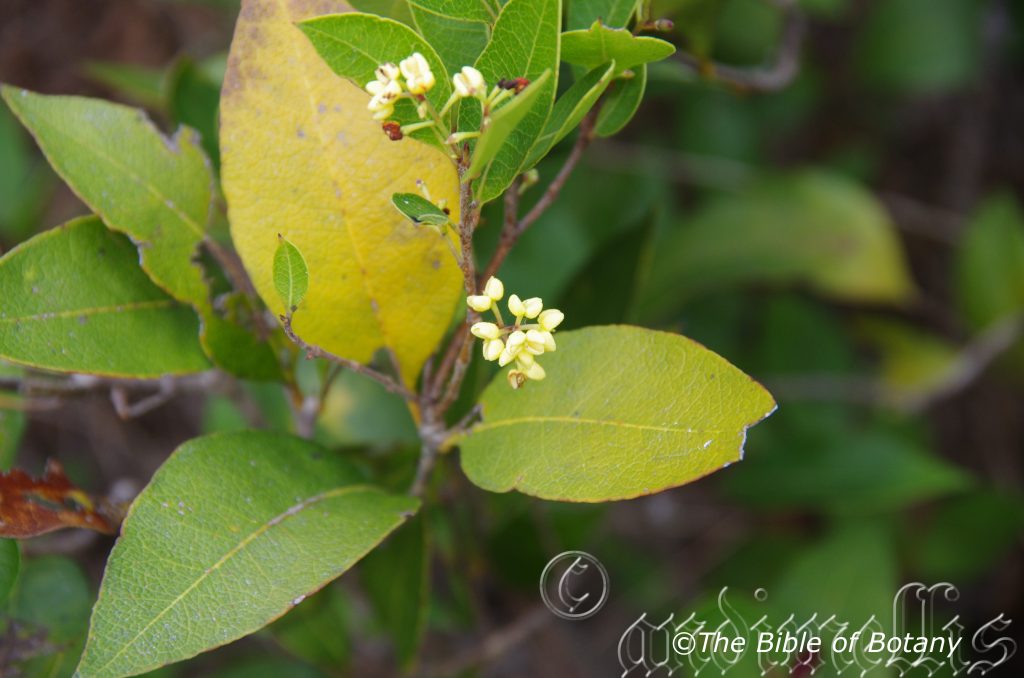
The Pinnacles NSW
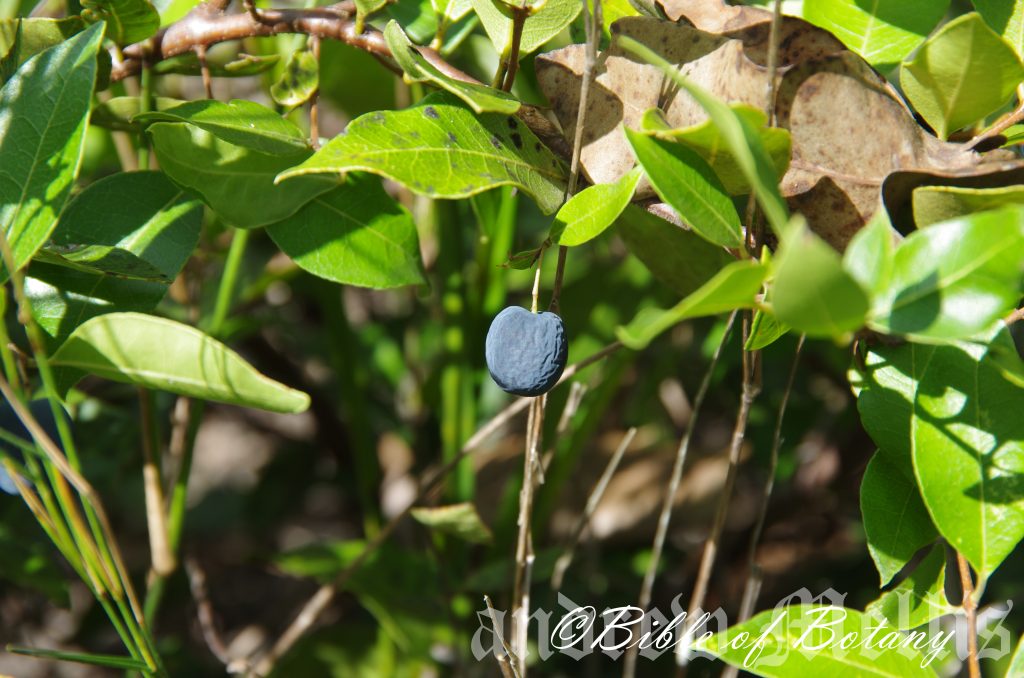
The Pinnacles NSW
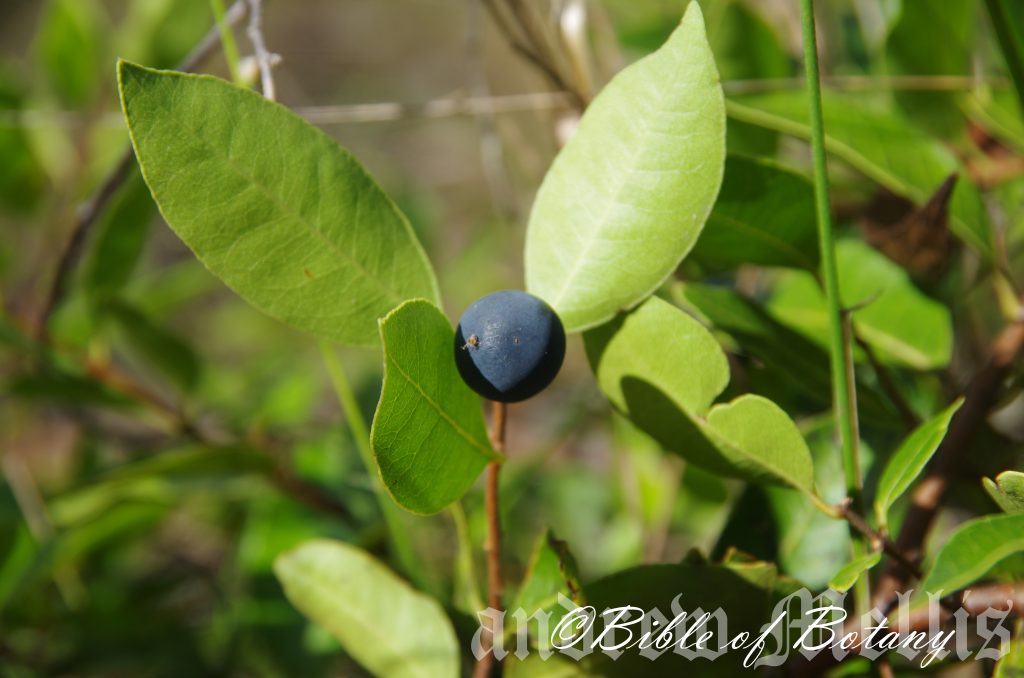
The Pinnacles NSW
Notelaea ovata
Classification:
Unranked: Eudicots
Unranked: Asterids
Order: Lamiales
Family: Oleaceae
Genus: From Nóthos, which is Ancient Greek for False or counterfeit and Olaia, which is Ancient Greek for an olive. It refers to the leaves and fruits, which look like the European olive though it is not related.
Specie: From Ovatis, which is Latin for almost an egg shape. It refers to organs usually the leaves, which have an ovate shape or the shape of an egg.
Sub species:
Common Name:
Distribution:
Notelaea ovata is mainly found on and east of the Great Dividing Range south from Rockland Springs near Emerald in central eastern Queensland to Mount Imlay in far south eastern coastal New South Wales with 2 isolated populations further north in the Daintree River National Park and the Hidden Valley in the Paluma National Park.
https://avh.ala.org.au/occurrences/search?taxa=Notelaea+ovata#tab_mapView
Habitat Aspect Climate:
Notelaea ovata prefers light dappled shade to full shade. It grows in moist littoral heaths or sub-tropical rainforest. The altitude ranges from 5 meter ASL to 1080 meters ASL.
The temperatures range from minus 3 degrees in August to 40 degrees in January.
The rainfall ranges from lows of 800mm to an average of 2200mm.
Soil Requirements:
Notelaea ovata prefers mixed quality sands, sandy loams to medium clays. The soils are usually derived from decomposed granites, metamorphic rocks, sandstones, brown basalts, black basalts, alluvial flats or accumulated beach sands. The soils pH. ranges from 5.5pH to 7pH. It does not tolerate waterlogged soils but prefers soils that are moist throughout the year. Non saline soils to moderately saline soils are tolerated.
Height & Spread:
Wild Plants: 0.5m to 1m by 1m to 1.5m.
Characteristics:
Notelaea ovata’s stems are mid grey-brown to mid brown. Its branchlets are pale brown to reddish-brown and glabrous to moderately covered in minute white pubescent hairs. The newest shoots are pinkish-red and moderately covered in minute white pubescent hairs.The 2 to 4 axillary buds are pinkish-fawn or pinkish-bronze, pointed and moderately covered in minute white pulverulent hairs.
Notelaea ovata’s simple opposite leaves are usually narrow ovate to broad ovate or at times broad elliptic or rarely elliptical and measure 20mm to 140mm in length by 13mm to 60mm in width. The petioles measure 1mm to 10mm in length. The bases are usually broad cuneate to rounded-cuneate or tapering and shortly attenuate or rarely sub-cordate while the apexes are acute to acuminate and often apiculate. The discolourous laminas are deep green, deep blue-green, deep grass-green, semi glossy or dull and sparsely to moderately covered in minute, white, caduceous pubescent hairs. The laminas are usually flat or at times recurve slightly upwards from the midvein to the margins while the margins are entire to finely crenate. The mid vein is strongly prominent on the lower lamina and is visible on the upper lamina while the lateral veins are strongly prominent and strongly reticulate. The grass-green, blue-green petioles are glabrous and measure 2mm to 12mm in length.
The inflorescences of Notelaea ovata is a simple raceme born from the upper leaf axils. The peduncles, rachis and pedicels are pale yellow to creamy pale greenish-yellow and glabrous. The peduncle measures 3mm to 10mm in length while the rachis measure 7mm to 25mm in length and the pedicels measure 1.5mm to 3mm in length. There are 5 to 9 flowers along the raceme. The pastel yellow calyxes are glabrous and measures 0.5mm to 1mm in length. The 2 pairs of pastel yellow to pale yellow petals measure 1.4mm to 2.5mm in length.
The pastel green to pale green ovoidal ovary measures 0.8mm to 1mm in length. The pastel yellow to pale yellow stamens measure 1mm to 1.7mm in length. The pastel yellow to pale yellow stigma is bilobed. The flowers appear from late October to February.
Notelaea ovata’s fruits are ovoidal drupes. The green drupes turn deep purplish-black when ripe. The drupes measure 8mm to 12mm in length by 5mm to 10mm in diameter. The calyxes are persistent on the drupes. The flesh surrounding the seeds is greenish. The pale fawn ovoidal seeds measure 6mm to 10mm in length by 3.5mm to 8mm in diameter.
Wildlife:
Notelaea ovata relies upon the Regent Bower Bird Sericulus chrysocephalus, satin bower bird Ptilonorhynchus violaceus, Green Cat Bird Ailuroedus maculosus and the Green Fig Bird Sphecotheres vieilloti to spread its seeds where the distributions overlap.
Cultivation:
Notelaea ovata makes an excellent plant for shady to sunny areas or as an addition to the understory of rainforests gardens. It always look green and fresh especially where adequate ground moisture is retained whether it is grown in light shade or dense shade. It is very suitable on sandy loams to heavy clay soils and are most suitable for small, medium and large gardens close to the coast in warm temperate, subtropical, tropical or arid gardens. As garden subjects they will grow from 1 meter to 1.2 meters in height by 1 meter to 1.5 meters in diameter when grown in the open or taller and narrower when confined in a rainforest.
It is cold tolerant to temperatures at least as low as minus 3 degrees once established.
The broad ovate leaves make a great contrast to the foliage of most ferns and vertically growing plants like Cordyline where the coloured foliage forms can be made to really highlight the differences in colour shape form and habit.
Propagation: Notelaea ovata seeds can be sown directly into a seed raising mix. Cover the seeds with 5mm to 10mm of fine weed free mulch and keep moist. Place the tray in a warm semi shaded position beneath 50mm to 75mm shade cloth. When the seedlings are 30mm to 50mm tall, prick them out and plant them into 50mm native tubes using a good organic mix.
Once the seedlings reach 100mm to 150mm in height they can be planted out into their permanent position.
Fertilize using seaweed, fish emulsion or organic chicken pellets soaked in water on an alternate basis. Fertilize every two months until the plants are established then twice annually in early September or March to maintain better health, vitality and flowering.
Further Comments from Readers:
Hi reader, it seems you use The Bible of Botany a lot. That’s great as we have great pleasure in bringing it to you! It’s a little awkward for us to ask, but our first aim is to purchase land approximately 1,600 hectares to link several parcels of N.P. into one at The Pinnacles NSW Australia, but we need your help. We’re not salespeople. We’re amateur botanists who have dedicated over 30 years to saving the environment in a practical way. We depend on donations to reach our goal. If you donate just $5, the price of your coffee this Sunday, We can help to keep the planet alive in a real way and continue to bring you regular updates and features on Australian plants all in one Botanical Bible. Any support is greatly appreciated. Thank you.
In the spirit of reconciliation we acknowledge the Bundjalung, Gumbaynggirr and Yaegl and all aboriginal nations throughout Australia and their connections to land, sea and community. We pay our respect to their Elders past, present and future for the pleasures we have gained.
Notelaea venosa
Classification:
Unranked: Eudicots
Unranked: Asterids
Order: Lamiales
Family: Oleaceae
Genus: From Nóthos, which is Ancient Greek for False or counterfeit and Olaia, which is Ancient Greek for an olive. It refers to the leaves and fruits, which look like the European olive though it is not related.
Specie: From Vena, which is Latin for a channel. It refers to leaves and phyllodes, which have prominent veins.
Sub species:
Common Name: Veined Mock Olive or Smooth Mock Olive or Large Leaf Mock Olive.
Distribution:
Notelaea venosa is found south from Mount Ballow in the MacPherson ranges in far south east Queensland to Boggy Creek in eastern coastal Victoria with 2 further disjunct populations further north in the Bluewater Forest in the Paluma State Forest and south near the Calder River in a Beech Forest.
https://avh.ala.org.au/occurrences/search?taxa=Notelaea+venosa#tab_mapView
Habitat Aspect Climate:
Notelaea venosa prefers light dappled shade to full shade. It grows adjacent to well-developed rainforests as an understory shrub or as a small tree in moist sclerophyll forests. The altitude ranges from 9 meters ASL to 1160 meters ASL.
The temperatures range from minus 5 degrees in August to 40 degrees in January.
The rainfall ranges from lows of 800mm to an average of 4000mm.
Soil Requirements:
Notelaea venosa prefers better quality sandy loams to medium clays or light to heavy silts. The soils are usually derived from decomposed brown basalts, black basalts or cluggy granitic soils. Non saline soils to moderately saline soils are tolerated. The soils pH. ranges from 4.5pH to 6pH. It does not tolerate waterlogged soils but prefers soils that are moist
Height & Spread:
Wild Plants: 4m to 10m by 3m to 4m.
Characteristics:
Notelaea venosa’s trunk and branches are usually crooked and slightly twisted are mid grey-brown to mid brown. The branches are covered in large elliptical cream lenticels. Its branchlets are pale brown to reddish-brown and glabrous to moderately covered in minute white pulverulent hairs. The newest shoots are pinkish-red and moderately covered in minute white pubescent hairs.The 3 to 5 axillary buds are pinkish-fawn or pinkish-bronze, pointed and usually glabrous or at times sparsely covered in minute white puberulent hairs.
Notelaea venosa’s simple opposite leaves are lanceolate to ovate and measure 60mm to 160mm in length by 20mm to 40mm in width. The petioles measure 8mm to 15mm in length. The bases are usually attenuate into the petiole or at times sub cordate while the apexes are acute, broad acute to broad acuminate. The discolourous laminas are deep green, deep blue-green, and deep grass-green, semi glossy or dull, sparsely to moderately covered in minute white caduceous pubescent hairs and covered in are obscurely punctate on the upper laminas while the lower laminas are paler. The laminas are usually flat or at times gently arch from the midvein to the margins and decurve gently downwards on the apical third while the margins are shallowly crenate. The mid vein is strongly prominent on the lower lamina and is visible on the upper lamina while the lateral veins are strongly prominent and strongly reticulate. The grass-green, blue-green petioles are glabrous and measure 2mm to 12mm in length.
The inflorescence of Notelaea venosa are simple racemes born from the upper leaf axils and cauliforously on the upper. The peduncles, rachis and pedicels are pale yellow to creamy pale greenish-yellow and glabrous. The peduncle measures 2mm to 5mm in length while the rachis measure 8mm to 27mm in length and the pedicels measure 2mm to 4mm in length. There are 5 to 17 flowers along the raceme. The pale green calyxes are glabrous and measures 0.5mm to 1mm in length. The 2 pairs of pastel yellow to pale yellow, elliptical-oblong petals measure 1.5mm to 2.5mm in length.
The pastel yellow-green to pale yellow ovoidal ovary measures 1.2mm to 2mm in length. The pastel yellow to pastel yellow stamens measure 1.6mm to 2mm in length. The pastel yellow stigma is bilobed. The flowers appear from October to January.
Notelaea venosa’s fruits are ellipsoidal to ovoidal drupes. The green drupes turn deep purplish-black when ripe. The drupes measure 15mm to 20mm in length by 11mm to 16mm in diameter. The calyxes are persistent while rachis enlarge from 40mm to 70mm on the ripe drupes. The flesh surrounding the seeds is greenish. The pale fawn ovoidal seeds measure 12mm to 15mm in length by 6mm to 10mm in diameter.
Wildlife:
Notelaea venosa is unknown to the author but probably relies upon upon the Regent Bower Bird Sericulus chrysocephalus, satin bower bird Ptilonorhynchus violaceus, Green Cat Bird Ailuroedus maculosus and the Green Fig Bird Sphecotheres vieilloti to spread its seeds where the distributions overlap similar to the other Notelaea species.
Cultivation:
Notelaea venosa makes an excellent plant for shady to sunny areas or as an addition to the understory of larger rainforests or as a starter for small suburban rainforest gardens. It always look green and fresh especially where adequate ground moisture is retained whether it is grown in light shade or dense shade. It is very suitable on sandy loams to heavy clay soils and are most suitable for small, medium and large gardens close to the coast in warm temperate, subtropical, tropical or arid gardens. As a garden subject it will grow from 5 meter to 7 meters in height by 4 meter to 6 meters in diameter when grown in the open or taller and narrower when confined in a rainforest.
It is cold tolerant to temperatures at least as low as minus 3 degrees once established.
It is most suitable for use adjacent to rainforest in larger gardens or as a standalone feature tree in a small garden where it would look stately when planted beneath with mixed small ferns. These could include Adiantum aethiopicum, Adiantum aethiopicum, Adiantum capillus-veneris, Blechnum arrisiae, Blechnum patersonii, Blechnum nudum, Asplenium bulbiferum in the shade or use Adiantum hispidulum, Cheilanthes seiberi, Lindsaea microphylla or Lindsaea dimorpha are transitional zones where there is more sunlight penetrating through to the ground.
Large ferns would detract from the scene and look out of place where as small ferns would enhance the whole area and give a larger more expansive look.
Grown as an avenue tree besides pathways, fence lines, along sandy clay banks or along drive ways or adjacent to natural bush gardens it will make a handsome addition. Mass plantings of 5 or more plants even in small areas; really do the plants justification.
The trees would make very good accent trees in front of low set commercial, industrial sheds or low set school buildings where they will break up hard rigid architectural lines and give warmth and breadth to buildings.
It is very suitable for small native epiphytic orchids and ferns and would be worthwhile considering it as a bonsai plant.
Propagation: Notelaea venosa seeds can be sown directly into a seed raising mix. Cover the seeds with 5mm to 10mm of fine weed free mulch and keep moist. Place the tray in a warm semi shaded position beneath 50mm to 75mm shade cloth. When the seedlings are 30mm to 50mm tall, prick them out and plant them into 50mm native tubes using a good organic mix.
Once the seedlings reach 100mm to 150mm in height they can be planted out into their permanent position.
Fertilize using seaweed, fish emulsion or organic chicken pellets soaked in water on an alternate basis. Fertilize every two months until the plants are established then twice annually in early September or March to maintain better health, vitality and flowering.
Further Comments from Readers:
Hi reader, it seems you use The Bible of Botany a lot. That’s great as we have great pleasure in bringing it to you! It’s a little awkward for us to ask, but our first aim is to purchase land approximately 1,600 hectares to link several parcels of N.P. into one at The Pinnacles NSW Australia, but we need your help. We’re not salespeople. We’re amateur botanists who have dedicated over 30 years to saving the environment in a practical way. We depend on donations to reach our goal. If you donate just $5, the price of your coffee this Sunday, We can help to keep the planet alive in a real way and continue to bring you regular updates and features on Australian plants all in one Botanical Bible. Any support is greatly appreciated. Thank you.
In the spirit of reconciliation we acknowledge the Bundjalung, Gumbaynggirr and Yaegl and all aboriginal nations throughout Australia and their connections to land, sea and community. We pay our respect to their Elders past, present and future for the pleasures we have gained.
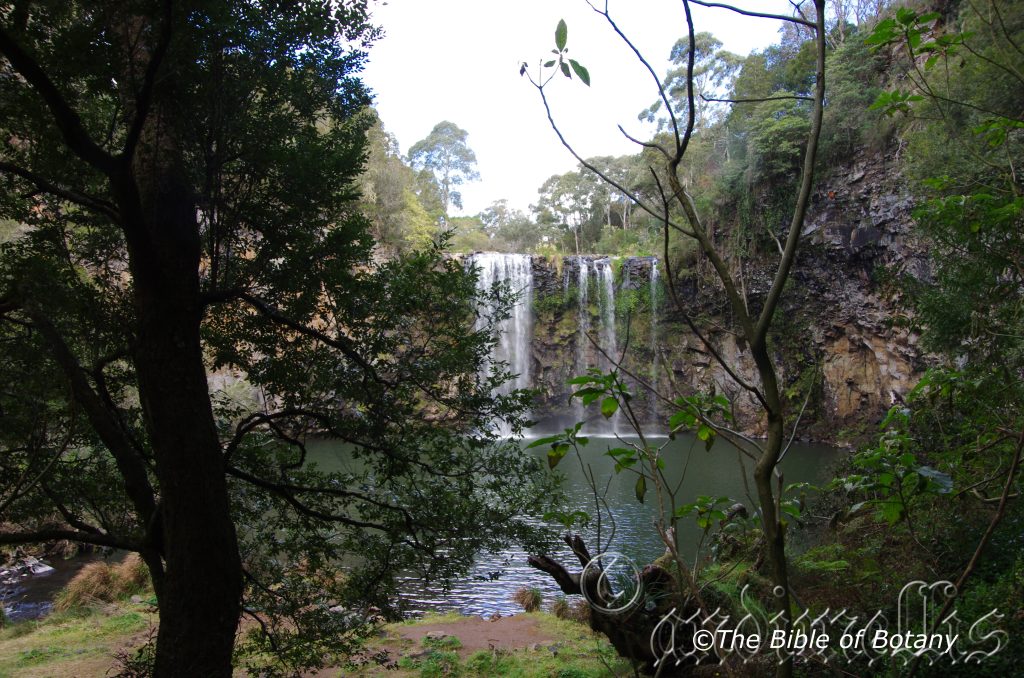
Danger Falls National Park Dorrigo NSW
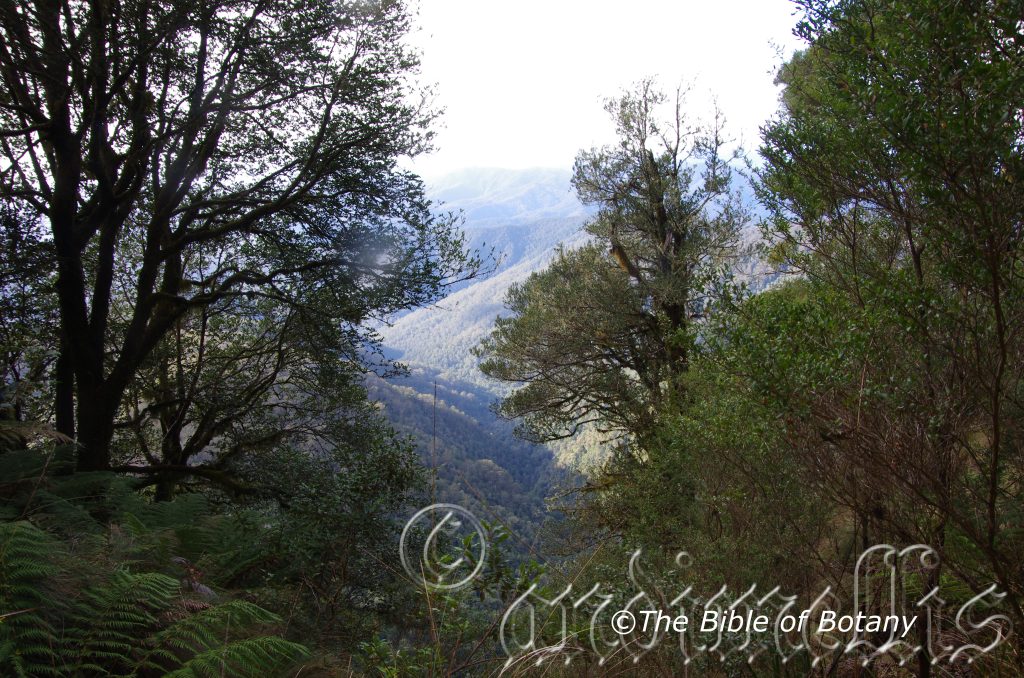
The Eagles Nest Point Lookout National Park Ebor NSW
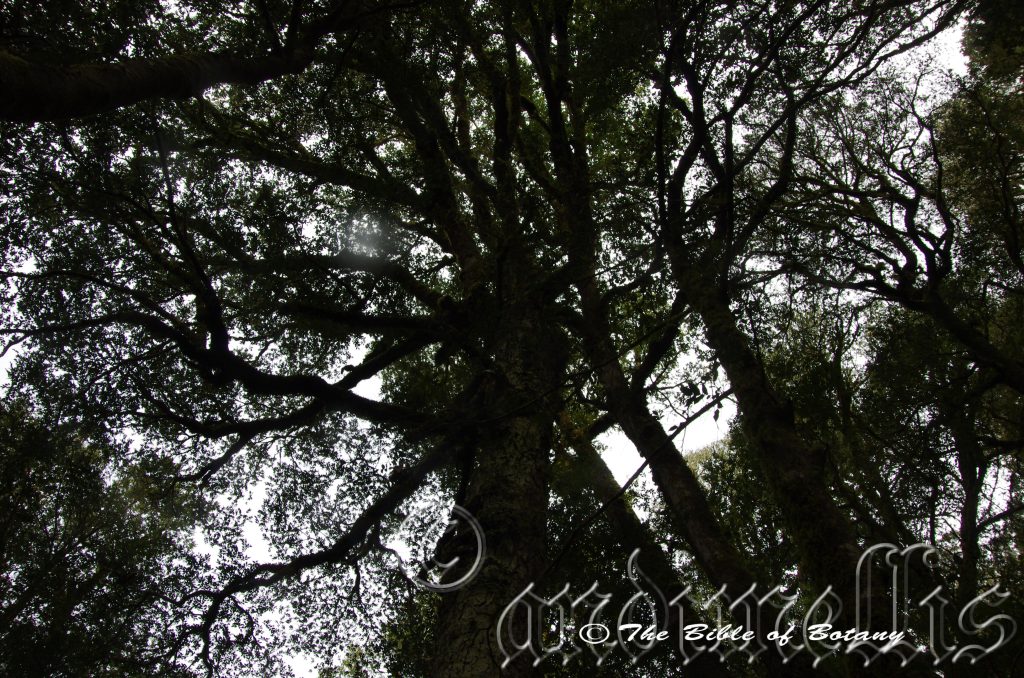
The Eagles Nest Point Lookout National Park Ebor NSW
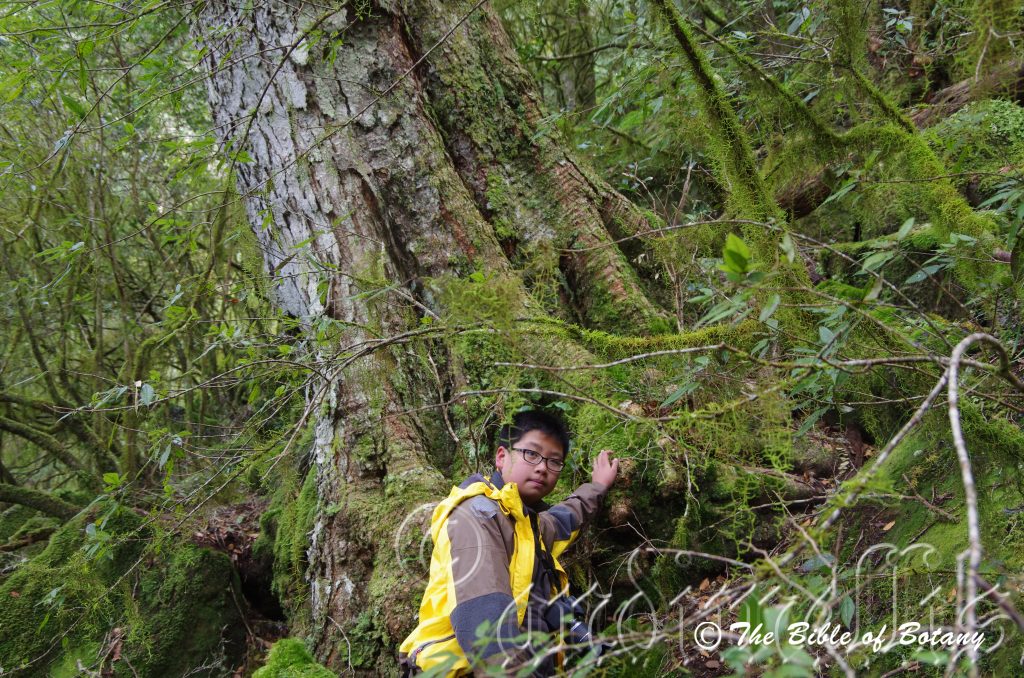
The Eagles Nest Point Lookout National Park Ebor NSW
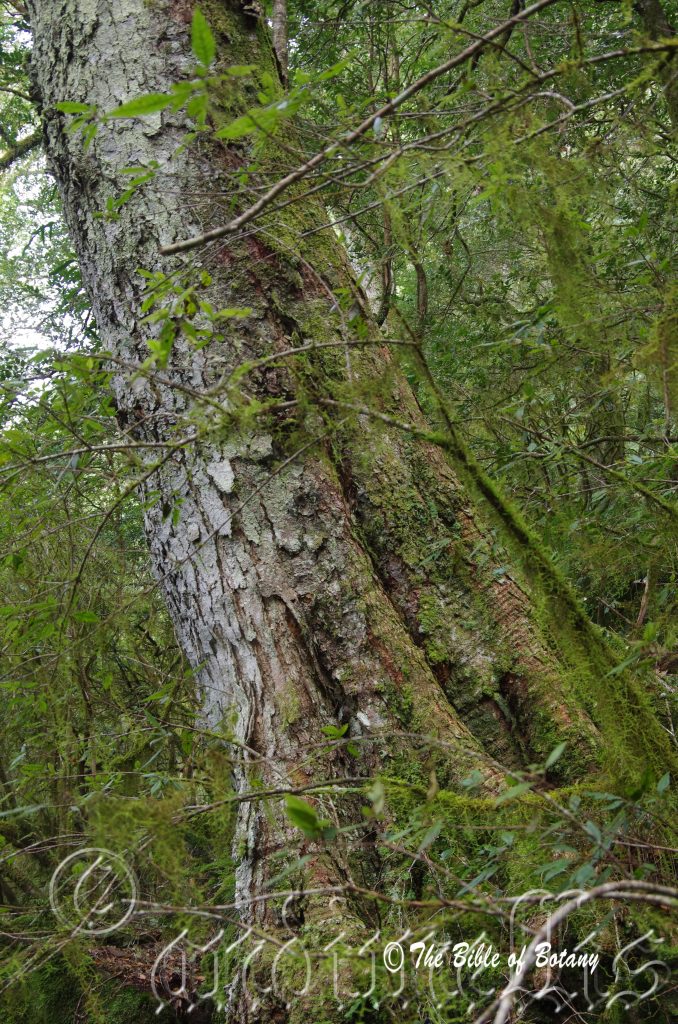
The Eagles Nest Point Lookout National Park Ebor NSW
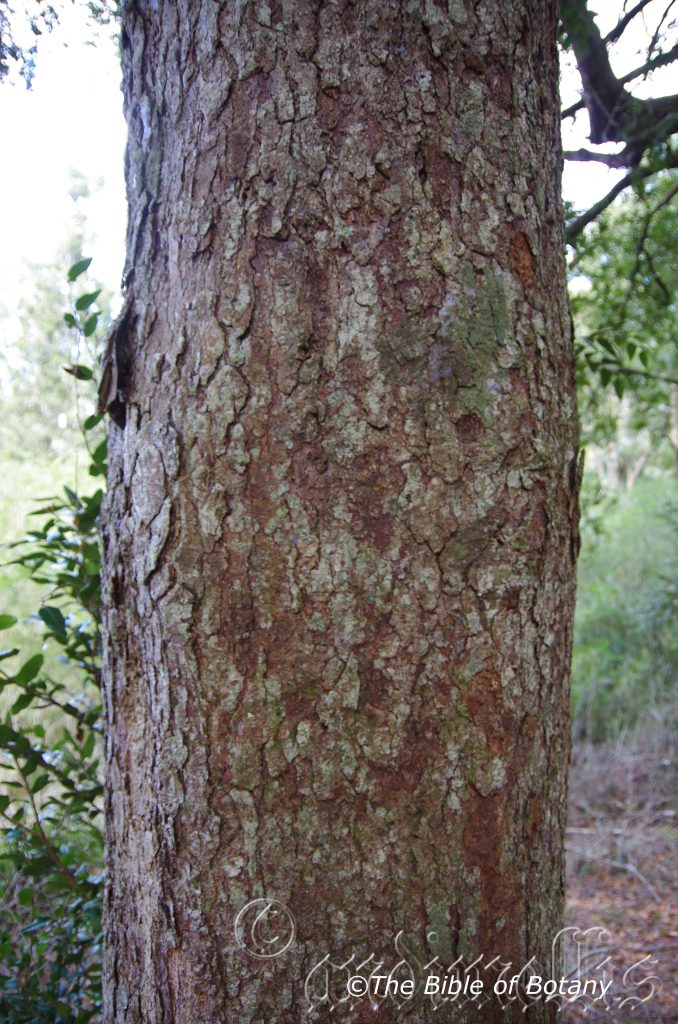
Danger Falls National Park Dorrigo NSW
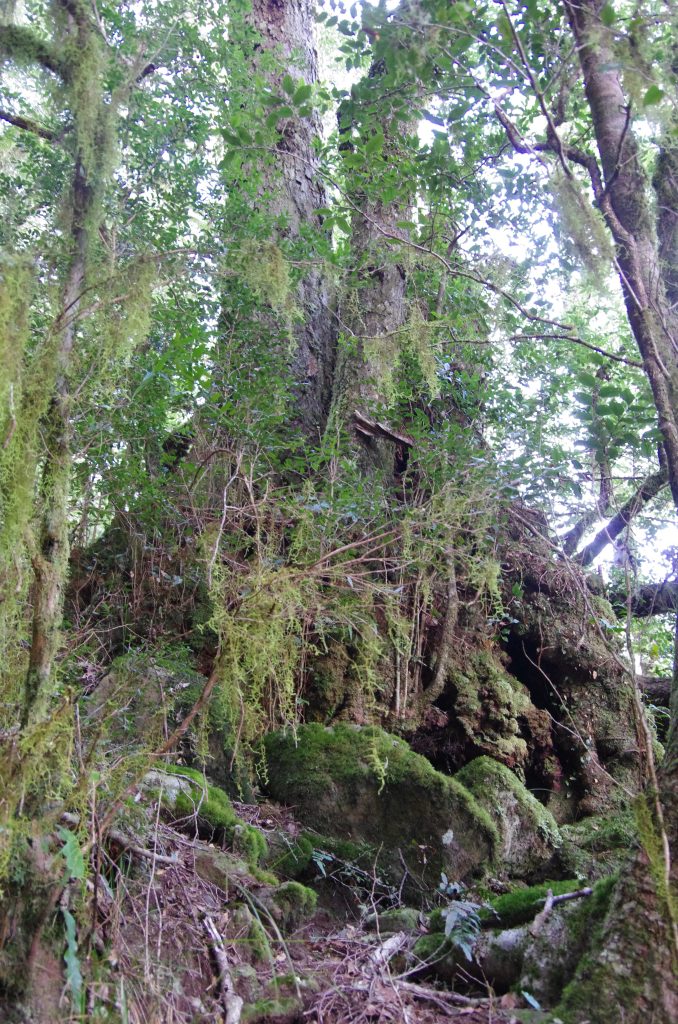
The Eagles Nest Point Lookout National Park Ebor NSW
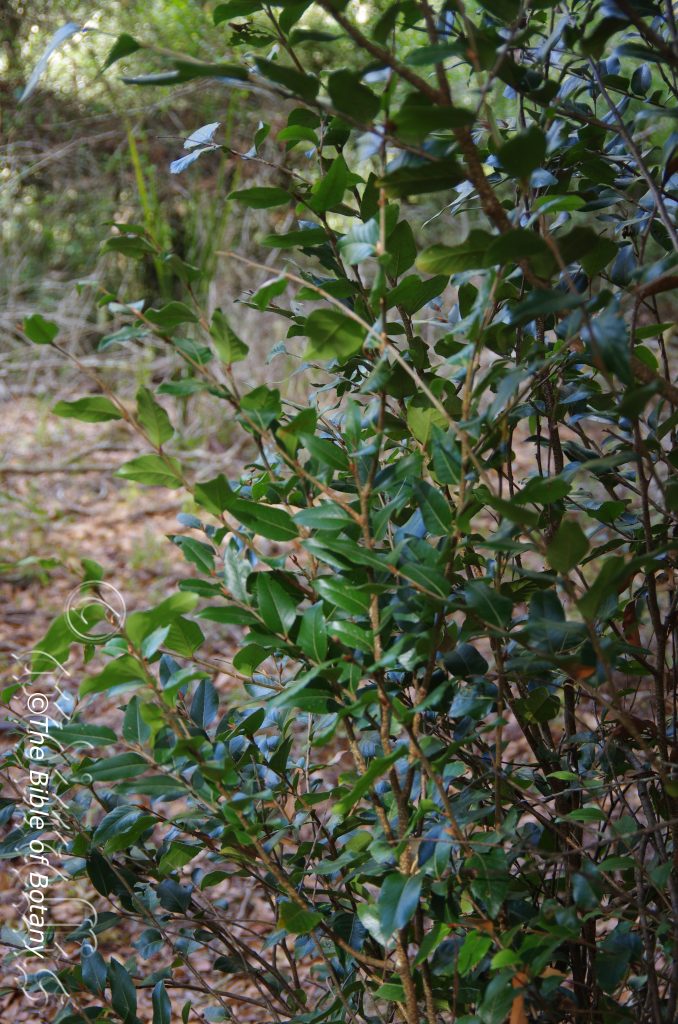
Danger Falls National Park Dorrigo NSW
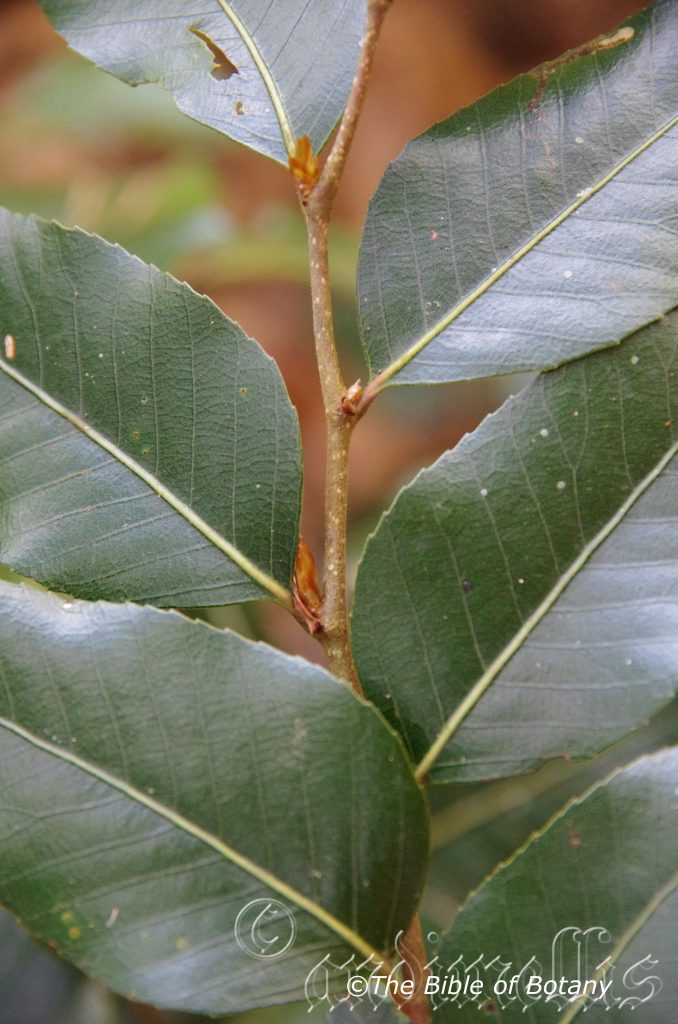
Danger Falls National Park Dorrigo NSW
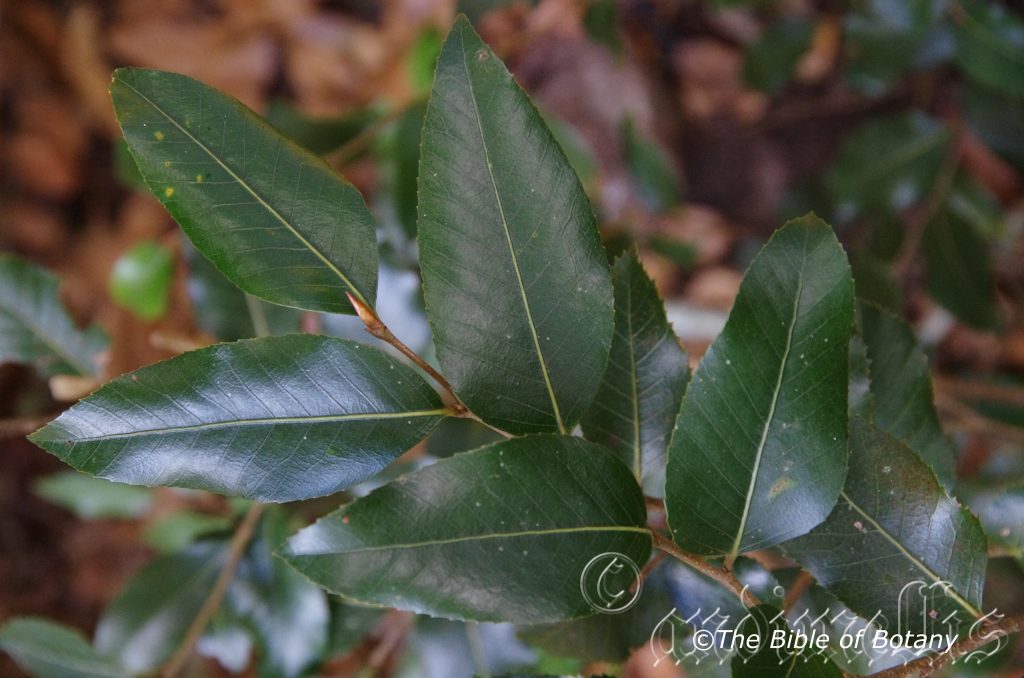
Danger Falls National Park Dorrigo NSW
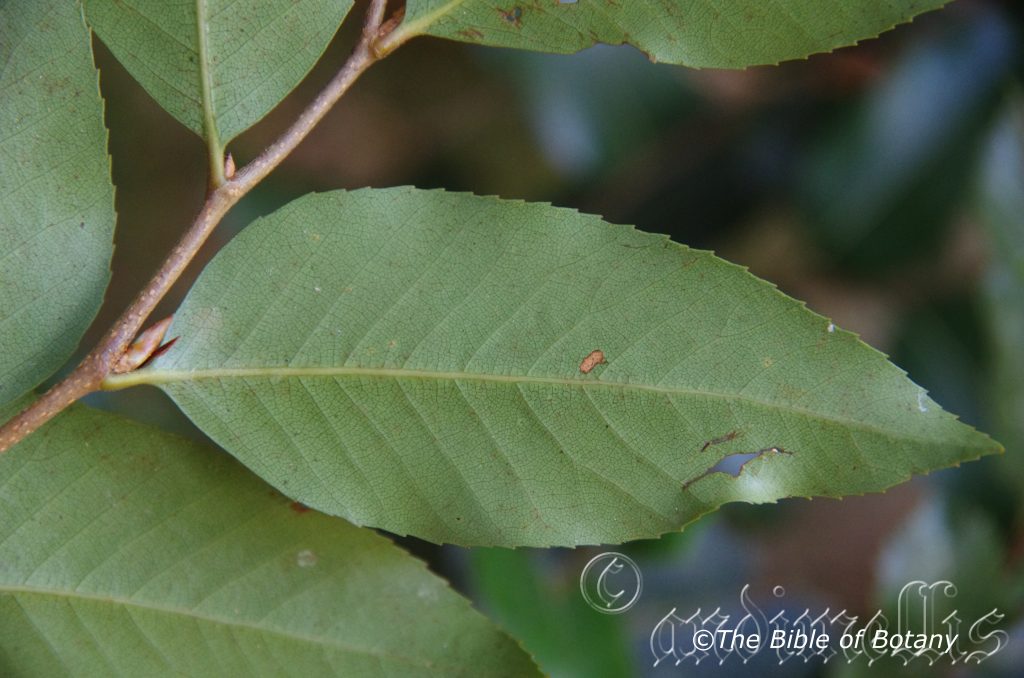
Danger Falls National Park Dorrigo NSW
Nothofagus moorei
Classification:
Unranked: Eudicots
Unranked: Rosids
Order: Fagales
Family: Nothofagaceae
Genus: From Nóthos, which is Ancient Greek for False or counterfeit and Fagus, which is Ancient Greek for the Beech Tree. It refers to trees, which look like the European Beech trees but is in fact not related.
Specie: Is probably named in honour of Charles Moore; 1820-1905, who was Director of the Sydney Botanic Gardens, a position he occupied until 5 May 1896.He undertook numerous collecting expeditions in eastern New South Wales.
Sub species:
Common Name: Antarctic Beech.
Distribution:
Nothofagus moorei is restricted to a small area south from Mount Nothofagus in the Macpherson Ranges in southern Queensland to Mount Banks in the Blue Mountains. It is found on the higher peaks of the Great Dividing Range except for a disjunct population found on the Nandewar range near Narrabri.
https://avh.ala.org.au/occurrences/search?taxa=Nothofagus+moorei#tab_mapView
Habitat Aspect Climate:
Nothofagus moorei prefers light dappled shade to full shade. It grows along creeks alluvial plains in most types of rainforests. It is found where there is a break in the canopy. The altitude ranges from 750 meters ASL to 1540 meters ASL.
The temperatures range from minus 12 degrees in August to 30 degrees in January.
The rainfall ranges from lows of 1000mm to an average of 2000mm. All areas are subject to additional moisture throughout the year from good orographic precipitation.
Soil Requirements:
Nothofagus moorei prefers better quality medium clays. The soils are usually derived from decomposed or partially decomposed black basalts. The soils pH. ranges from 5.5pH to 6pH. It does not tolerate waterlogged soils but prefers soils that are moist throughout the year. Non saline soils to moderately saline soils are tolerated.
Height & Spread:
Wild Plants: 45m to 55m by 12m to 15m.
Characteristics:
Nothofagus moorei’s trunks are often with massive trunk surrounded by basal coppice shoots. The pale brown to fawnish trunk and larger branches is tessellated in thin coriaceous flakes. Its branchlets are pale brown to greenish-brown and glabrous. The base of the trunks is the old root system that once was beneath the top soil showing evidence of erosion over the life of the trees. The roots often have several coppice shoots.
Nothofagus moorei’s simple 2nd ranked leaves are elliptical to ovate and measure 30mm to 100mm in length by 16mm to 55mm in width. The stipules measure 8mm to 10mm in length, are often reflexed and caduceous. The petioles on the individual trees vary considerably from 3mm to 5mm in length. The bases are broad cuneate to rounded-cuneate while the apexes are acute, narrowly acute or bluntly acute. The discolourous laminas are deep olive-green, semi glossy to glossy and glabrous on the upper laminas while the lower laminas are much paler. The laminas are flat and decurve downwards from the base and more so near the apexes while the margins are toothed. The mid vein is prominent on both laminas while the lateral veins are prominent on the upper laminas.
The new growth is deep reddish-maroon to deep reddish burgundy.
The inflorescences of Nothofagus moorei are e born separately from the upper leaf axils and twigs.
The male flowers form on the twigs below the female flowers and mature before the female flowers open. The cupuliform male flowers are shortly pedicillate and have 16 to 40 stamens. The involucres measure 5mm to 10mm in diameter. The 3 female flowers have a single pedicel, measures 0mm to 1mm in length and are surrounded by 4 involucre of bracts. The ovary is triloculare. The flowers appear from September to November usually on a biennial or triennial basis.
Nothofagus moorei’s fruits are ovoidal capsules. The green capsules turn fawnish when ripe. The involucres are covered in long thick bristles. The involucres measure 8mm to 10mm in length. The calyx lobes and style are not persistent on the capsules. The pale fawn involucres split into 4 valves to release the 1 or 2 ovoid nutlets in each valve.
Wildlife:
Nothofagus moorei’s wildlife is unknown to the author.
Cultivation:
Nothofagus moorei makes an excellent plant for shady areas and as an addition to the larger rainforest garden. They always look green and fresh especially where adequate ground moisture is retained whether it is grown in light shade or dense shade. It requires better quality soils with copious quantities of mulch in a cool to cold section of the garden in cool temperate to subalpine zones. As garden subjects it is likely to grow from 20 meter to 25 meters in height by 12 meter to 15 meters in diameter when grown in the open.
It is cold tolerant to temperatures at least as low as 10 degrees once established.
The trees would make very good accent trees in front of low 2 story commercial, industrial sheds or low set school buildings where they will break up hard rigid architectural lines and give warmth and breadth to buildings.
Propagation:
Nothofagus moorei does not produce seed in the warmer northern parts of its distribution. Seeds used for propagation maybe secured from southern highland trees especially from the Tasmania highlands.
The seeds can be sown directly into a seed raising mix. Cover the seeds with 5mm to 10mm of fine weed free mulch and keep moist. Place the tray in a warm semi shaded position beneath 50mm to 75mm shade cloth. When the seedlings are 30mm to 50mm tall, prick them out and plant them into 50mm native tubes using a good organic mix.
Once the seedlings reach 100mm to 150mm in height they can be planted out into their permanent position.
Fertilize using seaweed, fish emulsion or organic chicken pellets soaked in water on an alternate basis. Fertilize every two months until the plants are established then twice annually in early September or March to maintain better health, vitality and flowering.
Further Comments from Readers:
Hi reader, it seems you use The Bible of Botany a lot. That’s great as we have great pleasure in bringing it to you! It’s a little awkward for us to ask, but our first aim is to purchase land approximately 1,600 hectares to link several parcels of N.P. into one at The Pinnacles NSW Australia, but we need your help. We’re not salespeople. We’re amateur botanists who have dedicated over 30 years to saving the environment in a practical way. We depend on donations to reach our goal. If you donate just $5, the price of your coffee this Sunday, We can help to keep the planet alive in a real way and continue to bring you regular updates and features on Australian plants all in one Botanical Bible. Any support is greatly appreciated. Thank you.
In the spirit of reconciliation we acknowledge the Bundjalung, Gumbaynggirr and Yaegl and all aboriginal nations throughout Australia and their connections to land, sea and community. We pay our respect to their Elders past, present and future for the pleasures we have gained.
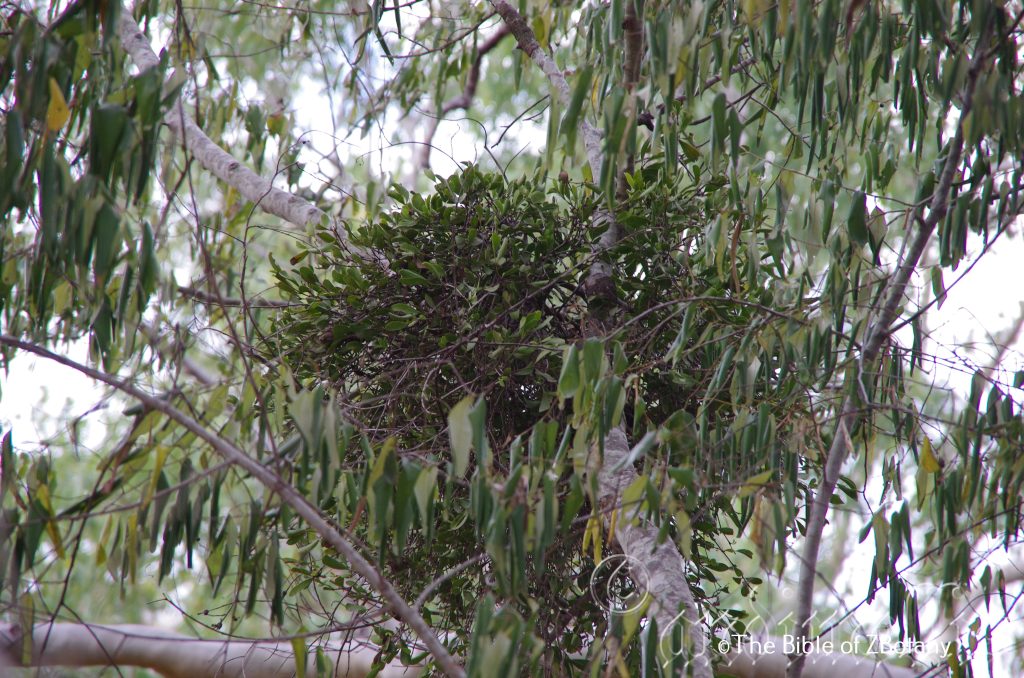
Magnetic Island Qld.
Notothixos cornifolius
Classification:
Division: Magnoliophyta
Order: Santalales
Family: Santalaceae
Genus: From Nōtum, which is Ancient Greek for familiar, recognized or well-known and Thíxis, which is Ancient Greek for touching. It refers to parasitic plants, which; we are all familiar with, that grow on the underside of a branch and hang down.
Specie: From Kérasm, which is Ancient Greek or Cornum, which is Latin for horny or horn like and Folium, which is Latin for foliage. It refers to leaves, which have tiny horn like projections.
Sub species:
Common Name: Kurrajong Mistletoe
Distribution:
Notothixos cornifolius is found in 2 distinct disjunct populations along the east coast from the western Plains, on and east of the Great Dividing Range to the coast. The northern population is found south from the Lockhart River to the Copperfield River and to the coast on Cape York Peninsula in far north Queensland. The southern plants are found south from the Mary River in south eastern Queensland to the Wee Jasper Nature Reserve in southern New South Wales.
https://avh.ala.org.au/occurrences/search?taxa=Notothixos+cornifolius#tab_mapView
Habitat Aspect Climate:
Notothixos cornifolius prefers light dappled shade to full sun. It prefers to parasitize members of the Sterculiaceae family in dry rainforests, moist rainforests or littoral rainforests. The altitude ranges from 15 meter ASL to 920 meters ASL.
The temperatures range from minus 4 degrees in August to 35 degrees in January.
The rainfall ranges from lows of 400mm to an average of 3200mm.
Soil Requirements:
Notothixos cornifolius hosts vary greatly from all types of sandy loams to medium clays. The soils are usually derived from decomposed granites, sandstones, metamorphic rocks brown basalt, black basalts or accumulated beach sands. The soils pH. ranges from 5pH to 7pH. It does not tolerate waterlogged soils. Non saline soils to moderately saline soils are tolerated.
Height & Spread:
Wild Plants: 0.8m to 1m by 1m to 1.6m.
Characteristics:
Notothixos cornifolius stems are usually a spreading to pendulous. The stems are silvery grey and densely covered in short white to fawnish caduceous, canescent hairs. The new growth is crimson, red or orange. The prophyll measure 0.3mm to 0.5mm in length. The cataphylls are broad triangular and measure 1mm to 2mm in length and sheath the stem
Notothixos cornifolius’s opposite very brittle leaves are usually elliptic to narrow ovate or rarely lanceolate and sometimes falcate. They measure 40mm to 115mm in length by 10mm to 25mm in width. The petioles are glabrous and measure 2mm to 10mm in length. The bases are tapering to the petiole and it is often difficult to separate from where the lamina finishes and the petiole starts while the apexes are usually obtuse or rarely acute. The concolourous laminas are pale bluish-green, yellow-green, mid olive green to pale grey-green dull and densely covered in pale silvery pulverulent scales with deep brown centers.
The laminas gently curve downwards in an arch from the mid vein to the margins while the margins are entire and thickened. The leaves have 3 to 5 longitudinal parallel veins which are slightly prominent on the upper laminas and are faintly visible on the lower laminas while the reticulated veins are obscure.
The new leaves are densely covered in white to fawn caduceous canescent hairs.
The indeterminate inflorescences of Notothixos cornifolius are short cymules are born from the upper pair of leaf axils which grow out with 5 to 12 decussate pairs. The peduncle, raceme and pedicels are covered in cream scales. The peduncle measures 10mm to 20mm in length while the raceme measures 20mm to 35mm in length and the pedicels measure 5mm to 8mm in length. The cupuliform calyxes measure 0.2mm to 0.5mm in length. The usually swollen tubular corolla is yellowish-green, pastel green and densely covered in cream pulverulent scales.
The male corolla tubes measures 2mm to 3mm in length by 0.8mm to 1.4mm in diameter around the middle. The 4 minute linear lobes have acute apexes. The female flowers measure 2.5mm to 3.2mm in length. The ovary measures 1.8mm to 2mm in length. The style is very short or absent with the stigma directly on the ovary. The flowers appear from September to February.
Notothixos cornifolius fruits are ellipsoidal berries. The pale greenish-blue berries are glabrous and turn yellow when ripe. The berries measure 7mm to 10mm in length by 5mm to 8mm in diameter. The ovate seeds measure 4mm to 5mm in length.
Wildlife:
Notothixos cornifolius hosts the beautiful little Mistletoe Bird (Dicaeum hirundinaceum) is the main distributor of the seeds however other small honeyeaters can also be involved.
Cultivation:
Notothixos cornifolius is not a favourite of many people and just as many appreciate the real beauty they have to offer.
However if one commences life on a tree close to the ground where the flowers and fruits can be viewed easily it may be worthwhile leaving there as a curiosity. The fruits can then be controlled when ripe or they can be left to nature. They make an interesting addition to the garden. It is a great talking point for children and adults alike. The seeds are probably best placed onto a Sterculiaceae specie as per the list on Parasites and their hosts.
Propagation:
Seeds: Notothixos cornifolius seeds can be placed directly onto the branch of an appropriate host tree. See list under parasitizes and their hosts. Do not remove the sticky flesh from the seed as this helps with the adhering process of the seed to the host and with the absorption of moisture until the little seedling is capable of supporting itself. Alternatively place a fruit in your mouth and try chewing and swallowing the fruit and you will understand how much mucous is produced. (Try this with your children and start them in a botanical career.) Now place the seed where it can be seen about 1.5 meters above the ground. The mucous will ensure it remains stuck to the trunk or branch selected. It should commence germination within a week. Watch the process from the start of the lead shoot with a leaf to the roots as they start their search for food. Measure the results and the time taken from the chewing to a well-developed plant with leaves, roots and even flowers. (Are the roots surface or penetrating?) What other observations can you and your child make?
Practice saying the name “no to thix os” (The no and to. The o is said as in not. Greek words are said using the lower case) Good try it again. Now try “cor ni foh li us” see botany is fun.
Further Comments from Readers:
Hi reader, it seems you use The Bible of Botany a lot. That’s great as we have great pleasure in bringing it to you! It’s a little awkward for us to ask, but our first aim is to purchase land approximately 1,600 hectares to link several parcels of N.P. into one at The Pinnacles NSW Australia, but we need your help. We’re not salespeople. We’re amateur botanists who have dedicated over 30 years to saving the environment in a practical way. We depend on donations to reach our goal. If you donate just $5, the price of your coffee this Sunday, We can help to keep the planet alive in a real way and continue to bring you regular updates and features on Australian plants all in one Botanical Bible. Any support is greatly appreciated. Thank you.
In the spirit of reconciliation we acknowledge the Bundjalung, Gumbaynggirr and Yaegl and all aboriginal nations throughout Australia and their connections to land, sea and community. We pay our respect to their Elders past, present and future for the pleasures we have gained.
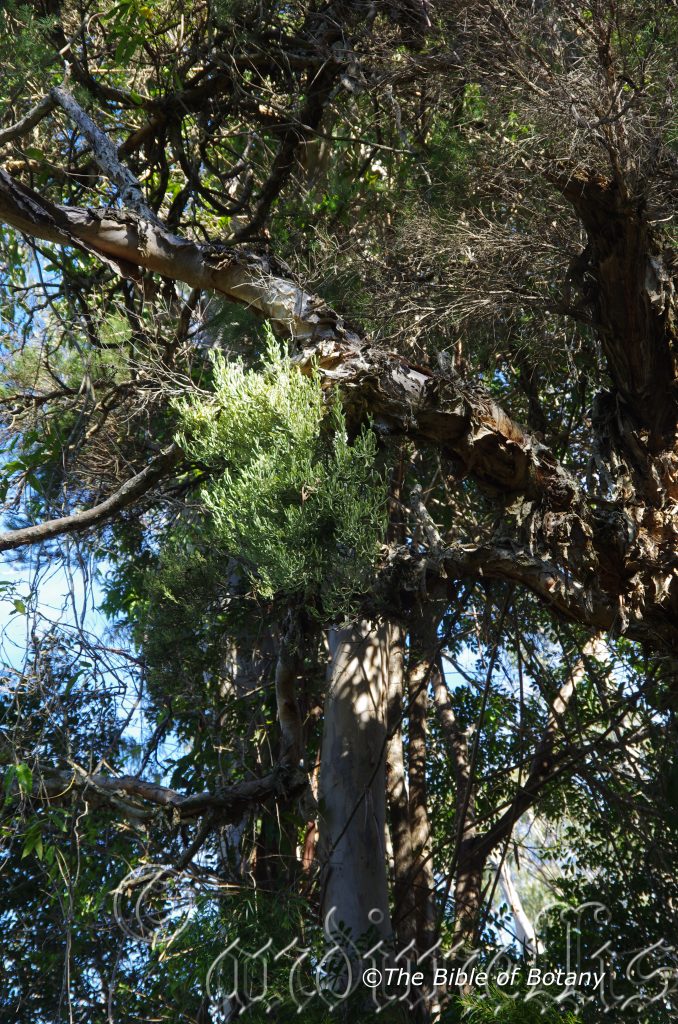
Pillar Valley NSW
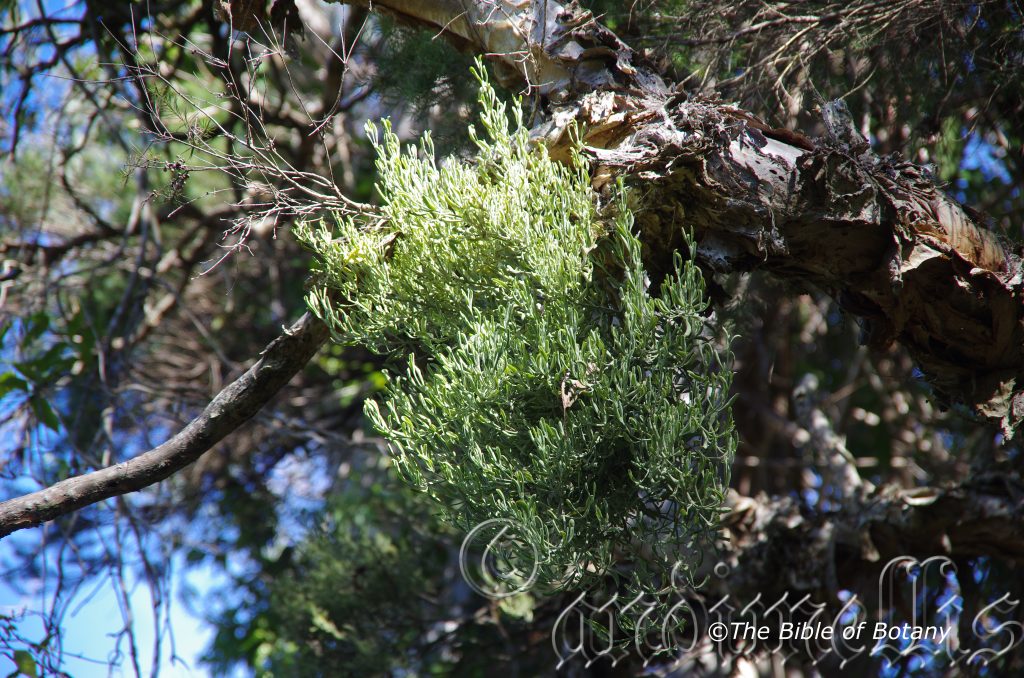
Pillar Valley NSW
Notothixos incanus
Classification:
Division: Magnoliophyta
Order: Santalales
Family: Santalaceae
Genus: From Nōtum, which is Ancient Greek for familiar, recognised or well-known and Thíxis, which is Ancient Greek for touching. It refers to parasitic plants, which; we are all familiar with, that grow on the underside of a branch and hang down.
Specie: From Canescent, which is Latin for to grow grey. It refers to organs usually the leaves, which are covered in soft grey hairs.
Sub species:
Common Name:
Distribution:
Notothixos incanus is found south from the Fitzroy River in south eastern Queensland to the Greta Lakes in coastal central New South Wales. There is a small population between Munburra and the Annon River on Cape York Peninsula. It is found on and east of the Great Dividing Range to the coast except for a population in the Carnarvon Gorge National Park.
https://avh.ala.org.au/occurrences/search?taxa=Notothixos+incanus#tab_mapView
Habitat Aspect Climate:
Notothixos incanus prefers light dappled shade on the margins of well-developed tropical rainforests, warm sub-tropical rainforests or wet sclerophyll forests. It is found in moister conditions along dry riverine river beds and banks as well as littoral rainforest. The altitude ranges from 5 meter ASL to 950 meters ASL.
The temperatures range from minus 4 degrees in August to 35 degrees in January.
The rainfall ranges from lows of 400mm to an average of 2000mm.
Soil Requirements:
Notothixos incanus host trees that grow on better quality sandy loams to medium clays. The soils are usually derived from decomposed granites, sandstones, metamorphic rocks or black basalts. The soils pH. ranges from 5pH to 7pH. It does not tolerate waterlogged soils. Non saline soils to moderately saline soils are tolerated.
Height & Spread:
Wild Plants: 0.4m to 0.5m by 0.5m to 0.7m.
Characteristics:
Notothixos incanus is usually a spreading erect tree parasite. The stems are silvery grey and covered in short white or pale grey stellate hairs with a few longer white dendritic hairs. The prophyll and cataphylls measure 0.6mm to 1mm in length. The cataphylls are 1mm to 2mm above the prophyll.
Notothixos incanus’s opposite leaves are usually spathulate to narrow spathulate. They measure 15mm to 25mm in length by 5mm to 7mm in width. The bases are tapering attenuate to the petiole and it is often difficult to separate from where the lamina finishes and the petiole starts while the apexes are usually obtuse to truncate with a retuse, emarginate or mucronate tip. The concolourous laminas are pale bluish-green, mid bluish-green to pale grey-green dull and covered in short white or pale grey stellate hairs with a few longer white dendritic hairs. The laminas curve slightly upwards in an arch from the mid vein to the margins while the margins are entire. The mid vein and lateral veins are obscure on both laminas.
The inflorescence of Notothixos incanus are short cymules usually of 3 flowers that are born from the upper pair of leaf axils which grow out. The peduncle is covered in short white or pale grey stellate hairs with a few longer white dendritic hairs. The peduncle measures 1mm to 2mm in length. The cupuliform calyxes measure 0.2mm to 0.5mm in length. The 4 divaricate bracts are triangular and covered in short white or pale grey stellate hairs with a few longer white dendritic hairs. They measure 1mm to 1.5mm in length. The stamens are absent on the female flowers while the style is absent on the male flowers.
The male flowers measure 1.5mm to 2mm in diameter. The 4 obtuse pale lime-green petals are divaricate and measure 0.5mm to 0.6mm in length. The thick, pastel green anthers measure 0.1mm in length while the broad sagittate anthers measure 0.15mm in length and width. The stipes measure 1.5mm to 2mm in length.
The female flowers measure 3mm to 3.6mm in diameter. The 4 obtuse pale lime-green petals are divaricate and measure 1.5mm to 2mm in length. The spherical ovary measures 0.5mm to 0.6mm in length by 0.5mm to 0.6mm in diameter. The style is very short or absent with the stigma sitting directly on the apex of the ovary. The flowers appear from September to February.
Notothixos incanus fruits are fusiform berries. The green berries are glabrous and turn yellow when ripe. The sepals are persistent on the apexes of the berries. The berries measure 10mm to 13mm in length by 7mm to 9mm in diameter.
Wildlife:
Notothixos incanus’s the beautiful little Mistletoe Bird (Dicaeum hirundinaceum) is the main distributor of the seeds however other small honeyeaters can also be involved.
Cultivation:
Notothixos incanus is not a favourite many people and just as many appreciate the real beauty they have to offer.
However if one commences life on a tree close to the ground where the flowers and fruits can be viewed easily it may be worthwhile leaving there as a curiosity. The fruits can then be controlled when ripe or they can be left to nature. They make an interesting addition to the garden. It is a great talking point for children and adults alike. The seeds must be placed onto various Melaleuca specie as per the Australian Parasitic Plants and their hosts section.
Propagation:
Seeds: Notothixos incanus seeds can be placed directly onto the branch of an appropriate host tree. See list under parasitizes and their hosts. Do not remove the sticky flesh from the seed as this helps with the adhering process of the seed to the host and with the absorption of moisture until the little seedling is capable of supporting itself.
Alternatively place a fruit in your mouth and try chewing and swallowing the fruit and you will understand how much mucous is produced. (Try this with your children and start them in a botanical career.) Now place the seed where it can be seen about 1.5 meters above the ground. The mucous will ensure it remains stuck to the trunk or branch selected. It should commence germination within a week. Watch the process from the start of the lead shoot with a leaf to the roots as they start their search for food. Measure the results and the time taken from the chewing to a well-developed plant with leaves, roots and even flowers. (Are the roots surface or penetrating?) What other observations can you and your child make?
Practice saying the name “no to thix os” (The no and to. The o is said as in not. Greek words are said using the lower case) Good. try it again. Now try “in ka nus” see botany is fun.
Further Comments from Readers:
Hi reader, it seems you use The Bible of Botany a lot. That’s great as we have great pleasure in bringing it to you! It’s a little awkward for us to ask, but our first aim is to purchase land approximately 1,600 hectares to link several parcels of N.P. into one at The Pinnacles NSW Australia, but we need your help. We’re not salespeople. We’re amateur botanists who have dedicated over 30 years to saving the environment in a practical way. We depend on donations to reach our goal. If you donate just $5, the price of your coffee this Sunday, We can help to keep the planet alive in a real way and continue to bring you regular updates and features on Australian plants all in one Botanical Bible. Any support is greatly appreciated. Thank you.
In the spirit of reconciliation we acknowledge the Bundjalung, Gumbaynggirr and Yaegl and all aboriginal nations throughout Australia and their connections to land, sea and community. We pay our respect to their Elders past, present and future for the pleasures we have gained.
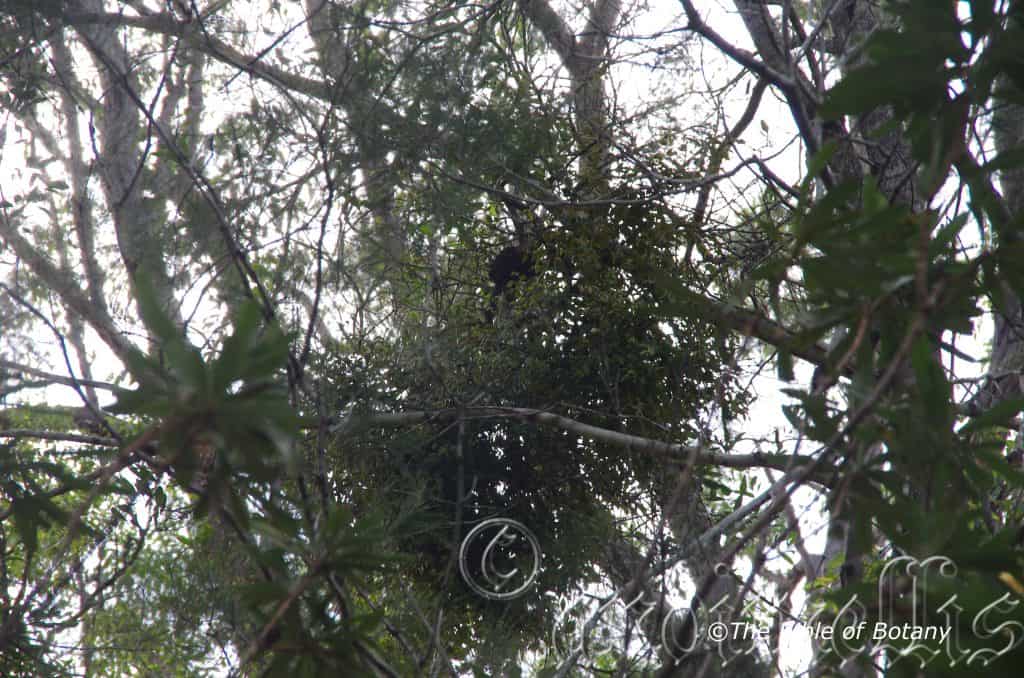
Pillar Valley NSW
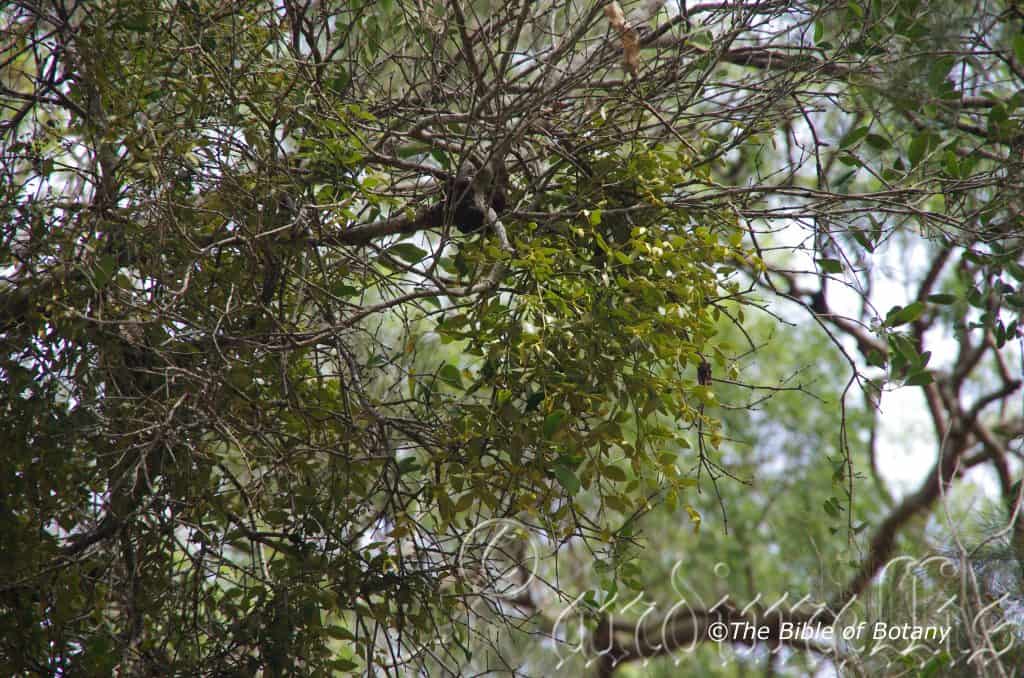
Pillar Valley NSW
Notothixos subaureus
Classification:
Division: Magnoliophyta
Order: Santalales
Family: Santalaceae
Genus: From Nōtum, which is Ancient Greek for familiar, recognised or well-known and Thíxis, which is Ancient Greek for touching. It refers to parasitic plants, which; we are all familiar with, that grow on the underside of a branch and hang down.
Specie: From Sub, which is Ancient Greek/Latin for below or lower and Auriculata, which is Greek/Latin for shaped like an ear. It refers to structures or organs, which is almost shaped like an ear.
Sub species:
Common Name: Golden Mistletoe
Distribution:
Notothixos subaureus is found south from Wallaby Creek Home Rule to Tarraville near Townsville in northern Queensland and from the Byfield National Park in central coastal Queensland to Mallacoota in north eastern coastal Victoria. It is usually found on and east of the Great Dividing Range including the off shore Islands.
https://avh.ala.org.au/occurrences/search?taxa=Notothixos+subaureus#tab_mapView
Habitat Aspect Climate:
Notothixos subaureus prefers light dappled shade to full sun. It prefers Loranthaceae as its hosts on the margins of well-developed tropical rainforests, warm sub-tropical rainforests, wet schlerophyll forests or littoral rainforest along the coast or coastal ranges with the exception of an isolated population in the Carnarvon Gorge. The altitude ranges from 10 meter ASL to 1120 meters ASL.
The temperatures range from minus 4 degrees in August to 35 degrees in January.
The rainfall ranges from lows of 800mm to an average of 3200mm.
Soil Requirements:
Notothixos subaureus host trees prefer to grow on better quality sandy loams to medium clays. The soils are usually derived from decomposed granites, sandstones, metamorphic rocks brown basalt and black basalts, shale, accumulated beach sands and accumulated coral sands. The soils pH. ranges from 5pH to 7pH. They do not tolerate waterlogged soils. Non saline soils to moderately saline soils are tolerated.
Height & Spread:
Wild Plants: 0.4m to 0.6m by 0.8m to 1m.
Characteristics: Notothixos subaureus is usually a spreading to erect aerial parasite. The stems are silvery-grey and densely covered in short pale golden-yellow or rarely silvery or pale grey floccose hairs often becoming sparsely covered on the adaxial side over a period of time. The prophyll and cataphylls measure 1mm to 1.5mm in length. The cataphylls are irregularly positioned 1mm to 5mm above the prophyll.
Notothixos subaureus’s opposite leaves are angular ovate, rhombic or elliptic and measure 10mm to 50mm in length by 10mm to 20mm in width. The petioles are densely covered in short pale golden-yellow or rarely silvery or pale grey floccose hairs often becoming sparsely covered on the adaxial side over a period of time and measure 3mm to 5mm in length. The bases taper to the petiole and it is often difficult to separate from where the lamina finishes and the petiole starts while the apexes are obtuse to broad acuminate or at times with a blunt mucronate tip. The discolourous laminas are pale bluish-green, mid bluish-green, dull or at times semi glossy and densely covered in short pale golden-yellow or rarely silvery or pale grey floccose hairs often becoming sparsely covered over a period of time while the lower lamina is paler and densely covered in short bright golden-yellow or rarely silvery or pale grey floccose hairs. The laminas curve strongly downwards in an arch from the mid vein to the margins while the margins are entire. The mid vein and lateral veins are obscure on both laminas.
The determinate inflorescences of Notothixos subaureus are usually of 3 flowers that are born from the upper pair of leaf axils which grow out. The peduncle and pedicels are densely covered in short bright golden-yellow or rarely silvery or pale grey floccose hairs. The peduncle measures 2mm to 5mm in length while the pedicels measures 1mm to 2mm in length. The stamens are absent on the female flowers while the style is absent on the male flowers.
The yellowish male flowers measure 1mm to 1.2mm in diameter. The 4 obtuse yellowish petals are divaricate and measure 0.3mm to 0.4mm in length. The thick, pastel yellowish anthers measure 0.1mm in length while the broad sagittate anthers measure 0.15mm in length and width. The stipes measure 0.5mm to 0.8mm in length. The yellowish female corollas are densely covered in short bright golden-yellow or rarely silvery or pale grey floccose hairs externally and are glabrous internally. The corollas measure 2mm to 2.4mm in length by 1mm to 1.2mm in diameter. The flowers appear from throughout the year.
Notothixos subaureus fruits are ellipsoidal to globose berries. The green berries are glabrous and turn translucent white when ripe. The berries are moderately covered short bright golden-yellow or rarely silvery or pale grey floccose hairs measure 7mm to 9mm in length by 6mm to 9mm in diameter.
Wildlife:
Notothixos subaureus’s the beautiful little Mistletoe Bird (Dicaeum hirundinaceum) is the main distributor of the seeds however other small honeyeaters can also be involved.
Cultivation:
Notothixos subaureus is not a favourite many people and just as many appreciate the real beauty they have to offer.
However if one commences life on a tree close to the ground where the flowers and fruits can be viewed easily it may be worthwhile leaving there as a curiosity. The fruits can then be controlled when ripe or they can be left to nature. They make an interesting addition to the garden. It is a great talking point for children and adults alike. The seeds must be placed onto various Casuarinaceae, Myrtaceae, Rutaceae specie as per the Australian Parasitic Plants and their hosts section.
Propagation:
Seeds: Notothixos subaureus is not a favourite garden subject for many gardeners while very few appreciate the real beauty and link in the chain of life the plants offer the environment.
However if one commences life on a tree close to the ground where the flowers and fruits can be viewed easily it may be worthwhile leaving there as a curiosity. The fruits can then be harvested and eaten when ripe or they can be left to nature. They make an interesting addition to the garden. This is a great talking point for children and adults alike. The seeds must be placed onto Casuarinaceae specie or Banksia to survive.
Further Comments from Readers:
Hi reader, it seems you use The Bible of Botany a lot. That’s great as we have great pleasure in bringing it to you! It’s a little awkward for us to ask, but our first aim is to purchase land approximately 1,600 hectares to link several parcels of N.P. into one at The Pinnacles NSW Australia, but we need your help. We’re not salespeople. We’re amateur botanists who have dedicated over 30 years to saving the environment in a practical way. We depend on donations to reach our goal. If you donate just $5, the price of your coffee this Sunday, We can help to keep the planet alive in a real way and continue to bring you regular updates and features on Australian plants all in one Botanical Bible. Any support is greatly appreciated. Thank you.
In the spirit of reconciliation we acknowledge the Bundjalung, Gumbaynggirr and Yaegl and all aboriginal nations throughout Australia and their connections to land, sea and community. We pay our respect to their Elders past, present and future for the pleasures we have gained.
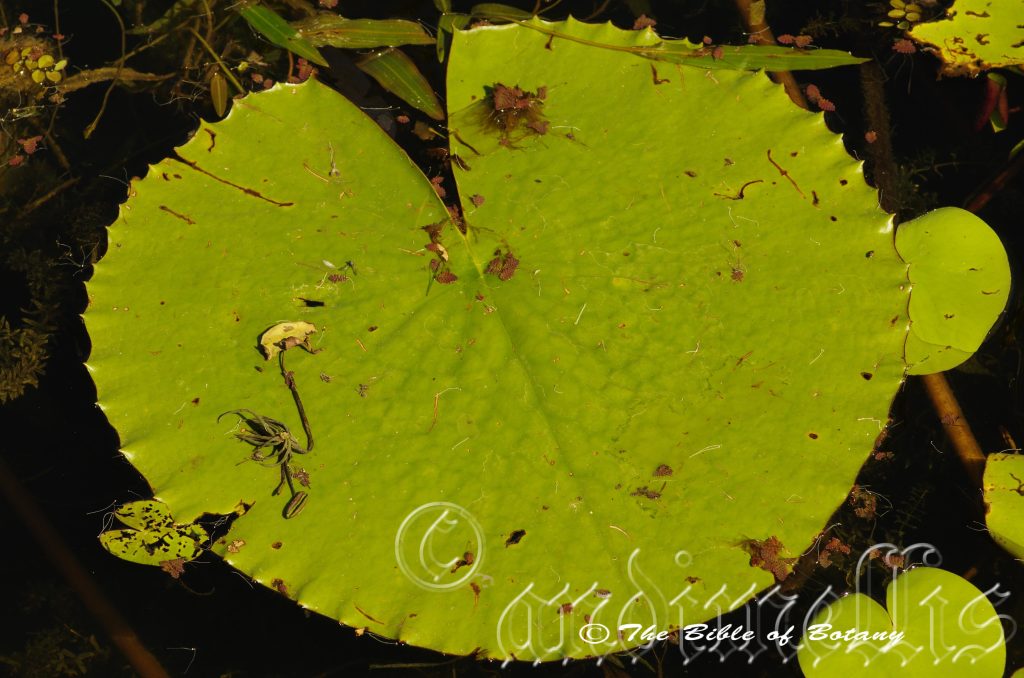
Townsville Qld.
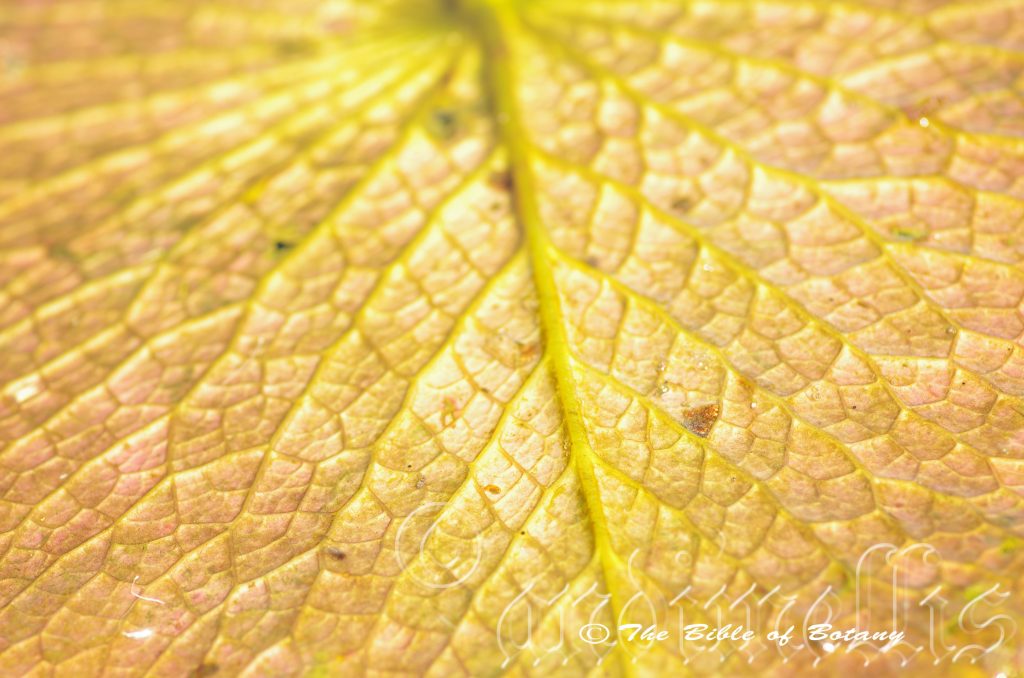
Townsville Qld.
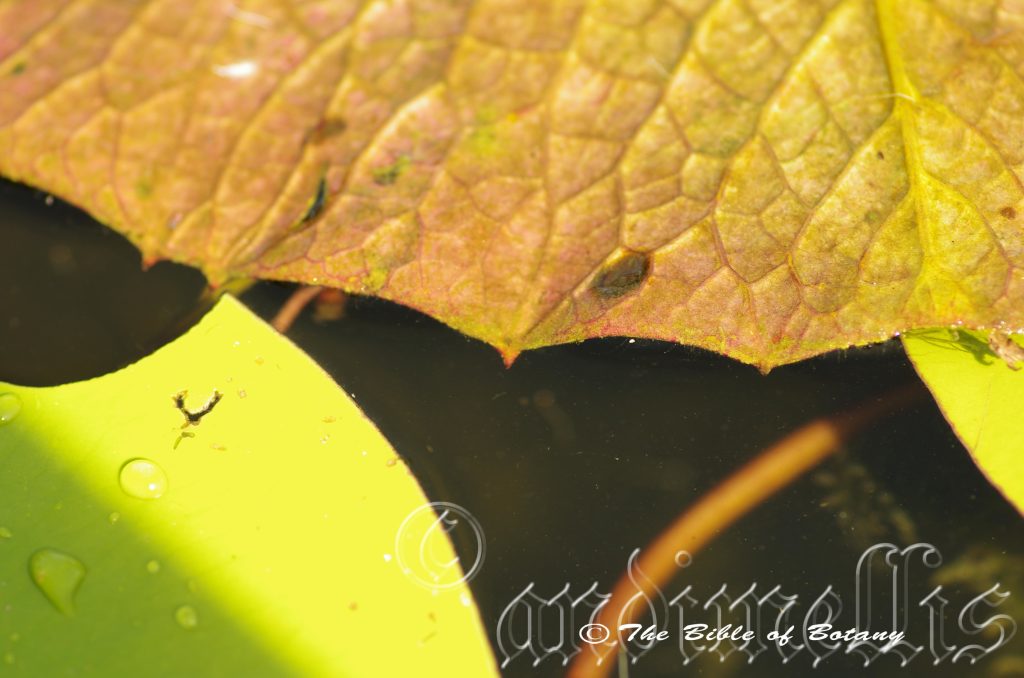
Townsville Qld.
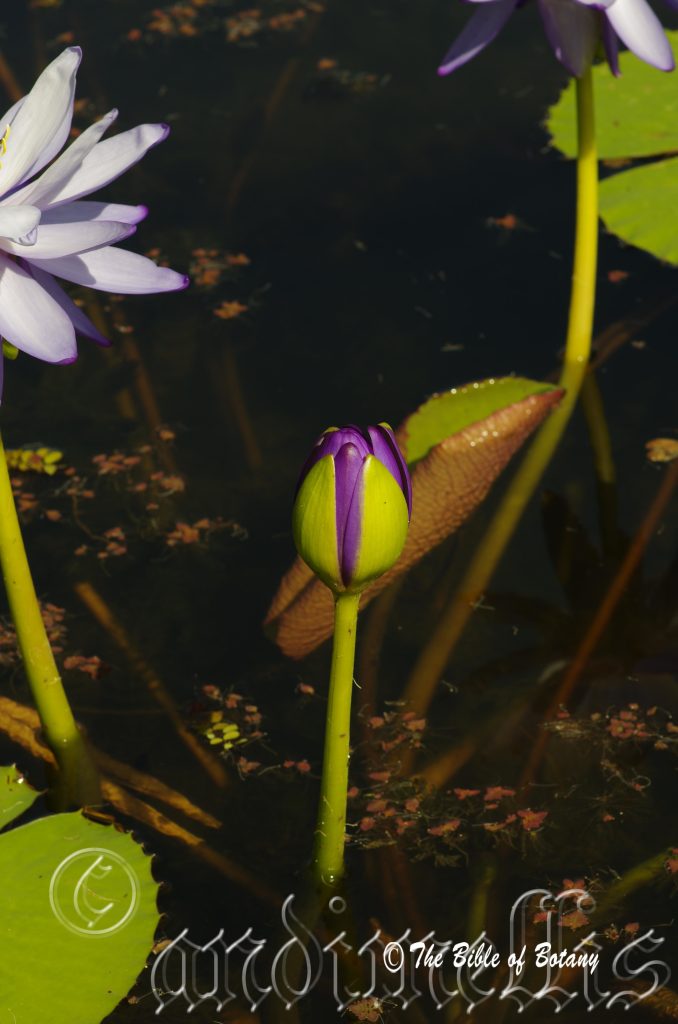
Townsville Qld.
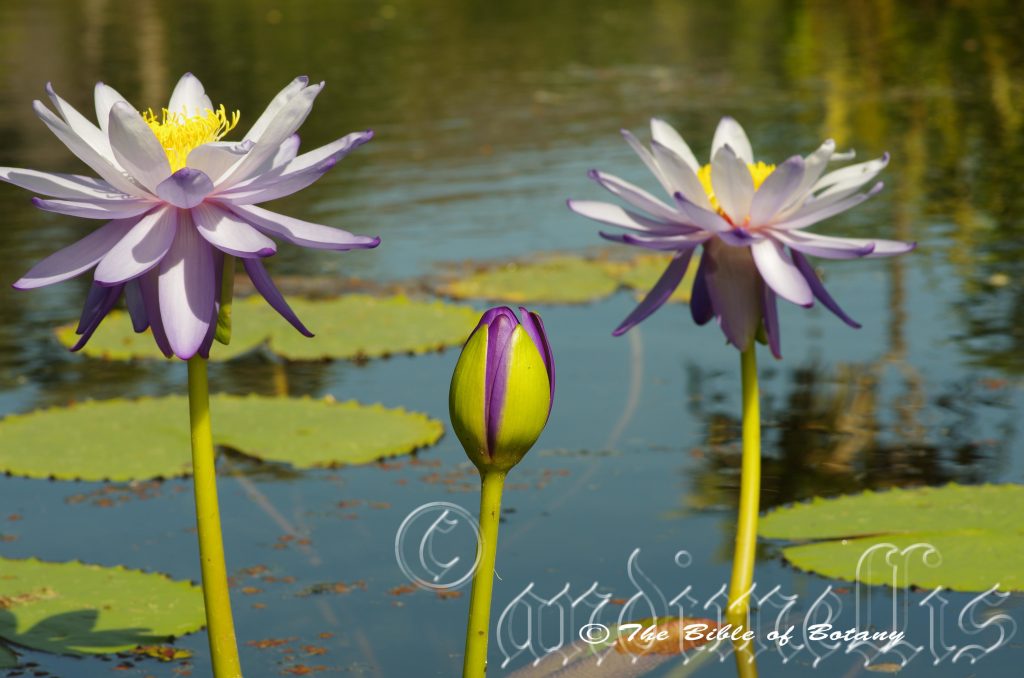
Townsville Qld.
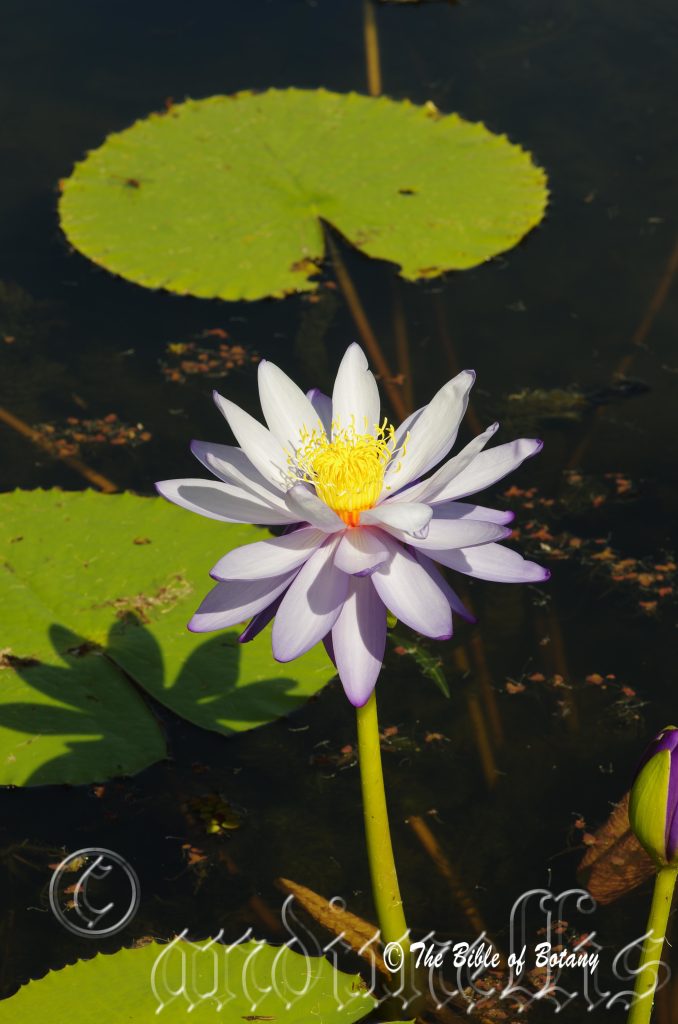
Townsville Qld.
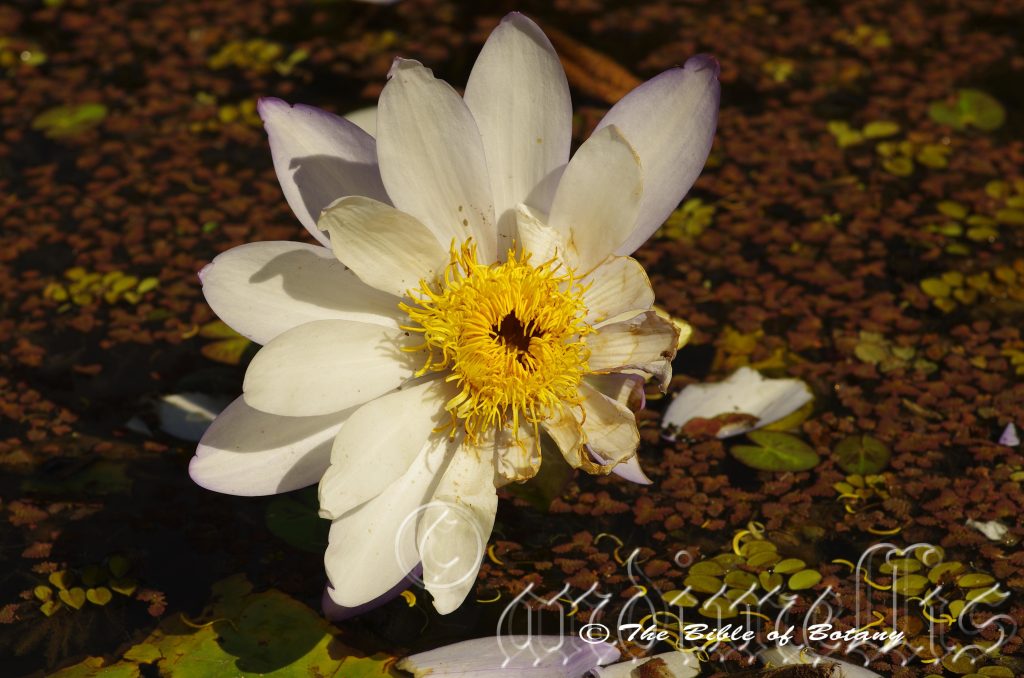
Townsville Qld.
Nymphaea gigantea
Classification:
Order: Nymphaeales
Family: Nymphaeaceae
Genus: From Nymphaion, which is Greek/Latin for one of many beautiful goddess’s of the trees, woods, mountains, rivers, seas or meadows. It refers to a flowers, which displays exquisite beauty.
Specie: From Giganteus, which is Latin for enormous or very large. It refers to plant, structures or organs usually the flowers, which are exceptionally large compared to other species in the genus.
Sub species:
Common Name: Giant Water Lily.
In the Gumbaynggirr Aboriginal language it is known as Gundarang.
Distribution:
Nymphaea gigantea is a widespread species which is found east from the Kimberley Range in north western, Western Australia to near Grafton in far north eastern New South Wales.
https://avh.ala.org.au/occurrences/search?taxa=Nymphaea+gigantea#tab_mapView
Habitat Aspect Climate:
Nymphaea gigantea prefers light dappled shade to full sun. It grows along slow flowing creeks, billabongs, swamps or backwaters along streams and rivers. It is found where there is a break in the canopy or in open spaces. The altitude ranges from 5 meter ASL to 950 meters ASL.
The temperatures range from 2 degrees in August to 40 degrees in January.
The rainfall ranges from lows of 800mm to an average of 3200mm.
Soil Requirements:
Nymphaea gigantea prefers better quality fine silts which usually contain copious quantities of organic matter. The soils are usually derived from decomposed sandstones, brown basalts, black basalts granites, metamorphic rocks or alluvial flats. The soils pH. ranges from 4.5pH to 6.5pH. It tolerates waterlogged soils and is usually found in water to 1.5 meters in depth. Non saline soils to slightly saline soils are tolerated.
Height & Spread:
Wild Plants: 1m to 4m by 0.5m to 1m.
Characteristics:
Nymphaea gigantea’s rhizomes are long, slender and white. The small tubers are located just below the surface of the mud or silt.
Nymphaea gigantea’s simple, circular leaves are strongly cordate having a long slit from the margin to the centrally positioned petiole. The floating leaves measure 300mm to 800mm in length by 200mm to 600mm in width while those leaves on land measure 100mm to 120mm in diameter. The petioles vary greatly in length depending on the depth of the water and measure 50mm to 6 meters in length. The concolourous laminas are deep grass-green, dull to semi glossy and glabrous. The margins have widely and irregularly spaced teeth. The teeth measure 0.5 mm to 5mm in length and have an acute apex.
The inflorescences of Nymphaea gigantea are produced singularly on a long pedicel which measures 100mm to 6 meters. The flowers are held 100mm to 500mm above the surface of the water. The 4 imbricate, dimorphic cupuliform sepals are deep green. The inner 2 are narrow elliptical with hyaline margins while the outer 2 are broad elliptical. The sepals close immediately if the water level rises above the length of the pedicel. The sepals measure 80mm to 110mm in length by 20mm to 26mm in width for the narrow pair and 40mm to 55mm for the broad elliptical pair. The 26 to 32 oblanceolate to spathulate petals are lilac to blue petals fade over the course of time to almost white. The obtuse apexes curve upwards to form a dish. They measure 75mm to 100mm in length by 20mm to 30mm in width.
The 380 to 430 white to pale yellow anthers measure 20mm to 30mm in length while the yellow linear, basifixed anthers measure 8mm to 11mm in length. The single style measures 10mm to 18mm in length.
The flowers appear from October to March in the south but throughout the year in warmer climates to the north.
Nymphaea gigantea’s fruits have 12 to 18 carpels and measure 40mm to 50mm in diameter. The ovoidal nuts measure 4mm to 5mm in length by 2.5mm to 3mm in width. The red nuts have several longitudinal wattles interspersed with rows of white hirsute hairs.
Confusing Species:
Nymphaea gigantea’s is a native with filaments being none petaloid.
Nymphaea capensis is a none native, with the filaments being petaloid at the base.
Wildlife:
Nymphaea gigantea rely on native bees to fertilize the flowers. There is also a small beetle that is often seen on the flowers.
Cultivation:
Nymphaea gigantea makes an excellent water plant for large ponds and dams in sunny situations. It prefers deeper water to 2 meters with a muddy substrata.
Propagation:
Nymphaea gigantea seeds can be sown directly into a seed raising mix. Cover the seeds with 5mm to 10mm of fine weed free mulch and keep moist by placing the trays in a saucer of water. Place the tray in a warm sunny position. When the seedlings are 30mm to 50mm tall, prick them out and plant them into 50mm native tubes using a good organic mix. Place the trays in water so that the tops of the tubes are covered with at least 100mm of water.
Once the seedlings reach 100mm to 150mm in height they can be transplanted into 200mm pots with good quality loam or planted into their permanent position.
Further Comments from Readers:
Hi reader, it seems you use The Bible of Botany a lot. That’s great as we have great pleasure in bringing it to you! It’s a little awkward for us to ask, but our first aim is to purchase land approximately 1,600 hectares to link several parcels of N.P. into one at The Pinnacles NSW Australia, but we need your help. We’re not salespeople. We’re amateur botanists who have dedicated over 30 years to saving the environment in a practical way. We depend on donations to reach our goal. If you donate just $5, the price of your coffee this Sunday, We can help to keep the planet alive in a real way and continue to bring you regular updates and features on Australian plants all in one Botanical Bible. Any support is greatly appreciated. Thank you.
In the spirit of reconciliation we acknowledge the Bundjalung, Gumbaynggirr and Yaegl and all aboriginal nations throughout Australia and their connections to land, sea and community. We pay our respect to their Elders past, present and future for the pleasures we have gained.
Nymphaea violacea
Classification:
Order: Nymphaeales
Family: Nymphaeaceae
Genus: From Nymphaion, which is Greek/Latin for one of many beautiful goddess’s of the trees, woods, mountains, rivers, seas or meadows. It refers to a flowers, which displays exquisite beauty.
Specie: From Viola, which is Latin for violet. It refers to the colour of flowers, which are deep purple to violet.
Sub species:
Common Name: Violet Water Lily or Water Lily.
In the Gumbaynggirr Aboriginal language it is known as Gundarang, while the roots were known as Dugay.
Distribution:
Nymphaea violacea is a widespread species which is found east from south of and along the Fitzroy River in north western, Western Australia to Curtiss Island east of Gladstone in central coastal Queensland.
https://avh.ala.org.au/occurrences/search?taxa=Nymphaea+violacea#tab_mapView
Habitat Aspect Climate:
Nymphaea violacea prefers light dappled shade to full sun. It grows along slow flowing creeks billabongs and swamps alluvial plains in most wet open areas. It is found growing in the open. The altitude ranges from 5 meter ASL to 400 meters ASL.
The temperatures range from 6 degrees in August to 40 degrees in January.
The rainfall ranges from lows of 800mm to an average of 3200mm.
Soil Requirements:
Nymphaea violacea prefers better quality sandy loams to medium clays with copious quantities of organic matter. The soils are usually derived from decomposed sandstones, brown basalts, black basalts granites, metamorphic rocks or alluvial flats. The soils pH. ranges from 5pH to 6.5pH. It tolerates waterlogged soils and usually grows in water to 1.5 meters in depth. Non saline soils to moderately saline soils are tolerated.
Height & Spread:
Wild Plants: 1m to 4m by 0.5m to 1m.
Characteristics:
Nymphaea violacea’s rhizomes are long, slender and white. The small tubers are located just below the surface of the mud or silt.
Nymphaea violacea’s simple, circular leaves are strongly cordate having a long slit from the margin to the centrally positioned petiole. The broadly oval floating leaves measure 300mm to 400mm in length by measure 200mm to 300mm in diameter while those leaves on land measure 100mm to 120mm in diameter. The petioles vary greatly in length depending on the depth of the water and measure 50mm to 3 meters in length. The discolourous laminas are deep grass-green, dull to semi glossy and glabrous on the upper lamina while the lower lamina is paler with a purple tinge or with blotched purple markings. The margins are entire, flat or slightly undulating or wavy.
The inflorescence of Nymphaea violacea are produced singularly on a long pedicel which measures 250mm to 3250mm. The flowers are held 250mm to 600mm above the surface of the water. The 4 deep reddish-purple, imbricate, broadly oblanceolate sepals are cupuliform. They close immediately if the water level rises above the length of the pedicel. The sepals measure 90mm to 115mm in length by 50mm to 70mm in width. The 45 blue, mauve or pink oblanceolate to oblong petals measure 90mm to 110mm in length by 35mm to 45mm.
The 290 to 320 yellow cylindrical filaments measure 20mm to 25mm in length while the linear, basifixed, slightly recurved anthers measure 10mm to 13mm. The flowers appear from February to August.
Nymphaea violacea’s fruits have 9 to 23 carpels and measure 40mm to 50mm in diameter. The ovoidal to ellipsoidal nuts measure 1mm to 2mm in length by 0.5mm to 1mm in width. The red nuts glabrous or are very sparsely covered in white hirsute hairs.
Wildlife:
Nymphaea violacea rely on native bees to fertilize the flowers. There is also a small beetle that is often seen on the flowers.
Cultivation:
Nymphaea violacea makes an excellent water plant for large ponds and dams in sunny situations.
They must not be mistaken for Nymphaea capensis which is an exotic from South Africa. The leaves on the feral plants have small teeth on the leaf margins and the lower lamina is green. The flower petals are narrower than in Nymphaea violacea.
Propagation:
Nymphaea violacea seeds can be sown directly into a seed raising mix. Cover the seeds with 5mm to 10mm of fine weed free mulch and keep moist by placing the trays in a saucer of water. Place the tray in a warm sunny position. When the seedlings are 30mm to 50mm tall, prick them out and plant them into 50mm native tubes using a good organic mix. Place the trays in water so that the tops of the tubes are covered with at least 100mm of water.
Once the seedlings reach 100mm to 150mm in height they can be transplanted into 200mm pots with good quality loam or planted into their permanent position.
Further Comments from Readers:
Hi reader, it seems you use The Bible of Botany a lot. That’s great as we have great pleasure in bringing it to you! It’s a little awkward for us to ask, but our first aim is to purchase land approximately 1,600 hectares to link several parcels of N.P. into one at The Pinnacles NSW Australia, but we need your help. We’re not salespeople. We’re amateur botanists who have dedicated over 30 years to saving the environment in a practical way. We depend on donations to reach our goal. If you donate just $5, the price of your coffee this Sunday, We can help to keep the planet alive in a real way and continue to bring you regular updates and features on Australian plants all in one Botanical Bible. Any support is greatly appreciated. Thank you.
In the spirit of reconciliation we acknowledge the Bundjalung, Gumbaynggirr and Yaegl and all aboriginal nations throughout Australia and their connections to land, sea and community. We pay our respect to their Elders past, present and future for the pleasures we have gained.
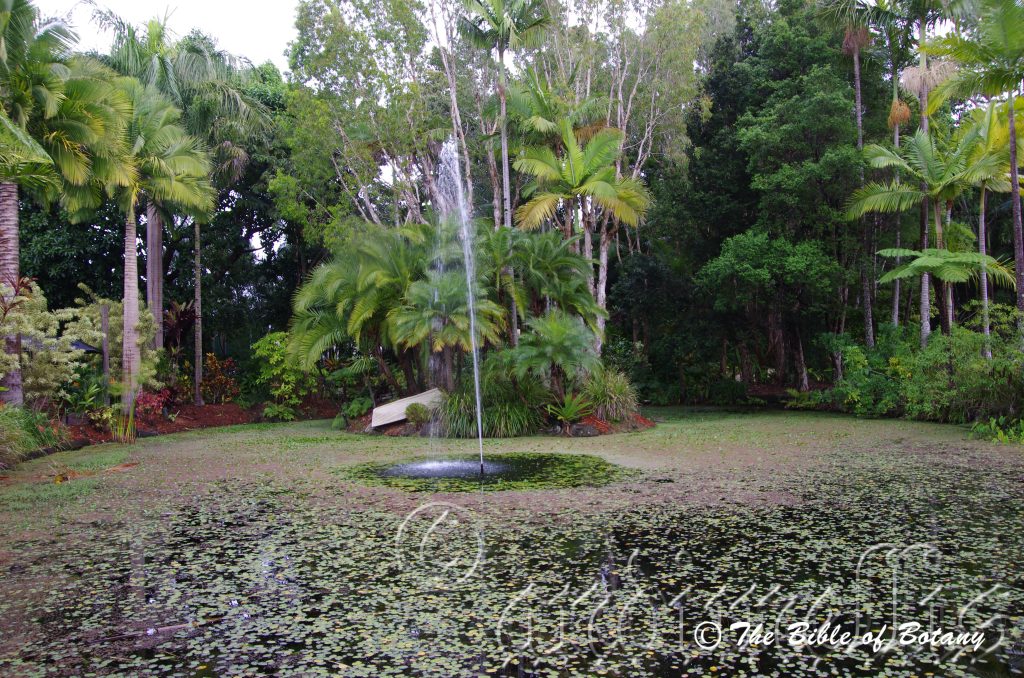
Ginger Factory Nambour Qld.
Nymphoides geminata
Classification:
Unranked: Eudicots
Unranked: Asterids
Order: Asterales
Family: Menyanthaceae
Genus: From Nymphaion, which is Ancient Greek or Latin for one of many beautiful goddess’s of the trees, woods, mountains, rivers, seas or meadows and Eîdos/Oides, which is Ancient Greek for alike or similar to.
Specie: From Gemini/Gemellus/Gemellī, which are Latin for twins or to be arranged in pairs. It refers to flowers, or fruits, which develop in pairs or rarely in threes.
Sub species:
Common Name: Yellow Marshwort.
Distribution:
Nymphoides geminata is widespread specie which is found from Darwin to northern Kakadu National Park while it is found on Kangaroo Island in South Australia.
In the east it is found south from Normanton and Cooktown on Cape York Peninsula to near Stafford in east Gippsland. Nymphaea geminate is probably a lot more widespread than it appears on maps or what has been recorded map indicates.
https://avh.ala.org.au/occurrences/search?taxa=Nymphoides+geminata#tab_mapView
Habitat Aspect Climate:
Nymphoides geminata prefers light dappled shade to full sun. It grows along slow flowing creeks, billabongs and swamps, alluvial plains in most wet open areas. It is often associated with ephemeral pools in forests and woodlands. The altitude ranges from 2 meter ASL to 828 meters ASL.
The temperatures range from minus 2 degrees in August to 40 degrees in January.
The rainfall ranges from lows of 600mm to an average of 3200mm.
Soil Requirements:
Nymphoides geminata prefers better quality sandy loams to medium clays. The soils are usually derived from decomposed sandstones, granites, metamorphic rocks, alluvial flats or river meanders. The soils pH. ranges from 5pH to 6.5pH. It tolerates waterlogged soils growing in warm shallow water from 400mm to 1200mm in depth. Non saline soils to moderately saline soils are tolerated.
Height & Spread:
Wild Plants: 0.2m to 1.2m by 0.5m to 1m.
Characteristics:
Nymphoides geminata’s slender tufted perennials, or annuals in the case of those plants growing in seasonal ephemeral pools. Stolons only develop on plants that grow in deeper permanent water in warmer locations. The stem extends from the muddy substrata to below the water’s surface where the tufted stolons and nodes appear on which the leaves and flowers grow.
Nymphoides geminata’s simple, orbicular leaves are strongly cordate having a long slit from the margin to the centrally positioned petiole. The broadly ovate to orbicular floating leaves measure 40mm to 155mm in diameter while those leaves on plants growing in mud measure 35mm to 50mm in diameter. The petioles vary greatly in length depending on the depth of the water and measure 20mm to 400mm in length. The discolourous laminas are deep grass-green, to sea-green with or without purple markings, dull to semi glossy and glabrous on the upper lamina while the lower lamina is the same or paler. The margins are entire or shallowly crenate, flat or slightly wavy.
The inflorescence of Nymphoides geminata are produced singularly to 6 flowered on long pedicels which measure 30mm to 120mm. The flowers float on the surface of the water. The calyx tubes measure 1.5mm to 3mm in length while the 5 elliptical lobes measure 2mm to 6mm in length. The 5 linear corolla lobes measure 5mm to 15mm in length by 1.2mm to 3.5mm width while the wings measure 1.5mm to 3mm in width. The wing’s margins are deeply lacerated
The 5 yellow stamens measure 1mm to 3mm in length overall. The yellow, oblong, slightly recurved anthers measure 1mm. The single styles measure 10mm in length. The sexual organs are homostylous throughout the specie meaning that they are all the one size. The flowers appear throughout the year in warmer climates.
Nymphoides geminata’s fruit is a small globose nut. The cream tuberculate nuts turn black on ripening and measure 1mm in length.
Confusing Specie:
Nymphoides geminata’s tuberculate seeds are globose or slightly compressed, straw-coloured at first then turn black when mature.
Nymphoides crenate’s leaf margins are crenate. The corolla lobes with a median fringed wing inside. The flowers are yellow and are separate from leaf base.
Nymphoides indica’s flowers are white and born immediately behind the leaf. The leaves are shortly petiolate.
Nymphoides montana’s leaves’ margins are usually entire or rarely slightly crenate. The corolla lobes without an inner wing. The seeds are strongly laterally compressed and ellipsoid, glossy, glabrous and black when ripe.
Wildlife:
Nymphoides geminata rely on native bees to fertilize the flowers.
Cultivation:
Nymphoides geminata makes an excellent water plant for small fish and frog ponds and dams in sunny situations. Because they can grow in very shallow depressions this makes them ideal for the home garden pond. It is generally self-seeding and seed collection is easy from the pond. The seeds germinate very easily.
Propagation:
Nymphoides geminata seeds can be sown directly into a seed raising mix. Cover the seeds with 1mm of fine weed free mulch and keep moist by placing the trays in a saucer of water. Place the tray in a warm sunny position. When the seedlings are 30mm to 50mm tall, prick them out and plant them into 125mm squat pots using a good organic mix. Place the trays in water so that the tops of the tubes are covered with at least 100mm of water.
Once the seedlings reach 100mm to 150mm in height they can be transplanted into their permanent position. Alternatively the squat pots can be placed directly into the pond. I like to use a layer of stones over the top of the pots to help prevent the organic matter floating off and clouding the water or worse still nitrifying the water where it continually turns green.
Further Comments from Readers:
Hi reader, it seems you use The Bible of Botany a lot. That’s great as we have great pleasure in bringing it to you! It’s a little awkward for us to ask, but our first aim is to purchase land approximately 1,600 hectares to link several parcels of N.P. into one at The Pinnacles NSW Australia, but we need your help. We’re not salespeople. We’re amateur botanists who have dedicated over 30 years to saving the environment in a practical way. We depend on donations to reach our goal. If you donate just $5, the price of your coffee this Sunday, We can help to keep the planet alive in a real way and continue to bring you regular updates and features on Australian plants all in one Botanical Bible. Any support is greatly appreciated. Thank you.
In the spirit of reconciliation we acknowledge the Bundjalung, Gumbaynggirr and Yaegl and all aboriginal nations throughout Australia and their connections to land, sea and community. We pay our respect to their Elders past, present and future for the pleasures we have gained.
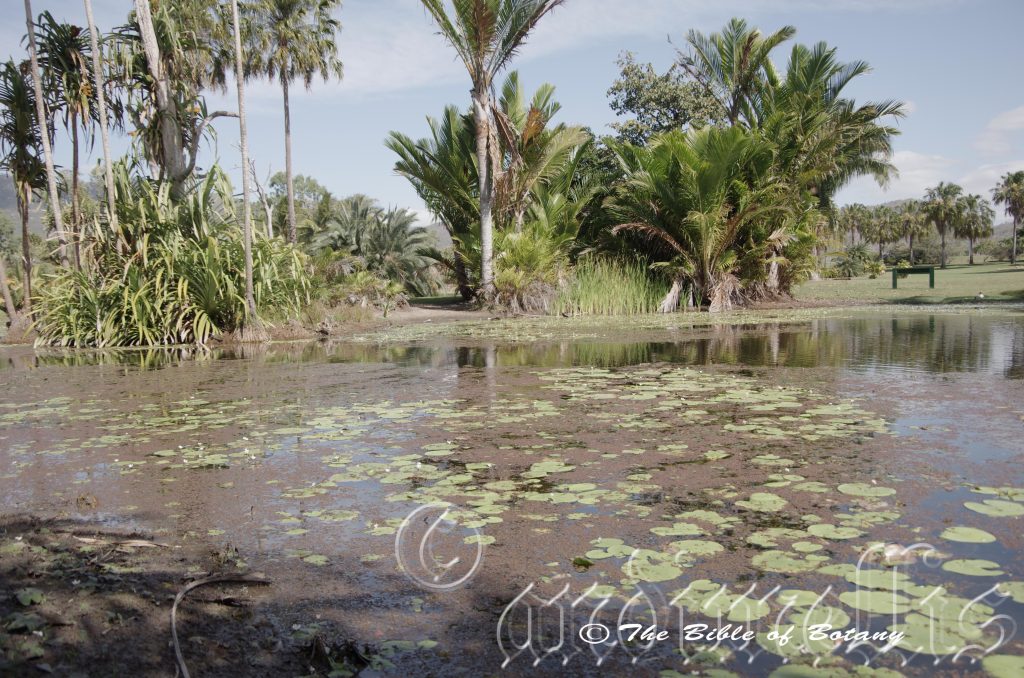
Townsville Qld.
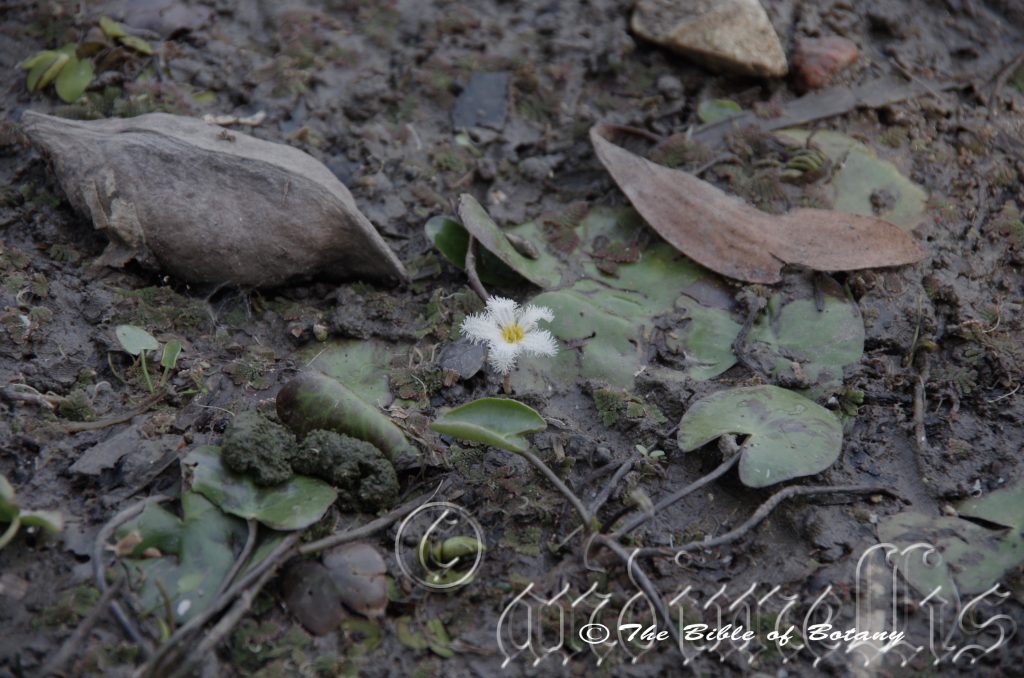
Townsville Qld.
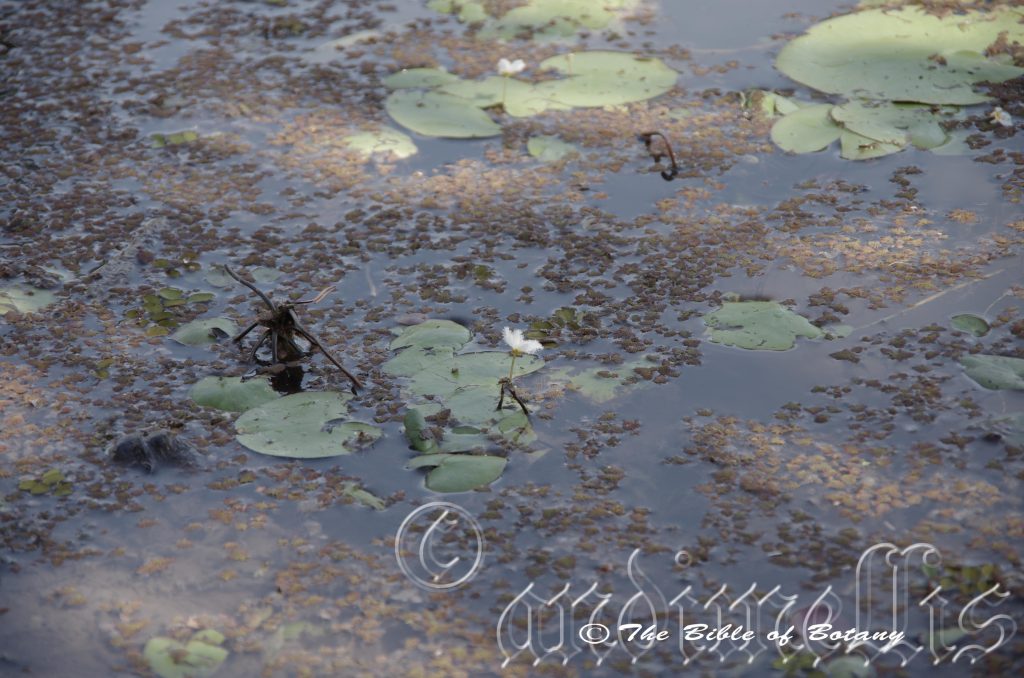
Townsville Qld.
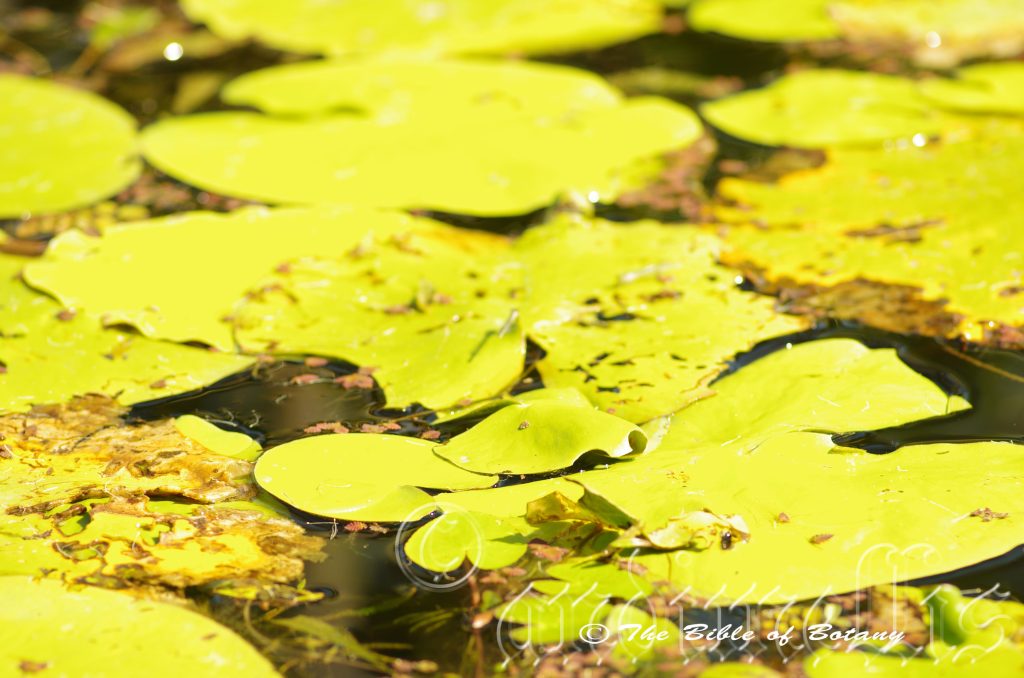
Townsville Qld.
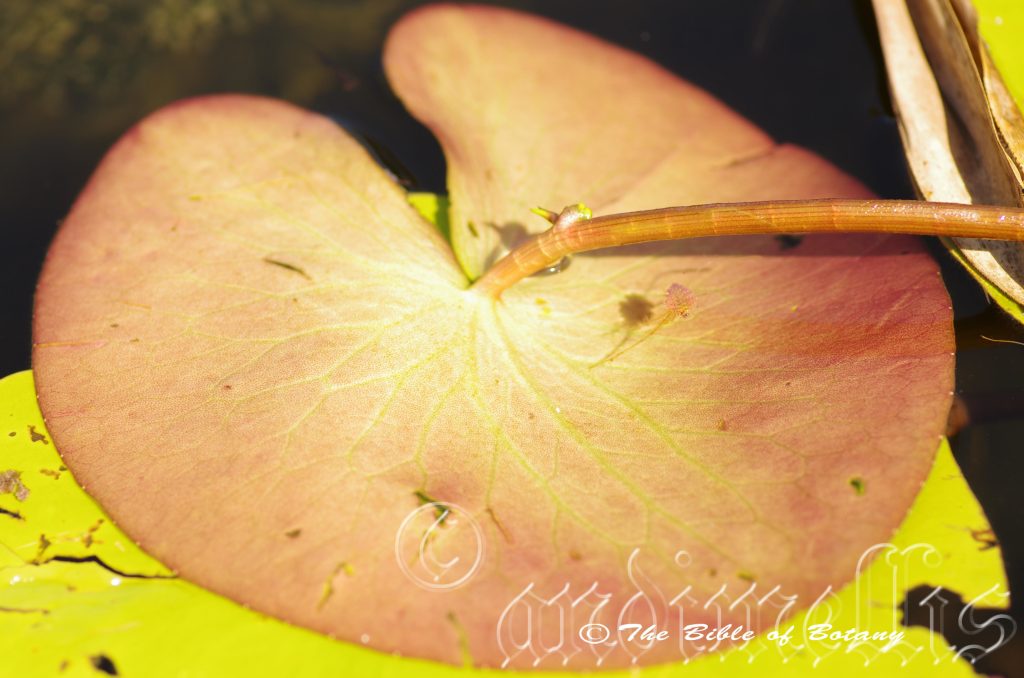
Townsville Qld.
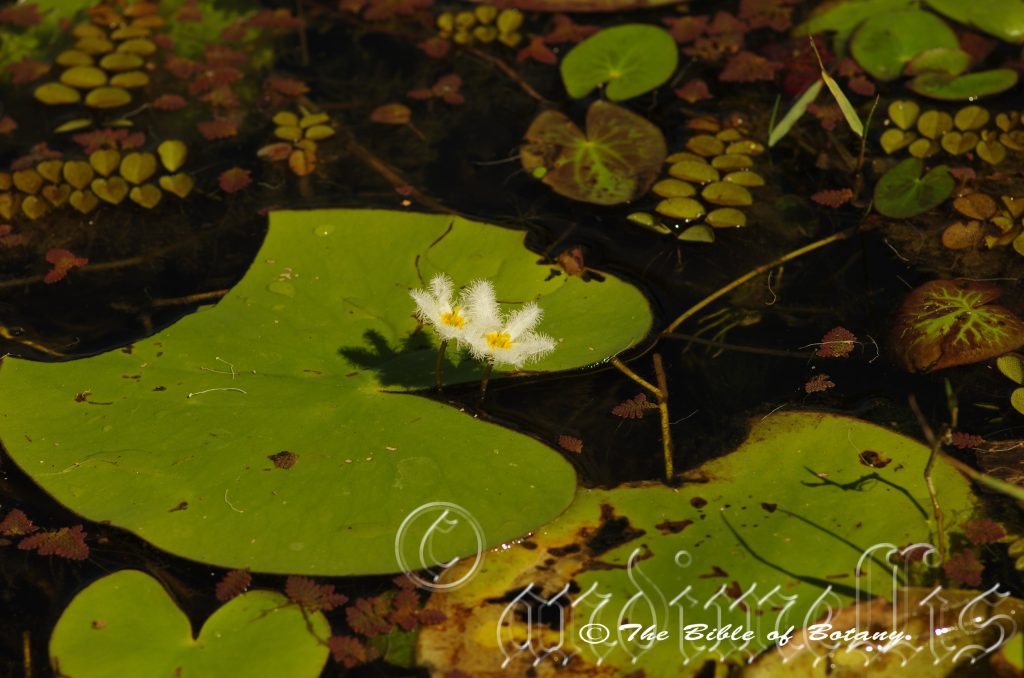
Townsville Qld.
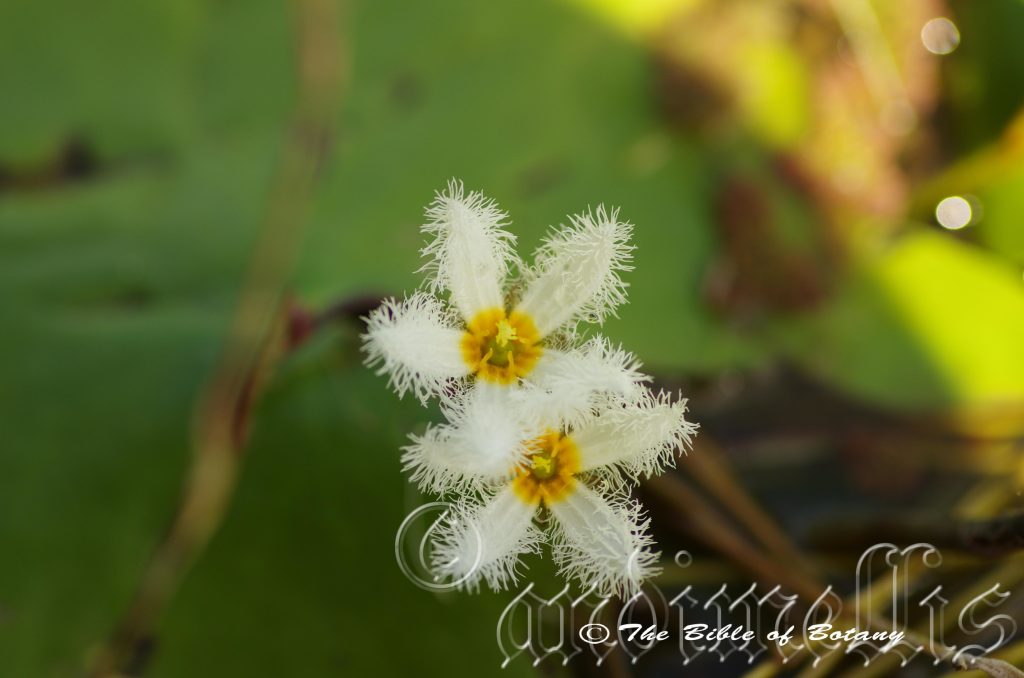
Townsville Qld.
Nymphoides indica
Classification:
Unranked: Eudicots
Unranked: Asterids
Order: Asterales
Family: Menyanthaceae
Genus: From Nymphaion, which is Ancient Greek or Latin for one of many beautiful goddess’s of the trees, woods, mountains, rivers, seas or meadows and Eîdos/Oides, which is Ancient Greek for alike or similar to.
Specie: From India, which is Latinized for India. It refers to the type specimen, which was first discovered from India or being endemic to India.
Sub species:
Common Name: Snowflake.
Distribution:
Nymphoides indica is widespread north of a line from Broome and the Kimberley Range in Western Australia to the Fitzroy River and Rockhampton on the east Coast. It is found south from the Fitzroy River on the eastern side of the Great Dividing Range to Nowra in central coastal New South Wales. Nymphaea indica is probably a lot more widespread than the map indicates.
https://avh.ala.org.au/occurrences/search?taxa=Nymphoides+indica#tab_mapView
Habitat Aspect Climate:
Nymphoides indica prefers light dappled shade to full sun. It grows along slow flowing creeks, backwaters, billabongs, swamps, wallums or alluvial plains and bogs in most wet open areas. It is found where there is a break in the canopy. The altitude ranges from 5 meter ASL to 800 meters ASL.
The temperatures range from minus 2 degrees in August to 40 degrees in January.
The rainfall ranges from lows of 800mm to an average of 3200mm.
Soil Requirements:
Nymphoides indica prefers better quality sandy loams to medium clays or light to heavy silts with copious quantities of organic matter present. The soils are usually derived from decomposed sandstones, brown, black basalts granites, metamorphic rocks or alluvial flats. The soils pH. ranges from 4.5pH to 6.5pH. It tolerates waterlogged soils and can withstand growing in shallow water to a meter in depth all year. Non saline soils to moderately saline soils are tolerated.
Height & Spread:
Wild Plants: 0.2m to 1.2m by 0.5m to 1m.
Characteristics:
Nymphoides indica’s slender, robust tufted perennials. The stem extends from the muddy substrata to the water’s surface where the stolons and nodes appear on which the leaves and flowers grow.
Nymphoides indica’s simple, circular leaves are strongly cordate having a long “V” slit from the margin to the centrally positioned petiole. The floating leaves measure 200mm to 300mm in diameter. The petioles vary greatly in length measure 50mm to 600mm. The concolourous or discolourous laminas are deep grass-green, to sea-green with or without purple markings, dull to semi glossy and glabrous on the upper lamina while the lower lamina is the same or paler. The margins are entire, flat or slightly wavy.
The inflorescence of Nymphoides indica are produced singularly to 6 flowered on long pedicels which measure 30mm to 120mm. The white flowers float on the surface of the water. The calyx tubes measure 1.5mm to 3mm in length while the 5 elliptical lobes measure 2mm to 6mm in length. The 5 linear corolla lobes measure 5mm to 15mm in length by 1.2mm to 3.5mm width while the wings measure 1.5mm to 3mm in width. The wing’s margins are deeply lacerated.
The 5 to 9 yellow or white stamens measure 1mm to 3mm in length overall. The yellow, oblong, slightly recurved anthers measure 1mm. The sexual organs are homostylous throughout the specie meaning that they are all the one size. The flowers appear throughout the year in warmer climates.
Nymphoides indica’s fruit is a small globose nut. The cream glabrous nuts turn black on ripening and measure 1mm in length.
Confusing Species:
Nymphoides crenate flowers are yellow and are separate from leaf base. The leaf margins are crenate. The corolla lobes with a median fringed wing inside.
Nymphoides geminata has tuberculate seeds, which are globose or slightly compressed, straw-coloured at first then turn black when mature.
Nymphoides indica flowers are white and born immediately behind the leaf. The leaf margins are.
Nymphoides montana has leaf margins, which are usually entire or rarely slightly crenate. The corolla lobes are without an inner wing. The seeds are strongly laterally compressed and ellipsoid, glossy, glabrous and black when ripe.
Wildlife:
Nymphoides indica rely on native bees to fertilize the flowers.
Cultivation:
Nymphoides indica makes a good water plant for small fish and frog ponds and dams in sunny situations. Because they can grow in very shallow depressions this makes them ideal for the home garden pond. It is generally self-seeding, however seed collection is easy from the pond. The seeds germinate very easily.
Propagation:
Nymphoides indica seeds can be sown directly into a seed raising mix. Cover the seeds with 1mm of fine weed free mulch and keep moist by placing the trays in a saucer of water. Place the tray in a warm sunny position. When the seedlings are 30mm to 50mm tall, prick them out and plant them into 125mm squat pots using a good organic mix. Place the trays in water so that the tops of the tubes are covered with at least 100mm of water.
Once the seedlings reach 100mm to 150mm in height they can be transplanted into their permanent position. Alternatively the squat pots can be placed directly into the pond. I like to use a layer of stones over the top of the pots to help prevent the organic matter floating off and clouding the water or worse still nitrifying the water where it continually turns green.
Further Comments from Readers:
Hi reader, it seems you use The Bible of Botany a lot. That’s great as we have great pleasure in bringing it to you! It’s a little awkward for us to ask, but our first aim is to purchase land approximately 1,600 hectares to link several parcels of N.P. into one at The Pinnacles NSW Australia, but we need your help. We’re not salespeople. We’re amateur botanists who have dedicated over 30 years to saving the environment in a practical way. We depend on donations to reach our goal. If you donate just $5, the price of your coffee this Sunday, We can help to keep the planet alive in a real way and continue to bring you regular updates and features on Australian plants all in one Botanical Bible. Any support is greatly appreciated. Thank you.
In the spirit of reconciliation we acknowledge the Bundjalung, Gumbaynggirr and Yaegl and all aboriginal nations throughout Australia and their connections to land, sea and community. We pay our respect to their Elders past, present and future for the pleasures we have gained.
Nyssanthes diffusa
Classification
Unranked: Tracheobionta
Division: Magnoliophyta
Class: Magnoliopsida
Subclass: Caryophyllideae
Order: Caryophyllales
Family: Amaranthaceae
Subfamily: Amaranthoideae
Genus: From Nysso, which is the Greek to pierce and ántha/ánthos, which are Ancient Greek for the male reproductive organ on a flower or the flower. It refers to flowers, which are surrounded by long sharp spines.
Specie: From Diffusa, which is Ancient Greek for to spread out thinly, as in a scattered manner or profusely. It refers to the plants, which spread out over large areas.
Sub species:
Common Name: Barb Wire Weed.
Distribution:
Nyssanthes diffusa is found south from Mount Devlin in north eastern Queensland to Shell Harbour in south eastern coastal New South Wales. It is mainly found on the Western Slopes, on and east of the Great Dividing Range to the coast.
https://avh.ala.org.au/occurrences/search?taxa=Nyssanthes+diffusa#tab_mapView
Habitat Aspect Climate:
Nyssanthes diffusa prefers light dappled shade to full sun. It grows in wet situations on rainforest margins in open gullies and drainage lines on wasteland, washouts and unstable washes, creek, stream, and river meanders. The altitude ranges from 10 meter ASL to 1150 meters ASL.
The temperatures range from minus 4 degrees in August to 40 degrees in January.
The rainfall ranges from lows of 800mm to an average of 3000mm.
Soil Requirements:
Nyssanthes diffusa prefers sandy loams, medium clays, and light silts to heavy silts. The soils are usually derived from decomposed brown basalts, black basalts, granites, metamorphic rocks, limestones, mudstone, conglomerates, sandstones, shale or alluvial flats and at times accumulated beach sands. The soils pH. ranges from 5.5pH to 7pH. It tolerates seasonal inundations for short periods. Non saline soils to moderately saline soils are tolerated.
Height & Spread:
Wild Plants: 0.05m to 0.1m by 0.3m to 0.5m.
Characteristics:
Nyssanthes diffusa is an erect to spreading annual or biennial herb. The angulated stems have 4 to 8 sides varying even on the same plant between the various nodes. The stems are grass-green turning deep brown to black as they age and glabrous to moderately covered in white tomentose hairs. The new growth is a pale grass-green and glabrous to moderately covered in white tomentose hairs.
Nyssanthes diffusa’s simple ovate, elliptic to obovate or oblanceolate leaves measure 15mm to 28mm in length by 4mm to 15mm in width. The glabrous petioles measure 1mm to 5mm in length. The oblique bases are tapering while the apexes are obtuse with a sharp pungent spine. The asymmetrical, discolourous laminas are grass-green to sea green, dull to semi glossy, very finely and densely lepidote and glabrous to moderately covered in white tomentose hairs while the lower lamina is paler. The laminas are flat or recurve slightly upwards from the mid vein to the margins while margins are entire. The mid vein and 4 or 6 or rarely 8 arcuate lateral veins are strongly prominent on the lower lamina and are faintly visible on the upper lamina.
The inflorescences of Nyssanthes diffusaare born from the terminals or special side shoots. The bracts are spinescens with ovate or ellipsoidal bases. The bases are grass-green and glabrous to sparsely cover in white tomentose hairs. The spines are pink to carmine above the base and turn yellow-ochre at the apexes. The terminal spine measures 3mm to 7.5mm in length while the 2 lateral spines measure 5.5mm to 8.5mm in length. The 3 perianth segments are lanceolate with the outermost segment measuring 7mm to 8.5mm in length. The intermediate segment measures 3mm to 3.5mm in length while the 2 inner segments measure 2mm to 3mm in length. The flowers appear throughout the year with a peak from December to February.
There are 2 stamens and 2 staminodes.
Nyssanthes diffusa’s fruits are globose to lanceolate. The hard green drupes turn ochre when ripe. They measure 2mm to 2.2mm in length by 0.8mm to 1mm in diameter.
Wildlife:
Nyssanthes diffusa’s wildlife is unknown to the author the leaves are always chewed to some extent with any outbreaks coming under control very quickly.
Cultivation:
Nyssanthes diffusa is considered a weed and looks rather unattractive. It is easy to control making it a none problemsome weed.
Further Comments from Readers:
Hi reader, it seems you use The Bible of Botany a lot. That’s great as we have great pleasure in bringing it to you! It’s a little awkward for us to ask, but our first aim is to purchase land approximately 1,600 hectares to link several parcels of N.P. into one at The Pinnacles NSW Australia, but we need your help. We’re not salespeople. We’re amateur botanists who have dedicated over 30 years to saving the environment in a practical way. We depend on donations to reach our goal. If you donate just $5, the price of your coffee this Sunday, We can help to keep the planet alive in a real way and continue to bring you regular updates and features on Australian plants all in one Botanical Bible. Any support is greatly appreciated. Thank you.
In the spirit of reconciliation we acknowledge the Bundjalung, Gumbaynggirr and Yaegl and all aboriginal nations throughout Australia and their connections to land, sea and community. We pay our respect to their Elders past, present and future for the pleasures we have gained.